Also in this issue...

Three-State Digging


Lady Bottles ACL Corner #4 New Inks Book



The Carmichael & Son Co.
Glass-Bottom Boats at Silver Springs and so much more!


Also in this issue...

Three-State Digging


Lady Bottles ACL Corner #4 New Inks Book



The Carmichael & Son Co.
Glass-Bottom Boats at Silver Springs and so much more!


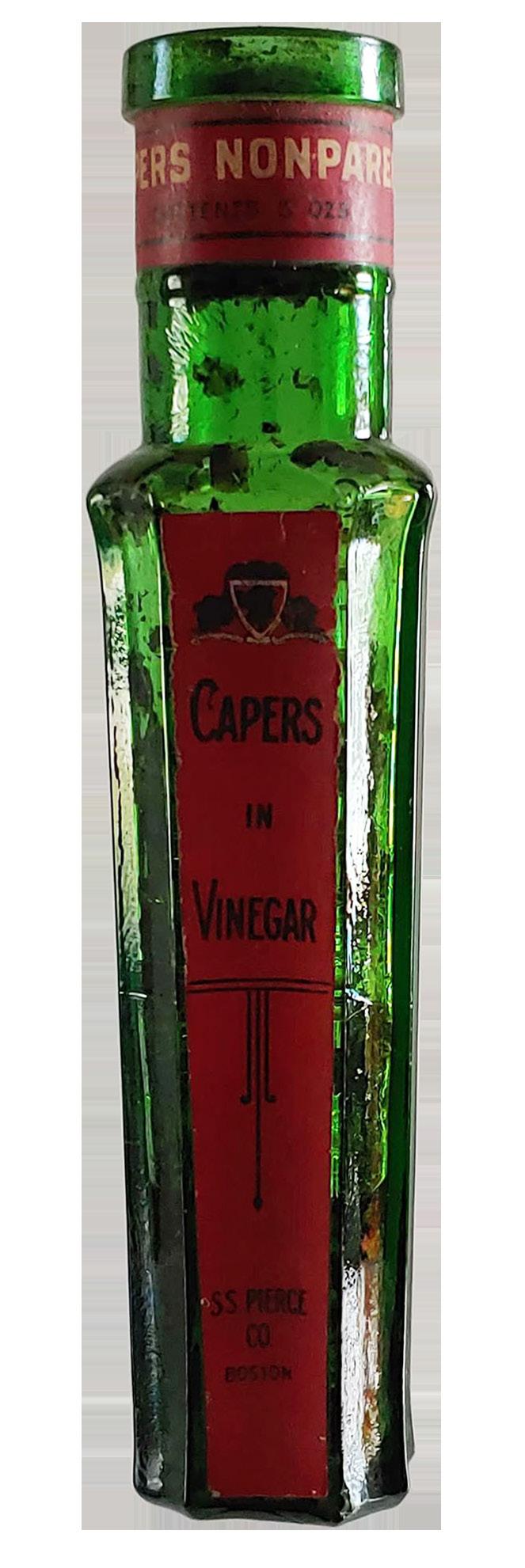
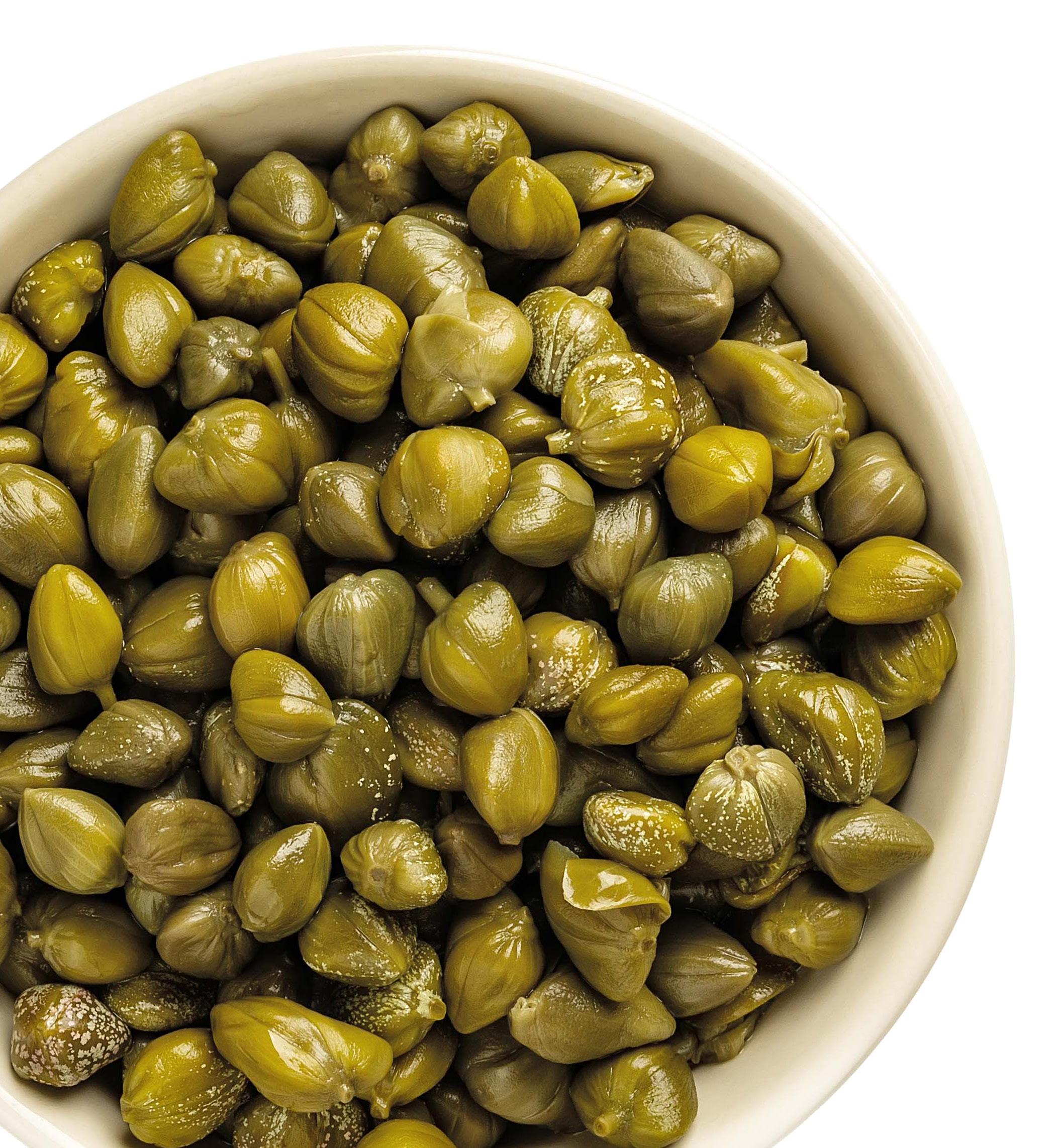

So you don’t miss an issue of Antique Bottle & Glass Collector, please check your labels for expiration information.

To Advertise, Subscribe or Renew a subscription, see pages 66 and 72 for details.
To Submit a Story, send a Letter to the Editor or have Comments and Concerns, contact:
Elizabeth Meyer
FOHBC Business Manager
P.O. Box 1825
Brookshire, Texas 77423
phone: 713.504.0628
email: fohbcmembers@gmail.com
Fair use notice: Some material in Antique Bottle & Glass Collector has been submitted for publication in this magazine and/or was originally published by the authors and is copyrighted. We, as a non-profit organization, offer it here as an educational tool to increase further understanding and discussion of bottle collecting and related history. We believe this constitutes “fair use” of the copyrighted material as provided for in Section 107 of the U.S. Copyright Law. If you wish to use this material for purposes of your own that go beyond “fair use,” you must obtain permission from the copyright owner(s).
Antique Bottle & Glass Collector © (ISSN 10505598) is published bi-monthly (6 issues per year) by the Federation of Historical Bottle Collectors, Inc. (a non-profit 501(c)(3) educational organization) at 101 Crawford Street, Studio 1A, Houston, Texas 77002; phone: 713.504.0628; Website: FOHBC.org, Non-profit periodicals postage paid at Raymore, Missouri 64083 and additional mailing office, Pub. #005062.
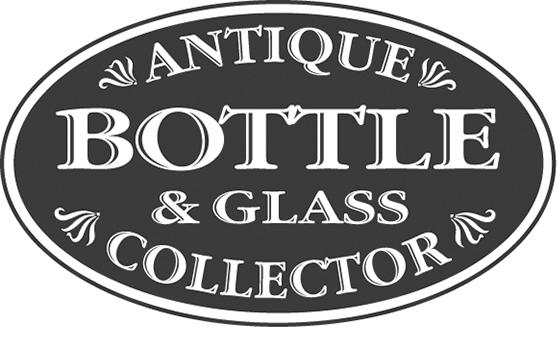
Postmaster: Send address changes to Elizabeth Meyer, FOHBC Business Manager, P.O. Box 1825, Brookshire, Texas 77423; 713.504.0628, email: fohbcmembers@ gmail.com
Annual subscription rate is: $40 for standard mail or $55 for First Class, $60 to Canada, $80 Other countries, $25 Digital Membership [in U.S. funds.] Life Membership: Level 1: $1,000, Level 2: $500. The Federation of Historical Bottle Collectors, Inc. (FOHBC) assumes no responsibility for products and services advertised in this publication. See page 72 for details.
Coming next issue or down the road:
Sperm Gun Oil Bottle made by the Arctic Oil Works of S.F.
• Pike’s Peak or Bust
• What Do You Collect?
• A Clinton Physician Dr. Carl Gruber
• Reed & Carnrick New York Pharmacal Association
• Boy, Have You Got Moxie!

• Dr. Guysott’s Extract of Yellow Dock and Sarsaparilla Update
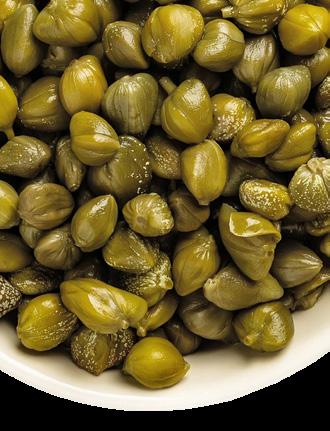
• Early Pittsburgh Glasshouses

• Soda City’s Only Two Earliest Colored Sodas: H. Deming & Co. and C. C. Habenicht
• Catawba Wine Bitters

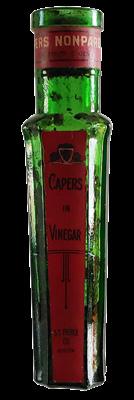
• History of the Baraboo Pottery Baraboo, Wisconsin
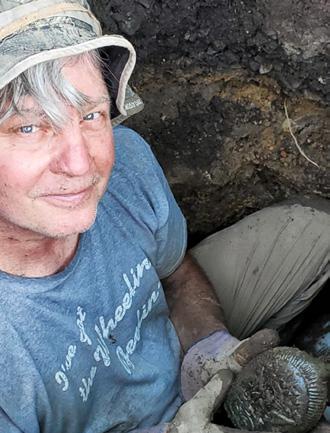

• On the Witness Protection Program
• Probst & Hilbs German Bitters Little Rock, Ark.
• William Stiegel’s American Flint Glass Manufactory
• Registering Bottles
• Jarring
• Bottle Tumbling with a “Twist”
Discoveries
The names Federation of Historical Bottle Collectors Inc. (FOHBC), and Antique Bottle & Glass Collector ©, are registered ® names of the Federation of Historical Bottle Collectors Inc., and no use of either other than as references, is permitted without expressed written consent from the Federation of Historical Bottle Collectors Inc. Certain material contained in this publication is copyrighted by, and remains the sole property of, the Federation of Historical Bottle Collectors Inc. while others remain property of the submitting authors. Detailed information concerning a particular article may be obtained from the Editor. Printed by Modern Litho, Jefferson City, Missouri 65101.
Midwest Region Director: Henry Hecker, W298 S10655 Phantom Woods Road, Mukwonago, Wisconsin 53149, phone: 262.844.5751, email: phantomhah@gmail.com
Southern Region Director: Tom Lines, 5305 Mountain Park Drive, Indian Springs, Alabama 35124, phone: 205.410.2191, email: Bluecrab1949@hotmail.com
Western Region Director: Eric McGuire, 1732 Inverness Drive, Petaluma, California 94954, phone: 707.481.9145, email: etmcguire@comcast.net
Public Relations Director: Richard Kramerich, P.O. Box 241, Pensacola, Florida 32591, phone: 850.435.5425, email: southernshards@gmail.com

The Federation of Historical Bottle Collectors is a non-profit organization for collectors of historical bottles, glass and related collectible items. Our primary goal is educational as it relates to the history and manufacture of historical bottles and related artifacts.


FOHBC Officers 2022–2024
President: Michael Seeliger, N8211 Smith Road, Brooklyn, Wisconsin 53521, phone: 608.575.2922, email: mwseeliger@gmail.com
First Vice-President: Position Open
Second Vice-President: Stephen R. Jackson, P.O. Box 3137, Suffolk, Virginia 23439, phone: 757.675.5642, email: sjackson@srjacksonlaw.com
Secretary: Alice Seeliger, N8211 Smith Road, Brooklyn, Wisconsin 53521, phone: 608.575.1128, email: aliceajscreative@gmail.com
Treasurer: Kathie Craig, 1037 Hazelwood Avenue, Campbell, California 95008, phone: 408.591.6511, email: kathiecraig@sbcglobal.net
Business Manager: Elizabeth Meyer, FOHBC, P.O. Box 1825, Brookshire, Texas 77423, phone: 713.504.0628, email: fohbcmembers@gmail.com
Director-at-Large: Ferdinand Meyer V, FMG Design, Inc., 101 Crawford Street, Studio 1A, Houston, Texas 77002 phone: 713.222.7979 x115, email: fmeyer@fmgdesign.com
Director-at-Large: John O’Neill, 1805 Ralston Avenue, Belmont, California 94002, phone: 650.619.8209, email: Joneill@risk-strategies.com
Director-at-Large: Richard Siri, PO Box 3818, Santa Rosa, California 95402, phone: 707.542.6438, email: rtsiri@sbcglobal.net
Northeast Region Director: Charles Martin Jr., 5 John Halls Cartway, Yarmouth Port, Massachusetts 01985, phone: 781.248.8620, email: cemartinjr@comcast.net
Conventions Director: Craig Cassetta, 12 Marlin Court, Chico, California 95973, phone: 530.680.5226, email: craig.cassetta@gmail.com
Historian: Brian Bingham, 4305 Arbor Cove Circle, Oceanside, California 92058, phone: 442.264.9945, email: brian.bingham@att.net
Membership Director: Elizabeth Meyer, FOHBC, P.O. Box 1825, Brookshire, Texas 77423, phone: 713.504.0628, email: fohbcmembers@gmail.com
Merchandising Director: Position Open
Alan DeMaison, 1605 Clipper Cove, Painesville, Ohio 44077, phone: 440.358.1223, email: a.demaison@sbcglobal.net
Ferdinand Meyer V, FMG Design, Inc., 101 Crawford Street, Studio 1A, Houston, Texas 77002, phone: 713.222.7979 x115, email: fmeyer@fmgdesign.com
Miguel Ruiz, FMG Design, Inc., 101 Crawford Street, Studio 1A, Houston, Texas 77002, phone: 713.222.7979, email: mruiz@fmgdesign.com
Richard Siri, PO Box 3818, Santa Rosa, California 95402, phone: 707.542.6438, email: rtsiri@sbcglobal.net

Magazine Editor: Ferdinand Meyer V, FMG Design, Inc., 101 Crawford Street, Studio 1A, Houston, Texas 77002, phone: 713.222.7979 x115, email: fmeyer@fmgdesign.com
Design and Layout: Ferdinand Meyer V
Proofreaders: Alice Seeliger and Bill Baab


We have assembled a great group of individuals to serve on our Board and have filled nearly every position (see the few remaining positions on the facing page). Working together, we will achieve our goals of making the Federation even more of a worldclass organization. Let’s welcome our newest members.

Steve Jackson joined the FOHBC Board as Second Vice President.
I have valued Steve’s assistance in chairing the Bylaws Revision committee. Steve collects Warner Bottles and we have known each other for a long time. He is a practicing attorney and has added a lot of legal-type info to our group.
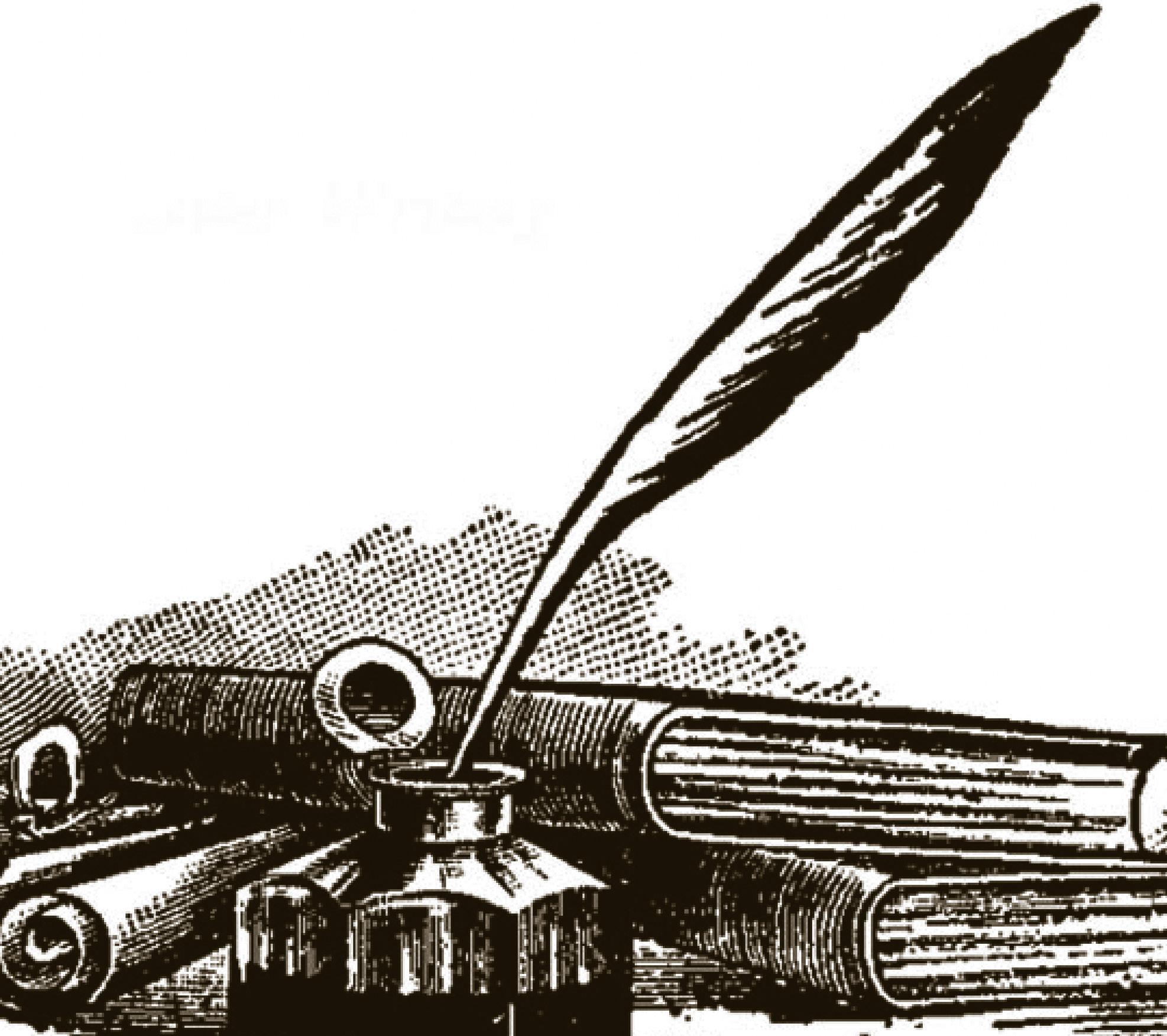
Kathie Craig, Treasurer, is from San Jose, California. She and her husband, Mike, also collect Warner bottles as well as inks, owl drug bottles, poisons, clay beers, cures, and Pitkin swirl flasks. Kathie and Mike own several businesses and she will be a great asset to FOHBC with her considerable knowledge of all aspects of business operation.
Craig Cassetta has moved from Historian to Conventions Director. He is already well into the job of helping to plan Houston 24 and is actively looking for venues for 2025 and 2026. Craig attended our Board of Directors meeting in Reno and quickly volunteered to help the FOHBC in any way possible. This will be a great fit for Craig and the Federation.
Brian Bingham will fill the Historian position. Brian was on the cover of the November-December 2022 issue of this magazine. Brian’s drug store exhibit at Reno won the prized Most Educational ribbon. He has a keen interest in historical research, and is quite knowledgeable in using the internet for research. This expertise will really help the Federation.
Tom Lines has stepped into the Southern Director position. Tom is a long-time collector and Life Member of the Federation. I met Tom at the Chattanooga–North Georgia (Dalton, Ga.) show in March and we had similar opinions on where the Federation is and where it needs to be. Tom is eager to be a part of meeting our goals and we are lucky to have him.
Speaking of the Chattanooga–North Georgia show, I received a call from Buddy Lasater on the Thursday evening prior to the show with a personal invitation to attend the show on Saturday. He was so enthusiastic about it partly because of the overwhelming response they were getting from dealers which added up to almost 200 sales tables. He felt it would be a great opportunity for the Federation to have a presence for members as well as non-members. We had just
returned from our RV winter getaway trip and were pretty spent, but his enthusiasm led me to secure airline tickets for the following afternoon.
I arrived at about 12:30 am the day of the show. Buddy met me at the airport with a rental car. After a couple “no room at this inn” encounters, I found one at about 2 am and rested for four hours before preparing to attend the show. (Gone are the days of sleeping in the car to save money for bottle purchases!)
Buddy and Jason Herron, co-chairmen of the show, put together a fantastic advertising campaign...just like in the old days: TV, radio, newspapers, signs, etc. They shared their enthusiasm and it caught on big time. The show provided a complete range of bottle categories from which to choose and ACL sodas were in abundance. The show had great attendance from the opening bell until the 3 pm closing time. I was pleased to see all the young people interested in old bottles...just like back in the 1970s.
I set up a table to demonstrate what the Federation offers to its members...so much more than this first-class magazine. Current members and non-members alike got a guided tour of the Federation website, Virtual Museum and Auction Price Report. Most members knew about these benefits but had not actually tried to navigate through the website to peruse the wealth of information available. Some found the need for passwords a stumbling block (it doesn’t need to be—and passwords protect the site from the evils of spam, ransomware and hacking) and others just hadn’t taken the time yet. I showed them that obtaining a password is relatively easy and once in members will find amazing resources that have taken thousands of hours to assemble…there’s nothing else like it! Members and prospective members shared what they wanted from the Federation and some even volunteered to help implement those ideas, so I believe we have some additional members to work on committees. We still need lots of help, so please step forward and we’ll find the best spot for you.
One project that is quickly coming together is the monthly online Seminar Series...look to page 21 for the schedule announcement. Another will use the YouTube platform to present interviews with collectors to document collections both past and present. The goal of this project is to get this valuable information recorded before collections are disbursed and memories fade. There was lots of enthusiasm for these projects and the Federation as a whole. On my return flight, I began making plans to attend the GVBCA show in Rochester, NY to demonstrate all of these benefits but remembered my scheduled March 29 hip replacement procedure and my surgeon who put the kibash on this too-early trip, so I’ll look toward Mansfield in May.
My thanks to all for making my first six months as president of this fine organization an exciting and fulfilling endeavor. I invite you to share your enthusiasm for the FOHBC…it’s Contagious…in a good way!
Not the most expensive…but the bottle that has special appeal just for you.
Our normal Ralph Finch goes for the quirky.
I don’t care about that $10,000 bottle on your shelf…maybe not even the $100 bottle, but that quirky item you thought was unusual 10 or 60 years ago that still makes you smile (or raise an eyebrow).
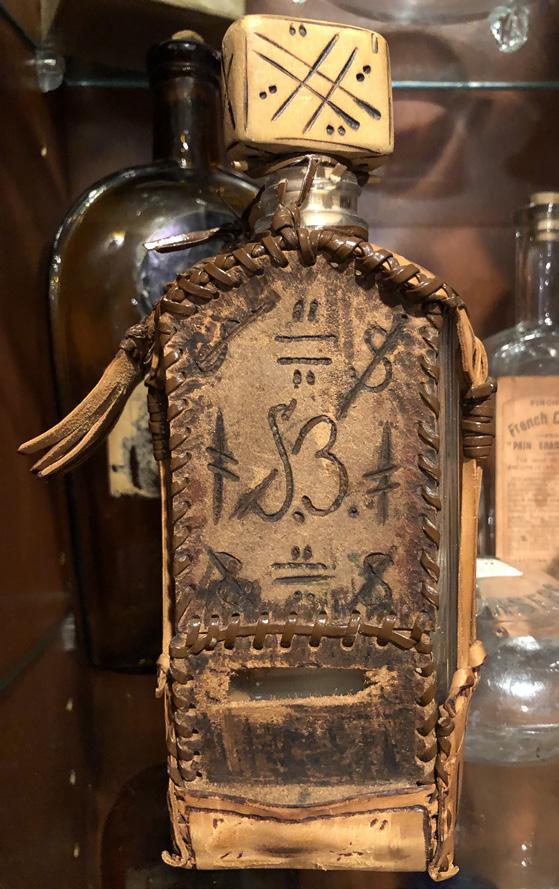
I will tell you about mine—even three of them—and if they make you think of yours, share it with AB&GC readers and include a photo, too.
Here are mine, and if you first glance at the clear, unpontiled, unembossed bottle and say, “That’s not even worth 50 cents,” remember, this isn’t about dollar value but something that pleases you after all these years.
I found this unimpressive bottle decades ago; without the label, I would never have looked at it twice. [Photo A]
And the label immediately asked more questions than it answered.
1: Where is my magnifying glass? I can’t read what’s written!
2: Can this be real? Could someone a hundred years ago handwrite a label over and over again on however many bottles they hoped to sell?
3: It’s named “Finch”—but Finch who?

It reminds me of the time 30 years ago—when Jim Hagenbuch called up and alerted me to an item coming up in one of his auctions. He said: “It’s you! I mean, it’s got your name on it!” In fact, it did: A barber bottle embossed “R. Finch. Tonic.” [Photo B]
Now, back to the bottle in question: Here is what the faded label says (as best I can tell): “Finch’s ‘Good Samaritan Pain Killer’ Liniment—Directions. For cholic—morbus—1/2 teaspoonful on—(several lines unreadable) until relieved. For rheumatism apply with the hand rubbing in thoroughly / Shake before using. Price 50 cts.” I tried to research the product, but after an hour, this Finch was a pain! I found nothing.


And the bottle with a photo of my mother in her 20s. [Photo C] I know nothing about this except it’s been around a while. My mother had war-time stories she rarely shared with us. (Hey, in my outdated address file, I still have the phone number of my mother’s long-passed WWII boyfriend!)
Editors’ note: Got an item that is valuable to you yet likely will never be a star item featured in a glass auction? Share it with readers. Tell Ralph Finch about it, and include a photo, to rfinch@ twmi.rr.com
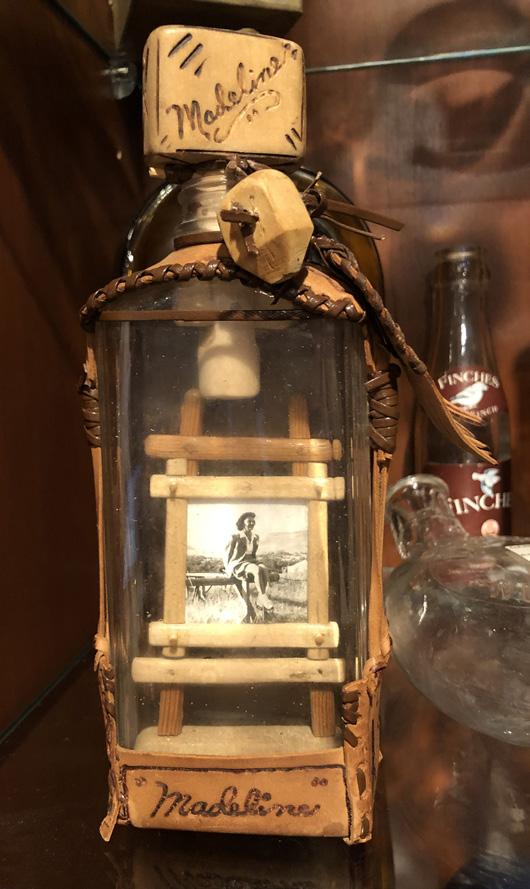
Dear friends, A friend found this 5-gallon crock in the Ocklawaha River (Florida) in the middle of the 1960s. It has a very small hole in the bottom center that looks to have been made by the manufacturer. Any idea what the hole was for? Any information on the proprietor, what the crock was used for, and what value? Any help would be appreciated.
After some searching, I thought the crock might have been used in separating whey from curds to make cheese. However, an advertisement (see attachment below) from them suggests the small hole in the crock might have been used for dispensing and possibly mixing syrups or other liquids.
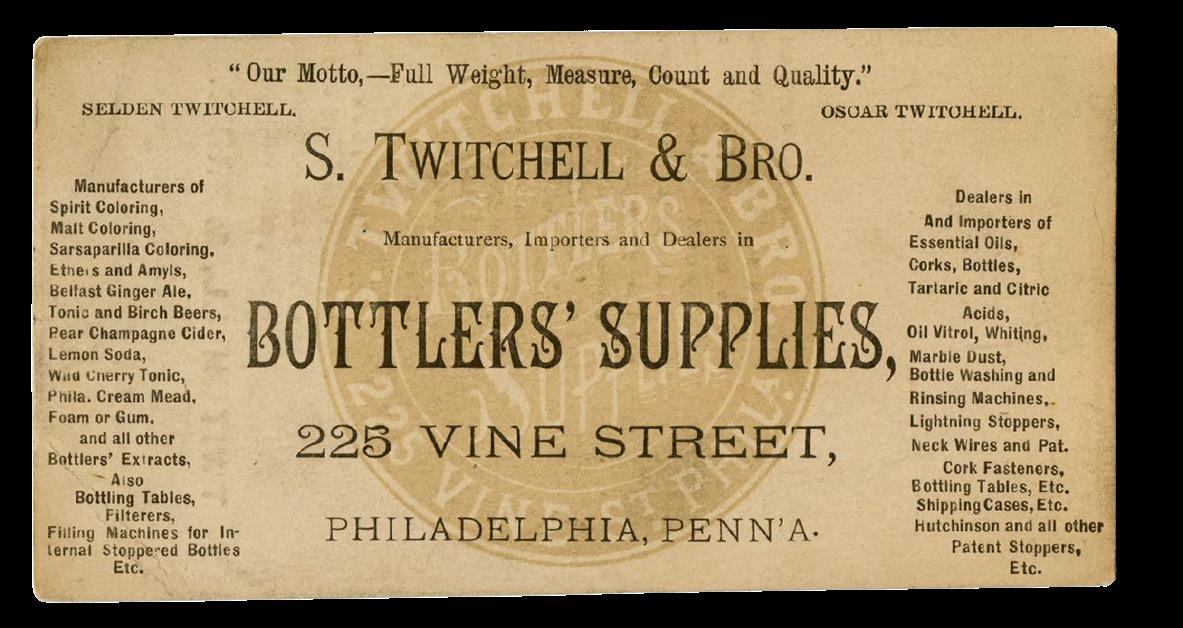


David Kyle Rakes Summerfield, Florida
[Response 1] It is a syrup crock that fed the bottling equipment. I have seen a number over the years. – Tod von Mechow
[Response 2] Bill Wrenn provided a series of stoneware dispenser auction links and illustrations. – David



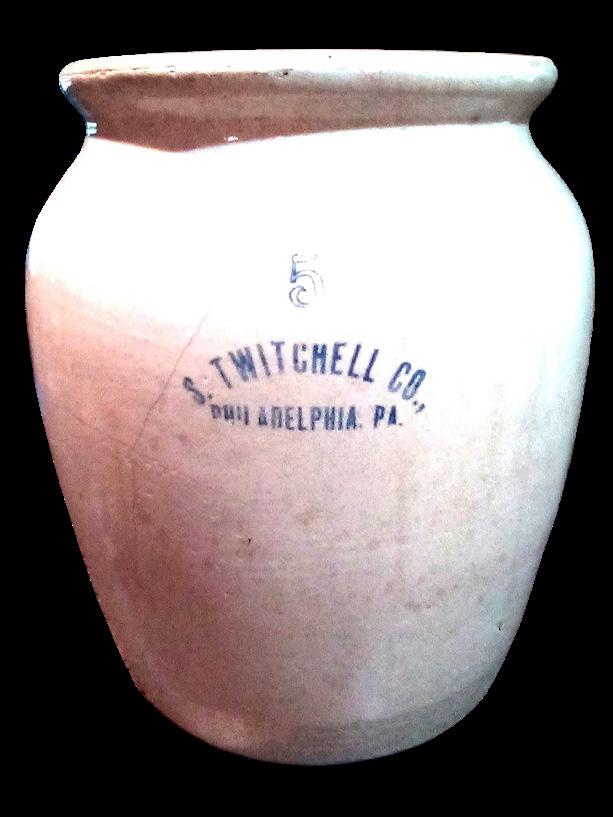
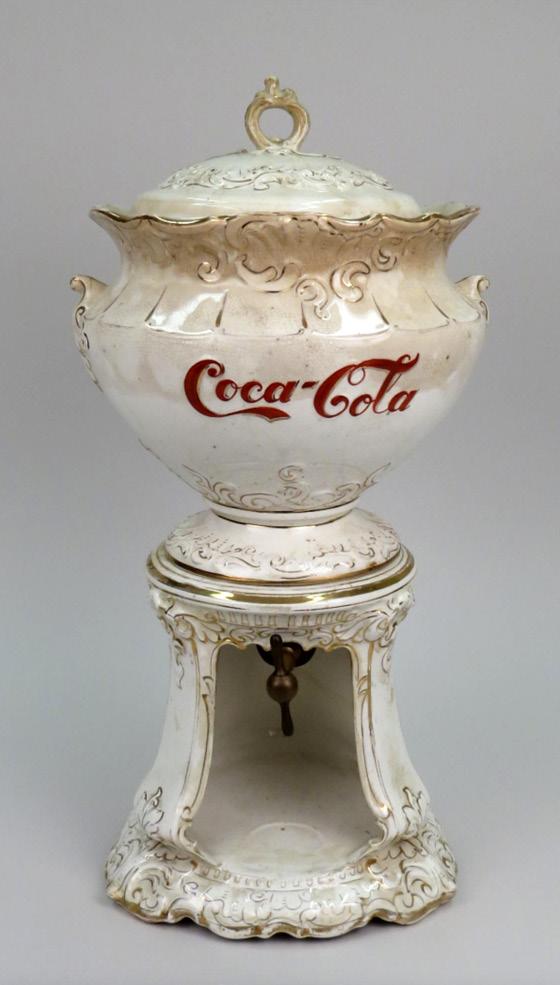


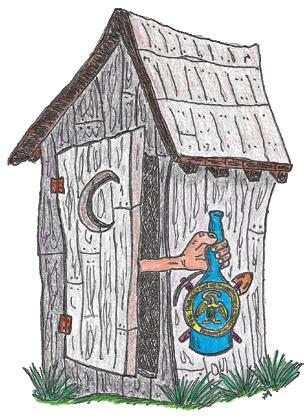

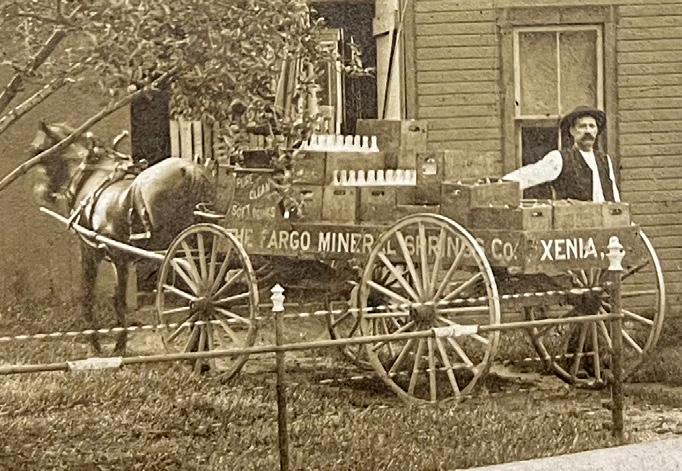
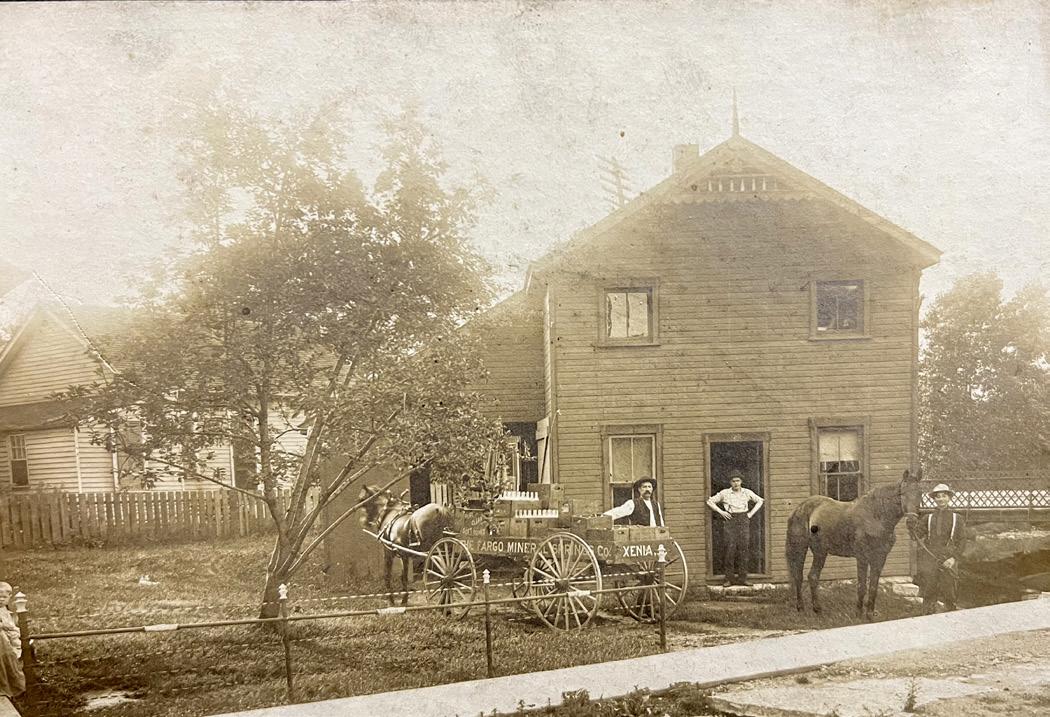
Hey...I bought this old image and thought maybe you could use it somewhere. Zoom in and check out all the bottles.
Martin D. Van Zant Mooresville, IndianaHello Ferdinand—I have followed the continuing story of the Lafayette flasks with great interest. I was especially keen to see Ken Previtali’s information on the Lafayette Mineral Springs Company of Derry, New Hampshire as I have never before seen bottles with the paper die-cut image of the General, or the promotional ginger ale glass. The Crystal Spring in Derry functioned as a producing mineral spring from at least 1825 up until 1925, but by

the turn of the century the Lafayette Bottling Company had shifted its primary production to carbonated sodas (“tonics” to many New Englanders!)
In the early 1920s, new owner, Adelard D. LeMay, moved the operation from Derry to the city of Manchester with the aim of serving the large Franco-American population there. In 1926, a bakery delivery driver named Antonio Jolicoeur bought the bottling plant with $500 down, borrowed on a life insurance policy, and 16 years worth of monthly payments for a grand sum of $3,800. Under the Jolicoeur family, the new Lafayette Beverages would become a major player in New England’s soft-drink marketplace, growing and thriving as an independent bottler until selling to PepsiCo in the mid-1980s.


The Lafayette Beverage story is one of many profiled in my coming book, Granite Fizz: The Untold Story of Spring Water and Flavored Tonics in New Hampshire. Look for it in late spring on the Amazon/KDP platform. Regards,
Dennis Sasseville, Bedford, New HampshireI found the Shards of Wisdom article submitted by Willy Van den Bossche to be quite interesting. The concept of ranking a top seven of the most significant glass ‘contributions’ to the world is a rather monumental undertaking. It is sort of like the ultimate ‘shootout’ that we in the West like to play with at our national shows. Aside from the obvious scale of this worldwide undertaking, it seems the candidates cannot be fairly ranked in importance. They are all good. But, it is tempting to add another candidate for consideration. Admittedly, it no longer exists, however; there is enough evidence to know it was real.
One of the seven wonders of the ancient world was the monumental statue of Zeus, constructed by Phidias about 435 BC at Olympia, in Greece. Estimated to have been roughly 41 feet in height, it was made of a composite of materials including a wooden substructure covered with ivory plates, ebony, gold and precious stones. Much of his body consisted of the ivory plates, but, the most fantastic element of the statue had to be the immense robe that adorned the lower half of Zeus as he sat on his throne, which was made of glass panels, allegedly covered with gold. The demise of the statue is a topic of debate. It is believed to have been destroyed some time between 475 and 551 AD.
Phidias constructed a workshop nearby the site where the statue was located. The statue is, of course, long gone, but the site of his workshop still exists. It was archaeologically excavated by a German team between 1954 and 1956. The complex was a rather
large shop which included a ‘factory’ developed to manufacture the glass used in the statue. The excavations recovered a fairly large amount of glass at his workshop. These shards are currently on display at the National Archaeological Museum in Athens, as well as in Berlin, Germany. Some of the glass molds are also on display at the Archaeological Museum in Olympia.
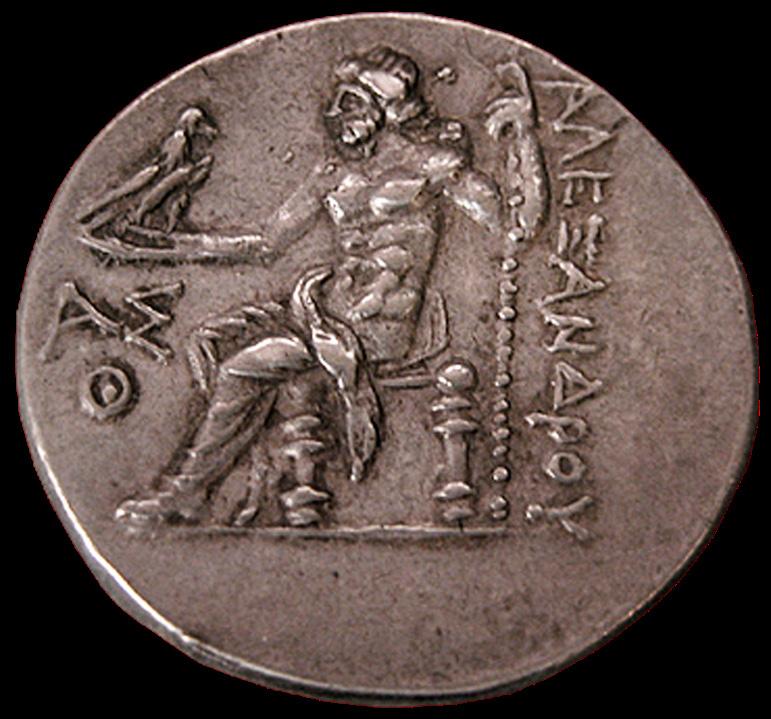
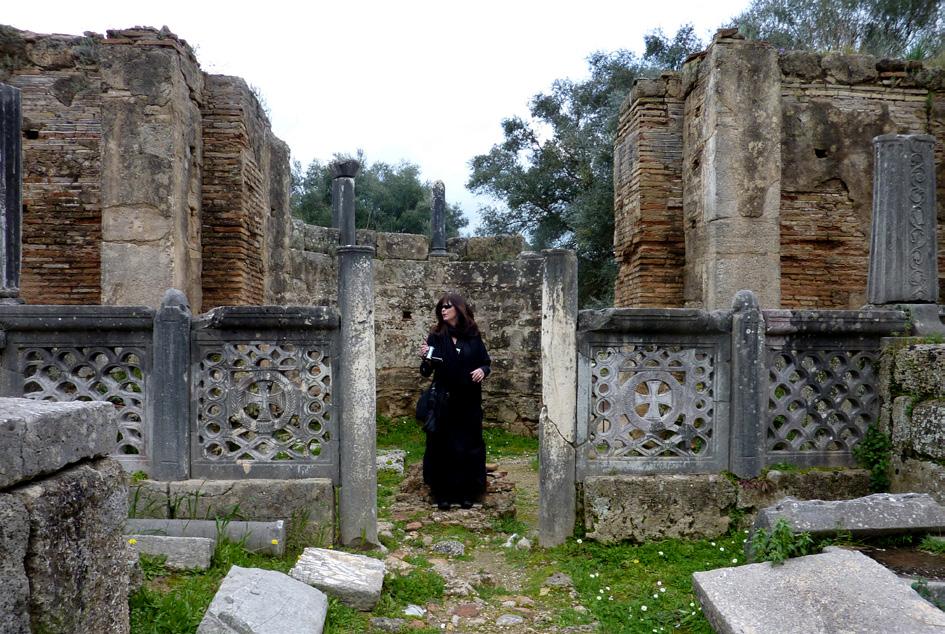
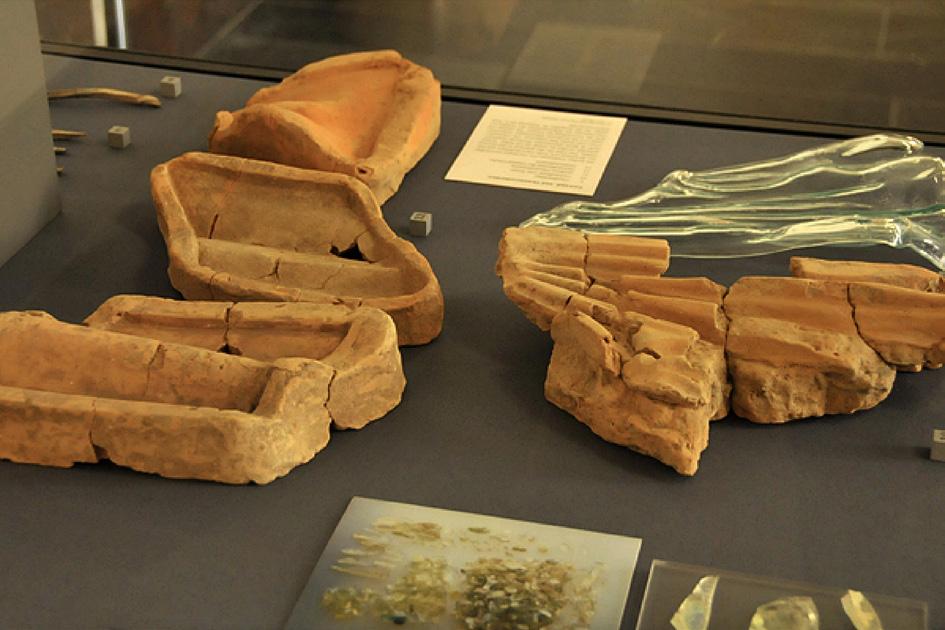


 Eric McGuire
Petaluma, California
Eric McGuire
Petaluma, California

Hello, I had received a black bear figural bottle as a lamp back in the 70s. It was painted white like a polar bear. Later in life when I started collecting bottles, I removed the paint to reveal its real beauty. It was black with purple swirls in the glass but was not see-through. The face was applied and it had a pontil scar on the pedestal base. It also had a collar with a heart pendant. Later, two year ago, I was able to locate its aqua sister. You have the same one pictured on your site (PeachridgeGlass.com). I believe they could be Russian vodka bottles. But the Kummel’s are so much more stylistic. Could you educate me on these two bottles?

Tony Moller, Malvern, Pennsylvania
[Editor] Yes, I collected various figural beer bottles over the years but honestly have not researched the bottles. I do remember once, when Norman Heckler Sr. gave me a tour of the Heckler house in Connecticut, seeing some amazing bear bottles in their kitchen window. The house was like a country museum of glass. I was wearing my Texas cowboy boots and every step I took the house, shelves and glass seemed to tremble with my boots contacting the wood floor. Or maybe I imagined this...I wish I would have focused more on the glass. Anyway, I’m asking one of our members if they would do some research and write an article on figural bear bottles. We would be more than glad to give you some space in an upcoming issue. Thank you.
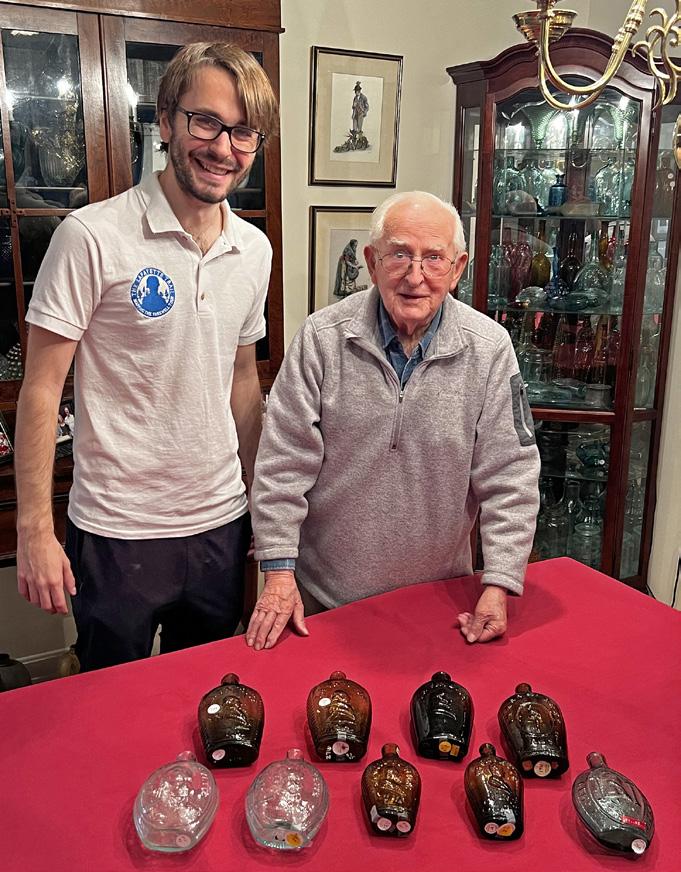



Thanks for including our Lafayette conversations in the latest magazine. That was a great article. As a follow up, I wanted to share a “small world” story. In researching Lafayette’s travels, I came across Julien Icher, founder and president of The Lafayette Trail, Inc. (thelafayettetrail.org and lafayette2024.org). He also has a very well-developed YouTube channel and has produced 20 professional “Follow the Frenchman” videos documenting his visits to various states, tracing Lafayette’s footsteps, giving presentations and planting markers. I called him and asked if he would be a resource for future Lafayette articles and we discussed the many Lafayette flasks commemorating his visits and Lafayette’s travels through Alabama. He wasn’t familiar with the Lafayette flasks. As we talked more, I told him my home was on the Eastern Shore of Maryland, and this is where the “small world” kicks in. He told me he spent time working on a book at a
friend’s house in Deal Island each year and would be staying there in a few weeks. It’s 20 minutes from Dad’s house and his Lafayette flask collection in Salisbury! So, here’s Julien at Dad’s house with his Lafayette flasks on 29 January. I know Julien enjoyed learning about another dimension of America’s appreciation and recognition of Lafayette, and Dad certainly loved the opportunity to share.
Julien and I will meet when he comes to produce his Alabama video later this Summer. Regards, Doug Simms Prattville,
AlabamaHello Elizabeth, I hope everything is great in Houston. Thanks for all you do for the Fed and magazine and all! I sure like the Members Photos and Lost & Found. I’ll email from my phone some of my photos as soon as I send this off. I’m glad Mike Dickman is doing the great ACL soda bottle articles. I’m back into that hobby and was in Tulsa when we reformed the old painted soda club. I collected these a lot as a teen. Lately I have bought up several hundred—but must slow down now! Tell Ferd the article on the 2022 Reno National was the best ever! Wow. That article needs to get out in antique mags etc…let people see how wonderful our hobby is and all the serious collectors. I’ve also talked with Craig Cassetta and I’m glad FOHBC interviews and the new YouTube channel are being done as we have a lot of old timers. The Youth Coordinator is fabulous too. So glad you guys are all so very involved!
Editor Note: With an abundance of reporting information and photographs this issue, we are also using page 53 and placing the entire Regional Directors report on our website FOHBC.org which can accommodate more images. Please go to the homepage under Editors’ Pick for “The Rest of the Story,” as Paul Harvey used to say.
The Milwaukee Antique Bottle and Advertising Club (MABAC) annual show was held on February 5th in Waukesha. This is always a great show with a wide variety of merchandise, many longtime dealers, and enthusiastic buyers. This year was no exception, with 71 dealers and 134 sales tables. Sales were brisk, with the usual strong interest in local brewery items, but we also got a number of national dealers with bitters, flasks, and higher-end advertising as well. Several years ago, as venue rental costs continued to rise, the show started to decline in profitability. The show is the chief revenue source for the club’s other activities.
The show has always had a long line starting an hour before opening, so the club members voted to go to a two-tier ticket price approach, early entry, and regular admission. While there had been some reluctance to do so in the past because the setup allowed dealers to buy as well, a compromise was reached, which allowed dealers time from 6:00 to 8:00 am and early admissions from 8:00 to 9:00 am. This year the early admissions numbered 84, with 365 general admissions. Not only have early admissions offset rising costs, but it has allowed the club to hold general admissions virtually flat.
Of special note this year was the return of one of Wisconsin’s own, Bill Taylor, who has returned to his home state after pursuing his career in the Pacific Northwest. Bill’s specialty is figural bitters, and many of us can hardly wait to tour his house to see what he has amassed over several decades.
While I did not get a detailed account of the 53rd annual St. Louis show held this March, reports are that it was very strongly attended.
For those of you who know Bill Mitchell, a longtime collector and national show dealer, be aware Bill is going through a very challenging health crisis. Please keep Bill and Kathy in your thoughts.
To support the Federation’s initiative to increase membership, I will be distributing the new flyers for the promotion of the Virtual Museum and Auction Price Report database. I will send a supply to each club to hand out at shows, club meetings, and other events. The FOHBC has a wonderful value proposition for its members. I do not have all the club contacts in my region, so please contact me so I can send you these promotional flyers.
Finally, I want to put in a pitch to the region to reach out to me if
you would like portions of your collections to be enshrined in the Virtual Museum. While there is a big workload in the pipeline to record bottles, you want to get on the list.
From a Wisconsin standpoint, we have a number of important collections that are available. While Wisconsin did not achieve statehood until 1848 and appreciable population density until the 1850s, there are a number of great glass and pottery bottles of all categories from these early days that will make great additions to the Virtual Museum.
Richard Kramerich, covering for the vacant Southern Region Director position, writes in that Bill Johnson reported on the Chattanooga North Georgia Antique Bottles & Advertising Show on March 18th in Dalton, Georgia. Jason Herron and Buddy Lasater put on a great show! There were almost 200 tables sold for the big room at Dalton Civic Center. Special set-ups were from Jack Daniels, Coca Cola and the Huston Museum. The hosts used the P.A. system for drawings and announcements. Jason did an interview that was broadcast over one of the Chattanooga television stations. This certainly helped the walk-in traffic on Saturday. A great last-minute change was that the dealers were allowed to set up on Friday, if they wished. Several other Southern Region show chairs were there including Jack and Jim Hewitt, Keith Quinn, Greg Eaton and Stanley Word (that he saw). The concession area was open from 9:00 am until about 2:00 pm on Saturday.
Richard adds, “Our FOHBC president, Michael Seeliger, was at the show and recruited Tom Lines to be the Southern Director.” Next on the radar—the Daphne show.
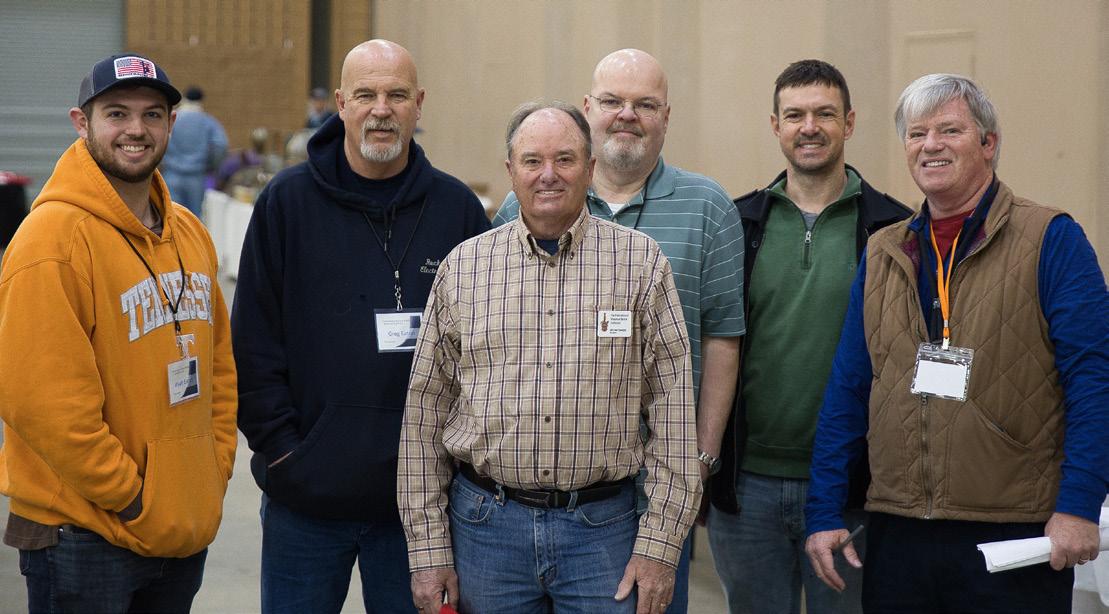
On February 5, the New Jersey Antique Bottle Club (NJABC) held its 27th Annual Show and Sale. Kevin Kyle, Show Chairman, reported that 61 dealers took multiple tables and had 265 paid admissions. This show does not offer early admission. Kevin said that the dealers sold quite a bit of stuff to customers and each other and that there seemed to be high energy all during the show.
The FOHBC Virtual Museum has been established to display, inform, educate, and enhance the enjoyment of historical bottle and glass collecting by providing an online virtual museum experience for significant historical bottles and other items related to early glass.
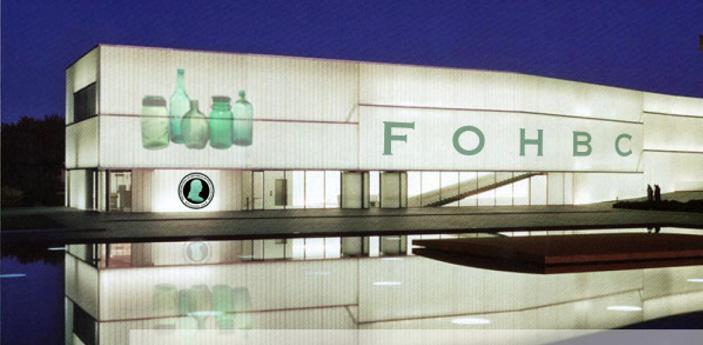
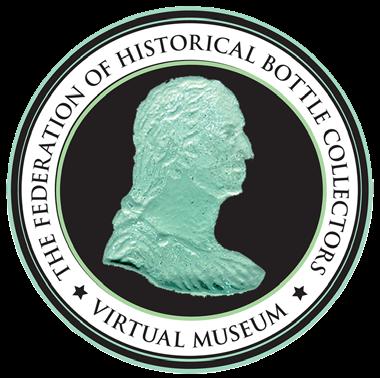
Alan DeMaison, our senior imager, had a successful trip to the Baltimore Antique Bottle Show and met with Lavere Edens and Vicki Freund, Fire Memorabilia collectors from Tennessee. They were very excited with the possibility of having their collection imaged for the museum. Alan then went on to Pennsylvania to image about 50 select pieces from the Tod von Mechow collection of very early beers, ales and sodas. Alan was accompanied by Terry Crislip who helped with the imaging and did the driving for the trip.
You will see an email below to the Federation board of directors and the Virtual Museum directors from Eric McGuire addressing U.S. bottles that were made in foreign countries. I didn’t realize that some of the early Historical Flasks were produced in England. I did know that the Palmer Green bottles as well as some of the Dickey’s and Wakelee bottles from San Francisco, were English. There is also proof that as many as 41 Western whiskey bottles were produced in Germany. This information is in the book Whiskey Bottles of the Old West by John L. Thomas as an article by Tom Quinn. Some western beers also were made in Germany.
At our last board meeting, there was a question about the potential expansion of the Virtual Museum (VM) to include bottles other than made in or for the U.S. Ferd (Meyer) rightfully submitted that it should include specimens from a broader geographical area. I couldn’t agree more since it is nearly impossible to isolate the U.S. from the rest of the world. Of course, the workload becomes exponentially greater, which becomes the biggest challenge to an already monumental task of entering just U.S. bottles in the VM. I will digress from my point of the huge workload presented momentarily.
Many collectors are unaware that an unknown but substantial number of our bottles were produced beyond our shores. Several examples have come to light challenging the conventional wisdom that our bottles, both early and late, were produced in this country. The earliest printed sources go back to 1975 when Margaret Ellison wrote an article in Archaeologia Aeliana, the Journal of the Society of Antiquaries of Newcastle (England). The extensive article proved that at least some “Eagle” flasks were made in Newcastle for the American market at least as early as 1812. This was lightly touched upon in the book American Bot-
tles and Flasks by McKearin & Wilson. The original information was gleaned from a few glasshouse and mold makers’ journals that have survived. It is postulated and likely true that far more “American” bottles were produced in England for the American market.
Another example of early flasks originating from England is a salvaged shipwreck from Newcastle, England, bound for Baltimore, Maryland. The ship Caesar ended up on the reefs of Bermuda in May 1818. The ship was salvaged shortly after it was wrecked. Among the salvage were a large number of Masonic flasks, which were commonly found in old collections on the island. The ship was “re-salvaged” in 1957, which led to the discovery of more, at least broken, Masonic flasks. This solved the mystery of why so many Masonic flasks had earlier been found in Barbados.
Yet another find from archives residing in England was the discovery of two receipts (pictured on the next page) for large orders of bottles from the Ricketts glasshouse for Swaim’s Panacea. One is dated July 1834, for 1,280 dozen, and one is dated April 1842, for about 123 gross. An article on the subject was presented in The Journal of Glass Studies, Vol. 55, 2013. One can’t help but wonder how many “American” bottles were actually blown in England, France and Germany. The Virtual Museum should include all bottles.
With just a few photographers and imagers, mainly Alan DeMaison, Gina Pellegrini-Ott and myself, and a few computer specialists like Miguel (Ruiz) and Ferdinand, who puts everything on the Virtual Museum site, along with his design expertise and background information, we have developed a fantastic worldclass museum. Looking forward, my not-so-scientific analysis has determined that the VM won’t be completed for at least a hundred years at the rate we are going. Time is not on our side. We need to get past the “hump,” where anyone interested in bottles will automatically go to the VM site first to learn something about a particular bottle. Other bottle-related websites simply do not compare with what we have started. If we can’t build a better base of contributors, or support, our project will fail.
How we go from our present circumstance needs our full attention, and it won’t be easy. I would hate to see the VM die an early death when Ferd or one of our other essential contributors can no longer play a role.
Eric McGuire, FOHBC Western Region Director, West Coast VM Imager, Petaluma, CaliforniaPlease help us fill our Phase 4 Wishart’s Pine Tree Tar Cordial bottle!
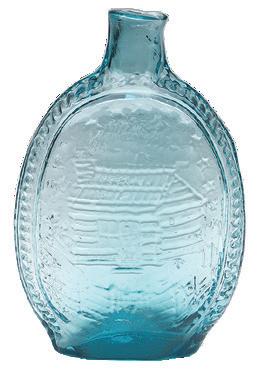

Two receipts for large orders of bottles from the Ricketts glasshouse for Swaim’s Panacea. One dated July 1834, for 1,280 dozen, and one dated April 1842, for about 123 gross.


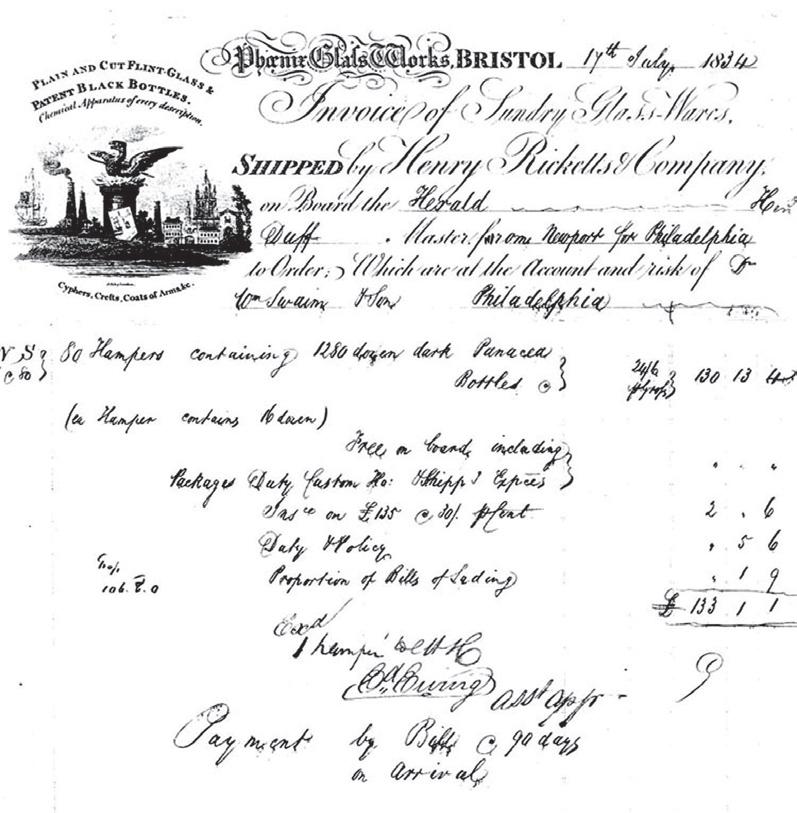
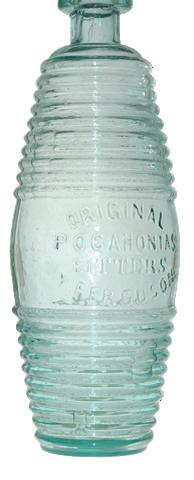
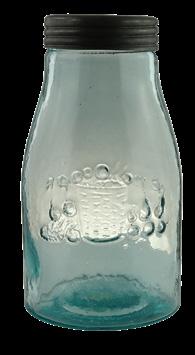
Please help us in our Phase 4 fundraising capital campaign to continue development of the FOHBC Virtual Museum. The FOHBC and the Virtual Museum team thank our many donors who have helped us raise over $92,218 to date. We have $27,976 in available funds to continue development to build our galleries, exhibition hall, research library and gift shop. Donations are tax deductible. All donors are listed on our Virtual Museum Recognition Wall.
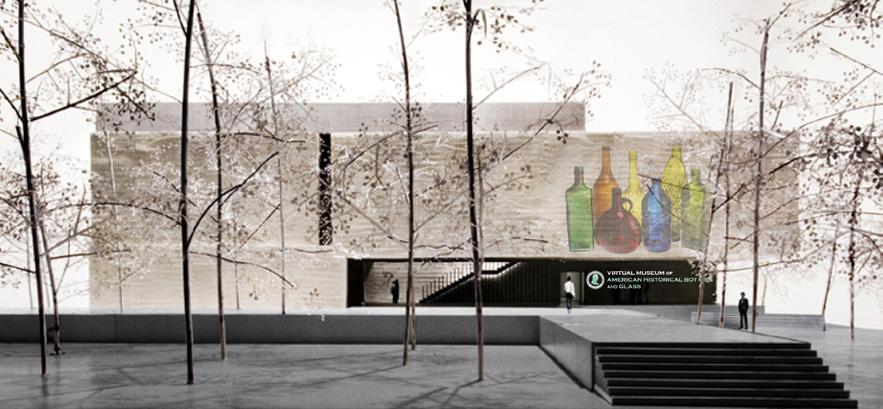

With one salaried website technician averaging $1,200 a month, we need help. Plus, we are now traveling to collections with the Pandemic hopefully behind us, so more costs will be incurred. All other time is donated by the Virtual Museum team out of our love and passion for the hobby and the FOHBC. Thank you!
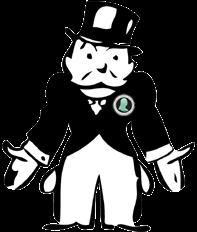




For gift information contact: Alan DeMaison, FOHBC Virtual Museum Treasurer, 1605 Clipper Cove, Painesville, Ohio 44077, a.demaison@sbcglobal.net

It has taken me almost 20 years to complete my book on ‘Inks, Glues, Polish & Blacking Bottles.’ When I started it, I had in mind a British version of William Covill Jr’s ‘Ink Bottles and Inkwells’ published in 1971. It was already well out of print when I got a second-hand copy in the 1990s and is still a collector’s bible with regards to American inks. The book pictured 200 embossed bottles. When his collection was sold by Skinner in 1980 the sale ran to 840 lots; his provenance still adding a premium when they appear at auction.
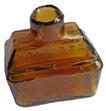
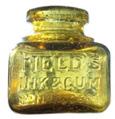
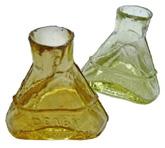

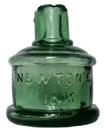



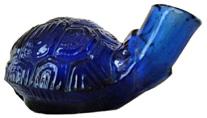
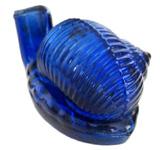


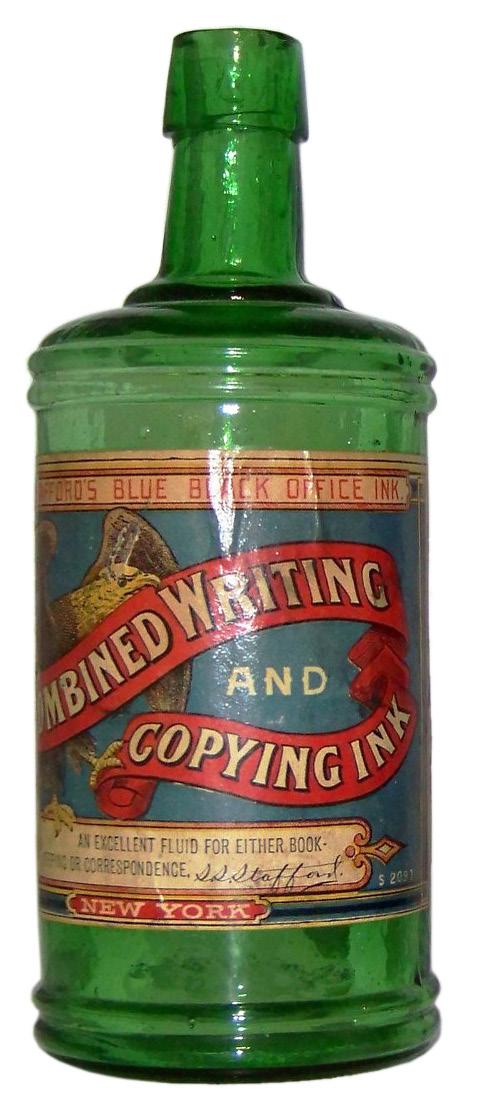



It felt like a tall order to even consider trying to match it for breadth, and pretty rapidly I understood quite what an achievement it had been. The shear headache of trying to bring some kind of order to the vast range of this field is the first problem. Covill settled on dividing them into shape and type headings with each preceded with an introductory essay where he would add some company details or discuss patents. It was an elegant book but not the model I’ve used. There is no such thing as a ‘definitive’ book on bottles. Something I learnt
having completed my poisons book ‘Deadly Pleasures’ for BBR. It has hundreds listed but new bottles always come along. Apart from comprehensiveness, a book is defined by the story you plan to tell. Helping me were plenty of collectors, not least in the USA.
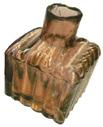
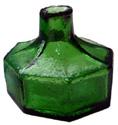
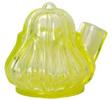
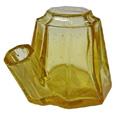
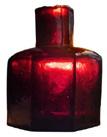

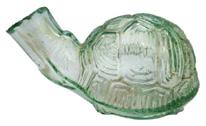
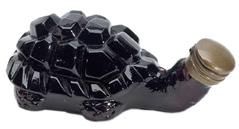

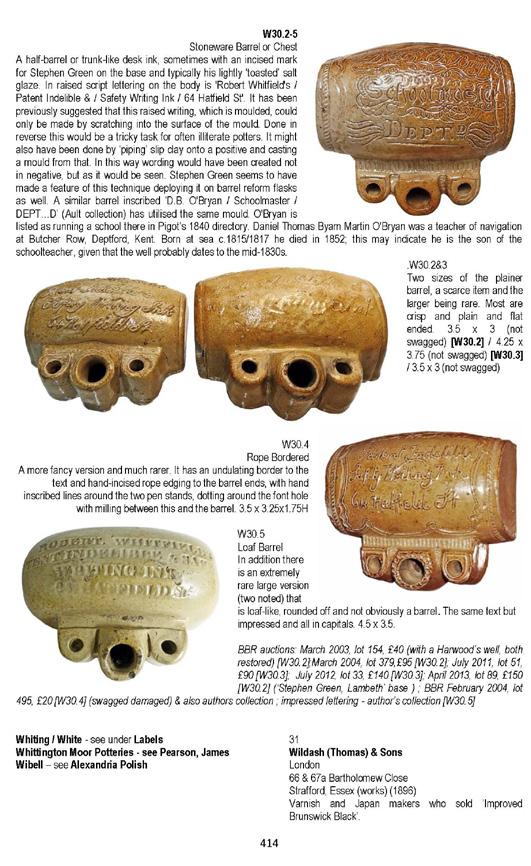
My own book has 2,000 actual items pictured in colour and many more in adverts and trade images (in total around 4,000 images are included). It takes the form of a dictionary with companies, countries and bottles types (shapes) listed alphabetically. Brands and retailers run from Acton’s Mexican Blacking to Zuline’s marking ink. Under each I’ve tried to run down a company history and then order all their bottles beginning with the earliest. Covill did not supply information on prices, rarity or provenance (they were all his!) but I have attempted this together with colours and sizes known. All my listings are given a unique code which is cross referenced with
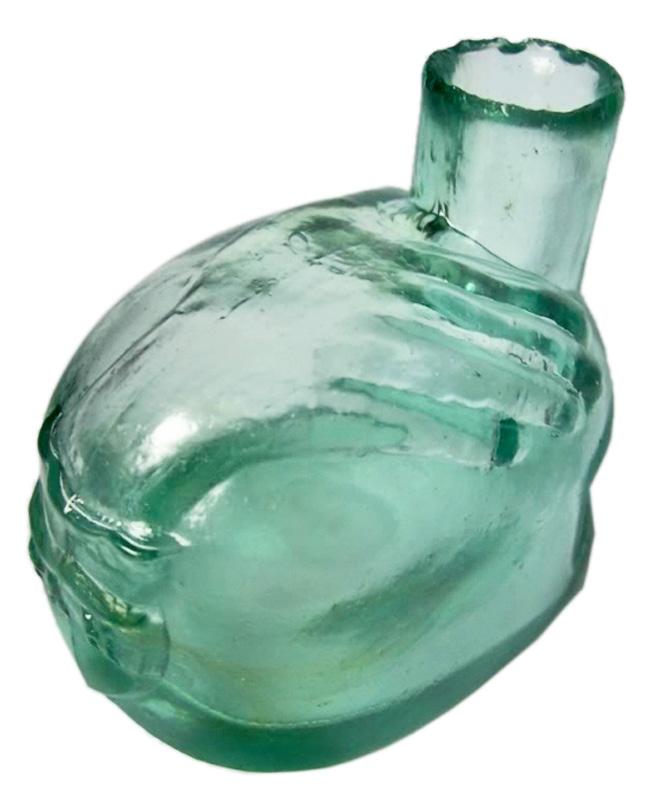
relevant auction lots, Covill’s and others (Joe Mathew’s excellent Teakettle Guide for instance). Embossed or labelled bottles can be found by name (even by scant letters or monograms) but plain ones require separate headings that match Covill’s: from ‘Bell Shaped’ to ‘Umbrellas,’ via ‘Octangonals’ and ‘Teakettle Fountains.’ Figurals too, with entries for Barrels, Cottages, Shoes and Boots, Human Figures and more are scattered throughout.

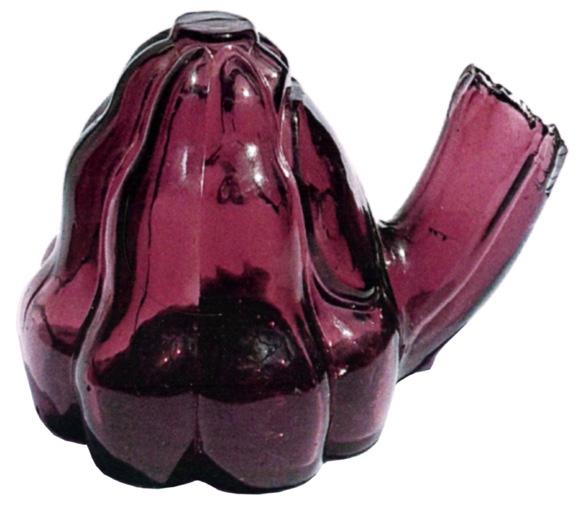
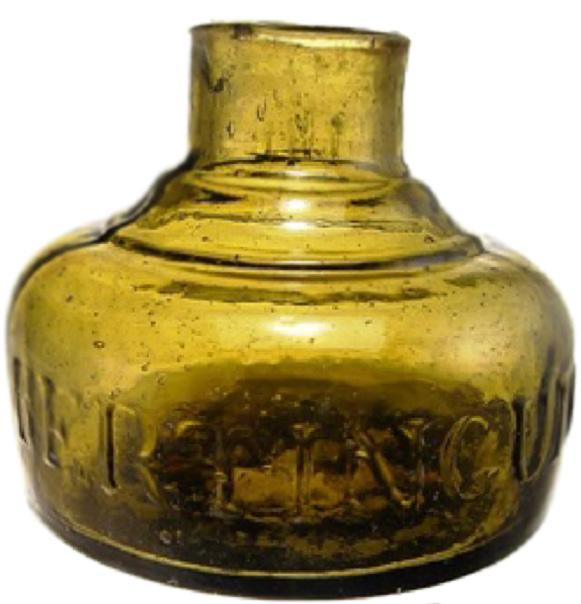
Although I cover all the main companies, I haven’t attempted to do a comprehensive American guide. Ed and Lucy Faulkner’s ‘Inks,’ which can legitimately claim to be the heir to Covill where American bottles are concerned, is the nearest to that. They very kindly printed me a copy of the 2017 edition which I was pleased to see used a similar method to order things. Great minds think alike! What I felt was needed was a book that centred on Britain and its old empire, but covered the rest of the world. In Covill’s day
collecting bottles was far more restrained by country but not today.
With the advent of the Internet and online auctions, collecting has become international. Although there are blogs and forums there was nothing in the way of a comprehensive guide. It became clear to me that just confining the book to British bottles was not sufficient. It was necessary to discuss their similarity and confusion caused by bottles that were turning up all over the world but may not have originated in that country. The exporting of companies such as Staffords for instance, who had British bottles made over here, or of David’s of New York who registered and ordered theirs from British potters, or Carr’s who sold mostly for export to Australia.
I discuss the design. Confusion with perfumes and lamps; why a glue or type of ink needed a different shape; why the pens you used altered the bottles needed. The differences in bottle making are discussed under country headings: pontils and burst lips for instance. Where Covill did get things wrong was in assigning some bottles to USA. This is most apparent with teakettles and figurals, many of which he thought American but are actually French. I have full listings for not only the fancy French makers like Maurin and Antoine & Fils, but also Dutch, German, Scandinavian and Eastern European bottles and more. My book concentrates on throw-away packaging: I do not include refillable inkwells and fancy ornamental teakettles that were sold empty. I have done the work on these too but that will have to wait for the next volume!

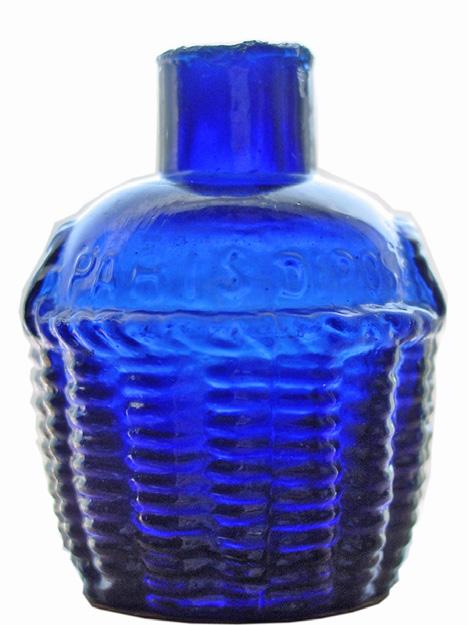
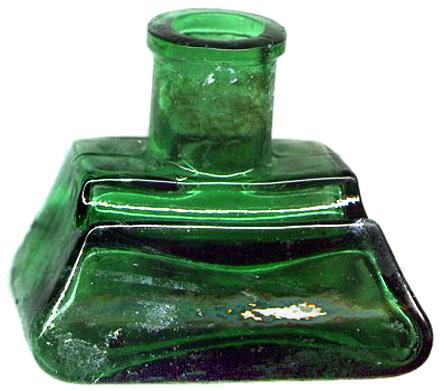
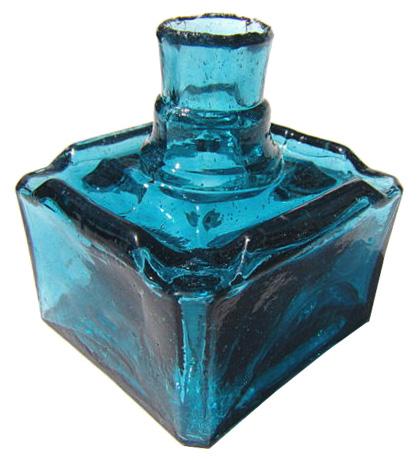

BBR aims to launch the book at the UK Summer National on the 1st and 2nd of July 2023. It will be some 440 pages, with a hardback, colour dust jacketed cover with colour images throughout. Priced at £100 but Alan Blakeman at BBR, handling the distribution, is offering a pre-publication price of just £80. Overseas postage will be calculated exactly once printed but collectors can pre order with a deposit of £20. Contact Alan: alan@onlinebbr.com

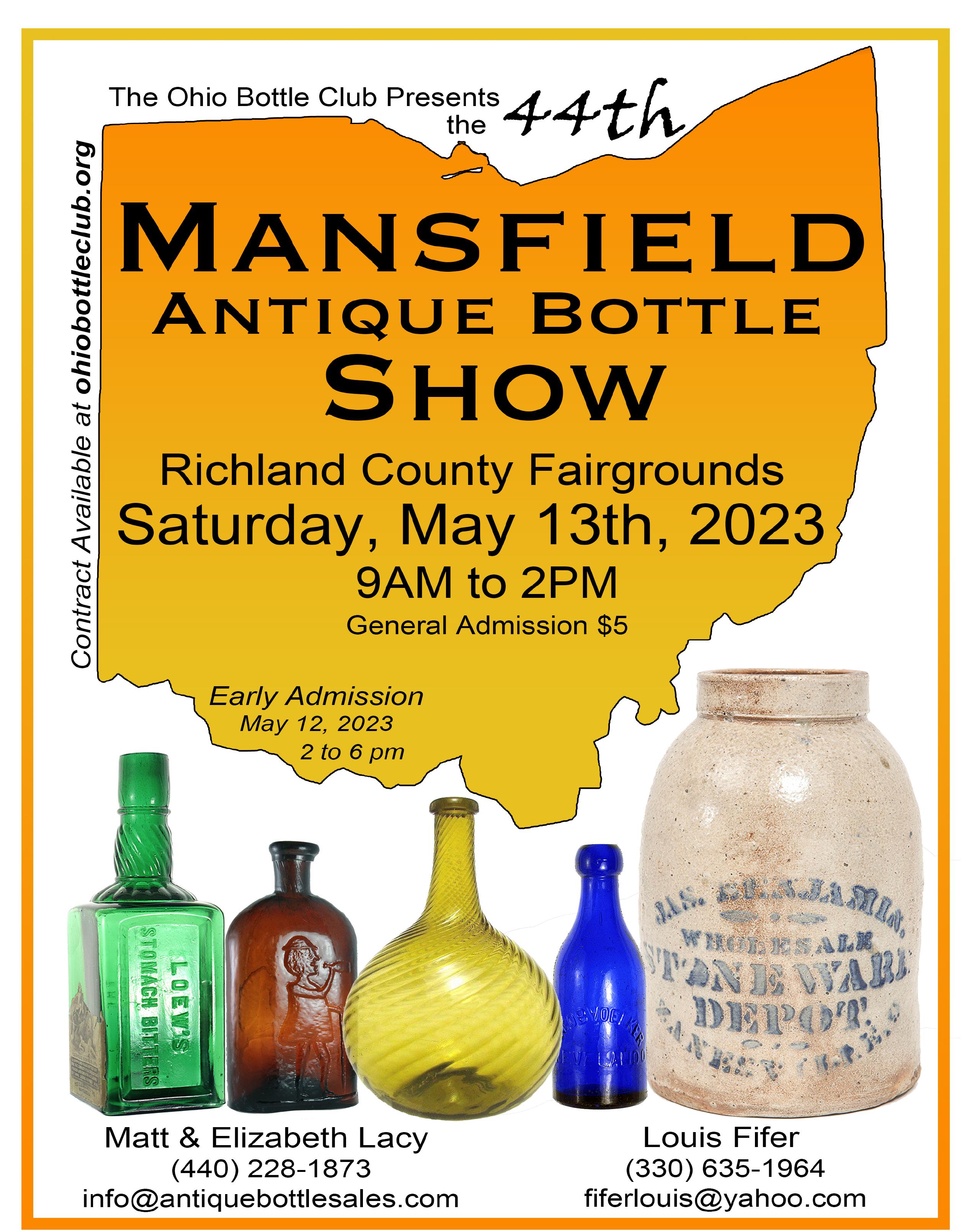
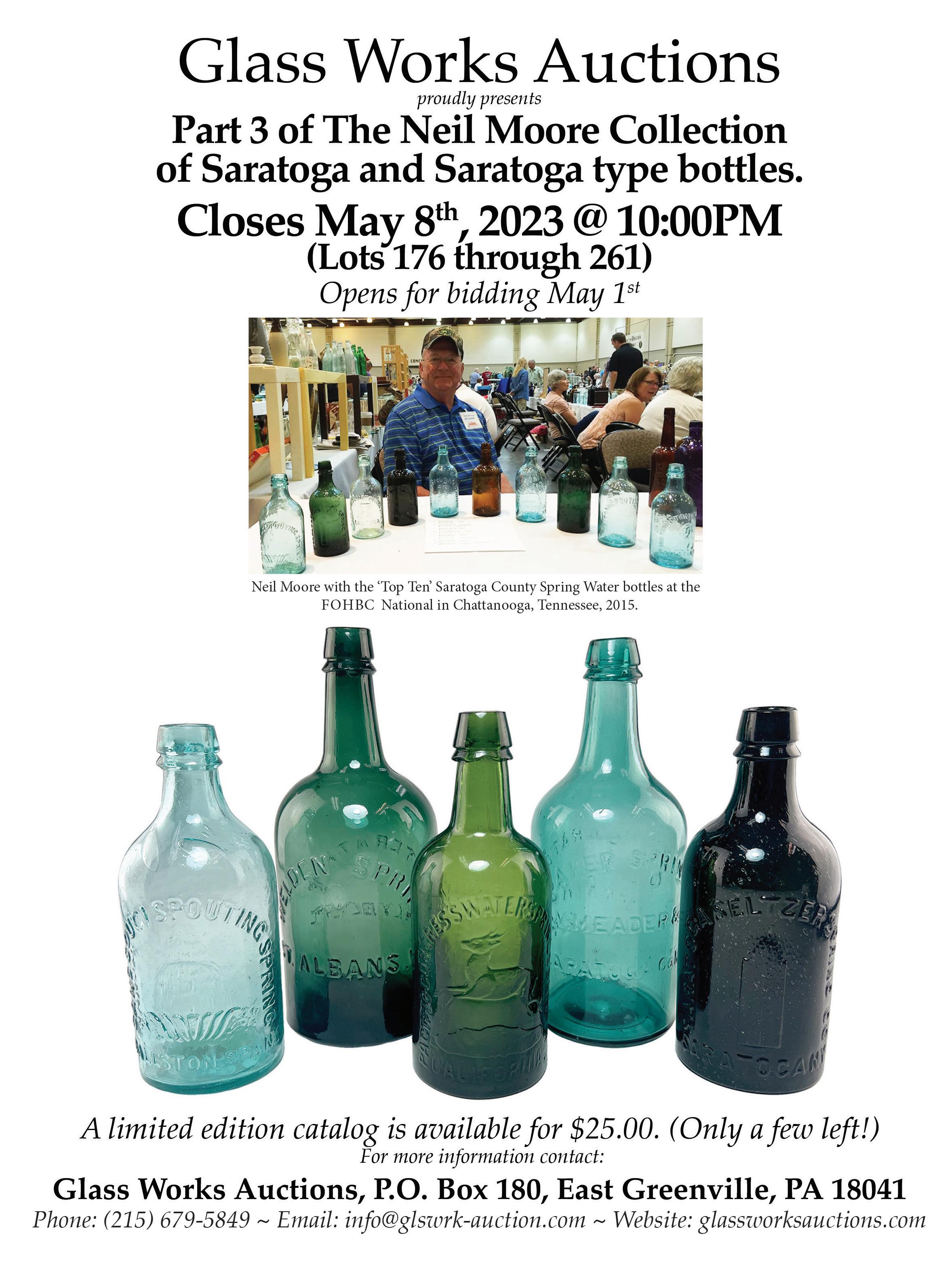
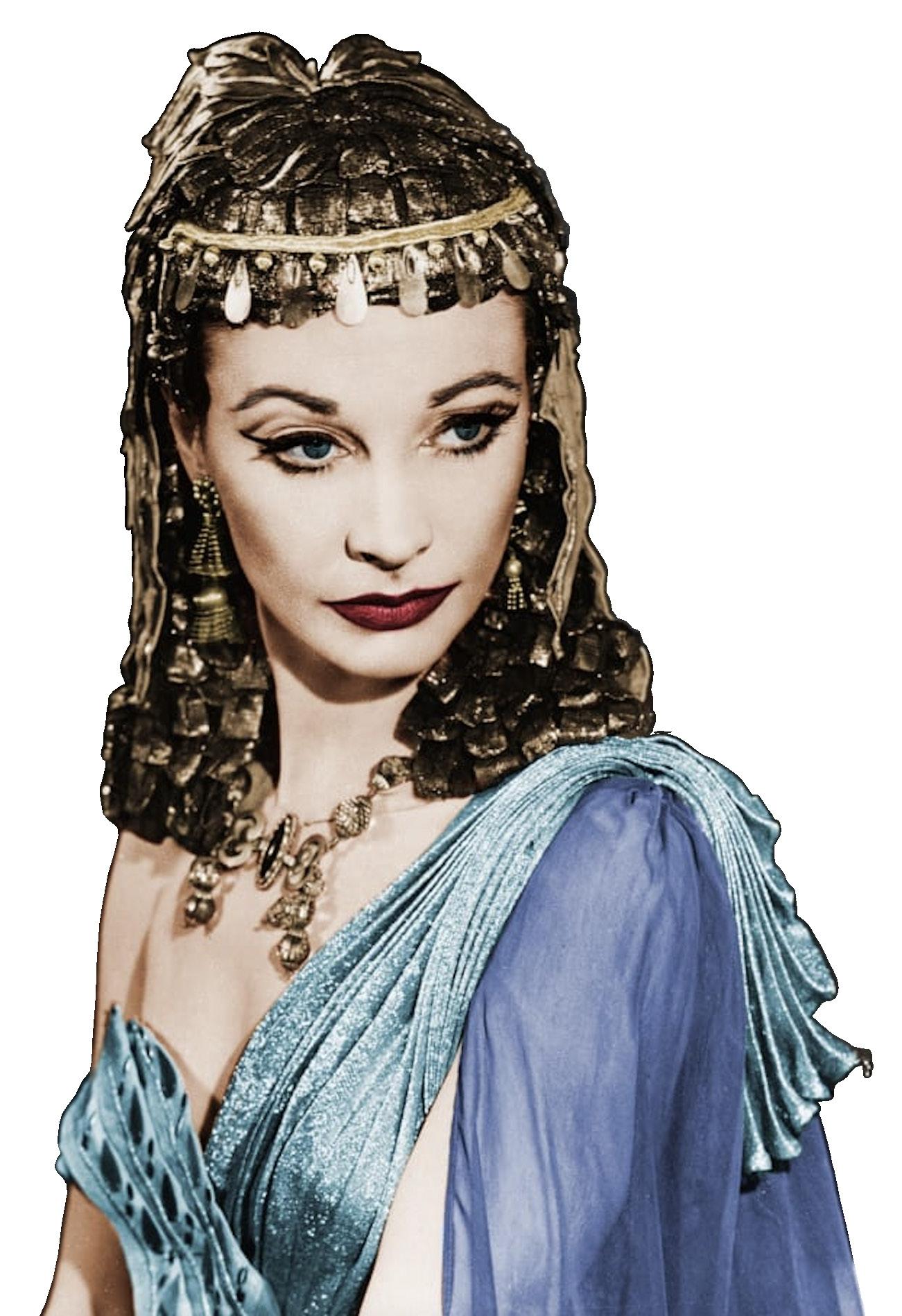
[Left] 1948 was the year that “My Favorite Beverage” was bottled. The soda brand apparently didn’t last very long. The bottle contained eight ounces of soda pop and was bottled by Favorite Beverages in Newark, New Jersey. A not-so-enthusiastic slogan on the ACL informs potential consumers that the product is “Worth Trying.”
ONE of the most popular categories of applied color label (ACL) soda bottles, collected by both women and men, is “Lady Bottles.” There are literally hundreds of different bottles depicting the female of the species on the ACL, with some of them common and some of them rare. Let’s look at a few.
“My Favorite Beverage” is among my own favorites. It contained eight ounces of soda pop and was bottled in 1948 by Favorite Beverages in Newark, New Jersey. The ACL is made with an unusual combination of yellow and green pigments and depicts a pretty young lady wearing a swimsuit at the beach, with a bottle of pop and a book nearby. A not-so-enthusiastic slogan on the ACL informs potential consumers that the product is
Trying.”

There is nothing like a dame Nothing in the world There is nothing you can name That is anything like a dame.
The ACL is related to the Miss America Pageant in nearby Atlantic City, New Jersey. The pageant began in 1921 on the weekend after Labor Day, as a ploy by local businesses to keep visitors coming to the boardwalk after the summer season ended. The event was popular from the outset, drawing hundreds of thousands of people to what was initially billed as a “Bathing Beauty Revue.” Apart from pausing during the Great Depression, the Miss America Pageant has been held for a hundred years, although the iconic swimsuit competition was eliminated in 2018.
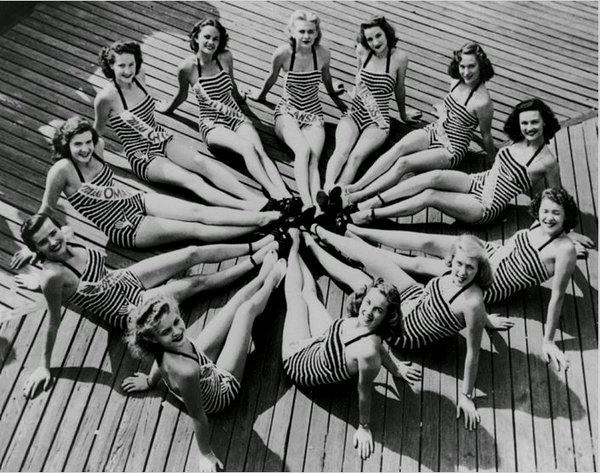
Today, “My Favorite Beverage” is a reasonably available ACL soda bottle that is typically found in very nice condition. Despite the fact that it is not terribly rare, demand for the bottle is strong, and the price has continued to climb since so many collectors want to own an example. In 2022, two mint examples sold for $550 apiece on the Glass from the Past auction Facebook page, up from $350 a few years earlier.


Cleopatra, the Egyptian Queen of the Nile, is perhaps the personification of female beauty, at least in the popular imagination. Cleopatra has been the subject of art and literature for centuries and was the focus of over a dozen films since 1899, including blockbusters starring Theda Bara (1917), Vivien Leigh (1945), and Elizabeth Taylor (1963). A new version starring Gal Godot is reportedly being filmed at present.
The real-life Cleopatra was the last ruler of the Ptolemaic Kingdom of Egypt and was the lover of famous, powerful Romans, including Pompey, Julius Caesar (with whom she had a son) and Mark Antony. After Caesar’s assassination, she allied with Mark Antony against Octavian (Augustus), but the pair lost decisively at the Battle of Actium in 31 BC, and both she and Mark Antony committed suicide.
Corporation licensed its brand name, logos and secret product formula to local bottlers (much like the Coca Cola Company does), and obtained a copyright and U.S. patent.

[Above]
coin depicting the true physical appearances of Cleopatra and Mark Antony, struck circa 36 BC at the city of Antioch in Syria. The coin type is rare and immensely popular with collectors, and a mint example (not

the pictured coin) sold for $150,000+ at a 2022 Heritage auction. The coin bears two astonishingly lifelike portraits of the famous couple on opposite sides. Every detail of Cleopatra’s elaborate hairdo, her jewelry, the determined look
in her eye are all sharply rendered. Antony has a prize fighter’s profile and a surprisingly modern-looking haircut.
Egypt thereafter was ruled as a Roman province. Although Queen Cleopatra’s intelligence, political skills and feminine charms are not in doubt, her actual physical beauty is. Readers can draw their own conclusions by examining a silver coin from 36 BC depicting Mark Antony and Cleopatra during an era when highly skilled coin engravers strove to create detailed and accurate portraits.
In any event, the makers of “Cleo Cola” opted for the fabled beauty of legend and Hollywood rather than the one shown on contemporary coins. The bottle was made with green glass (though sometimes clear glass) and contained 12 ounces, with a striking red and white applied color label (ACL) showing a lounging, exotic Cleopatra and the slogan, “Queen of Sparkling Drinks.”
The ACL states that it was “Bottled Under License Issued by Cleo Syrup Corp., St. Louis, Missouri” and also says, “Reg. U.S. Patent Off.” and “Copyright 1935.” The licensed product was bottled by various companies in various cities, including Dallas, Texas; Columbus, Ohio; Omaha, Nebraska; and many other places, with several variations in the portrait (for example, with and without her belly button showing) and different wording on the ACL. It is a popular bottle and reasonably priced, typically costing $100 or less for a nice example.
Patriotism and bravery, rather than physical beauty, landed Barbara Fritchie on the front of an ACL soda bottle. Born in 1766, the 96-year-old widowed Barbara Fritchie was living in Frederick, Maryland, during the Civil War when General Stonewall Jackson led a phalanx of Confederate troops through the town in 1862.

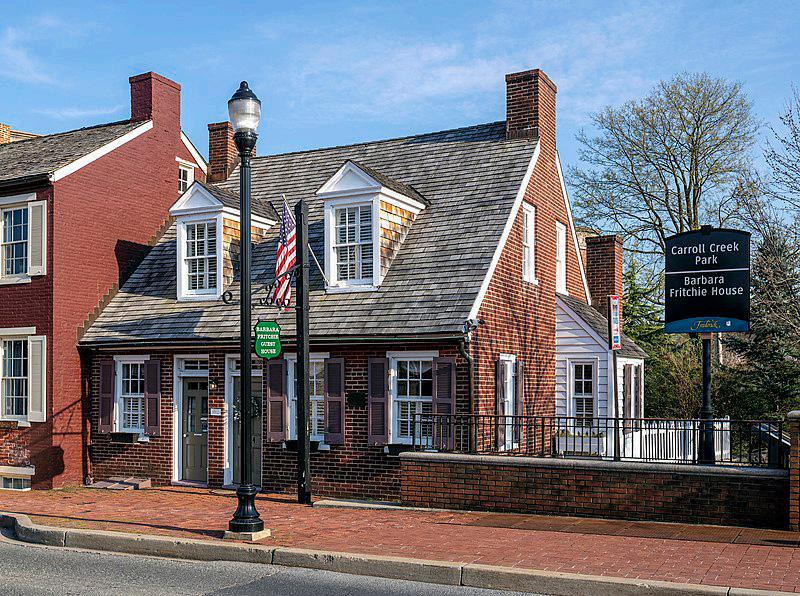
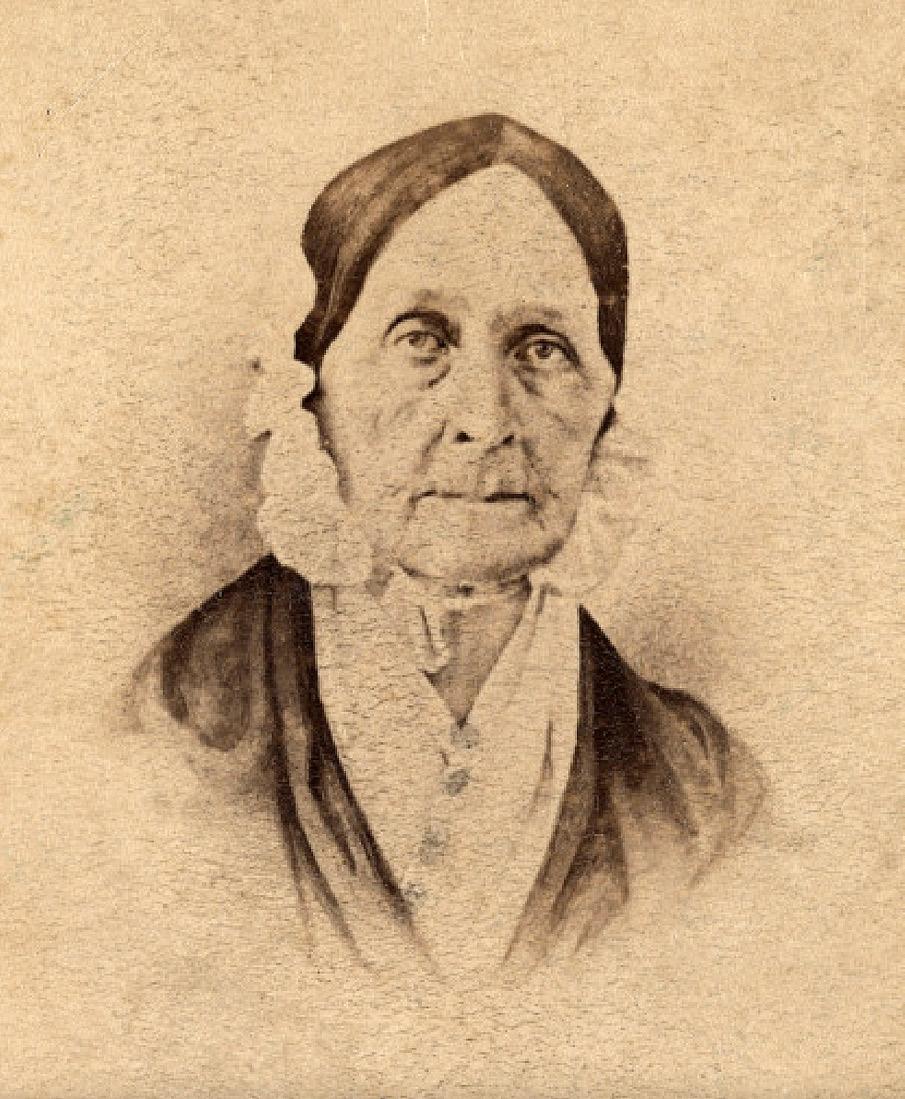
As the invaders passed by, Mrs. Fritchie defiantly hung a large
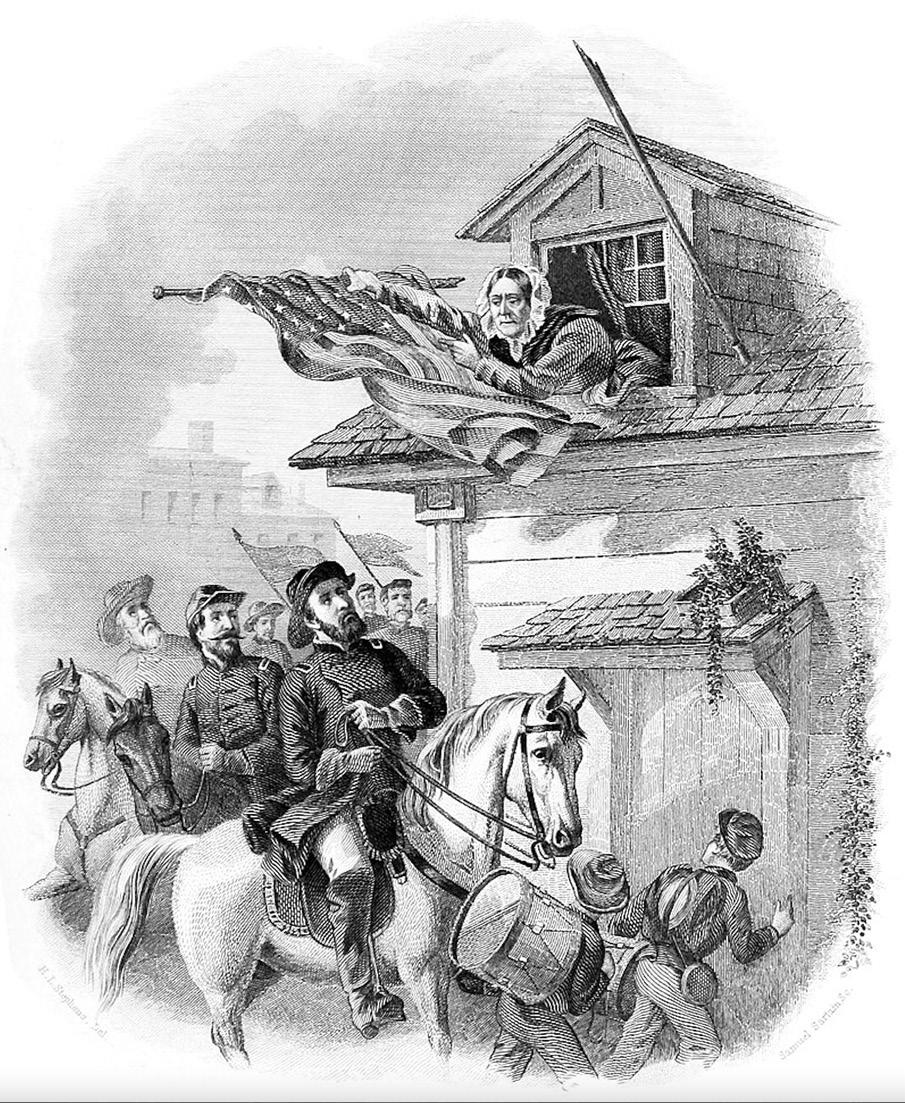
and General Jackson ordered the banner to be shot down. What happened next was memorialized in a poem written by John Greenleaf Whittier, who learned about the incident from a friend:
It shivered the window, pane and sash; It rent the banner with seam and gash. Quick, as it fell, from the broken staff Dame Barbara snatched the silken scarf; She leaned far out on the window-sill, And shook it forth with a royal will.
“Shoot, if you must, this old gray head, But spare your country’s flag,” she said.
A shade of sadness, a blush of shame, Over the face of the leader came; The nobler nature within him stirred To life at that woman’s deed and word:
“Who touches a hair of yon gray head Dies like a dog! March on!” he said.

The poem was immediately popular when published in The Atlantic Monthly in 1863 and subsequently was reprinted in newspapers throughout the Union. It ignited a fever of pride and patriotism and remained popular for years. Sir Winston Churchill memorized the poem and is said to have recited it by heart to FDR during WWII.
The city of Frederick, Maryland, seized on the fame of the poem (which, according to historians, may not be 100% accurate) and for over a hundred years has held an annual Fourth of July parade (and more recently, a motorcycle race) named in honor of Barbara Fritchie. The nearby racetrack holds an annual Barbara Fritchie Classic thoroughbred horse race.
For our purposes, there exists a “Barbara Fritchie Home Style Beverages” that was bottled in 1952 by the Barbara Fritchie Beverage Co. of Frederick, Maryland. It held nine ounces of soda pop and its front red-and-white ACL depicted a portrait of the brave and patriotic Mrs. Fritchie. Although it is quite a rare bottle, it is not in as much demand as the more common “My Favorite Beverage” depicting the bathing beauty. A nice Barbara Fritchie ACL soda bottle sold for $200 several years ago.
Bravery, brains, and beauty: as the sailors in South Pacific knew, there is nothing like a dame!
We’ll look at some other interesting “Lady Bottles” in a future installment of ACL Corner.
[Left & Below] The allure of Lady Bottles is underscored by these two ACL sodas: “Rainbow Beverages,” a 6-½ ounce bottle from the small town of Brownsville, Tennessee, 1947; and “Nectar,” a 7 ounce soda bottle from Pittsburgh, Pennsylvania, 1943, immodestly touted as “Drink of the Gods.”
CREDITS: Marsh, Thomas E., The Official Guide to Collecting ACL Soda Bottles, Youngstown, Ohio, 1992, Sweeney, Rick, Collecting Applied Color Label Soda Bottles, 3d ed. 2002, PSBCA, Tim A.C.L.–Miller, a FaceBook page showing hundreds of rare ACL sodas from Tim’s collection, VintageSodaCollector.com by FOHBC member Tom Pettit, “Weide’s Soda Page” (ca-yd.com), by Chris and Catherine Weide, Wikipedia entries for Barbara Fritchie; Be Be Shopp; Cleopatra; Miss America Pageant; Newark.

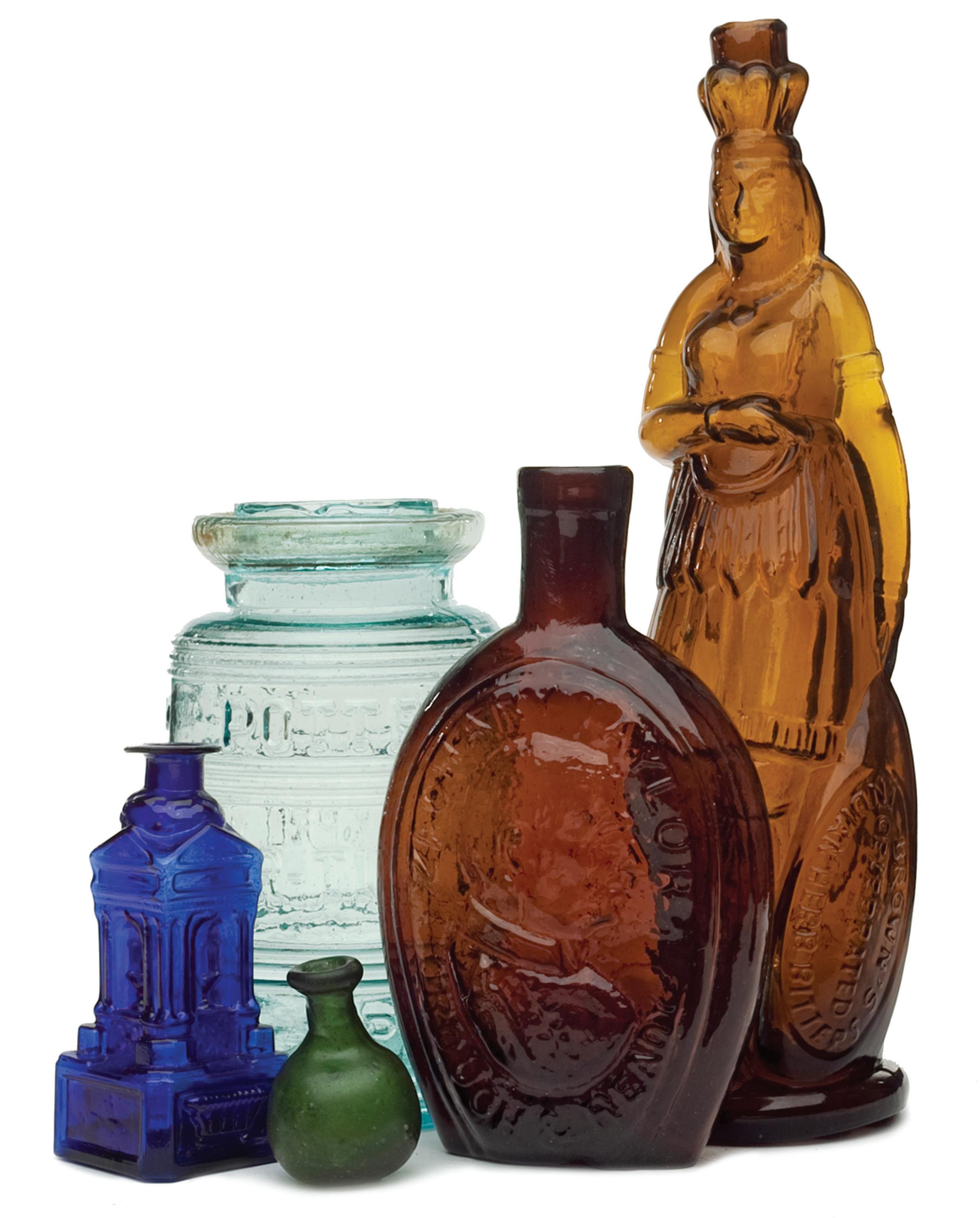
The FOHBC is announcing monthly 1-hour online Zoom seminars with presentations and imagery on a broad range of topics relating to antique bottle and glass collecting.
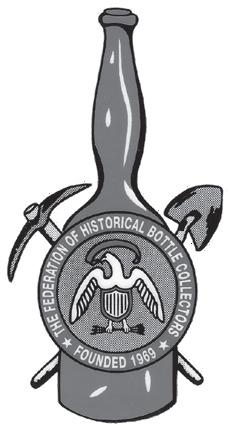
Join us for an exciting series brought to you by Federation members discussing collecting, history, digging and finding, bottle photography and displaying and so much more.
Seminars will occur on Tuesday evenings during the first or second week of each month at 7:00 pm CST. Time will be left for questions and answers. Seminars will be recorded and be available in the FOHBC Members Portal.

Seminars FREE for FOHBC Members and $15 for non-members. Sign up as a member prior to the seminar and attend free. All attendees will receive a Zoom invitation and will attend via desktop, laptop, tablet, or smart phone if they prefer. Attend them all or a-la-carte.
RSVP to get an invitation
FOHBCseminars@gmail.com
You will receive a Zoom email invitation with a link for each event. Simply join at the noted time, sit back, relax and enjoy some great antique bottle & glass seminars and discussion.

SEMINAR No. 1
“Three-State Digging Part 1”
“I Have The Wheeling Feeling”
Jeff Mihalik
Tues. May 9, 2023, 7 pm CST
SEMINAR SCHEDULE*
SEMINAR No. 2 – June 11, 2023, 7 pm CST
Foreign Bottles in America – Eric McGuire
SEMINAR No. 3 – July 18, 2023, 7 pm CST
H.H. Warner’s Patent Medicine Empire” – Michael Seeliger & Stephen Jackson
SEMINAR No. 4 –August 8, 2023, 7 pm CST
Open –
SEMINAR No. 5 – September 12, 2023, 7 pm CST
Collecting ACL Sodas – Mike Dickman
SEMINAR No. 6 – October 10, 2023, 7 pm CST
Three-State Digging Part 2 - Digging small historic towns in Pennsylvania & Ohio – Jeff Mihalik
SEMINAR No. 7 – November 14, 2023, 7 pm CST
Open –
SEMINAR No. 8 – December 12, 2023, 7 pm CST
Open –
Join Jeff, an accomplished digger and author in AB&GC. He will focus on digs and finds (and the local characters) in Wheeling, West Virginia. Part 2 will occur in October this year and will focus on other digs in the tristate area.


SEMINAR No. 9 – January 9, 2023, 7 pm CST
Open –
SEMINAR No. 10 – February 13, 2024, 7 pm CST
Houston 24 – Ferdinand Meyer V
SEMINAR No. 11 – March 12, 2024, 7 pm CST
Open –
SEMINAR No. 12 – April 16, 2024, 7 pm CST
Open –
*Subject to change. Updates will be published online.
In the early 1900s, George A. Carmichael and his son, Columbus Ed, were partners in the Exchange Café restaurant, Ed’s Place saloon, and The Carmichael & Son Company, a grocery and wholesale whiskey business in Ocala, Florida. The liquor business was successful enough that they started a mail-order business shipping liquor by rail all over Florida and into adjoining states. The Carmichaels made a name for themselves in Ocala in the restaurant and wholesale whiskey business. However, even more accolades must be bestowed on C. Ed Carmichael for being the first to make Silver Springs a famous resort and attraction centered around the world-famous glass-bottom boats.
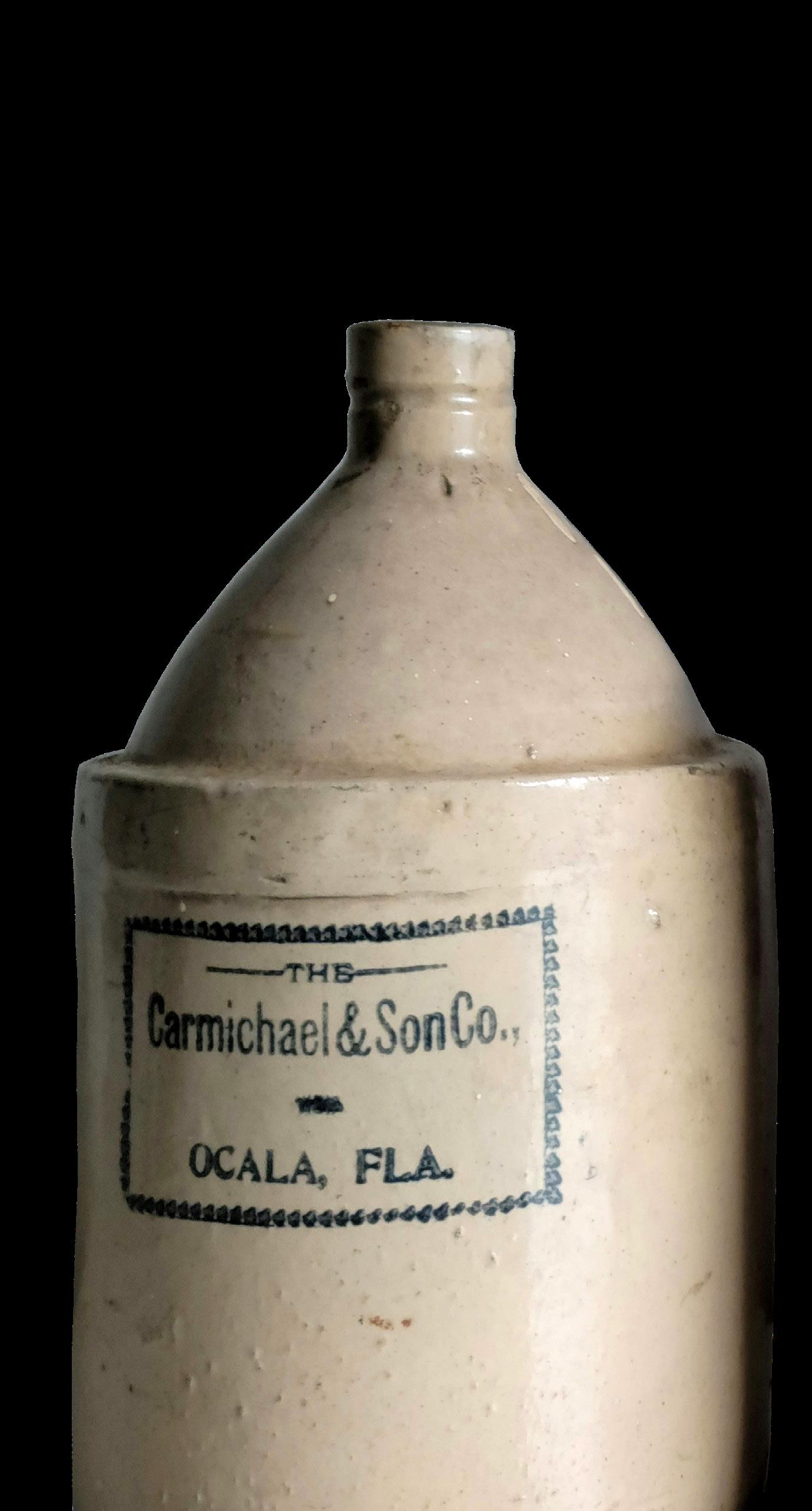
George A. Carmichael was born on November 13, 1845, in Crenshaw, Alabama. In 1870, at age 24, he was a farmer and married to Martha Jane Lockhart. They had four children, Andrew Carmichael, Daniel Carmichael, Mollie Carmichael, and Columbus Ed Carmichael. At this time, George had managed to acquire $600 worth of real estate and $300 in personal estate, money that likely helped him to move to Union Springs, Alabama, and become a drygoods merchant by 1880. George’s dry-goods business was big enough that he had four boarders at his home, with three noted as being “clerks in store,” all likely working for him in some manner or other. However, George was motivated to move to Florida for other business opportunities.
George and his family moved to Ocala, Florida in the early 1880s. He and his son, C. Ed, opened a saloon and grocery store called Montezuma Exchange in partnership with Acme Brewery of Macon, Georgia. The business was not too far from the Montezuma Hotel, which had been established in Ocala as early as 1884. The Montezuma Hotel was large and considered the “Best Year-Round Hotel at $2.00 a day in Florida.” The Carmichaels likely named their saloon after the hotel to get more business.
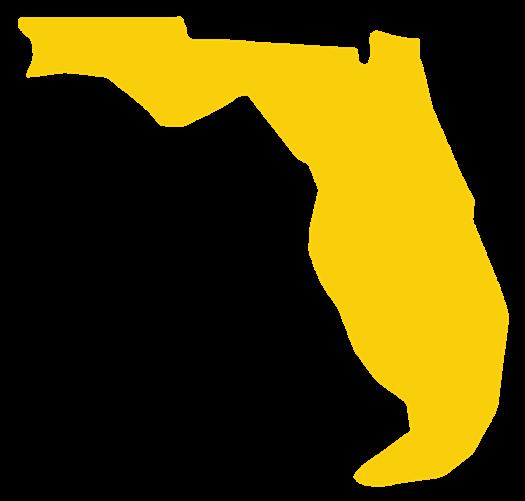
A sketch from the new book FLORIDA ADVERTISING JUGS
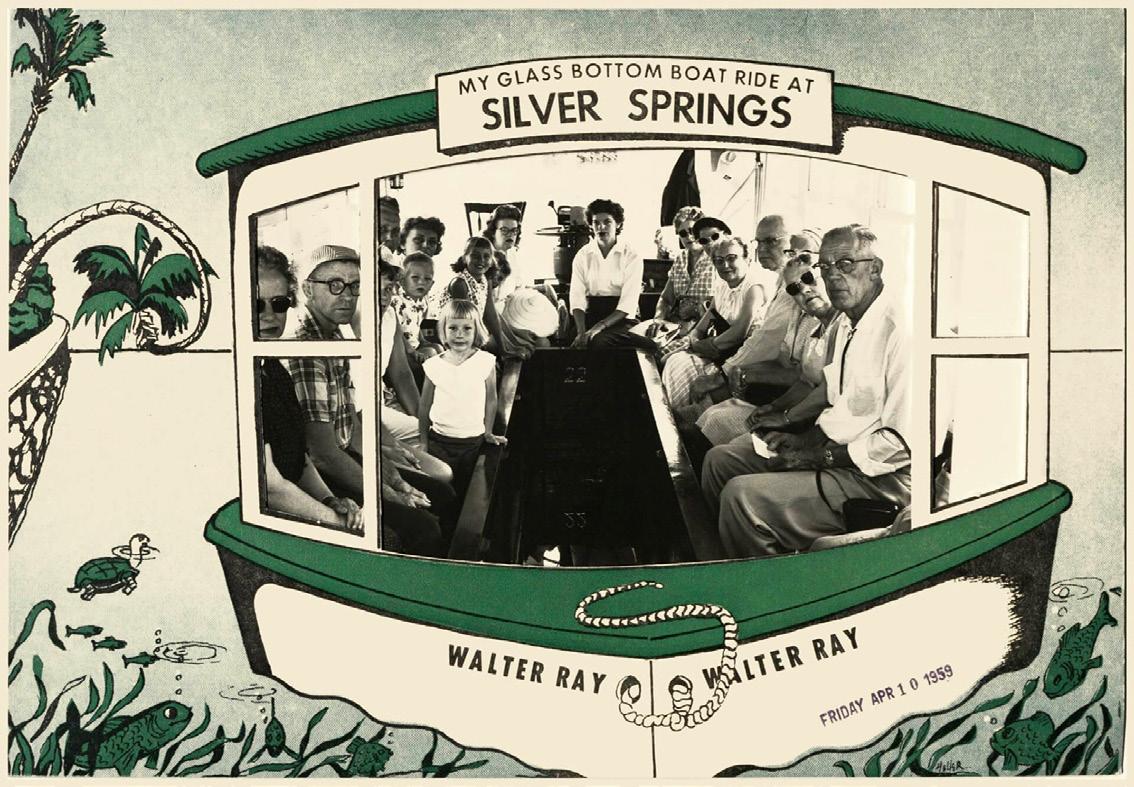

DAVID KYLE RAKES & COREY LEE STOCK
 OCALA
OCALA
C. Ed Carmichael was born in Union Springs, Alabama on October 8, 1869. C. Ed evidently did not like his first name “Columbus” and went by “C. Ed” his entire life. In 1889 in Ocala, when he was only 19 years old, he met and married 15-year-old Lulu Wilkins, the daughter of Robert and Wadsworth Eliza Wilkins. They had one son named Weller LaRue Carmichael, who was born in 1893. C. Ed’s son, Weller, was raised in the up-and-coming town of Ocala, nicknamed “The Brick City.”
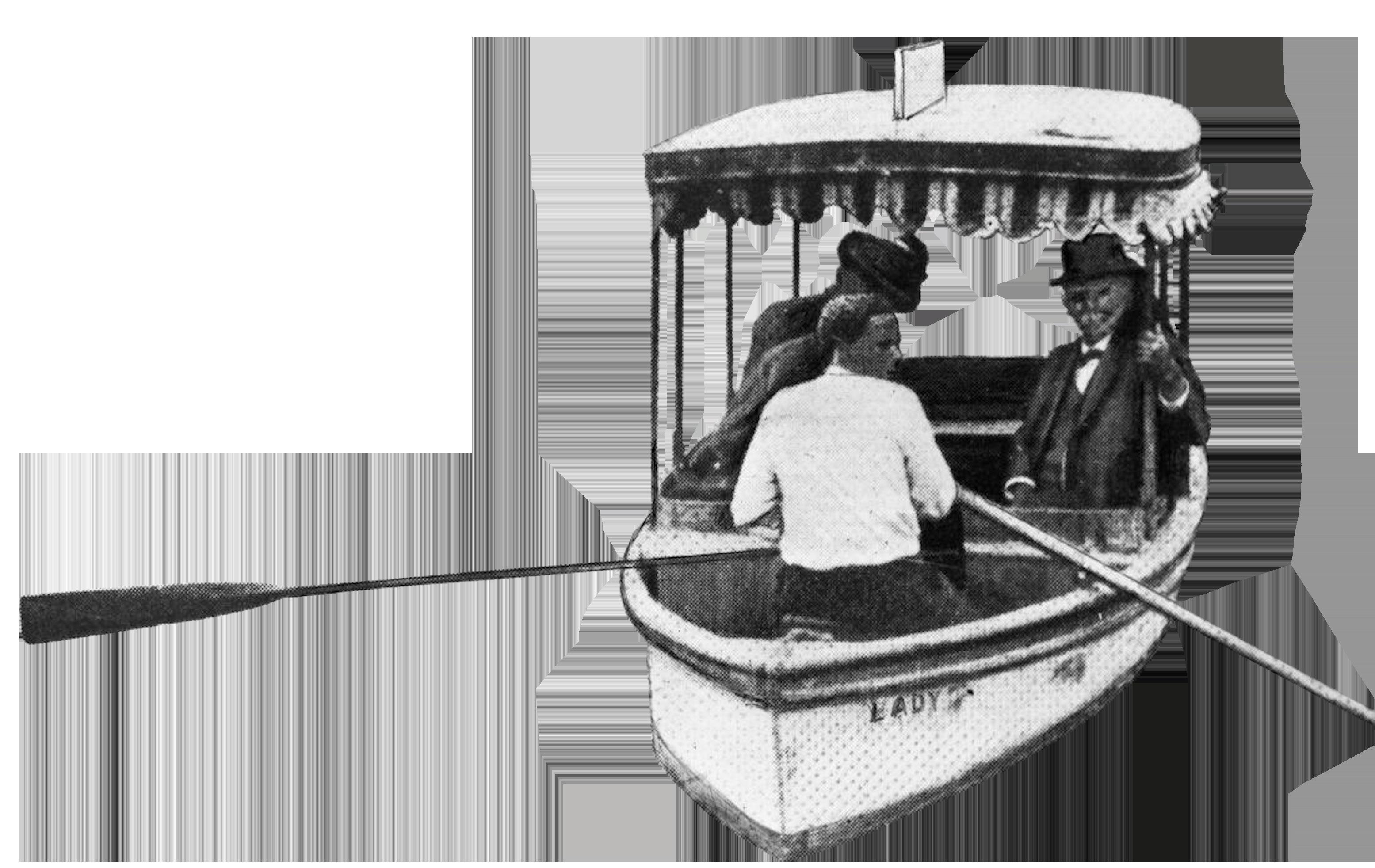
The town of Ocala is in the center of the state and was developed around the site of Fort King in
Three “The Carmichael & Son Co. Ocala, Fla.” jugs with copy inside a thin rectangle border. These jugs are all cream colored and come in two-gallon domes and cones, one-gallon domes and cones, and half-gallon cones.
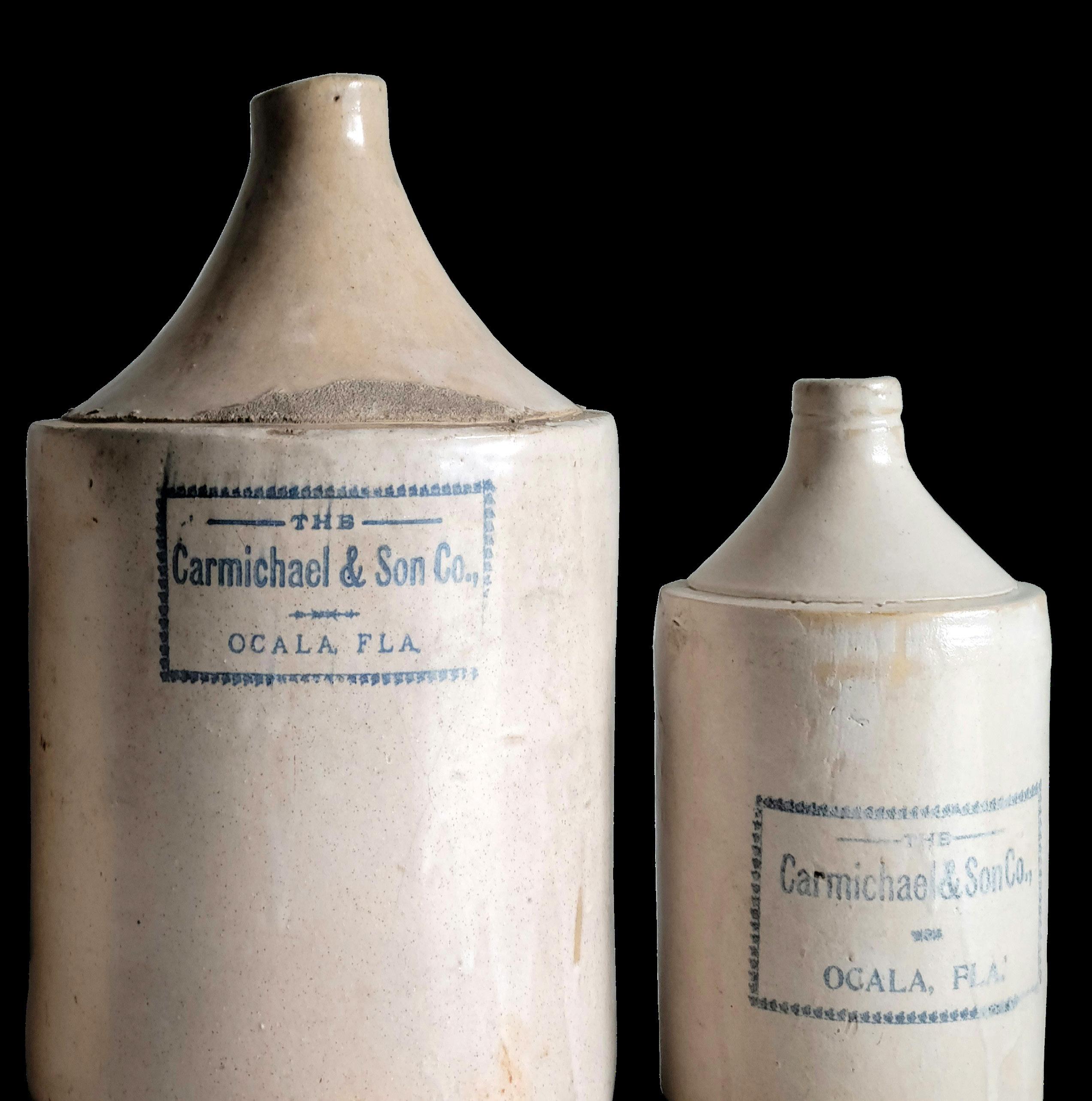
Ocala is located near what is thought to have been the site of Ocale or Ocali, a major Timucua village and chiefdom recorded in the 16th century. The modern city takes its name from the historical village, the name of which is believed to mean “Big Hammock” in the Timucua language. In the late eighteenth and early nineteenth centuries, Creek people and other Native Americans and free and fugitive African Americans sought refuge in Florida and the Seminole people formed.
After foreign colonial rule shifted between Spain and Great Britain and back again, in 1821, the United States acquired the territory of Florida. After warfare to the north, in 1827, the U.S. Army built Fort King near the present site of Ocala as a buffer between the Seminole, who had long occupied the area, and white settlers moving into the region. The Fort was an important base during the Second Seminole War and later served in 1844 as the first courthouse for Marion County.
The modern city of Ocala, which was established in 1849, developed around the Fort site. Greater Ocala is known as the “Kingdom of the Sun.” Plantations and other agricultural development dependent on slave labor were prevalent in the region. Ocala was an important center of citrus production until the Great Freeze of 1894–1895.

about 1849. In 1881, a rail service helped to bring in commercial trading. In 1883, much of the town was destroyed by fire and was soon rebuilt using brick, granite, and steel. By 1888, Ocala had so many brick buildings it became known statewide as “The Brick City.” Also, at this time, the town experienced a period of economic growth, and the population swelled to almost 3,000, making Ocala one of Florida’s largest towns. With the discovery of phosphate in Marion County in 1889 to 1891, the city continued to grow and prosper. This booming economy must have been very attractive to the Carmichaels and others who dreamed of starting their own businesses.

George became a local businessman in Ocala and soon became involved in the commerce and political life of Ocala. In 1891, he was selected as an Alderman. One of the things he did as an Alderman was to travel to Jacksonville to interview “General Manager Maxwell of the Florida Central and Peninsular Railroad line” for plans to build a new passenger depot in Ocala. The meeting must have gone well since the newspapers reported, “It will cost $10,000, and its construction will begin soon. The passenger and freight depots will be entirely separate, and no track will impede their southern approach.”
In July 1895, The Carmichael & Son Company and Acme Brewing Company of Macon, Ga., opened a new ice factory in Ocala that could produce twenty tons of ice per day. A few months later, in September, another ice factory was built by Acme Brewing Company with a ten-ton capacity. The Acme Brewing Company had erected both ice houses for their agents Carmichael & Son. The latter’s saloon could have boasted they had the coldest beer on hand with all that ice.
In 1895, The Carmichael & Son Company advertised their Montezuma Exchange was for sale. They announced the business was in a “first-class location and established trade. Good reasons for selling. For further information, call the Acme Brewery Company, Macon, Ga., or address us at Ocala, Fla. Carmichael & Son.”
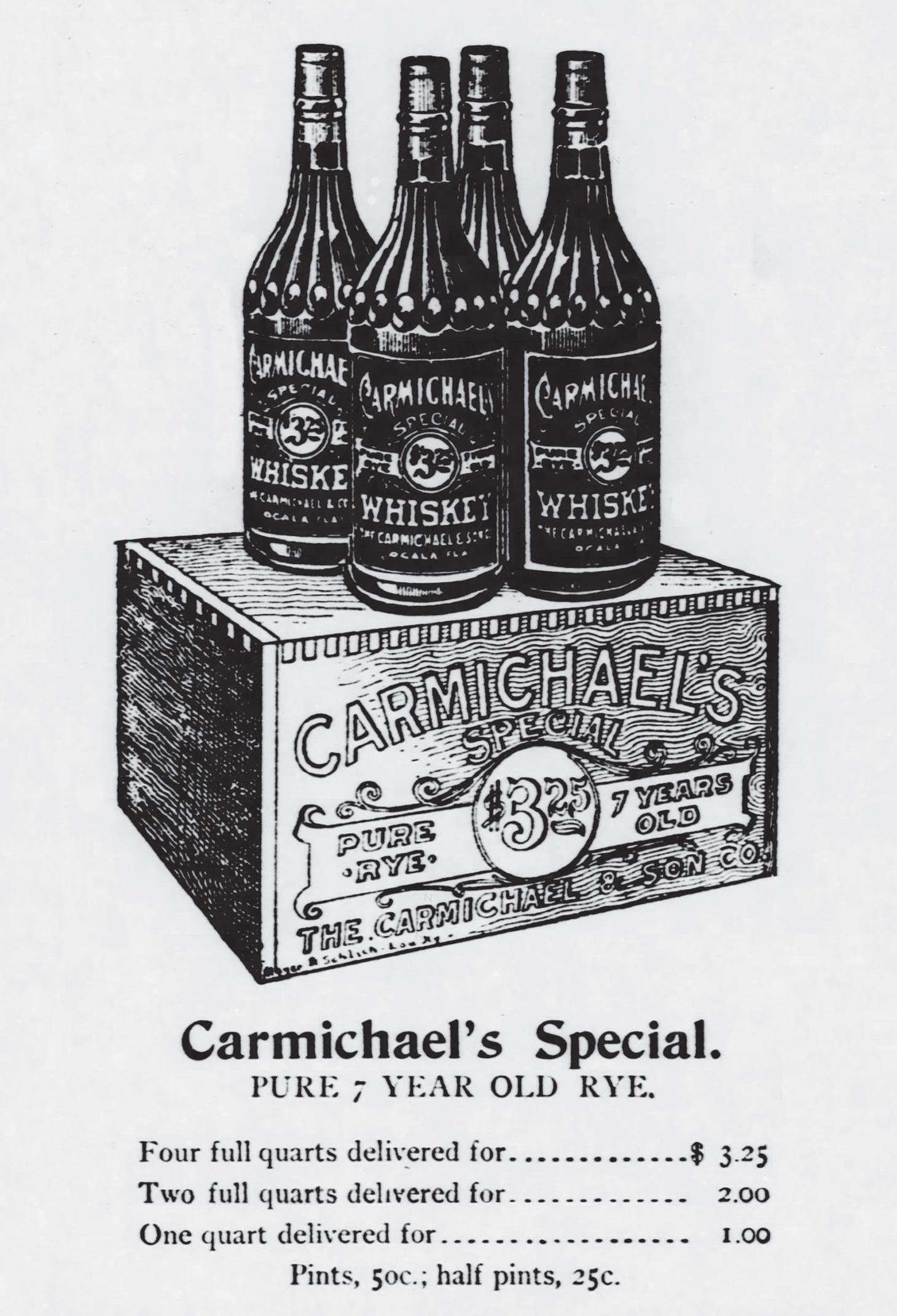
It would take six years before the Carmichaels would sell their Ocala saloon. They sold it to H. Strauss & Co. of Dunnellon in 1901. “Maurice Strauss, who was manager at the Dunnellon store, would become full time manager of the Montezuma Exchange saloon.” One of the reasons for selling the saloon was the prohibitionist movement in Ocala in 1899. Business was so bad it had forced the Carmichaels to sell off stock which was various alcoholic beverages. It sold “for $1,050 to satisfy debts, by the Marion County Sheriff, in front of the county courthouse.” The alcohol stock was sold to William LaRue Weller, a well-known Kentucky whiskey maker who was a winter resident of Ocala. William LaRue Weller died suddenly of a heart attack in Ocala in 1899. He must have been a good friend or business acquaintance of George and C. Ed Carmichael, and there can be little doubt C. Ed’s son, Weller LaRue, named his son after him.

The Carmichaels sold their share of the Montezuma saloon and were now free to open their own businesses. In 1901, they opened The Exchange Café, an oyster and restaurant business. The proprietors claimed to have “an experienced oyster cook that serves oysters in all styles at all times of the day or night. Western steaks and all kinds of lunches or meals served at all hours.” They also
Antique Bottle & Glass Collector
had on hand “fresh Georgia country butter.”
Additionally, they opened “Ed’s Place Saloon at McGrath’s old stand at West Side Square.” The Carmichaels announced that they had “Rebuilt and Newly Furnished” and dealt in “Fine Wines of All Kinds for Family Use. High Grade Whiskies, Brandies, etc., Beer, Ale, and Soda for Family Trade. The Purest Liquors Obtainable Are Kept by Us. Skilled Bar Tenders. Courteous Treatment to All,” with separate bars for white and colored.
The Carmichael & Son Company was the name of their firm, which also included a wholesale liquor business. The distillery was located “on the southside of Ocala’s downtown square, on Broadway between Southeast First Avenue and Magnolia Avenue.” They advertised they were “Wholesale and Retail Dealers in Beer and Importers of and Dealers in all Kinds of Wines and Liquors.” Their business included a fully stocked grocery store with free delivery.
There are at least eight different “The Carmichael & Son Co.” stoneware advertising whiskey jugs. It seems likely that all the liquor was distilled on the premises and sent out in these stoneware jugs by rail. There are one-gallon and three-gallon cream colored jugs with dome tops that are stenciled, “THE CARMICHAEL & SON CO. OCALA FLA.” Another jug type is stenciled, “THE CARMICHAEL & SON CO. OCALA, FLA,” inside a thin rectangle border. These jugs are all cream colored and come in one and two-gallon domes and cones, and half-gallon cones. The onehalf gallon cone jug also comes with a dark top.
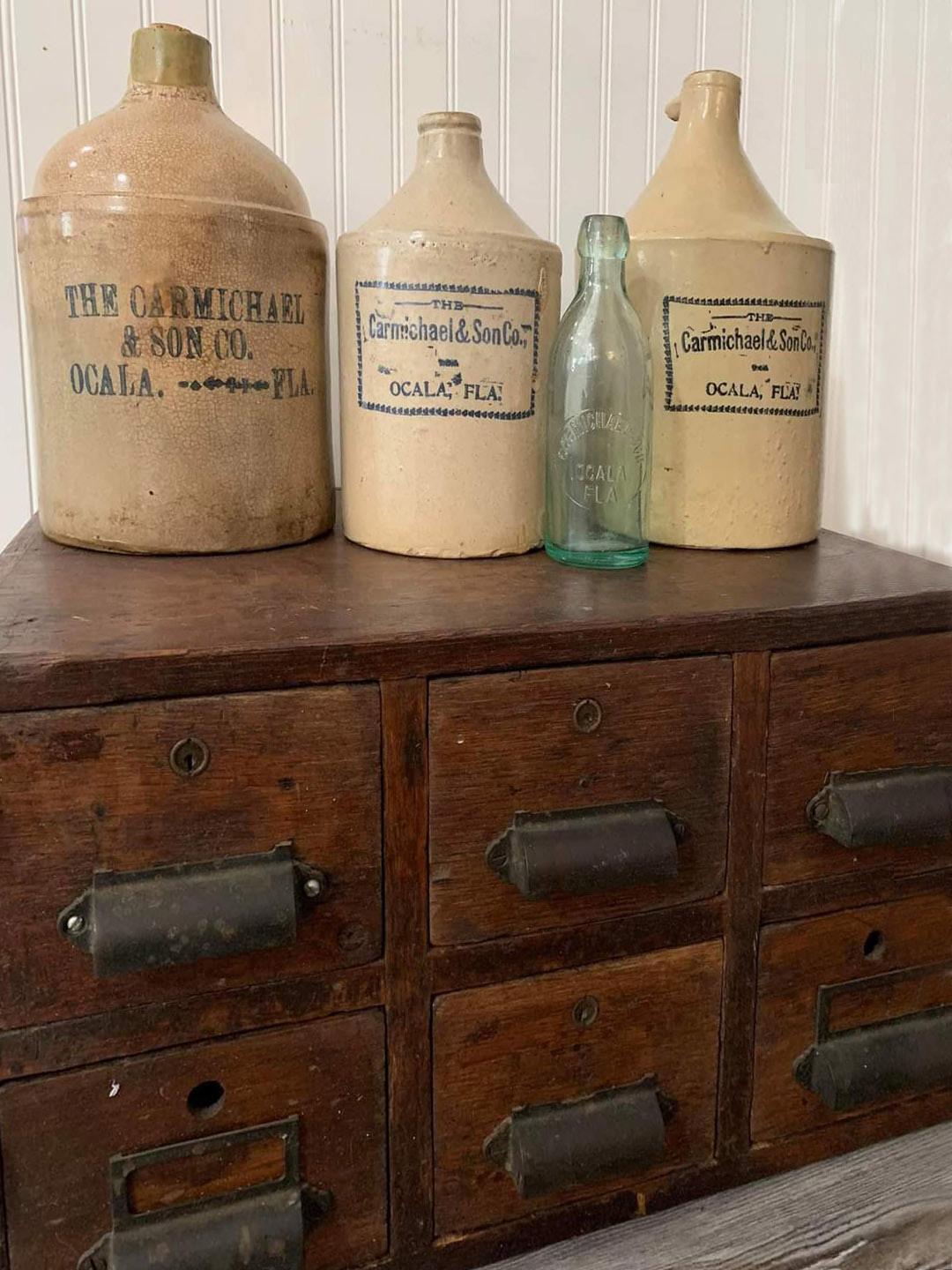
In 1900, Carmichael & Son Co. reformed their business through articles of incorporation. It was described as “conducting a general mercantile business, bottling, and handling of soda waters and other drinks, buying and selling real estate.” The company’s real estate was composed of 11 properties.
One type of soda water bottle was made for the Carmichaels and I am not sure when it was made. The bottle is aqua, with a blob top, smooth base, and embossed in a slug plate, “The Carmichael & Son / Ocala, Fla.”
After being in business for over a decade, the company moved in 1911. They had purchased the business of J. M. Tison Company, a building next door to the Arcade Barber Shop and Pool Room on North Magnolia Avenue. With the relocation of Ed’s Place Saloon, the Carmichaels advertised that they had “rebuilt the interior and replaced the old furniture with Florida product, every piece built in Ocala, and I say without fear of contradiction, I have the prettiest and most up-to-date Saloon in the State. My Motto is, Don’t Drink, but if you will call and C. Ed will get the best on Earth to eat, drink and smoke.” The Carmichael restaurant, he said, was “first class in every respect, don’t forget the name and place.”
George continued his efforts in Ocala commerce and became Marion County commissioner in 1912 and then Board of Trades on the Board of Governors in 1913.
In 1912, The Carmichael & Son Co. enterprise had outgrown itself again. The company announced they would be demolishing their one-story businesses on North Magnolia Avenue to build a two-story brick building with “five elegant stores in front,” with the upper portion being used as an “immense storehouse.” The interior of the buildings would be warehouse space and a saloon placed on the corner. To the rear of this building, another large warehouse building would be erected where it faced the railroad making it easily accessible to remove freight.
The Carmichael & Son Co. wholesale and retail liquor business was running out of this new building on North Magnolia Avenue, which was ideally located opposite the Seaboard Station, a passenger railroad line to Anthony, Silver Springs, and other locations. “G. A. Carmichael was listed as president, C. Ed Carmichael, secretary-treasurer.” A 1912 newspaper advertisement for The Carmichael & Son Co. lists a plethora of alcoholic beverages for sale and claims they are “Florida’s Largest and Best Equipped Mail Order House” and “The House with a reputation.”
Like his father, C. Ed also had a vested interest in Ocala and served “for many years as one of the first chiefs of Ocala’s volunteer fire department.” In 1906, the wealth he had accumulated from his businesses allowed him to purchase land surrounding Silver Springs. The spring is located six miles east of Ocala and is the headwater of the Silver River, one of the largest artesian spring formations in the world, and part of the St. John’s River System. The spring daily produces nearly 550 million gallons of crystal-clear water.
gained momentum again, he began thinking of it as a tourist place. By 1908, he had the Silver Springs freight depot and other buildings torn down so he could build a large bathhouse facility for men and women. These folks were coming to Silver Springs for swimming, sunbathing and glass-bottom boat rides.
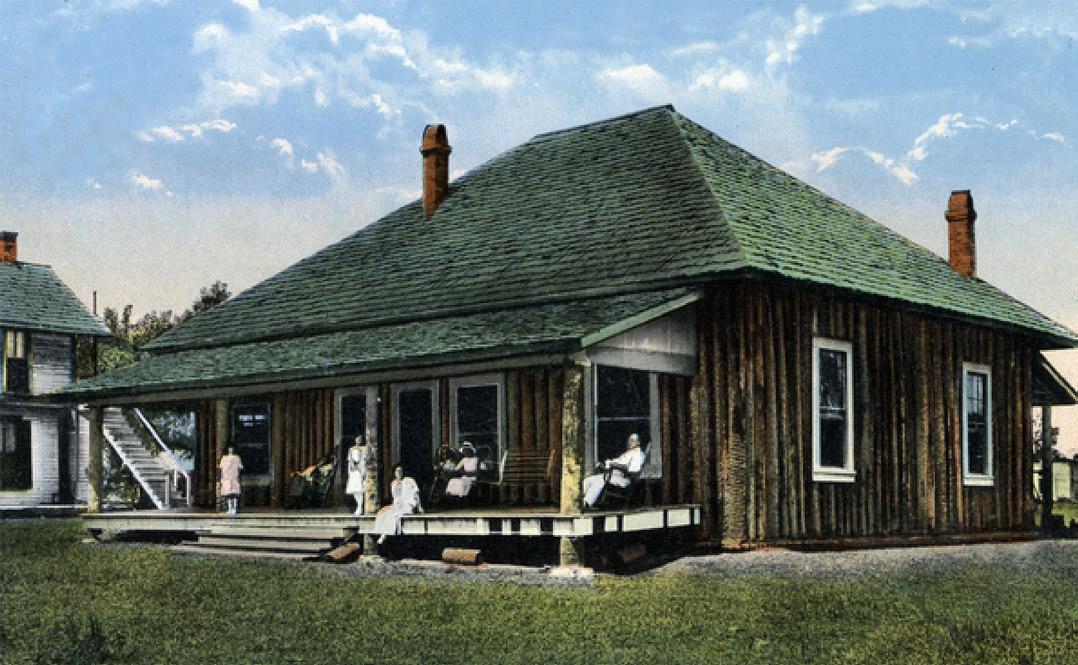
The original glass-bottom boat was invented in 1878 by Hallam Jones at Silver Springs. He had built a rowboat with a glass bottom for his own amusement to enjoy the underwater scenery at the springs. Soon a few others had made glass-bottom boats to experience the sights at Silver Springs. In 1901, Frank Brown, an Ocala mail carrier, began building rowboats with seven-foot-long glass bottoms and supplying them to others.
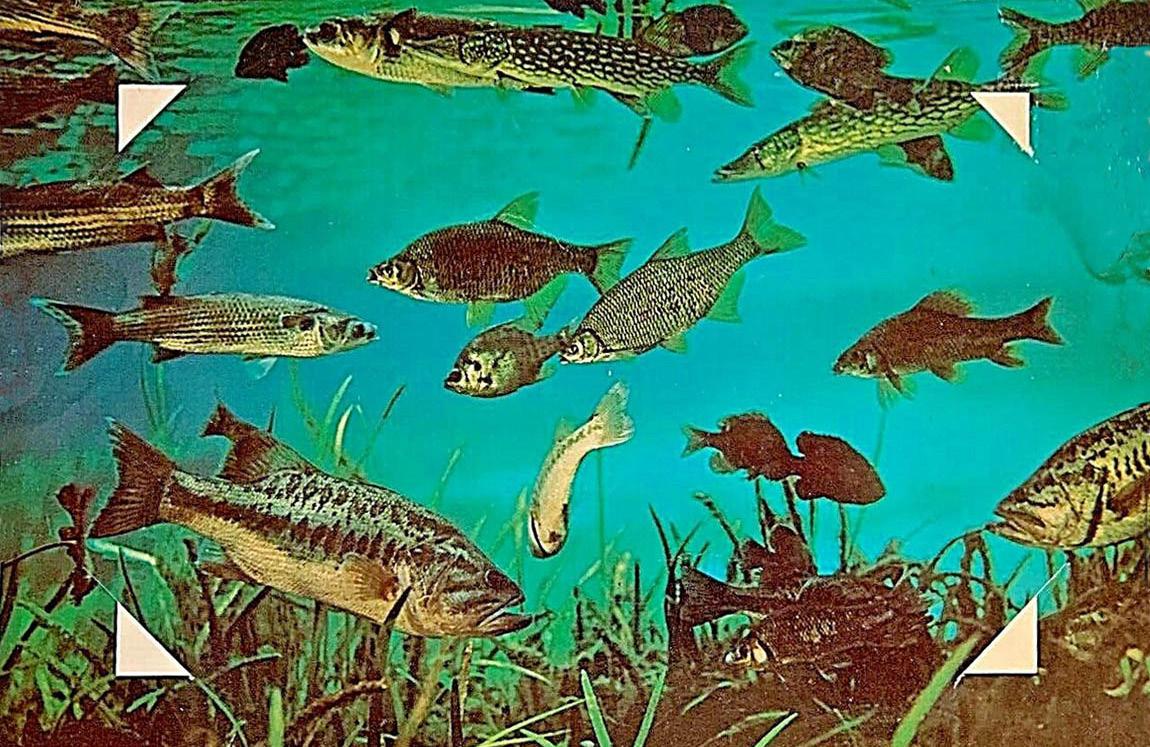
In 1914, records indicate that C. Ed was managing a glass-bottom boat tour at the springs. He had launched a new glass-bottom boat that seated 20 passengers and hired a captain to guide and pilot the boats over the springhead and down the river to other smaller springheads.
Additionally, in 1914, “C. Ed Carmichael of Ocala, his son Weller Carmichael of Silver Springs, and Charles Rodoff of Palatka formed the Silver Springs Company, a steamboat tour business taking tourists on daylight trips.” The steamboat made three round trips a week between Silver Springs and Palatka. The steamboats were operating at full capacity and Carmichael was making plans to add a sister ship to keep up with the demands.

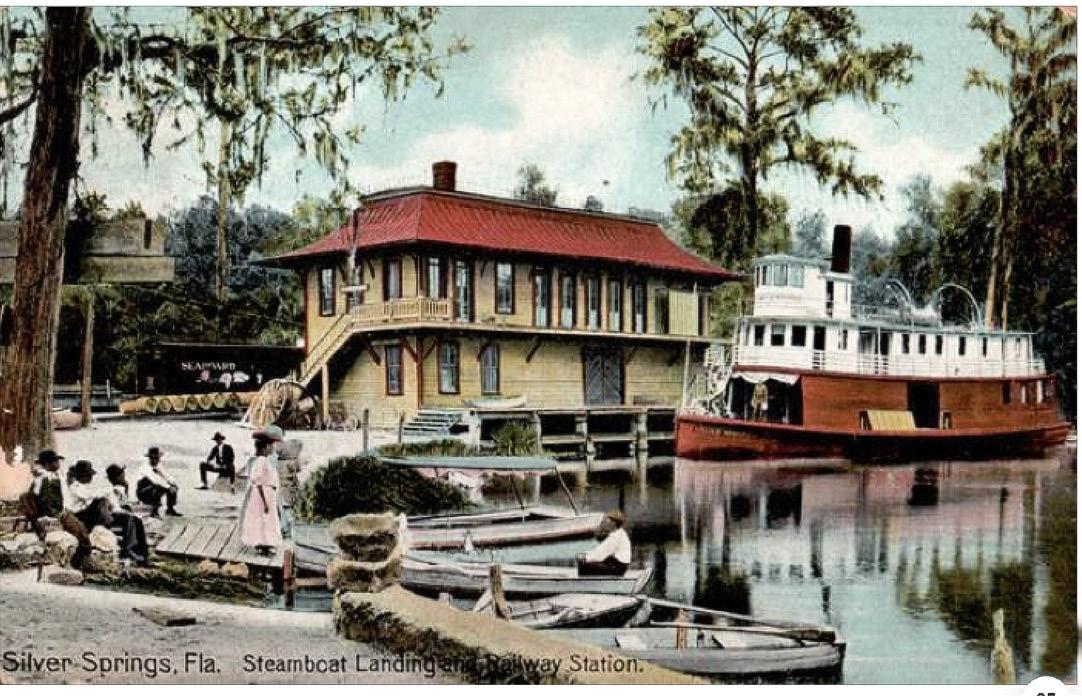

On November 29, 1915, George A. Carmichael died in Ocala at the age of 70 and was buried in the Woodlawn Cemetery. Ironically, his death coincided with Marion County voting on a referendum to ban all alcohol sales in the county. The Carmichael & Son Company, makers of wholesale whiskey, were officially out of business. C. Ed left Ocala and moved to Silver Springs, where he “built a house made of bamboo at the edge of the water.”
Fortunately, C. Ed escaped financial disaster when prohibition shut down his whiskey business by already establishing Silver Springs as a resort and attraction. In 1916 the newspapers reported, “T. T. Madden, guide and pilot of the glass-bottom boat at the attractions of Silver Springs. Mr. Madden, an excellent captain, who shows visitors the underwater springs.” In 1917, C. Ed placed a newspaper advertisement announcing, “See Silver Springs through the glass-bottom boat. Scenery not to be had in any other part of the United States. Largest flowing and most beautiful spring in the world, something that can’t be described or exaggerated; real geysers under water, the Blue Grotto, Bridal Chamber, Florida Snowstorm, Ladies’ Parlor, and other beautiful spots too numerous to mention. Price $1.00 and $1.50; children under twelve years of age half fare. If dissatisfied, money refunded. C. Ed Carmichael, owner and manager.” He even had plans to build a large hotel to accommodate travelers.
However, C. Ed and his wife were having troubles. Perhaps Lulu missed living in the city and was not happy living on the banks of the spring. They would divorce and C. Ed shortly afterward would remarry a second time to Helen Hoag, a schoolteacher. C. Ed, at the time of his marriage to Helen, was 51, and she was 32. The couple would later have two children, Ned Carmichael and Susan Carmichael.
In 1921, before the children were born, C. Ed was reported to have had some health issues. His doctor ordered him to take a trip out west to put him in better health. Many eastern doctors back then were prescribing trips to the arid west to help their patients deal with allergies. Whatever C. Ed’s health problem was, it was enough to have him plan a trip out west.
The ingenious C. Ed turned his ton-and-a-quarter REO Speed Wagon into a bungalow on wheels and set out for Arizona and New Mexico. His driver was Shorty Keefe who “looked to be about seven feet tall and who doubled up considerably to get inside the house car.” The car was really the ancestor of the pickup truck and the initials of its founder Remson Eli Olds. C. Ed had McGough Motor Truck Co. install an “ice chest, kitchen cabinets, kitchenette, two oil stoves, two clothes lockers, beds, rockers, chairs, 40-gallon stationary washstand, and six lockers for various other things. The furniture included one willow rocker, one willow straight chair, three folding chairs, lounging chairs and two folding card tables. The house on wheels has eight windows and two doors, all screened and furnished with curtains and draperies.” C. Ed was in no hurry to get to Arizona and New Mexico, and whenever he found a good camping place along the road, he stayed until he felt like traveling again.
The REO Motor Car Company in Lansing, Michigan, was impressed with how C. Ed made a motorhome out of their wagon and kept tabs on C. Ed’s trip to the west, releasing press reports to the newspaper. The REO Speed Wagon was “an attractive piece of Florida advertisement,” said. C. Ed, and “When we roll into a town, the people crowd around it like bees around a hive, we tell them about the wonders of Florida, Marion County, Ocala, and last but not least, Silver Springs.”
C. Ed reported that he was “having a delightful trip. Getting the very best treatment everywhere we go.” It was not reported if C. Ed made it to Arizona and New Mexico. All we know is that he returned to Florida. Perhaps he could not stand being away from his beloved Silver Springs.
In 1924, C. Ed leased his Silver Springs holdings to Ray and Davidson, “entrepreneurs who greatly expanded the tourist facilities.” The glass-bottom boats continued to be a favorite, “allowing people to see more than forty feet to the bottom.”
In 1936, C. Ed was the owner of Silver Springs Court, a collection of cottages on State Road 40 near the highway entrance to the attractions. Weller helped him run it to increase visitors to the park.
C. Ed Carmichael died on May 22, 1940, and was buried in Woodlawn Cemetery, Ocala, where his father was also laid to rest. He left his Silver Springs property to his wife and three children. Weller also got an orange grove on the Ocklawaha River.
Weller LaRue Carmichael was born on June 10, 1893, in Ocala. He graduated from Ocala High School and attended the University of Florida and Stetson University. He had helped his father run the Silver Springs attraction until it was leased, and then he got into the automobile business. Weller was married first to Mildred Madeline Mulhull and had two children, Virginia Wendell Carmi-
chael and Martha “Moppy” Carmichael. Weller married a second time to Bonnie Clarkson. He lived in the Ocala area his entire life and died in August 1967 in Ocala.
Ned Carmichael was born in 1923 and died on January 14, 2020, in Goolwa, South Australia. Ned married Margaret Allenbrand and had at least one child, Dan Carmichael.
Susan Carmichael McIntosh was born December 7, 1924, in Ocala and died October 24, 2018, in Gainesville. She earned a Bachelor of Fine Arts degree from the Chicago Art Institute in 1948 and opened a small art studio in Ocala where she painted and gave lessons. Susan and Ned’s mother, Helen Hoag, was born in 1888 and died in 1966.
In 1986, the Carmichael name surfaced again in Ocala when Ken DePasquale of Miami opened the Carmichael’s Family Restaurant located at 3105 Silver Springs Boulevard. The restaurant was named for C. Ed Carmichael and was quite popular for its homemade-flavored, farm-to-table fixings, including bread pudding and orange rolls. The Carmichael Family Restaurant was in business from 1986 to 2005.
The Carmichael & Son Co. advertising whiskey jugs are collectors’ favorites and reminders of the Carmichael’s historical impact on the city of Ocala. However, it was C. Ed’s glass-bottom-boat tours that floated over the transparent waters of Silver Springs that turned Ocala and Silver Springs into a major tourist destination for people from all over the world. An attraction so good that it has lasted 105 years and counting.
SOURCES:
Image of three Carmichael jugs on drawer cabinet. Picture courtesy of Thomas Puleo
Image of three “The Carmichael & Son Co. Ocala, Fla.” jugs, David Kyle Rakes collection
C. Ed Carmichael and the Making of a Tourist Town, Blog: Those Pre-Pro Whiskey Men! Jack Sullivan, December 11, 2016
Carmichael’s Family Restaurant closes, Ocala Star-Banner, by Carlos E. Medina, October 2018
Ocala Star Magazine, Historic Whiskey Men, by Nick Steele, August 2021
C. Ed Carmichael Obituary, Ned Carmichael Obituary, Susan Carmichael McIntosh Obituary, Find A Grave Weller LaRue Carmichael, Zach Mulhall Genealogy, online George Carmichael, 1870, 1880 census of Alabama; George as Alderman, The Morning News, July 1891

Carmichael and Acme Brewing, The Macon Telegraph, September 1895, Carmichael ice machines, The Morning News, August, and September 1895
C. Ed Carmichael Last Will and Testament, 1940
Carmichael steamboats, The Daylight Route, Ocala Evening Star, December 1914; Daylight Line, Ocala Evening Star, March 1914
C. Ed Carmichael trip west, Carmichael & Keefe are on their way, Ocala Evening Star, July 1921; Ed and Shorty are Rolling On, July 1921
Carmichael restaurant and saloons, Oyster Café Restaurant, Ocala Evening Star, November 1901; Montezuma Exchange Sold, Ocala Evening Star, December 1901. Ed’s Place Saloon, Ed’s Invitation, Ocala Evening Star, December 1911; Ed’s Place, Ocala Evening Star, September 1904; Carmichael & Son list of liquors, Ocala Banner, December 1912
Glass-bottom boats, Frank Brown making glass-bot tom boats, The Evening Star, March 1901;
T. T. Madden guide, The Ocala Evening Star, July 1916; Silver Springs Transportation Co.
Carmichael’s new glass-bottom boat, Ocala Evening Star, August 1914; C. Ed Carmichael Silver Springs glass-bottom boats, Ocala Evening Star, November 1917
 by Jeff Mihalik
by Jeff Mihalik
When I am not working, I am either digging a privy or out trying to get permission to dig. Getting permission to dig takes a lot of time and energy, and gas! The further away from home I go to get permission to dig, the more time I have to spend driving around hoping someone will be at the target property and interested in talking with me, and now with the cost of gas what it is, the more expensive it becomes. That said, since this is my hobby, the expenditures in time, energy, and money is just part of making it happen. Heck, I know a lot of other people who spend a lot more time and money going on vacations or a cruise, and I bet I have as much fun or more than most of them, LOL.
I have often written about, presented on, or discussed digging privies in multiple states within my region (i.e., the tri-state area of Pennsylvania, Ohio, and West Virginia). However, in one very memorable short period of time this summer, I was able to dig several privies in all three states!
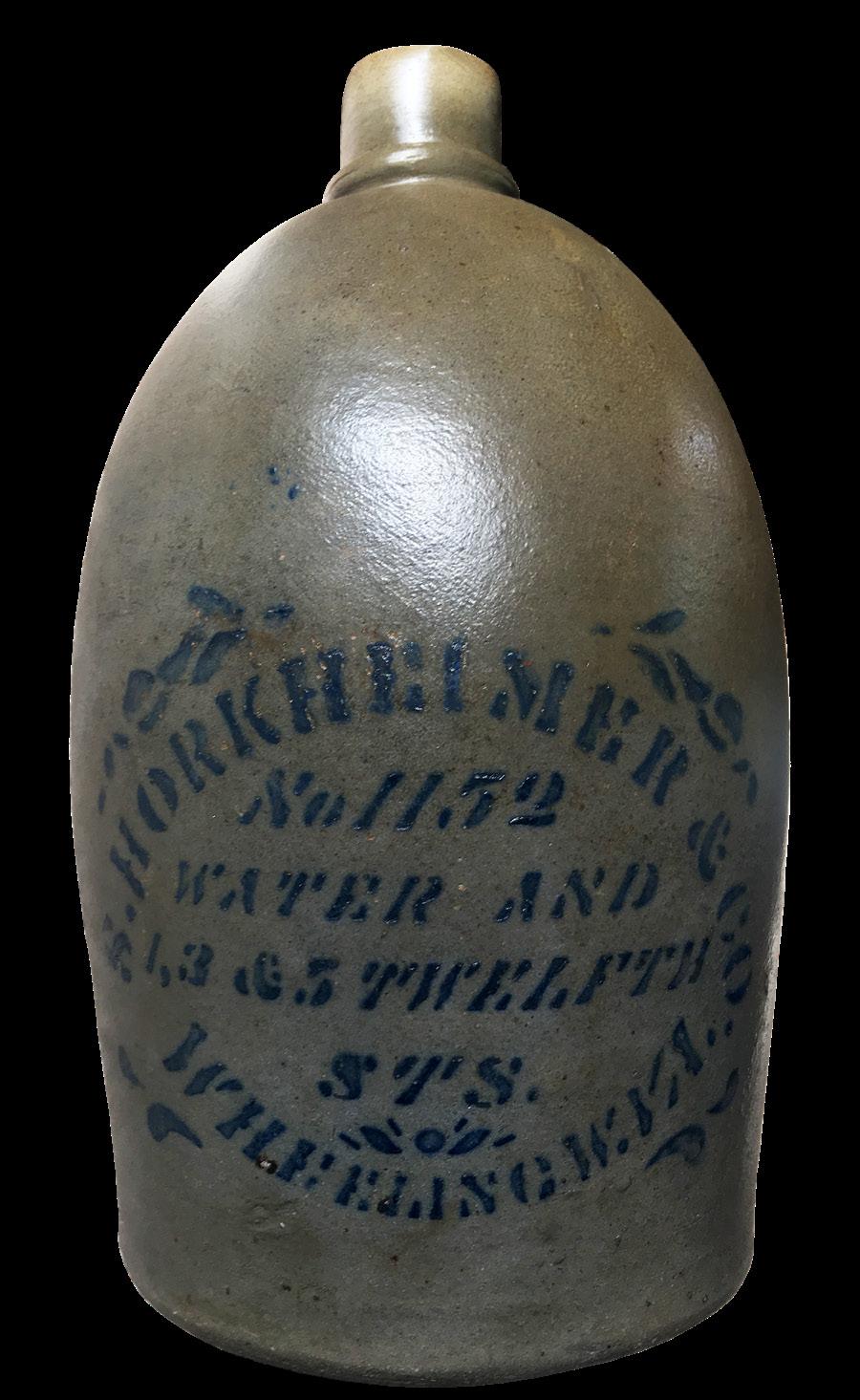
I had been working on getting this permission in Wheeling for several months, and finally, I was able to seal the deal. The property owner was somewhat older than me but very active and took nice care of his property. We had already probed out three privies that were all along the hillside. We showed him where we wanted to dig, and he had no problem with the privy locations. I was with Luke Yoas that Sunday, and we started to open up the first privy. It was a wood liner and probed to be about six or seven feet deep. In the upper fill, I hit something that made a hollow sound and slowed down my digging since, at this time, I was still using the long shovel. Seeing what appeared to be a jug, I switched tools to the short shovel to expose the jug. Clearing away the dirt and debris, I could see some blue on the handle, so seeing the handle and with blue, it was a great indication that the jug may be whole and stenciled. Sure enough, it was a nice local Wheeling “S. Horkheimer” merchant jug with advertising for their business. [Pic. 1]
We also found several other better bottles (hutches, meds, but nothing great). The pit across the walkway was similar sized, and once again, high up, we found a three-stripped jug. [Pic. 2] This pit also had a decent number of bottles, but again, nothing really worth mentioning. The third pit was right next to pit two, so we moved the tarps over and started to get at it. It was like 90 degrees, and we were beat, but we figured this pit had to be older, and it was. However, they were really hard on the bottles as they threw in many bricks and rocks to compress the trash. There were literally 50 historical flasks and many other civil war-era bottles broken up throughout the pit, and many embossed “WHEELING VA.” However, along one of the walls, I found a complete flask: a Louisville double eagle in aqua, the first complete bottle! [Pics. 3 & 4]
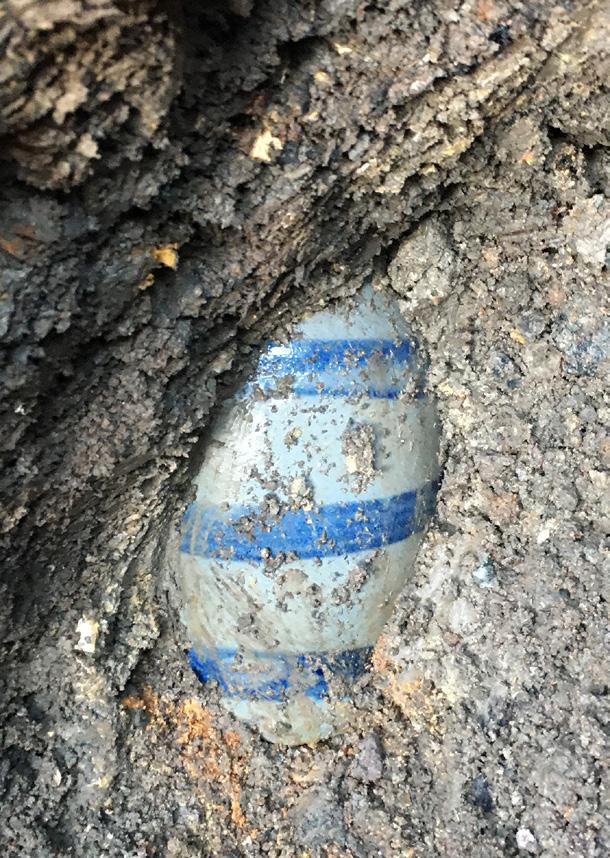
Along the wall was also a nice pontiled pepper sauce. Then I saw a black glass ale, ladies leg type bottle and dark aqua flask, and I knew from digging others they were local Wheeling bottles. The ale was embossed “L.S.” on the shoulder for Louis Snyder, and the flask was an “OLD RYE WHEELING VA.” They looked complete, but when I picked them up out of the hole, the ale had a small hole on one of its sides, and the flask was cracked in half. Heck, they are really scarce bottles, and not having a complete ale in my collection now; I was glad to find it. Part of a free-blown candle stick and many damaged scrolls flasks were also found. [Pic. 5] There were not many more complete bottles other than a really sweet miniature open-pontil Stoddard ink! [Pic. 6]

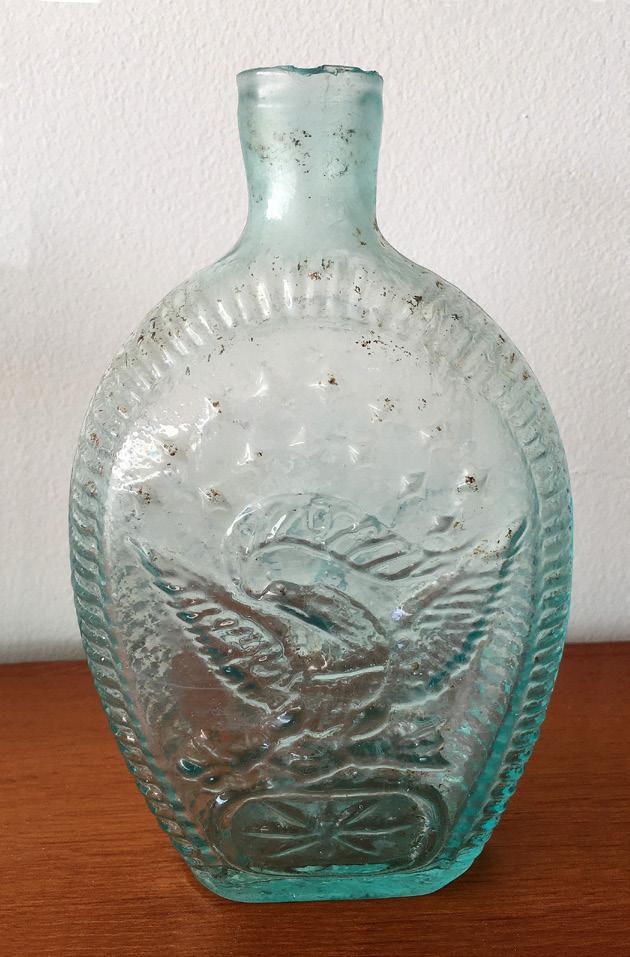
Later that week, I headed over to a small town we had been digging in Pennsylvania with some good success. However, being small towns, it is very easy to get through all the diggable lots quickly. One of our connections in this town mentioned that he knew a local historian in another local village just down the road and gave us his contact info. This town probably has like 30 total lots, with about half of those being favorable for digging (i.e., no buildings or parking lots in the back to cover over the privies). After making friends with the locals, we were allowed access to several lots that had homes and businesses that showed up on the 1876 map.
If you have ever dug in a small rural town, you know that they probably used outhouses into the 60s and I mean 1960s! But we soon figured out a couple of good ways to distinguish them, one being that the older privies were not sinking like the newer ones, and you had to probe all areas (not just sinking spots in the yard) to find the pre-1900 privies. I learned this after opening up several 1930-1940-era privies, but I did get a nice local milk! I soon found spots on two lots that I suspected were older. After opening up both of them up, I was stoked to find 1880 glass in the first couple of feet, and they both went back to about the late 1860s or early 1870s. One of the pits was maybe four feet deep and they liked to toss rocks into this one, too. [Pic. 7] I did find several complete bottles in both pits, nothing spectacular but nice finds nevertheless, including four “Baumans Boss Blue Liquid, Pittsburgh PA.” in aqua and clear [Pic. 8], early (just missed being

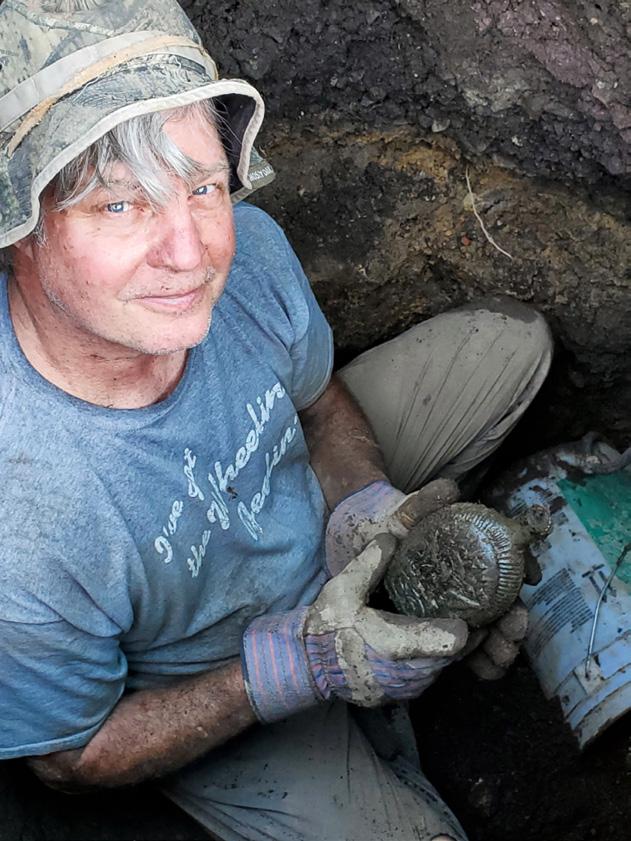
pontil) Pittsburgh medicines from “Henderson, Fanstock, and Sellers,” a “Burdock Blood Bitters,” chemist and apothecary bottles—one being a nice cobalt blue with “A X X” embossed on the base; and several local–regional embossed drug stores. The unusual items included a large end-of-day shooter marble [Pic. 9]. It has issues, but it’s the largest shooter of its type I have ever seen and a clear pharmacy bottle that was full of mercury, and it was heavy! The property owner’s son, who was in his 50s, was there when I dug it and said he really would like it. I supposed he was into Alchemy, so I gave it to him, but I did warn him not to get it on his hands and that it was potentially poisonous.

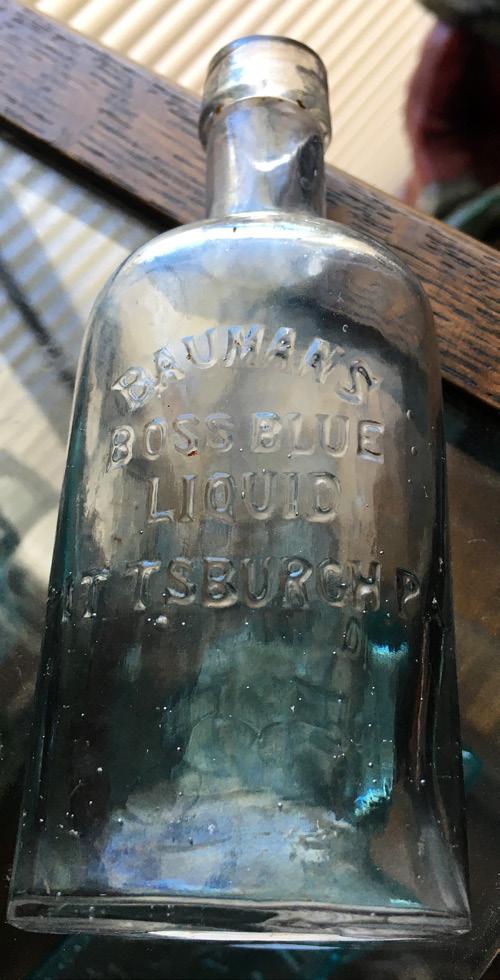
The weekend was coming up, and after doing a 20-mile bike ride in Lisbon, Ohio, I drove around a few spots I still knew were not dug, or at least I had not dug there. I’ve been digging in Lisbon for 20 years now and have dug over 150 privies, and know of two other digging groups who have also dug there over the years, so good spots to dig are very limited now. I lucked out as the homeowner was in the back by the garage, painting. We discussed what I wanted to do and where, and he seemed OK, but since the digging spot was between his yard and the neighbors, he wanted me to talk with the neighbor, too. The neighbor wasn’t home then, but the garage was open, and his lawn-mower was in the driveway getting repaired, so I knew he was local. I drove around town and came back an hour later and, again, lucked out as he was in the yard. He was OK with me digging!
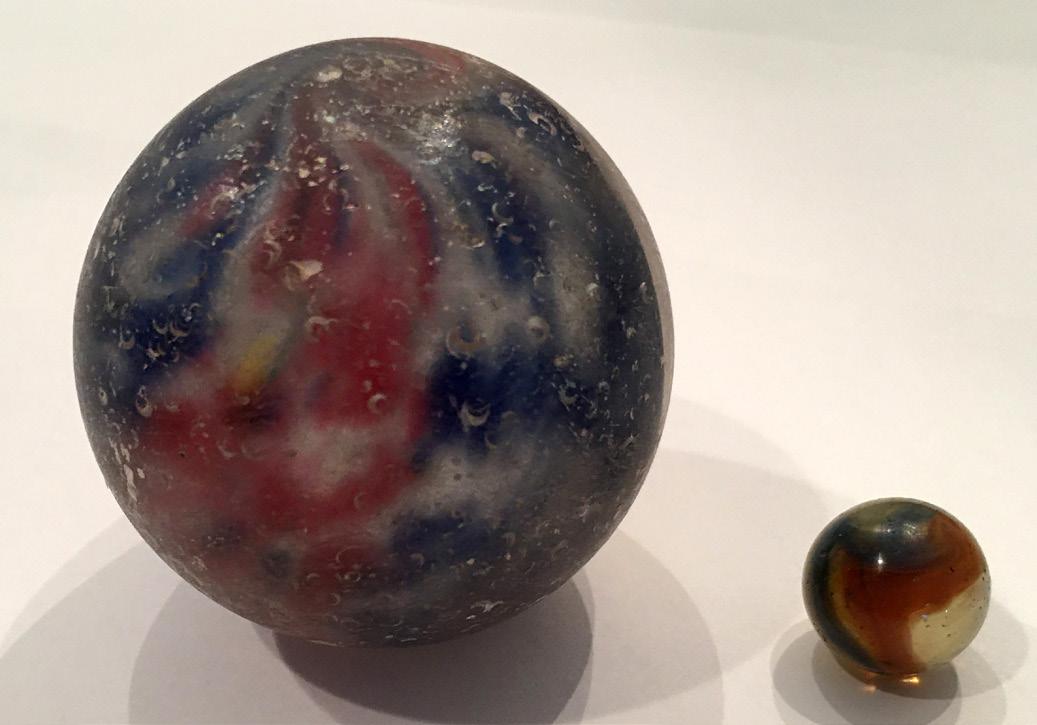
The house that used

this privy has a historical marker from the 1840s, so I was excited. I opened it up and started to dig in. There was a lot of rubble on the top (rocks and bricks), so I had to remove all that before I could really get moving. Going towards the neighbor’s yard, I found the privy wall, and it was brick! However, that wall was in bad shape and missing bricks and caving in, so I had to keep most of the dirt on that side of the pit intact. I exposed another wall, and it looked in good shape. [Pic. 10] It was mostly all ash after the rubble layer, so it was easy digging for the most part.
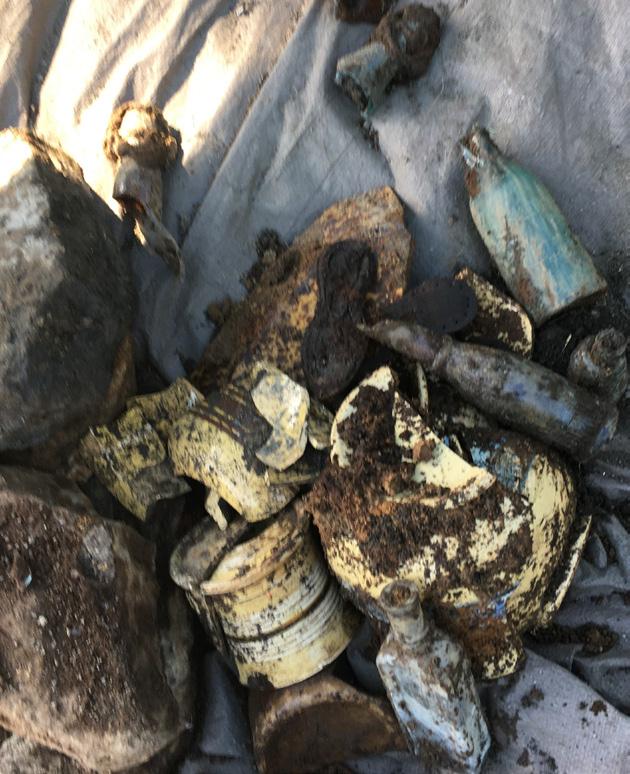
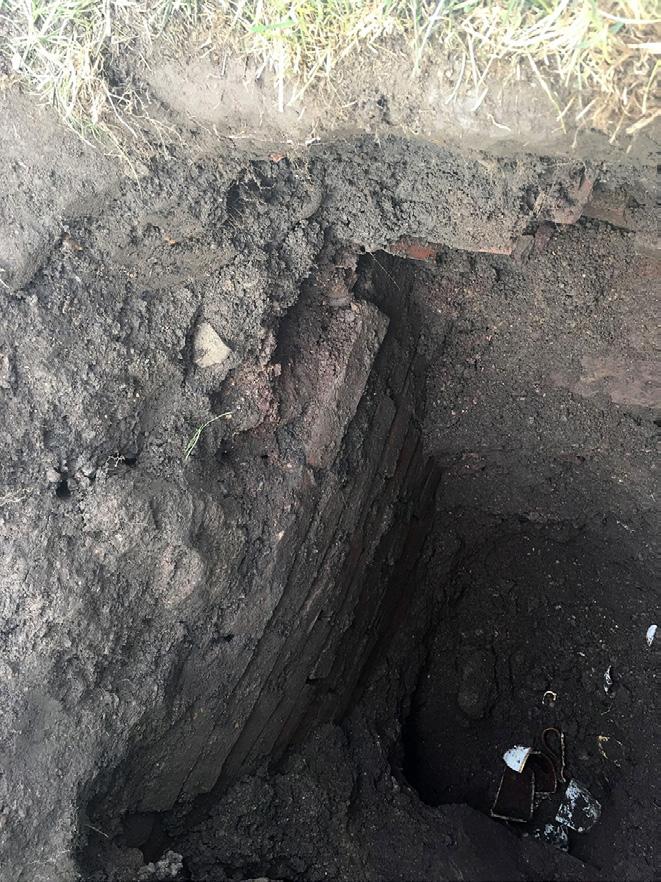
The first whole bottles out were several “Porters Cure of Pain Cleveland O.” [Pic. 11] OK, a good age to start, but I suspected this pit to be pontil age, so I dug a test hole in one corner. Wham! Up comes a nice pontil medicine, “Barrells Indian Liniment.” I probed the pit, and it went another several feet! That was the good news. The bad news was that two side walls were in very bad shape and the only way to do this right would be to take all the bricks out of the wall for several feet. The property owner was there at that point and asked that I not remove the walls as he feared it could lead to a cave-in or compromise the site over time. I very reluctantly agreed. Oh well, that is how it goes sometimes. After filling it in, I found a wood liner next to it, so I will work on making sure I can dig that spot. There was some concern that the family pets were buried near this area, and the property owner had to discuss it with his adult son. Fingers crossed!
So there you have it. One week, a lot of driving around, a bike ride, and six privies later, I had some nice bottles from three different States!
collection
discuss consignment options for your
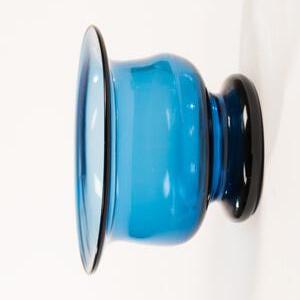

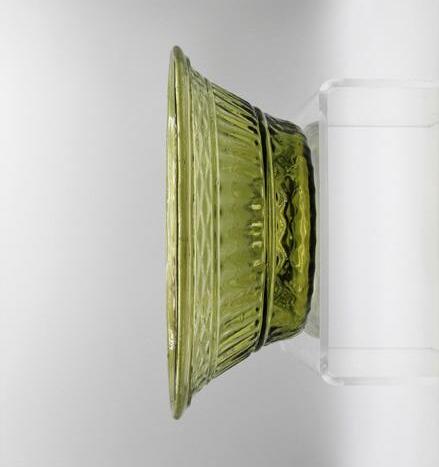
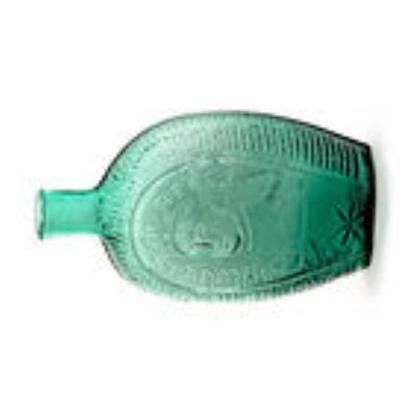

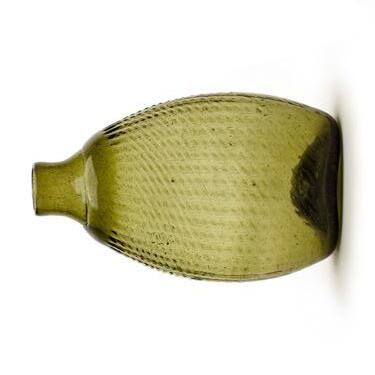





or entire singular item, group, May – June 2023 31
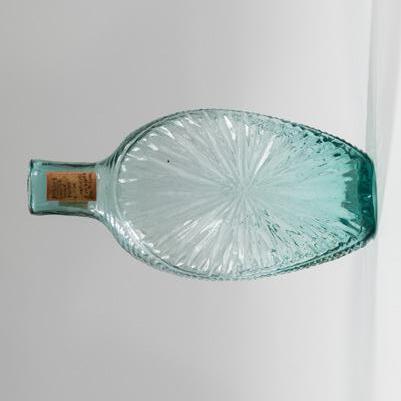
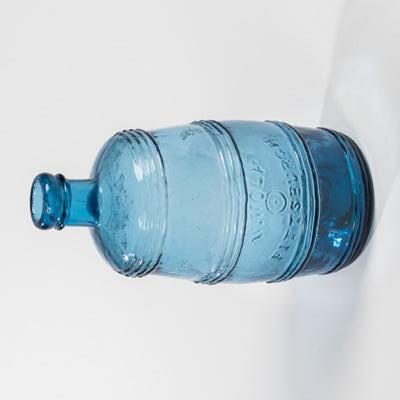

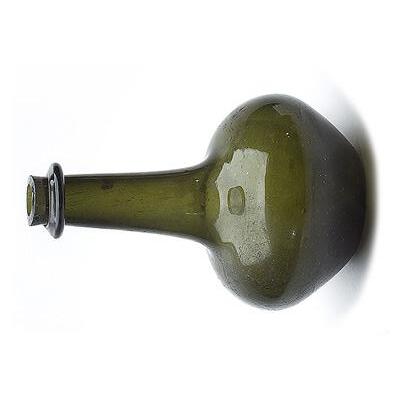



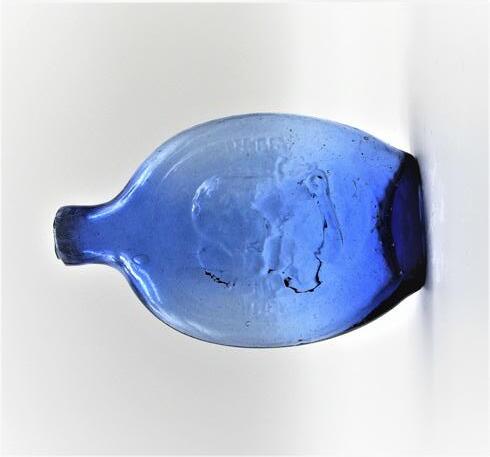
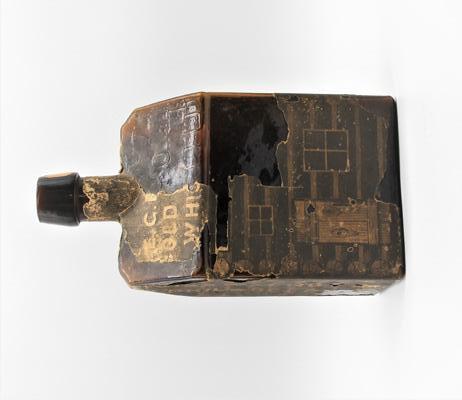
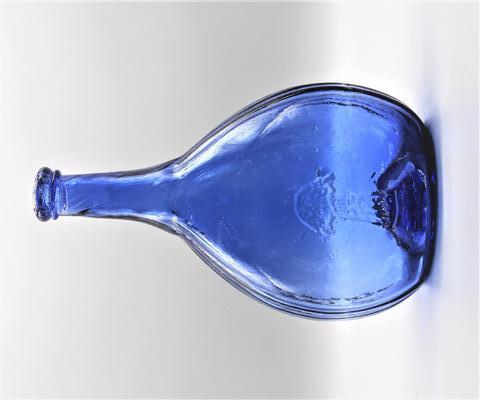
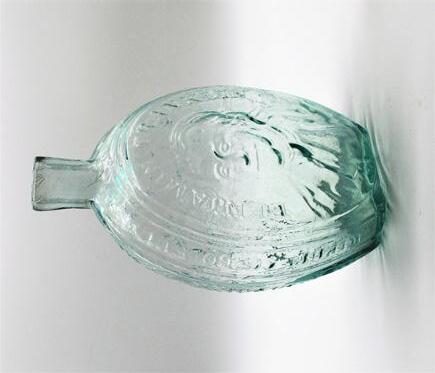
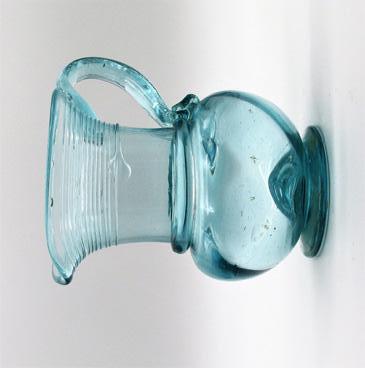
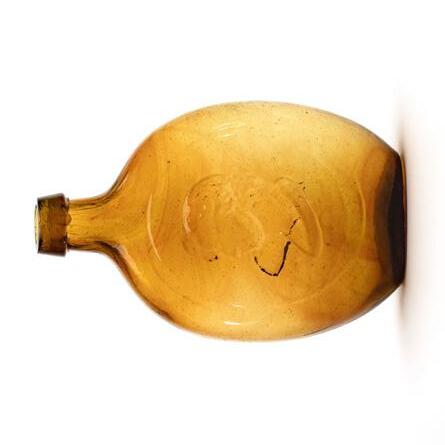
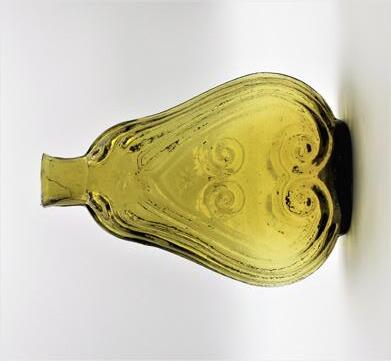
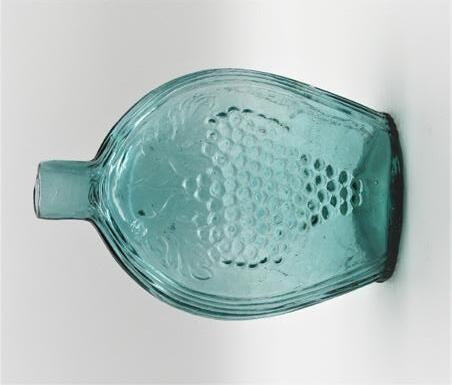

to
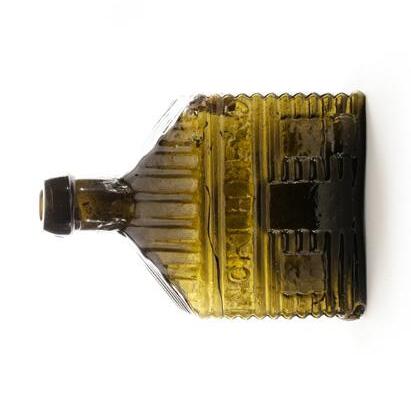

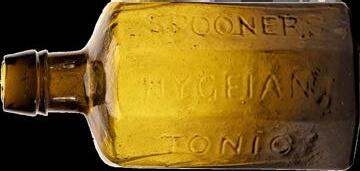
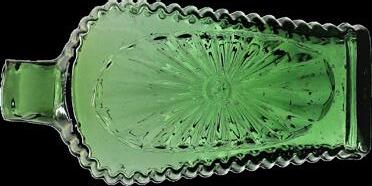
What’s new, nuts, nice and interesting? OK, after another morning of scanning the often odd world of collecting, I share this with you...and with my apologies.
So, this morning on my computer Live Auctioneers said I have “60 new auctions” to follow. (Note: That’s a low number since it was Christmas week when I started writing this.) And, two days after Christmas, a note from “Jasper52” warned me that “6,700 + lots” were ending that day on the Internet. Also, eBay alerted me that 71 NEW ketchup items were listed that day. I will never catch up.
J.R.R. Tolkien once wrote: “Not all those who wander are lost” this does not exclude those of us who spend too much time on the Internet. I glanced through a few of the auction items—as usual, perusing the world in my bathrobe—and passed on most of them, including:
Paintings of “Ukrainian Winter Landscapes!” Sorry, we have no wall space left, and being from Michigan, and it’s January, we have our own winter landscapes.
And, since I collect toilet ephemera—primarily hundred-year-old rolls of toilet paper—odd things pop up on my computer. Today there is a chance to buy an “original toilet seat from the Grand Trunk (R.R.) car ferry, the S.S. Madison (Manitowoc).” Since I love doing research (and I have a patient wife), I JUST spent a few minutes to find out more on what floats my interest: The S.S. Madison was one of six ships built to the same design by the Manitowoc Shipbuilding Co. In 1927, she entered service for the Grand Trunk just before the start of the Great Depression. She was built to replace a ship lost in 1929 in a storm with all hands.
And, the Madison has the distinction of “having been christened with a bottle of Wisconsin milk, instead of the traditional champagne.” In 1976, the ship was taken out of commission, and in 1989 was scrapped. (And what strange butt-head decided that, of all the parts of a ship available, he’d save the toilet seat?)
Back to toilet items: An auction in Berlin offers an attractive oil painting of a circa 1910 “female supine nude at morning toilet.” The opening bid was €200 ($210). I don’t know about the naked woman at her morning toilet, but...I passed.
And, sailing on more finch, fluff, foolishness, flotsam, and:
As I have said (too) many times, the collecting work is getting easier, and if I remain out of control, I will be able to push us into the poorhouse without ever getting out of my bathrobe...which I rarely do.
I just got a note from Blackwell Auctions of Clearwater, Florida, which says I can “bid with us in person, through five different online venues, absentee or by phone.” And despite Blackwell’s ease,
there are a few auction houses that still make spending money a challenge!
And shipping? Yep, there are always sad stories. I have a few. We did just get three nice etched Scottish bottles shipped from England with no problem. And...
On “Pinterest,” on the Internet, you can obtain instructions on how to learn FIFTY crafts to do with old Mason jars! Oh, wow... now I know what I’m giving friends for next Christmas. (But if I do that, they probably won’t be friends.)
Picture this: On Christmas Day, I got this gift from Brad Funk, sent on the Internet. “For those of you who are relaxing this holiday season and want to re-live last year’s bottle show while looking forward to the 2023 show, here’s a link to a great video put together by Kraig Moody. This video is 26 minutes long and jam-packed with great footage! Enjoy The 51st Annual Columbus Bottle Show.” I replied, “A very smart idea—more clubs should consider doing this. Inexpensive, easy…”
And almost talking about Christmas day, I’ve always wondered why an auction house would hold a sale on January 1; aren’t people sleeping in (I do...of course at 82 I try to sleep in every day). This year, there was an auction held in New Braunfels, Texas, with some nice signs, old guns, etc., and a model train show right here in my own town, Farmington Hills, Mich., but the show opened at 10 a.m., and on New Year’s Day, I can’t get my caboose moving that early.
However, I remember...45(?) years ago bidding on a Jan. 1 auction in New England. Seven target balls for a most modest price. Six common ambers and one quilted amber with one word on its center band: *“SAGOR.” I had never heard of that ball, and in the 45 years that followed, I never heard of another. *What would top that? Finding a target ball embossed “ROSEBUD?” At least we’d know who made it: Citizen Kane.
In late 2022, the movie prop hourglass used in 1939s The Wizard of Oz sold for $495,000. All I can say is, “it’s about time.”
A 1915 newspaper article—from one of my favorite sites, NewspaperArchive, on how to make old German pfeffernusse cookies. (Just what you leave for Herr Santa?)
Now, if you don’t find this stuff(?)...interesting—or odd, get over it because I’m not done:
A chance to bid on an oil painting of “Possibly Henrietta Pelham–Holes, Duchess of Newcastle.” Sorry. If it’s not the genuine babe, I ain’t bidding. (And what was the estimate? If you have to ask, you probably can’t afford it; I did find that the minimum bid was $11,754, although I found another painting of the duchess for $18,639.)
FYI: Henrietta Pelham–Holes was identified as “Henrietta “Harriet” Pelham-Holles, Duchess of Newcastle upon Tyne and Duchess of Newcastle-under-Lyne, was the wife of British statesman and prime minister Thomas Pelham-Holles, 1st Duke of Newcastle. She was the daughter of Francis Godolphin, 2nd Earl of Godolphin, and Henrietta Churchill, 2nd Duchess of Marlborough.”
Impressed? When I die, my obit may claim: “Ralph Finch, short, over-weight, and a bit strange.” What will yours say?
Also offered today: A framed painted-on-glass ad for “Toilet Articles / Quality Candy.” What company thought that those two were a perfect pair? How about a candy named “Bit-O-Honey Dipper,” except that term is often used to describe people who drain outhouses.
In case you had planned to bid too late: On Dec. 7, London’s Bonham’s sold a pair of “Meissen red-ground vases from circa 1735 for £831,900 (*$1,001,312), setting a new world record for a pair of Meissen vases. The vases more than quadrupled their estimate of £120,000-£180,000. The 219-lot sale made a total of £1,625,280.” (*For that price, you could buy several U.S. Senators, and I won’t name them—but you know who they are.)
Bonham’s director of U.K. decorative arts said: “This is an exceptional result for an important and hitherto unrecorded pair of vases. Bottle vases of this kind were made by the Meissen factory exclusively for the Dresden court, and these are the largest size and only known examples with this rare ground color. These qualities, and the fact that these vases were fresh to the market, led to fierce competition in the sale room. The price achieved is also a testament to the taste of one of the greatest collectors of the 20th century, Catalina von Pannwitz (1876-1959), to whom they once belonged.
“Another top lot was a pair of Nymphenburg large circular dishes from the Hofservice, dating to circa 1735-1760, which sold for £164,000, soaring past an estimate of £20,000-£30,000.” And if you don’t know what a “Nymphenburg” is, you shouldn’t have been bidding.
Alright, since you asked—you did, didn’t you? Wikipedia explains: “The Nymphenburg Palace is a Baroque palace situated in Munich’s Neuhausen-Nymphenburg district in Bavaria, southern Germany. Combined with the adjacent Nymphenburg Palace Park it constitutes one of the premier royal palaces of Europe. Its frontal width of 632 m even surpasses Versailles Palace.” (2073 feet.)
And, the Finches passed on the red vases since that shade of red would clash with our walls.
A lot cheaper, selling Dec. 21, was a stupid-looking Roy Lichtenstein image of a gun aimed at the viewer. It sold for $3,200. I think somebody was robbed (of $3,200).
Boy, this always burns me! When a glass ball embossed “18801893” is offered as a target ball. The eBay seller required an opening bid of $99.99! I have tried to ignore the lazy (uned-
ucated?) eBayers, but weakened and said to one: “Do simple research!! Check those patent dates on Google. THAT IS NOT A TARGET BALL...it’s part of a Purdy lamp...and very common. And without the wick, the base, the snuffer, etc., cripes! These heavy orbs are often found in dumps, but without the attached parts, have NO VALUE.” Sigh...there goes my blood pressure.
eBay lists every day what it considers my “interests,” and today alerted me that there are “eight Sunoco Oil Bottles, Carrier, Spouts, Caps.” Hmmm. I don’t recall putting oil bottles on my list, but I’ll check the garage to see if there is room for something new.
And yesterday, listed was a “collection of 37 antique curtain tiebacks, to include sets and pairs, sulphide, molded glass flowers, wood and metal, some gilt, floral motifs throughout.” Opening bid: $10. If you wanted these, it’s curtains for you. The sale is over.
On Jan. 17, there was a “Peanuts & Snoopy Timed Auction” in Newark, Ohio. I wonder what Snoopy would think about this. I missed the auction, and I doubt Snoopy would attend if it meant missing lunch. And, it’s a small world, a small doghouse. I’ve been to Newark many times in search of old glass.
In early January, in New York City, Christie’s reported that its global sales reached $8.4 billion in 2022, which marks the highest annual sales total in art market history. (I painted a picture of a zebra—at least it looks like one I painted 71 years ago when I was 10. I wonder what Christie’s could get for it?)
The massive Leland Little Auctions firm of Hillsborough, N.C., from its 41,000 square foot building, just reported: “In 2022, we held 54 auctions and achieved $19M.” It claims to have held 357 auctions, selling “Fine Jewelry, Furniture, Silver, Asian Art, Fine Art, Coins, Fine Wine and Modernism.” But, apparently, no Pez dispensers.

Crocker Farm of Sparks, Maryland, noted: “Our 2022 auctions realized over $4 million in gross sales, including the following important new world auction records: New York City Stoneware$264,000; Pennsylvania stoneware - $144,000; Norton Stoneware / Vermont Stoneware - $96,000; American Flowerpot - $78,000; Georgia Stoneware - $36,000.
And, finally: Even though we are a bit snow-bound—despite that, I always write people that we are “From the always warm and balmy Detroit area (no humidity today) where all the women are strong, all the men are *good-looking, and all the children are above average. (*And some are short),” the holidays have meant cards and notes from old hobby friends, many of whom we haven’t seen in decades. Yep, the collecting world has created a real family for us.
Have a good every day. Janet got a new knee for Christmas, but she’s always been hard to buy for.




Picasso once said:
“A collector is one who sees what others don’t.”
An uninformed person may look at an old capers jar as just a piece of junk but a knowledgeable food bottle and jar collector will see a treasure whose attributes might be beauty, form, color, condition, age, rarity, history or desirability.
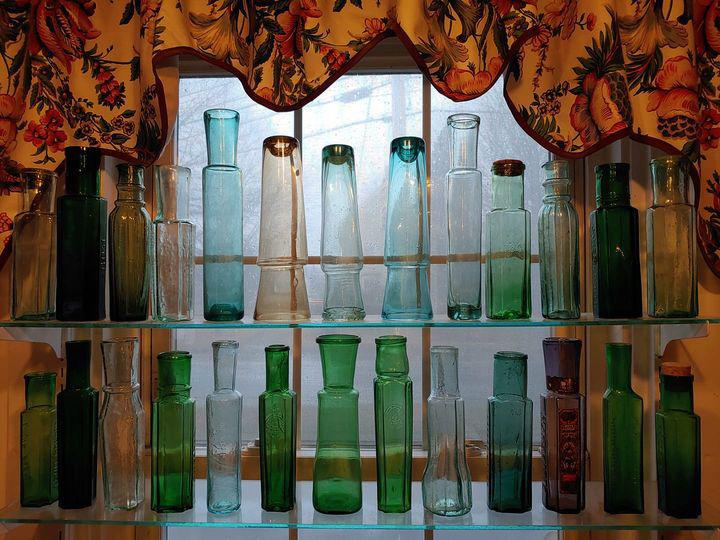
Articles are not written in a vacuum. Relevant information must be gathered from published sources and from individuals who can assist in the research. I thank Chef Johnny Pol for sharing his impressive collection and knowledge with me, Keir Lewis of France for providing sources of information, assisting in translation and finding capers jars for my collection, Robert Biro for giving permission to include his lovely HCK capers jar and Jeff Merry for allowing me to photograph his labeled capers jar for this article. A very special thank you goes to Ms. T. McGow who provided a wealth of information about the capers jar on the far right in Photo 1. Finally, I thank my long-time friend, Sam Fuller, for his assistance with the photography.
The identifiers that match the photos with the collections follow. Photos JP1–JP10 are from the collection of Johnny Pol, Photos KL1–KL3 are from the collection of Keir Lewis, Photo RB is from the collection of Robert Biro, Photo JM is from the collection of Jeff Merry, Photos A, B and C are courtesy of Ms. T. McGow and all other Photos are from the collection of the author.
Picasso once said: “A collector is one who sees what others don’t.” This is so true. For example, an uninformed person may look at an old capers jar as just a piece of junk but a knowledgeable food bottle and jar collector will see a treasure whose attributes might be beauty, form, color, condition, age, rarity, history or desirability. This article presents an indepth analysis of capers and capers-type jars and the author is pleased to share his experiences and collection as well as examples from other collections.
When pickled, capers are used as a flavoring agent in soups, salads and delicious culinary treats such as smoked salmon and chicken piccata. They are the premature buds of the flowering capers bush and are cultivated in France and all over the Mediterranean. Pictures of the capers bush can be seen online.
This article illustrates, dates and describes a wide variety of blown capers jars and traces their evolution from 1770 to 1920. The captions for the photos give the location within the text where these photos and information about them is referenced using boldface. Unless otherwise stated, all pontil
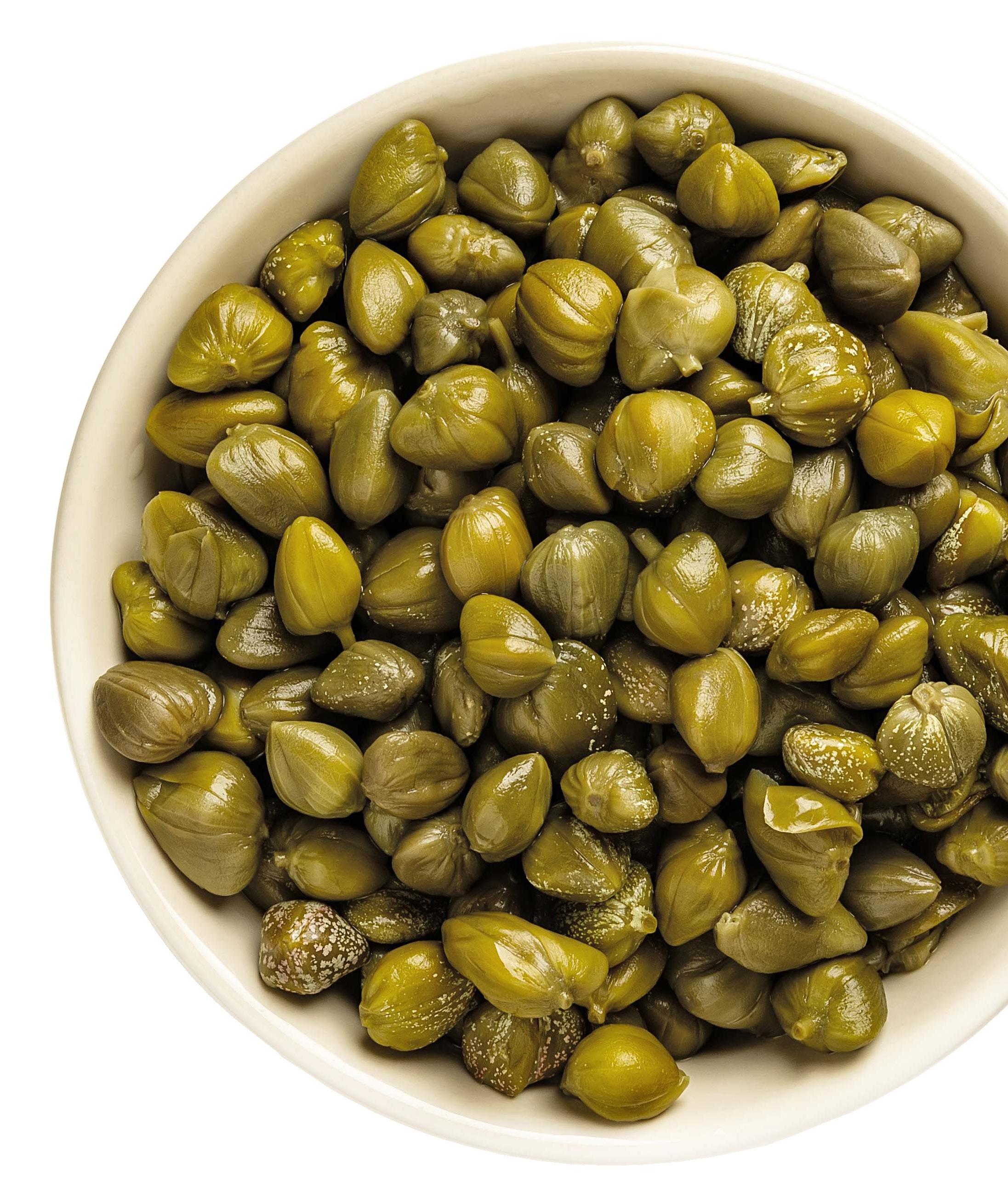
marks on these jars are of the plain “glass-tipped” or disc types pictured in Van den Bossche5 Figures 47(1) and 48(2) on pg. 64. Photo GT shows the bases of the four capers-type jars in Photos 7 right, 2, 3 and U1 with “glasstipped” pontils. The two jars in the middle have kick-up bases and a thin
layer of glass covers one half to three quarters of the base opening. Measurements are in inches to within one eighth of an inch and have format, height x base diameter or width x lip diameter. Some of the jars discussed and pictured here may not have contained capers— only an original label can confirm the



contents. A particular jar could have contained other flavorings, dried herbs, spices, condiments, olives or even truffles. However, any jar could certainly have contained capers and are referred to as a capers or capers-type jar or simply a jar.

 Photo 1: Early Period, Type 1, France c. 1770–1820. These jars were blown at the Gresigne Forest Glass Works. The jar on the left was found in New Orleans, Louisiana. The jar on the right was dug in Saco, Maine.
Photo JP1: Early Period, Type 1, France c. 1770–1820. The jar was blown at the Gresigne Forest Glass Works and was dug in San Juan Bautista, California.
Photo GT: Introduction, Glass-Tipped Pontils
Photo 1: Early Period, Type 1, France c. 1770–1820. These jars were blown at the Gresigne Forest Glass Works. The jar on the left was found in New Orleans, Louisiana. The jar on the right was dug in Saco, Maine.
Photo JP1: Early Period, Type 1, France c. 1770–1820. The jar was blown at the Gresigne Forest Glass Works and was dug in San Juan Bautista, California.
Photo GT: Introduction, Glass-Tipped Pontils
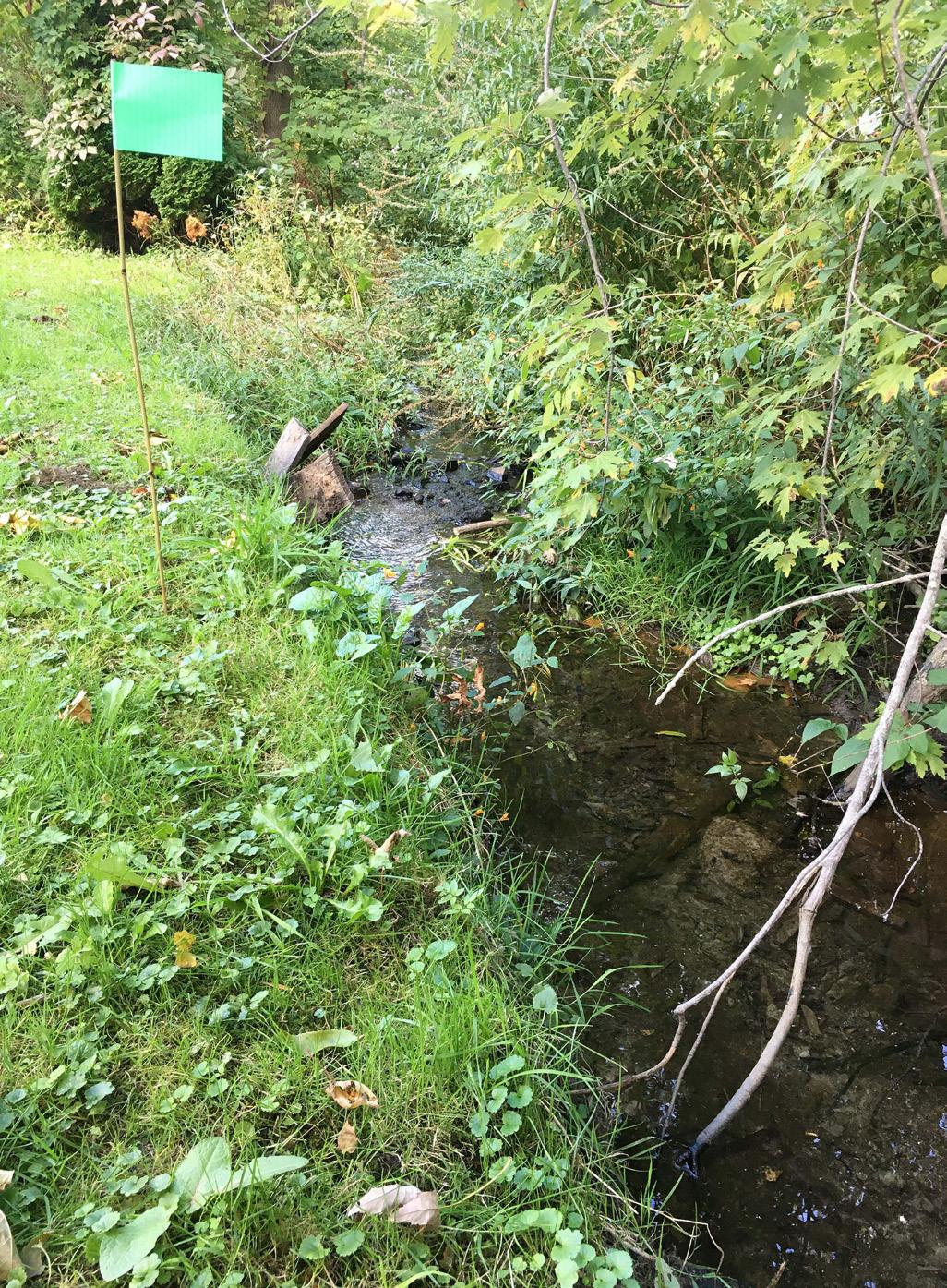
Traveling in time along the capers trail reveals the evolution of the capers jar. The trail divides naturally into three time intervals called the Early, Middle and Late Periods. The periods are further subdivided into types which describe how the capers jar evolved in shape. Since jar dating is not an exact science, the time intervals for the types are estimates and may differ from the actual periods of production.
Furthermore, these time intervals may overlap because change happens gradually and a later type may not have replaced an earlier type entirely. For ease in drawing diagrams to show the placement of the types on the evolutionary trail, the time intervals have endpoints in tens of years. Using circa in a time interval means that five years added to or subtracted from the ends of an interval may date a type more accurately. Each jar encountered along the way is described in detail, dated and analyzed to tell its story. Photos 1–13 coincide with Types 1–13 and provide a visual account but not the whole story of the capers jar’s evolution. Some uniquely shaped jars not on the evolutionary trail are also included.
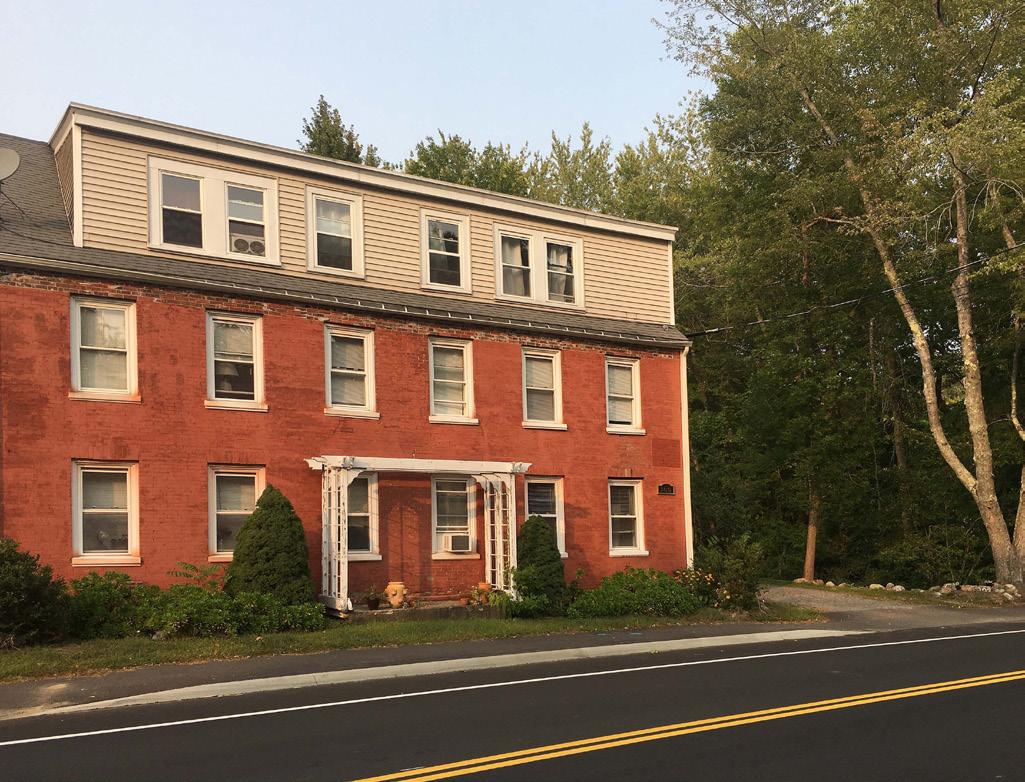
All jars in this section are rare and the collector will have a eureka moment when a Type 1 or Type 2 jar is found. It is certain that many of these early period jars were blown at the Gresigne Forest Glass Works in southern France. The Gresigne6 is one of the largest oak forests in Europe making the location ideal for stoking furnaces. Glass was made at this enterprise from the mid 15th century to the mid 19th century when coal became the fuel of choice6. More about this glass works is found in the discussion of Types 1 and 3 jars.
Type 1 jars were blown in a dip mold, have pontiled bases with a kick-up, conical bodies, tapered necks and sheared lips. Van den Bossche5 pictures a Type 1 jar on pg. 225 that is lighter in color than the jar in Photo JP1 and indicates that his jar and also the jar on the left in Photo 1 because of its color were blown at the Gresigne Forest Glass Works. He further states that this form was used primarily for capers but does not provide a date. The next two paragraphs zero in on a time interval for the Early Period and Type 1 jars.
The jar on the left in Photo 1 measures 10 x 2 x 3, is of an unusual light yellowish brown color and is very well traveled. It was found in New Orleans and does not appear to have been excavated. It was purchased by a German collector and subsequently by a French collector who sold the jar to the author. The first settlement in the Louisiana area was in 16996 and New Orleans itself was settled in 17186 so these dates firmly place this jar in the 18th century or later.
The jar on the right in Photo 1 is an important and remarkable
Photo A: Early Period, Type 1, Homestead where the jar on the right in Photo 1 (opening spread) was found.
Photo B: Early Period, Type 1, Crock lid that protected the jar on the right in Photo 1 (opening spread) was found.
Photo C: Early Period, Type 1, Flag marking the spot where the jar on the right in Photo 1 (opening spread) was found.
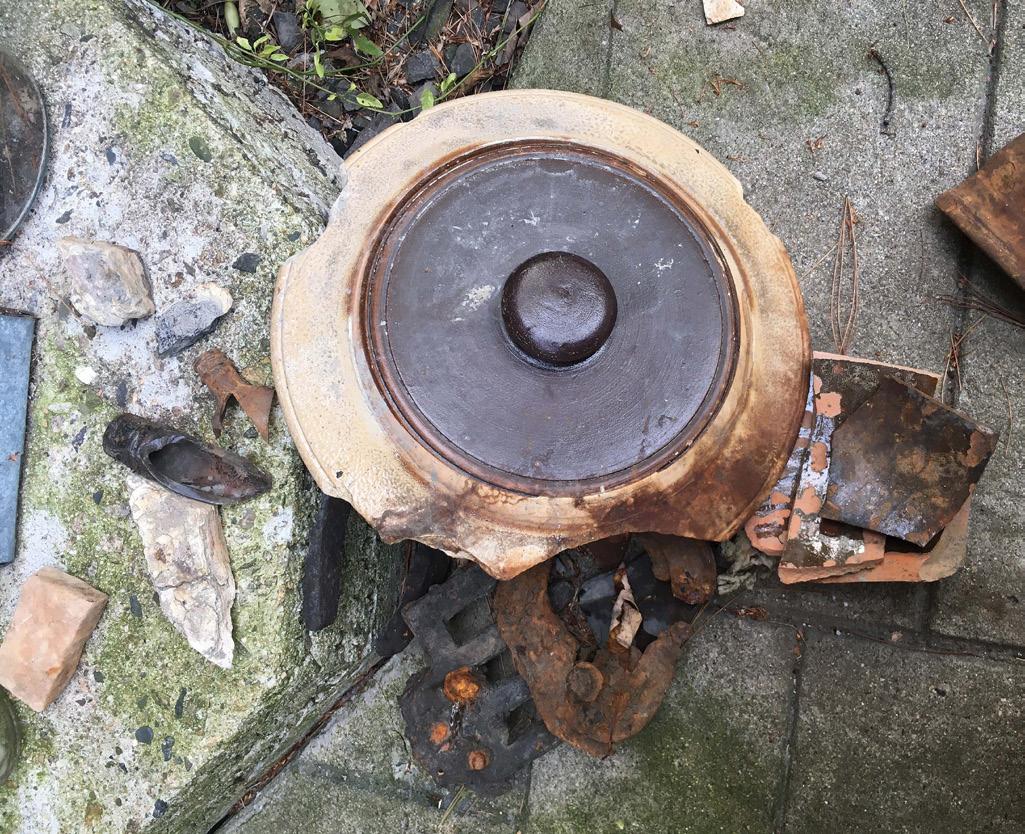
find. It is in untouched and near-mint condition, measures 10 x 2 x 3 and is blueish in color (see also Photo KL1). The author considers this jar the superstar of the article for the following reasons: 1. This find determines the first year in the time interval for Type 1 jars supported by direct evidence; 2. The jar was dug in Saco, Maine which is about 125 miles from the author’s home and is one of the earliest bottles or jars dug in the State; 3. The characteristic blueish color identifies the jar as being blown at the Gresigne Forest Glass Works also discussed in the section on Type 3 jars; 4. The jar was found in a shallow creek on the property of a homestead built in 1770. Since 1770 is the earliest possible year for the bluish jar to be discarded, this year is chosen as the beginning of the Early Period and Type 1 jars and is well within the period of operation for this glass works. The ending date for this period is the starting date for the Middle Period and is justified there. Photo A, Photo B and Photo C document where the blueish jar was found.


The difference between Type 2 and Type 1 jars is that the former have heavy laid-on ring lip finishes2 instead of sheared lips. Generally speaking, applied-lip finishes appear later than sheared lips, thus the beginning date of 1780 for Type 2 jars. Furthermore, time periods for bottles and flasks with sheared lips and those with applied-lip finishes are known to overlap and the same is true for capers jars.
The jar in Photo 2 is of Type 2, measures 9.5 x 1.5 x 2.5, is greenish aqua in color and the lip and upper neck have dark streaks.
The top-heavy, narrow-based jars in Photos 1 and 2 seem totally impractical for a food container. They may have been stored upside down for stability and to keep the probable cork closure wet. It is possible that the jar in Photo 2 was covered with a lead or alloy cap over the cork stopper and embossed for identification of the product and the producer as well as to protect the contents and prevent leakage. This is a well-known practice for early food containers with applied lips here in the United States and in Europe as well.
See Zumwalt7 pgs. 88, 90, 112,
286, 429, 432 and 434 for examples of these metal caps. Wax may also have been used to seal the cork on capers jars.
Type 3 jars have cylindrical bodies, pontiled bases with a kickup, tapered necks and sheared lips.
Photo 3 shows a Type 3 jar which measures 11 x 2 x 1.75, is light blue green in color and is the tallest capers jar the author has seen. Justification for Type 1 and Type 3 time intervals coinciding as well as for Type 2 and Type 4 is given in the discussion of Type 4 jars.

In the Section titled Les Verreries de la Gresigne (The Glassworks of the Gresigne), Bellanger1 pg. 225 pictures a jar (the only capers jar she shows) very similar to the jar in Photo 3. She states that the jar was blown at the Gresigne Forest Glass Works. She further states in this section that the blueish, blue-green and gray-blue colors are due to the ash from ferns used in the glass mix. See Musée du Verre4 online for more beautiful glass containers blown at the Gresigne Forest Glass Works or search “Gresigne verre” online. Van den Bossche5 in plates 173-182 on pgs. 223-230 shows glass blown at the Gresigne Forest Glass Works in various hues of blueish, blue green and gray blue.
Bellanger1 pg. 256 mentions capers jars. A portion of the text given in this section translates as “Capers jars are also made in the Provence (Languedoc in southern France), are of the same form as those used for olives and were used in the same manner, both for presenting the contents for sale, as well as for serving at the table.”
Type 4 jars are similar to Type 3 jars except the former have heavy laid-on, ring lip finishes2 instead of sheared lips.
Photo 4 shows an aqua jar measuring 10.75 x 1.5 x 1.75. The jar in Photo JP2 exhibits the characteristic yellowish-brown color of many of the jars blown at the Gresigne Forest Glass Works. Photo 3: Early Period, Type 3, France c. 1770–1820. The jar was almost certainly blown at the Gresigne Forest Glass Works and was dug in New Orleans, Louisiana. Photo 2: Early Period, Type 2, France c. 1780–1830. The jar was almost certainly blown at the Gresigne Forest Glass Works.As previously stated, Types 1 and 3 jars are assigned the same time interval since they differ only in body shape, were made in the same manner and the author could find no information in the references to conclude otherwise and similarly for Types 2 and 4 jars. Interestingly, the two early jars in Photos JP1 and JP2 were dug together by Chef Johnny Pol in San Juan Bautista, California. This discovery strongly suggests considerable concurrency in the manufacture of Types 1 through 4 jars and the four corresponding time intervals reflect this. The Mission San Juan Bautista was founded in 17976, a date well within the Early Period. Observe that beginning in 1780, two different body styles undergo a change in lip finish during the same time period thus creating two branches on the evolutionary trail called the Upper and Lower Branches in Diagram 1. Circa 1830 a new type appeared on the horizon, hence the year 1830 is chosen as the end of the Early Period and Type 4 jars although the manufacture of Types 1–4 jars could have continued for a while. Photo KL1 shows four Early Period jars. Keir Lewis, an expert on French glass jars and bottles, calls the color of the two jars on the left in this photo “true Gresigne Blue.” Compare with the jar on the right in Photo 1
c.1830–1860
This section contains a wide variety of pontiled and attractive capers jars plus some uniquely shaped jars which are of this period but not on the evolutionary trail.
Types 5a and 5b: c. 1830–1850
Types 5a and 5b jars are similar to Types 3 and 4 jars but have smaller kick-ups in their pontiled bases and were blown in clear glass. Photo 5 shows two Type 5a jars and Photo KL2 shows a Type 5b jar.



The jar on the left in Photo 5 measures 9.75 x 1.75 x 1.5 and is identical to an example dug by very knowledgeable collector/dealer David Beeler who kindly shared the following information: “I dug the early capers bottle from an 1830s outhouse pit in New Orleans on St. Bernard St. just outside the French Quarter. It was only three feet deep to
but had 1820s pearlware and sealed wines, etc.” The time
Antique Bottle & Glass Collector
period is also justified by the physical characteristics of these three jars when compared to Types 3 and 4 jars and the fact that a new body style for French jars, namely those of Type 7, appeared c.1850. The jar on the right of this photo measures 9 x 1.5 x 1.75 and similar jars have been found across the United States. The jar in Photo KL2 has a rolled /folded-over lip finish2 which normally appears later than a sheared lip but the time periods overlap since Type 5b jars may not have replaced Type 5a jars entirely as shown in Diagram 1.
Type 6: c. 1850–1860
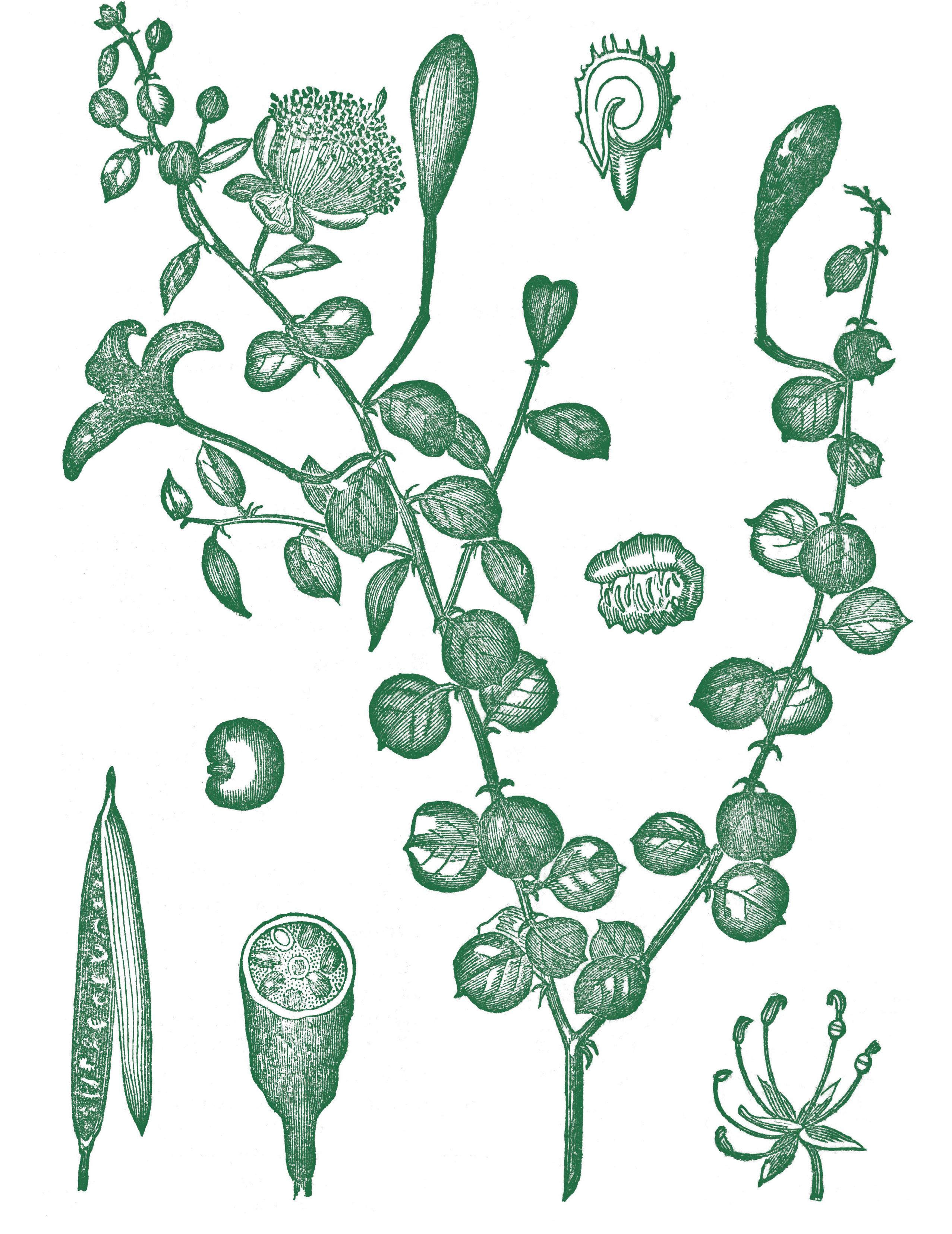
Type 6 jars are similar to the cylindrical Type 5 jars but have pontiled bases with no kick-up.

Photo 6 shows the earliest American capers jar in the author’s collection. It is a beautiful example being hammer whittled with numerous distinct etched swirls. The jar measures 9 x 1.75 x 1.25, has a blowpipe pontil, is aqua in color and has a rolled/folded-out lip finish2. It is embossed ‘W M & P / N Y’ for “Wells, Miller and Provost.” Zumwalt7 devotes pages 428-432 to the history of the company and pictures many bottles and jars including this example. Page 427 lists their products which include capers and this is undoubtedly the jar they used. John B. Wells started the business in 1837, Ebenezer Miller became a partner in 1841 and Stephen H. Provost joined the business in 1844, hence the starting year of 1850 (time intervals have endpoints in tens of years) is selected for Type 6 jars although these jars could have been in production by 1845. It is very likely that the W M & P jars of Type 6 were the first capers jars made in America. This famous countrywide business closed its doors in 1887.
Type 7: c. 1850–1860
Type 7 jars have pontiled bases with no kick-up, rectangular bodies, flat or concave sides and concave edges. This type became one standard body shape (a second is that of Type 11 jars) well into the 20th century. Note that Type 6 and Type 7 time intervals coincide as shown in Diagram 2.
The aqua and yellow-green jars in Photo 7 were blown in the same mold, measure 8 x 2.25 x 1.75 and have tapered necks with rolled/folded-out lip finishes2
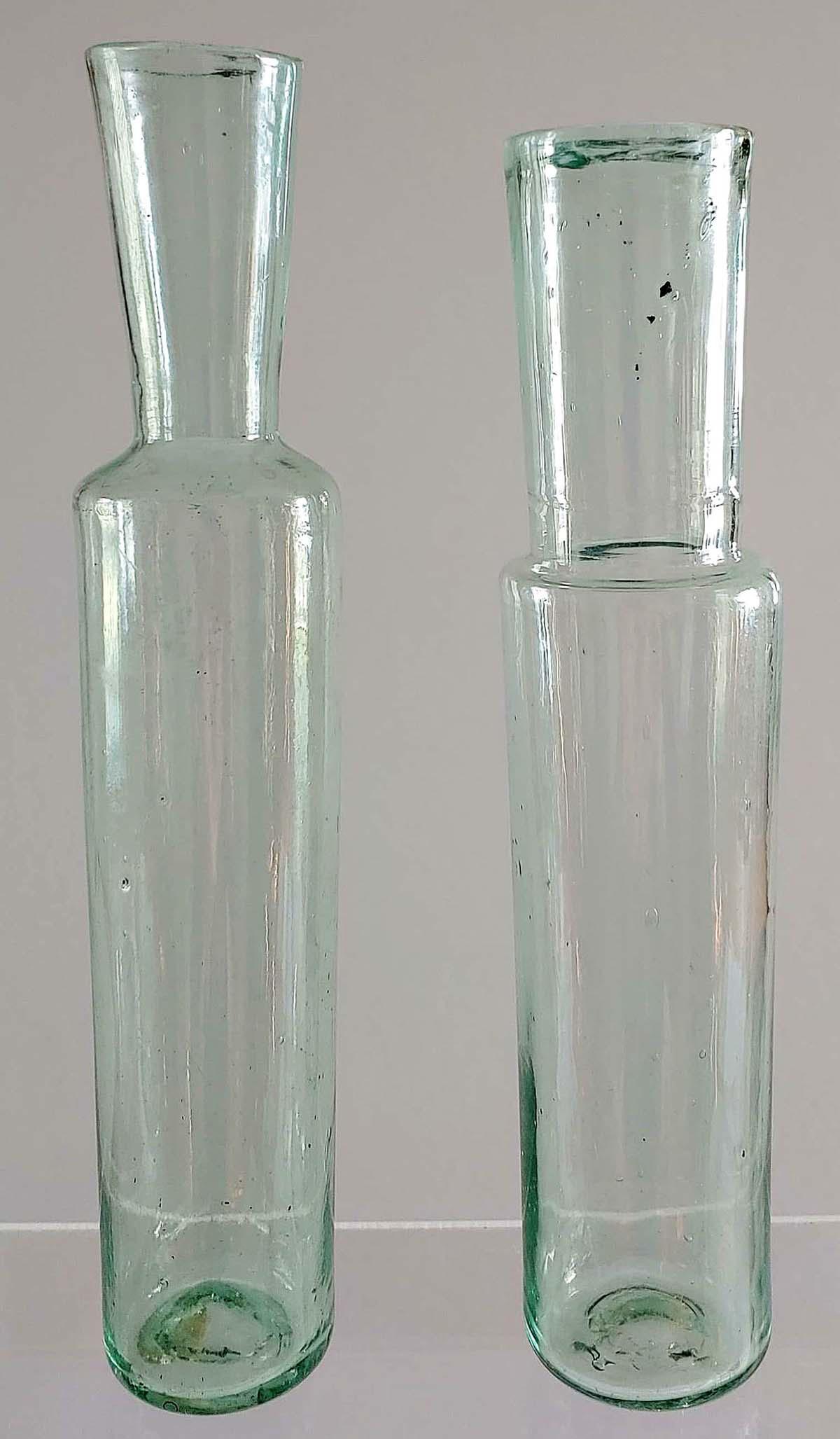
Embossed and pontiled capers jars are rare and besides an example identical to the jar in Photo 7a and recently sold in an online auction, the author in over 50 years of bottle collecting has encountered only two additional examples shown in Photos 6 and JP8. The jar in Photo 7a measures 8 x 2 x 1.75, is yellow green in color, has a rolled/folded-out lip finish2 and its original cork. It is embossed ‘D & C’ horizontally and pictured in Zumwalt7 pg. 109 but the identity of D & C is not given. A strong possibility for the “D” is DESEGAULX whose name is on the very similar but later jar in Photo 9a or H. DUFOUR whose name as well as DESEGAULX appears on a jar in Zumwalt7 pg. 124. A third possibility is A. DUFOUR.
Based on the following observations, it is almost a certainty that the “D” stands for DESEGAULX and the “C” stands for Company as does the “C” on a pontiled, barrel-shaped French prune jar
Photo 5: Middle Period, Type 5a, France c. 1830–1845. The jar on the left was dug in the south. The jar on the right was found in North Ellsworth, Maine. Photo KL2: Middle Period, Type 5b, France c. 1835–1850. Mr. Lewis says these clear glass jars are rare in France so they may have been produced primarily for export.Middle Period, Type 6, USA, c. 1850–1860. The jar is embossed ‘W M & P / N Y’ vertically in two lines and was dug in the west.
in the authors collection embossed A. DUFOUR & C / BORDEAUX whose specialties were prunes and fruits au jus (with juice). He also used CIE for Compagnie instead of CO (The“IE” and “O” are raised in smaller print) and sold capers and mustard but none of his jars are known to the author nor does his name appear in Zumwalt7. Furthermore, the author has pot-shaped,2 pontiled mustard jars embossed ‘D & CO,’ ‘H. D. & CO,’ ‘D & H D’ and ‘D. F. & CO.’ The embossing on the capers jars mentioned above make the initials on these mustard jars easily identifiable. The above observations and the noted similarity of the jars in Photos 7a and 9a plus the fact that there is no room for D & CO (even with a smaller raised “O”) on the jar in Photo 7a point to the “D” as standing for DESEGAULX and the “C” for Company.
Middle Period, Type 7, France, c. 1850–1860. The jar is embossed ‘D & C’ on the front, is attributed to Desegaulx & Company (see text) and was found in Arundel, Maine.


There are pontiled American jars of this period which, except for having concave sides and sloping shoulders, fit the description of Type 7 jars but are always referred to as spice jars.
There are some singular attractive and shapely pontiled capers jars which date c. 1830–1860 and therefore places them timewise on the trail.
The free or dip mold blown pontiled jar in Photo U1 measures 7 x 2 x 2, has a skillfully applied laid-on, ring lip finish2 and is aqua in color. The unusual green pontiled jar in Photo U2 measures 9 x 2.5 x 2.5, has a square base which was added handwork for stability and a rolled/folded-out lip finish2. Three of these jars were found in a French house. The jar in Photo JP3 is similar but smaller.

Photo U3 shows two pontiled and smoothbased coffin-shaped capers jars measuring 8 x 1.5 x 1.75 and 9 x 1.75 x 2 respectively. Interestingly, the upper one quarter of the body has convex edges whereas edges of the lower three quarters are concave. These two jars were likely blown in private molds (as many capers jars were) over a 30-year period to identify the producer just by the shape of the jar.
Both jars in Photo U4 are American, were blown in the same mold, measure 8.5 x 2 x 1.5, have blowpipe pontils, petal-shaped bases, convex fluted and slightly tapered bodies and double-ringed necks. The jar on the left is forest green in color and has a laid-on ring lip finish2. The jar on the left in Photo JP4 is deep blue green in color and a rolled/folded-out lip finish2
The jar in Photo U5 is a very attractive jar, measures 8.25 x 2.5 x 1.5, is aqua in color, has alternating flat and concave vertical flutes that widen out towards
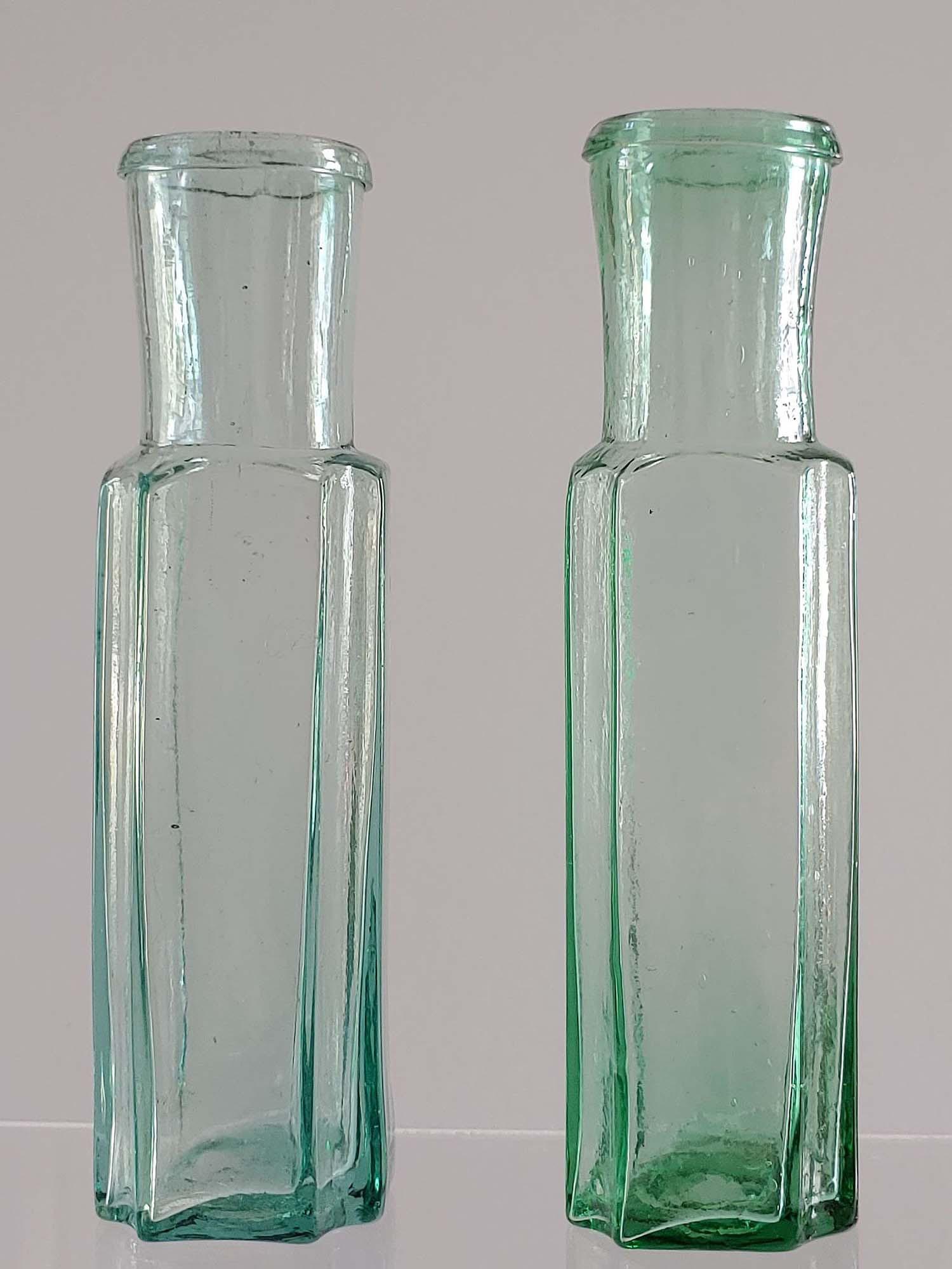
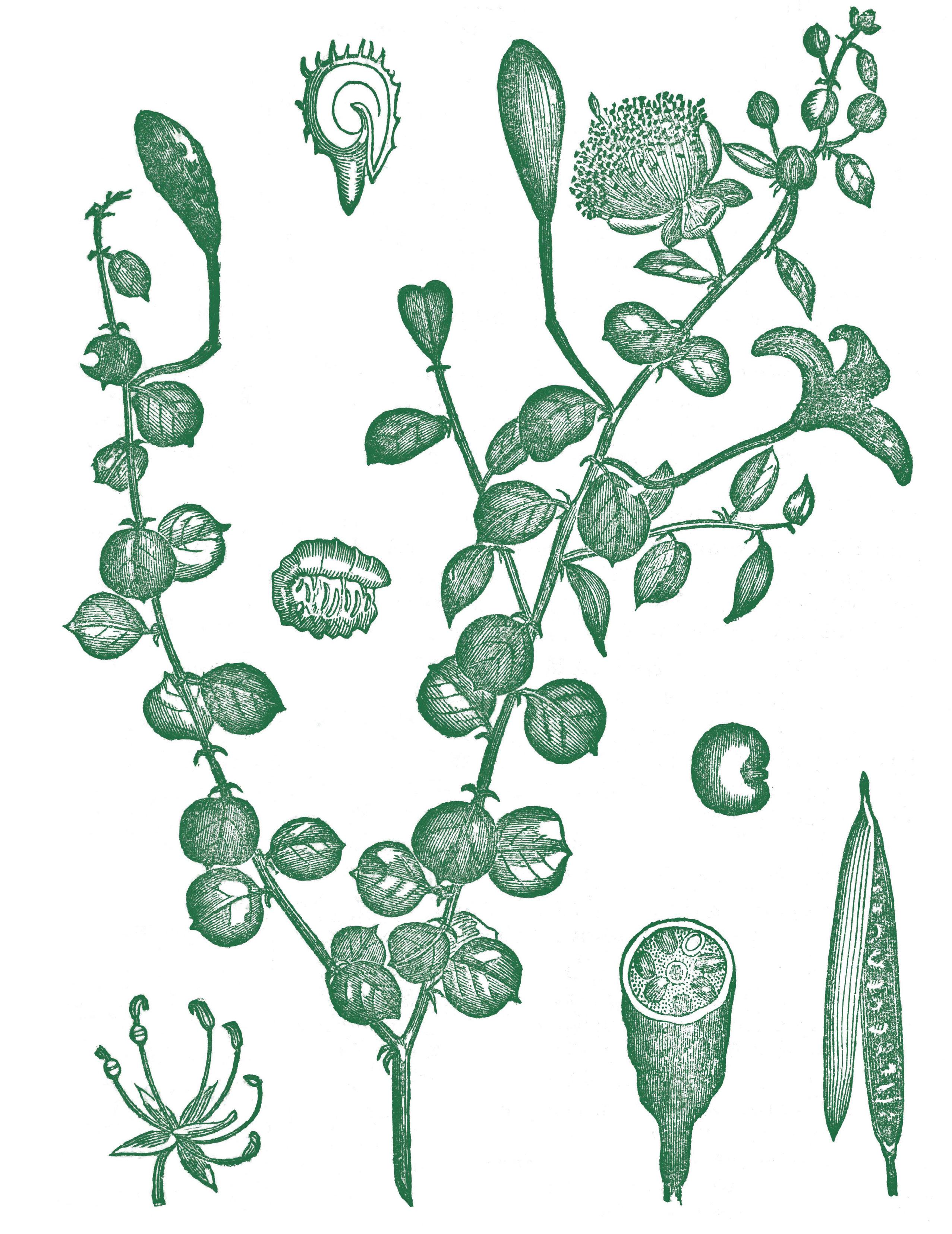
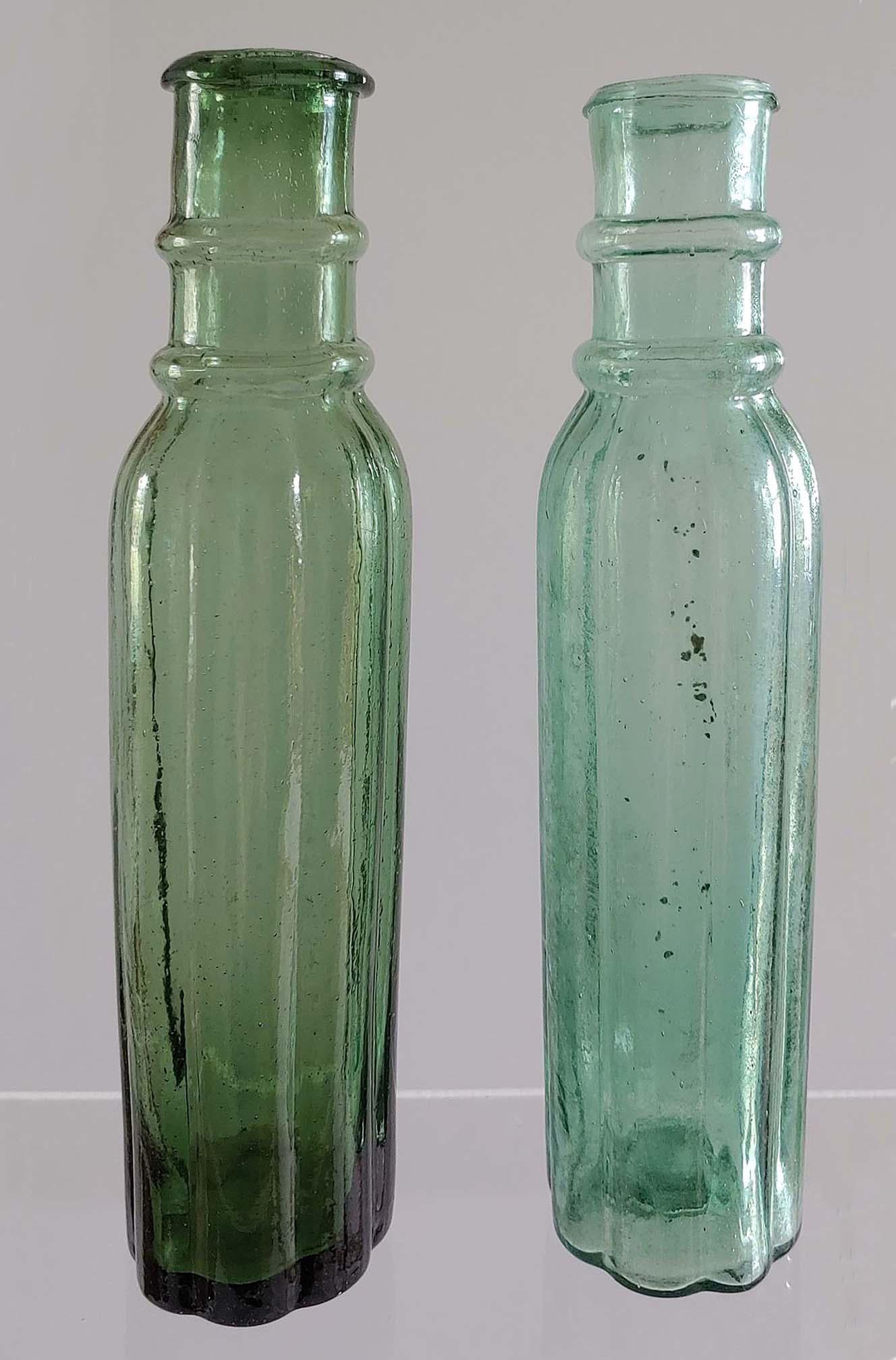
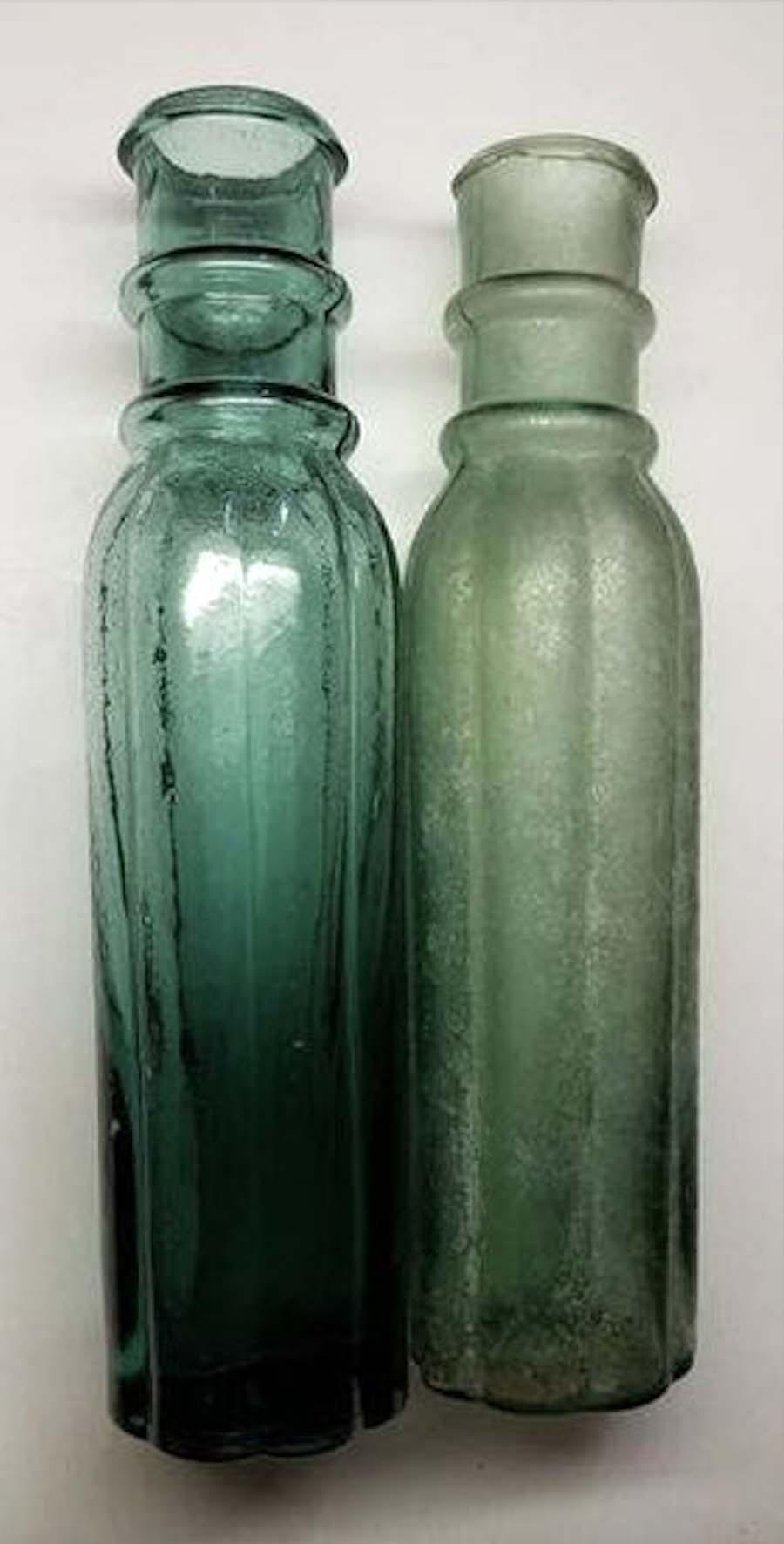
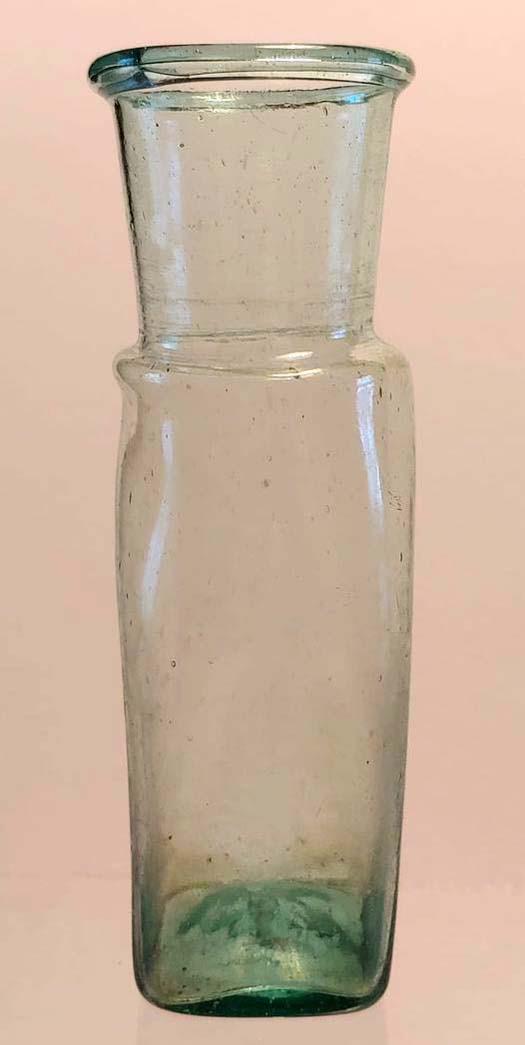

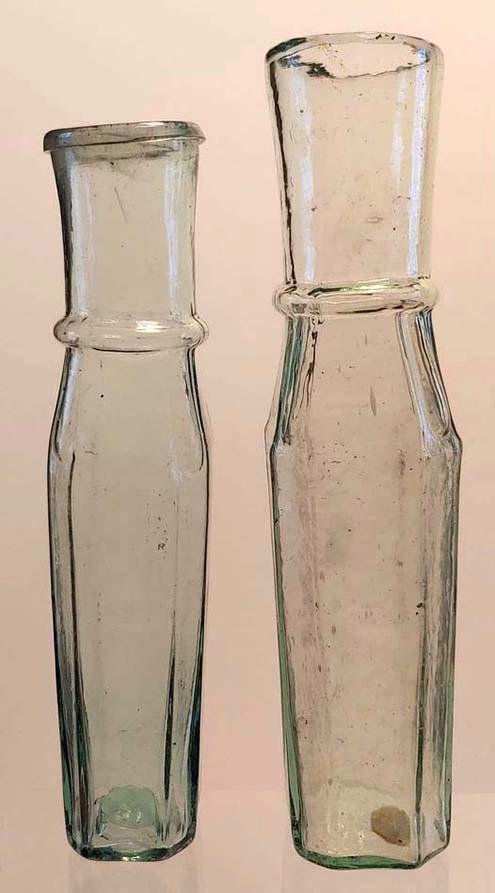
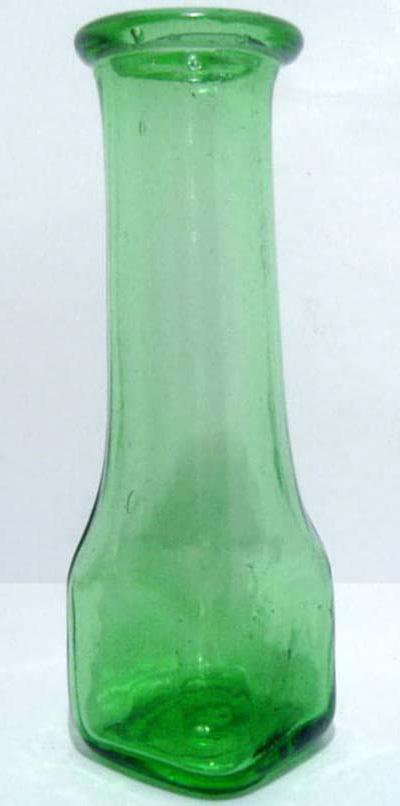 Photo JP3: Middle Period Uniquely Shaped Jars, France, c. 1850–1860. The jar was dug in the United Kingdom.
Photo U1: Middle Period Uniquely Shaped Jars, France, c. 1840–1850. The jar was dug in New Orleans, Louisiana.
Photo U2: Middle Period Uniquely Shaped Jars, France, c. 1850–1860. The jar was found in a French home.
Photo U3: Middle Period Uniquely Shaped Jars, France c. 1850–1860. The pontiled jar on the left was found in Lawrence, Kansas. France c. 1860–1880. The smooth-based jar on the right, while not of this period, is included here for comparison purposes and was dug in New Orleans, Louisiana.
Photo JP4: [Right] Middle Period Uniquely Shaped Jars, American, c. 1850–1860. The jar on the left was dug in a 15 foot privy pit in Old Sacramento, California. The aqua jar on the right is also in Photo U4 after being tumbled by the author.
Photo U4: [Left] Middle Period Uniquely Shaped Jars, American, c. 1850–1860. The jar on the left is from a Heckler auction. The jar on the right was dug in San Francisco, California.
Photo JP3: Middle Period Uniquely Shaped Jars, France, c. 1850–1860. The jar was dug in the United Kingdom.
Photo U1: Middle Period Uniquely Shaped Jars, France, c. 1840–1850. The jar was dug in New Orleans, Louisiana.
Photo U2: Middle Period Uniquely Shaped Jars, France, c. 1850–1860. The jar was found in a French home.
Photo U3: Middle Period Uniquely Shaped Jars, France c. 1850–1860. The pontiled jar on the left was found in Lawrence, Kansas. France c. 1860–1880. The smooth-based jar on the right, while not of this period, is included here for comparison purposes and was dug in New Orleans, Louisiana.
Photo JP4: [Right] Middle Period Uniquely Shaped Jars, American, c. 1850–1860. The jar on the left was dug in a 15 foot privy pit in Old Sacramento, California. The aqua jar on the right is also in Photo U4 after being tumbled by the author.
Photo U4: [Left] Middle Period Uniquely Shaped Jars, American, c. 1850–1860. The jar on the left is from a Heckler auction. The jar on the right was dug in San Francisco, California.
its pontiled base and a laid-on, ring lip finish2
Photo JP5 shows two similarly shaped beautiful medium green jars in different sizes.


shows four medals, a crowned shield and the words MARQUE DE FABRIQUE (brand). The main label features a footed bowl in the center filled with vegetables, four medals and the words MEDLO HORNEUR (medal of honor) / MAISON (house) / JOURDAN-BRIVE / FILS AINE (eldest son) / MARSIELLE / MEDIALLE DOR (gold medal). Unfortunately, the labels are generic and do not list the contents but some jars certainly contained capers. Perhaps the top of the closure displayed a contents label. The jar appears to have been exposed to ultraviolet radiation. There are faint mold seams almost to the top of the neck.
Photo 8a shows a crudely formed jar that measures 8.25 x 1.75 x 1.75, has a partially fire-polished, burst lip and a hammer-whittled body that makes the jar display beautifully in a window. The jar is listed in Zumwalt7 p.354 but no information is given.
Type 9 jars have the same rectangular body shape as Type 8 jars but have straight necks, laid-on ring or rolled/folded-out lip finishes2 instead of sheared lips. Normally, applied or rolled lip finishes appear later than sheared lips but the associated time intervals can overlap as shown in Diagram 2.
This section contains the blown, smooth-based jars. During the 1850s through the mid 1860s, the snap case and sabot mostly replaced the pontil rod2. Beginning in 1860, the evolutionary trail has two branches called the Upper and Lower Branches in Diagram 2. It is the body shape of the jars that determines the branch but the time intervals are the same.
The jars belonging to this branch have rectangular bases and straight bodies instead of tapered bodies.
Type 8 jars have smooth, rectangular bases, flat or concave sides, concave edges and tapered necks with burst/sheared lips which usually date before 18702 or sheared lips with rolled/folded in finishes2 which are uncommon for this type.
Photo 8 shows two such jars each measuring 9 x 2 x 2. The jar on the left has a partially fire-polished lip. Surviving labeled, blown capers jars are quite scarce especially with two labels. The jar on the right has ultra fancy labels, a rolled/folded-in lip finish2 and is listed in Zumwalt7 pg. 259 but without labels. The neck label

In the 19th century, the Louit Freres3 (brothers) were by far the most prominent exporters of French food-related products. In 1825, Peter Louit started a small company in Bordeaux to sell food products, in particular mustard and chocolate, and became the largest industry in southwest France. At the end of the 19th century, Louit Freres and Company had produced 2,000 tons of chocolate6. By the end of World War I, the company had expanded its distribution of mustards into northern Italy. Due to the scarcity of raw materials in World War II, the company abandoned the production of chocolate. In 2013, the Pucci Company acquired the Louit Freres brand. Zumwalt7 pgs. 285, 286 pictures many of their product jars and also two of the lead caps referred to earlier and used to cover the cork for product protection and identification. Two of the brothers’ product jars are in Photo 9 The taller jar measures 8 x 2.25 x 1.25, has a rolled/folded-out lip finish2 and a very unusual grayish-blue color. The smaller jar measures 7 x 1.75 x 1.5, has a laid-on-ring lip finish2, is medium green in color and embossed like the larger jar. These two jars are earlier than the example pictured in Zumwalt7 pg. 285.
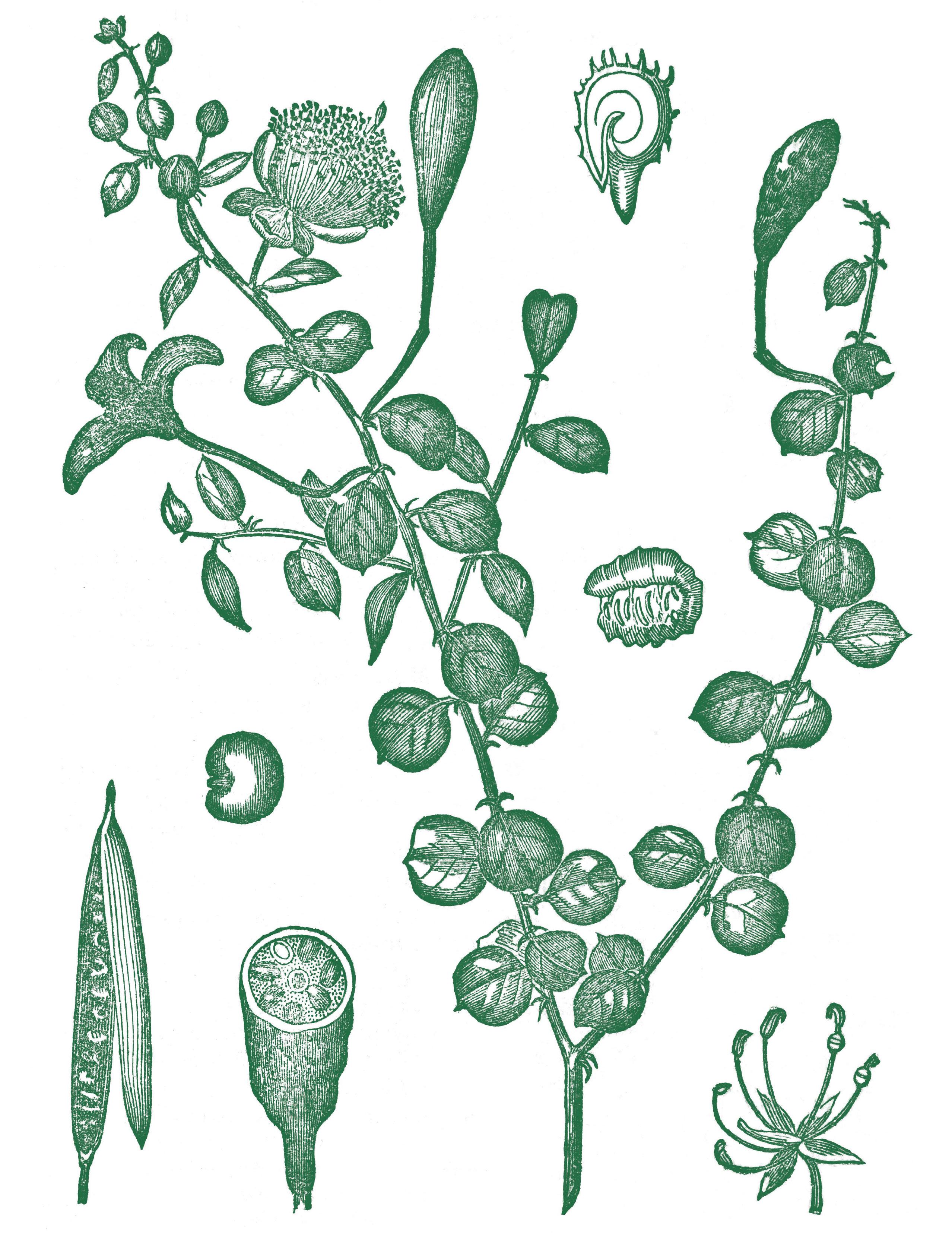
The French prefer shades of green for many of their food-related products. The jar in Photo 9a measures 8.25 x 2 x 1.75, has a molded neck ring, a rolled/folded-out lip finish2 and is green in color. This jar is listed in Zumwalt7 pg. 286.


The jar in Photo RB has a beautiful light teal blue color and a laid-on-ring lip finish2. The sides are flat and the edges are concave. This jar is not listed in Zumwalt7. The identity of HCK is unknown.
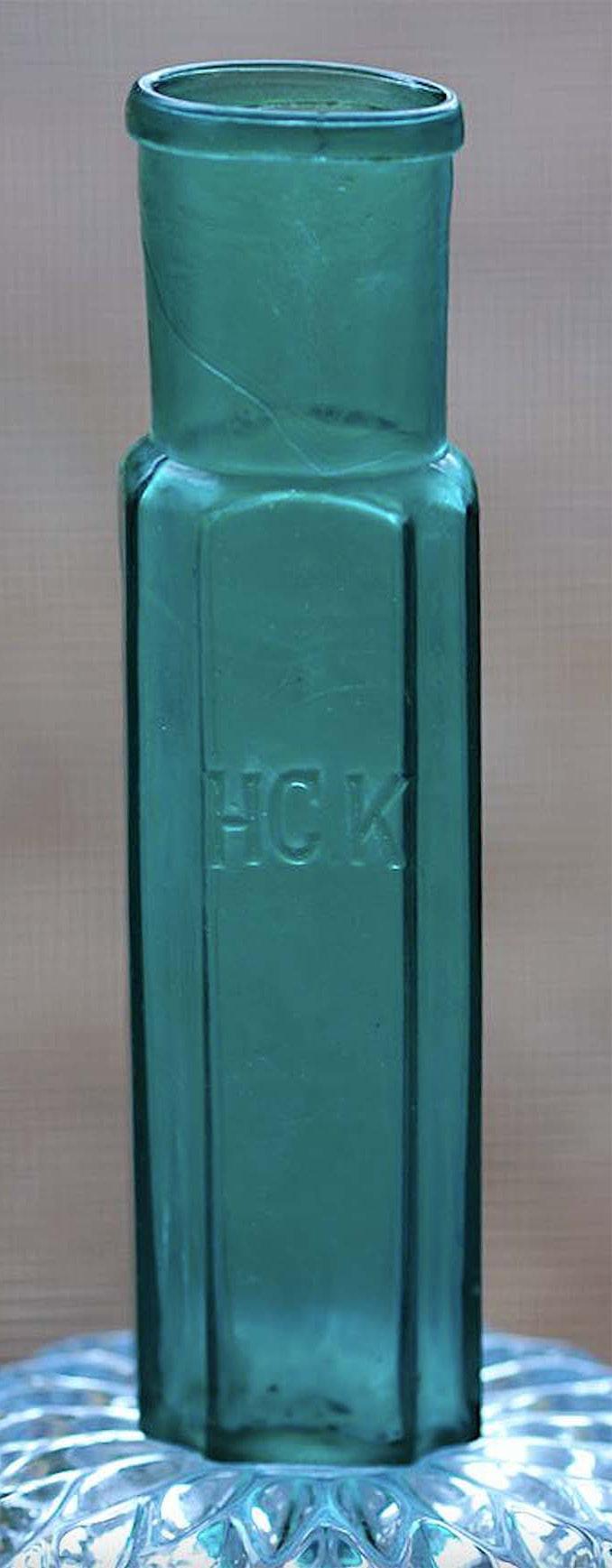
Type 10 jars like Type 9 jars have a rectangular body shape with straight sides but have “standard” tooled-lip finishes2. A patent for the tool used was granted to J. B. Wilson in 18842, hence the beginning year of 1890 (time intervals have endpoints in tens of years) is chosen for Type 10 jars but the tool could have been put into use by 1885.
Photo 10 shows two Type 10 jars of different sizes used by the same producer. They are medium and dark green and have concave edges. The smaller jar measures 7.75 x 1.75 x 1.5 and retains its original cork. The larger jar measures 9.25 x 2.25 x 1.75 and is quite hefty. Potin is not listed in Zumwalt7. Felix Potin6 was a Paris businessman who received vast quantities of goods from various manufacturers, repackaged and sold them in chain and branch stores. He was born in 1820 and opened his first shop in 1844. In 1870, he started a home delivery service. His business continued to expand even after his death in 1871. “By 1923, the
Photo 9: Late Period, Upper Branch, Type 9, France c. 1870–1890. Both jars are embossed vertically ‘LOUIT FRERES’ (brothers) on each side. Photo RB: Late Period, Upper Branch, Type 9, USA? c. 1870–1890. The jar is embossed ‘HCK’ and was dug in Savannah, Georgia. Photo 9a: Late Period, Upper Branch, Type 9, France c. 1870–1890. The jar is embossed ‘DESEGAULX FRERES (brothers) & CO’ and ‘BORDEAUX’ vertically on opposing sides.Felix Potin name counted 70 branches, 10 factories, 5 wine stores and 650 horses6.” His enterprise survived until 1956 in much the same form when it was bought out. In 2003, the Societé Philippe Potin acquired the rights to use his name for their distribution network.
The American jar in Photo 10a measures 8 x 2.25 x 1.75, is quite heavy and has a double neck ring. Zumwalt7 pg. 384 provides information on James Percival Smith company. He started his business as an importer in 1875 and moved around a bit in New York City. In 1915, he had offices in Paris. The author found an interesting March 16, 1924 newspaper advertisement where he wanted to hire experienced female olive fillers promising good wages. He was still in business in 1933 and perhaps a little later.
The jar in Photo 10b has flat sides, beveled edges, measures 6 x 1.75 x 1.5, is green in color and is not listed in Zumwalt7. Maille6 is the name of a company founded by Antoine-Claude Maille in 1747, initially called La Maison (the house of) Maille, and became the official supplier to the court of Louis XV. Interestingly, his father of the same name made vinegar and became famous in the 1720s for promoting his product as a cure for the plague. The company is still in business today as a subsidiary of Unile-
ver. Maille gourmet products are probably available in your local supermarket.
Jars belonging to this branch have rectangular bases and narrow, tapered bodies. The justification for dating the types is the same as that for the Upper Branch.
Type 11: c. 1860–1880
Type 11 jars have rectangular bases, narrow, tapered bodies with flat or concave sides, concave edges and tapered necks with sheared lips. These jars like those of Type 7 also became a standard body shape well into the 20th century.
The very attractive deep emerald green jar embossed ‘W & R’ in Photo 11 is of Type 11, measures 8.75 x 1.75 x 1.25 and is listed in Zumwalt7 pg. 415 but the identity of W & R is not given. There are mustard jars embossed ‘W & R’ and ‘Wolff & Reessing, NY.’ The author has a French example without embossing of Type 11 which was dug
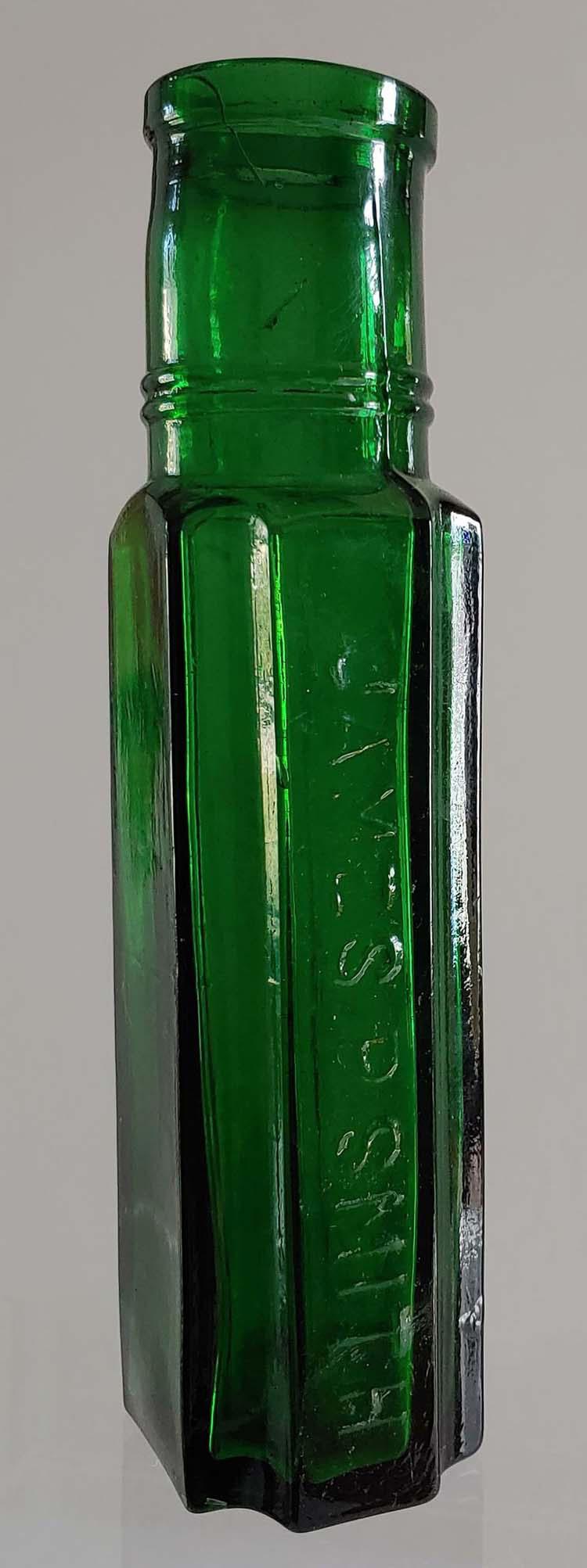
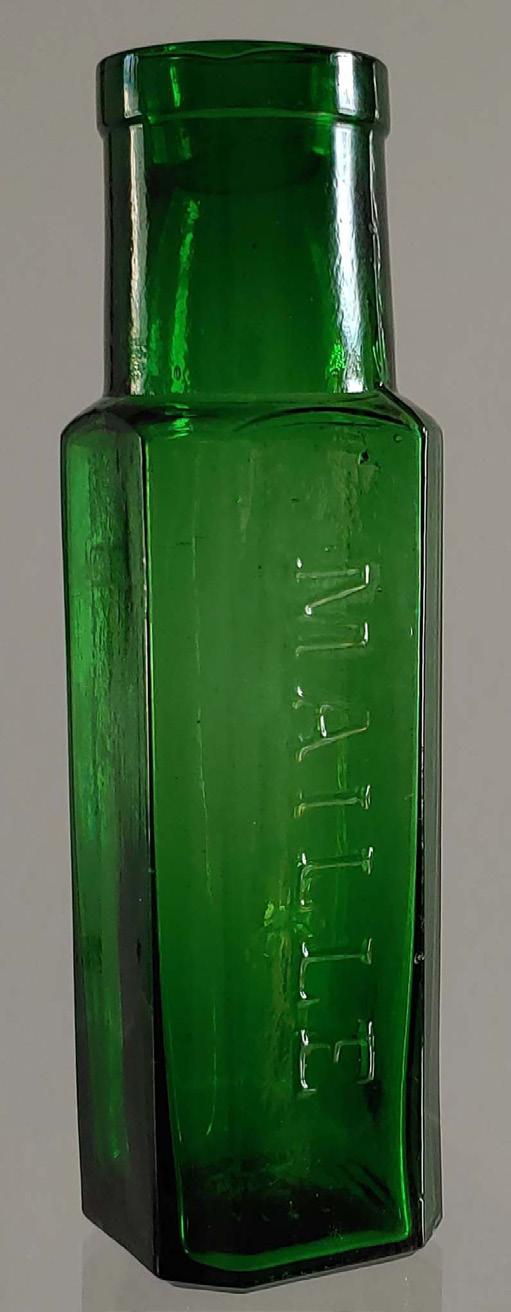
New Orleans, Louisiana.
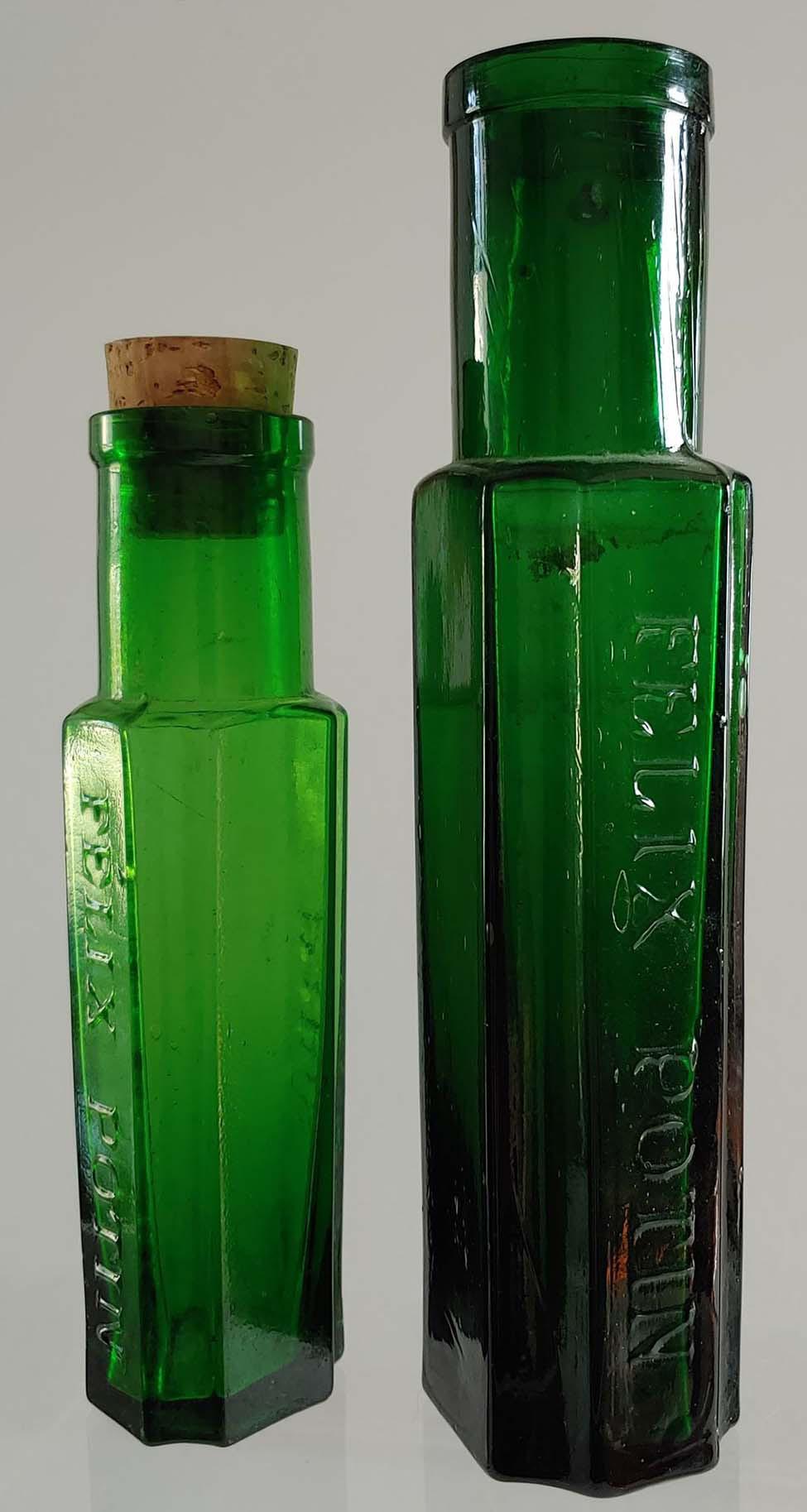
Type 12 jars differ from Type 11 jars by having straight necks and laid-on-ring lip finishes2 instead of tapered necks and sheared lips. Note that Type 11 and Type 12 jars have overlapping time periods as shown in Diagram 2 because applied lips may not have replaced sheared lips entirely.
The two interesting and attractive jars in Photo 12 are of Type 12 and are connected by a common feature, namely both are embossed with identical ‘AG’ monograms. The jar on the left measures 8.5 x 1.5 x 1.25, is medium green in color and is embossed ‘DEPOSE’ (registered, patented). Zumwalt7 pg. 163 attributes the AG monogram to Alfred Gounelle and states that he held many French patents and trademarks. Possibly he held a patent (patents are usually awarded for the shape of a container) for the shape of the jar but definitely for the AG trademark. The author has several attractively designed food containers in his collection, some with AG on the face of the jar and some on the base. The jar on the right measures 9 x 2 x 1.75, is medium green and has a unique bombe-shaped neck. The jar is listed in Zumwalt7 pg. 255 but as ALEXIS CODILLOT. It is a little hard to explain why Alexis used a registered trademark. Perhaps Alfred allowed Alex to use
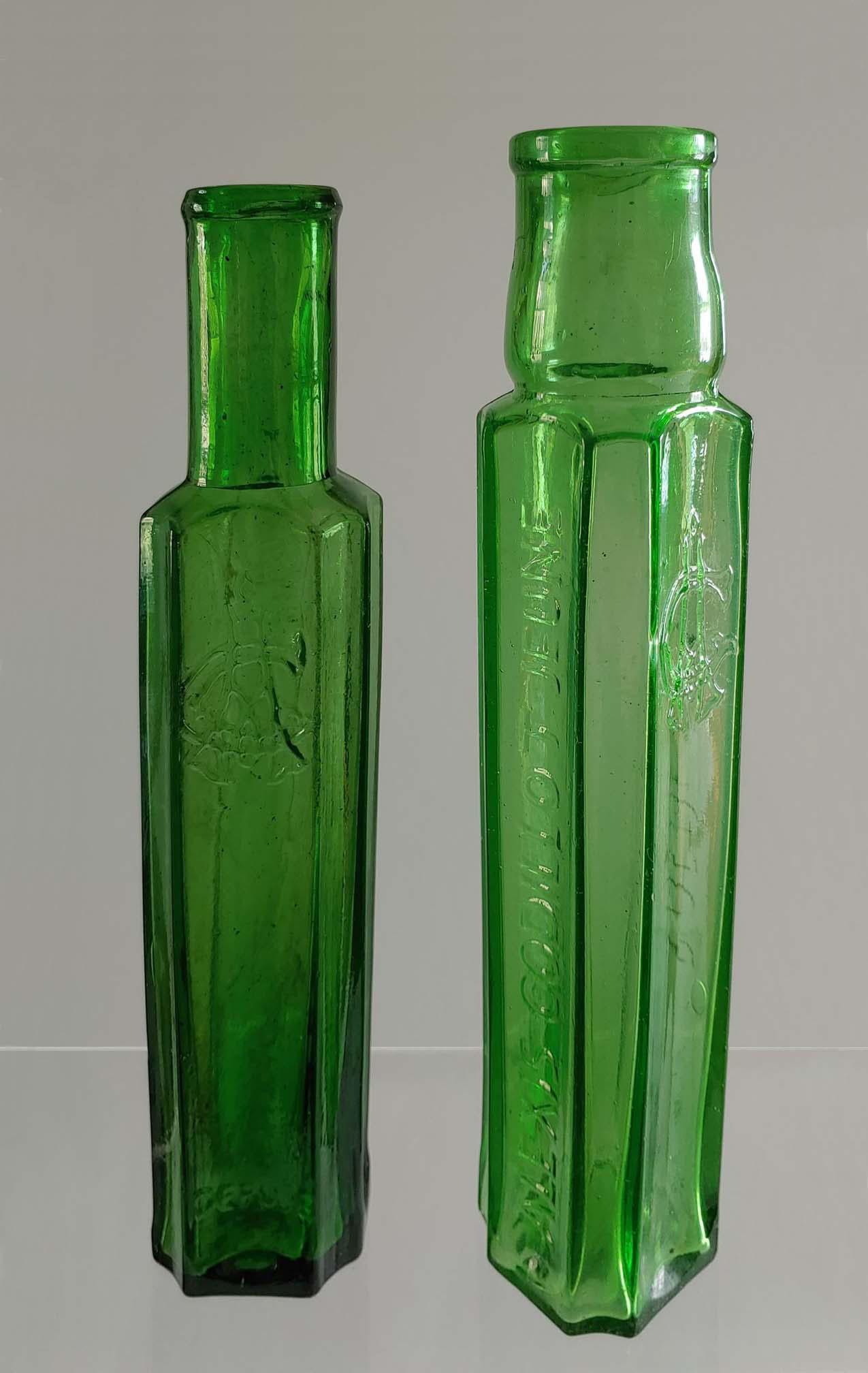
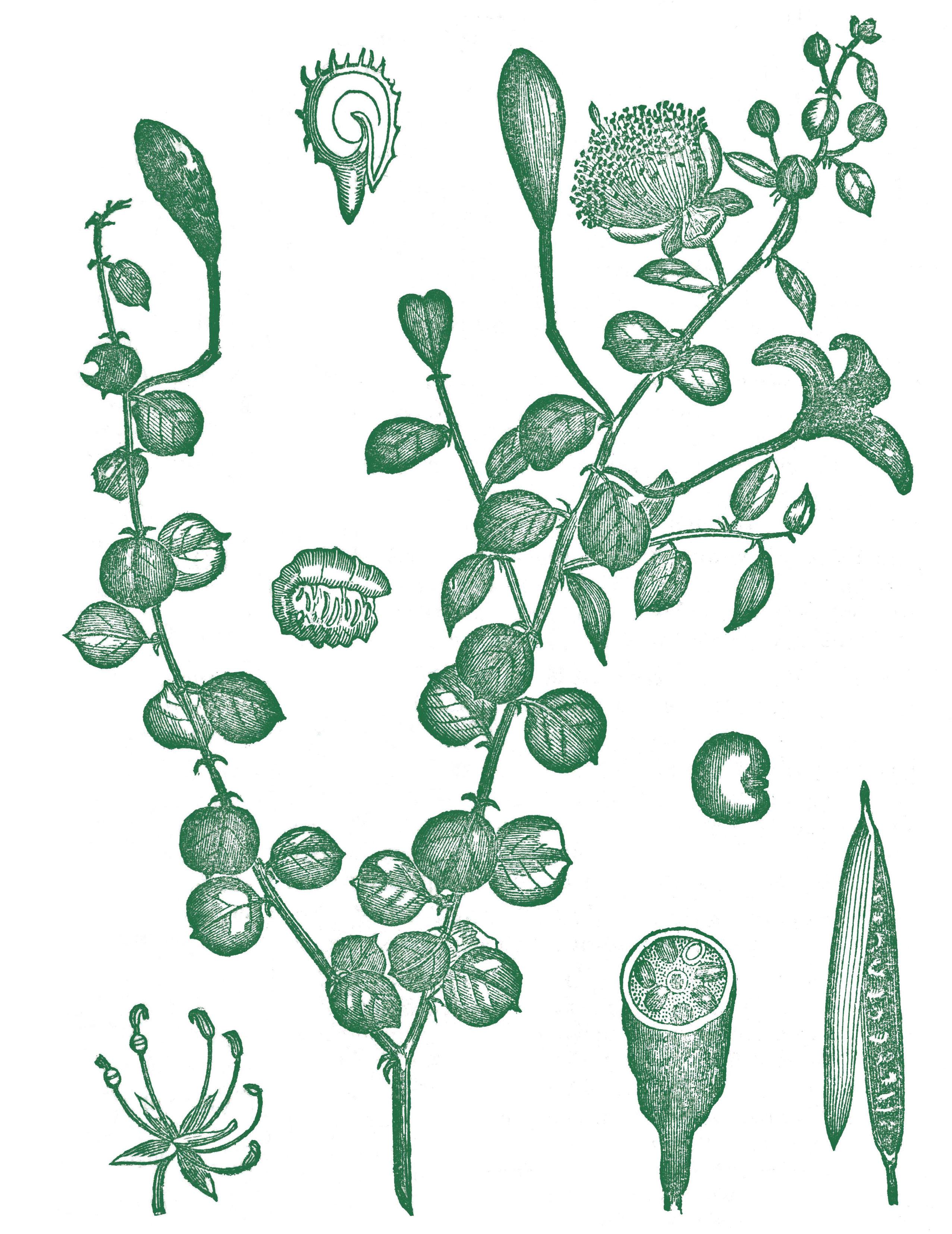
his trademark AG monogram or Alexis did so without permission which would certainly raise a red flag.
Type 13 jars have narrow, tapered bodies, straight necks and “standard” tooled-lip finishes2. Observe that the time intervals for Type 10 and Type 13 jars coincide as shown in Diagram 2
The American jar in Photo 13 is deep green in color, measures 6.25 x 1.25 x .25, has concave sides and edges and a single neck ring. Although quite common, this jar is not listed in Zumwalt7.


Photo JM shows a Type 13 jar still full with its original cork. It measures 8 x 1.5 x 1.5, has a rectangular base, concave sides and concave edges, a straight neck with ring and a “standard” tooled-lip finish2. The neck label reads “CAPERS NONPAREIL CONTENTS 5 OZS.” The front label reads “CAPERS / IN / VINEGAR / S.S. PIERCE / CO / BOSTON.”
labels.
S.S.
The Pierce trademark appears on both Samuel Stillman Pierce6 (1807–1881) was a grocer in Boston who founded SS Pierce & Co. in 1831. Pierce and his partner, Photo 12: Late Period, Lower Branch, Type 12, France c. 1870–1890. Both jars have the AG monogram. The jar on the left is embossed ‘DEPOSE’ near the base. The jar on the right is embossed ‘ALEXIS GODILLOT JEUNE’ (junior) and ‘BORDEAUX’ vertically on opposing sides and was dug in Montana. Photo 11: Late Period, Lower Branch, Type 11, USA c. 1860–1880. The jar is embossed ‘W & R’ vertically on the front for Wolff & Reessing (see text) and was dug in Wyoming. Photo 13: Late Period, Lower Branch, Type 13, USA c. 1890–1920. The jar is embossed ‘J. P. S & CO.’ vertically on the front.Eldad Worcester, started out by wholesaling provisions to ships in the very crowded Boston Harbor. In 1972, the company was sold to the Seneca Foods Corporation of New York which adopted the S.S. Pierce name until the 1980s.
This section shows two singular, very attractive and shapely smooth-based jars that date to this period and therefore places them timewise on the trail.
The jar in Photo U6 is by a very well-known producer. This jar measures 8.5 x 1.75 x 1.25, has a triangular base, concave sides with beveled edges and is medium green in color. The mold seam ends about three quarters of the way up the neck. This jar is listed in Zumwalt7 pg. 190 and a discussion of his business is found on pgs.188-191. This jar is an exception to the period in which sheared lips usually date (prior to 18702). By 1883, Gulden’s product line included capers6 and he surely had the identical jar
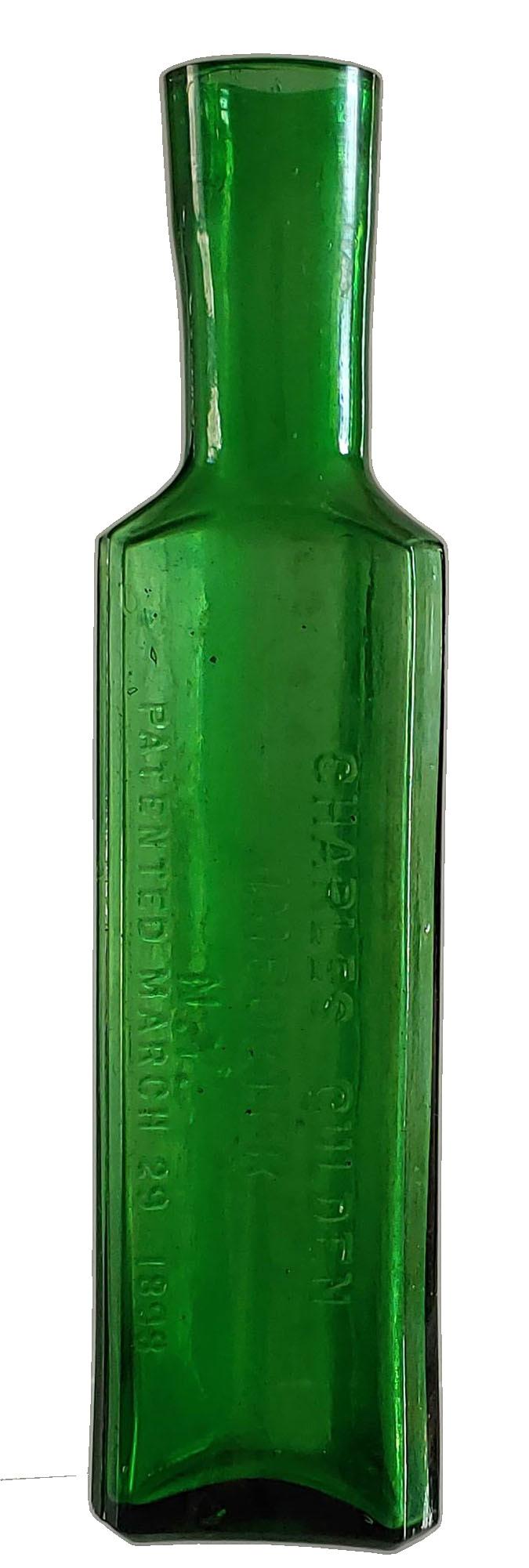

without embossing made at sometime before he was granted a patent.

The jar on the left in Picture Photo KL3 has the word “CAPRES” in its label. This jar and the one on the right are typical of the attractive, well-designed and very collectible green French and American jars used for food-related products.

The beautiful teal blue jar on the left in Photo JP7 is of Type 7 and the olive green jar on the right is of Type 9. Both the olive and medium green jars in Photo JP8 are of Type 7. The jar on the right of Photo JP9 is a beautiful shade of blue and is of Type 9. The jar in Photo JP10 is particularly outstanding. Except for the jars dug in England, France and the United Kingdom, the remaining jars in this section were dug by the Chef.
Additional Jars, The jar on the left is of Type 12 and is discussed in that section. France c. 1876. The jar on the right is embossed ‘AG’ for Alfred Gounelle, has an ‘1876’ registry mark on its base and was dug in France.
Additional Jars
France c. 1850–1860. Both jars are pontiled. The jar on the left was dug in 1969 at the Embarcadero Urban Renewal Project in San Francisco, California. The jar on the right is embossed L. F. for Louit Freres (brothers) and was dug at the Jack London Square Parking Lot Project in Oakland, California.
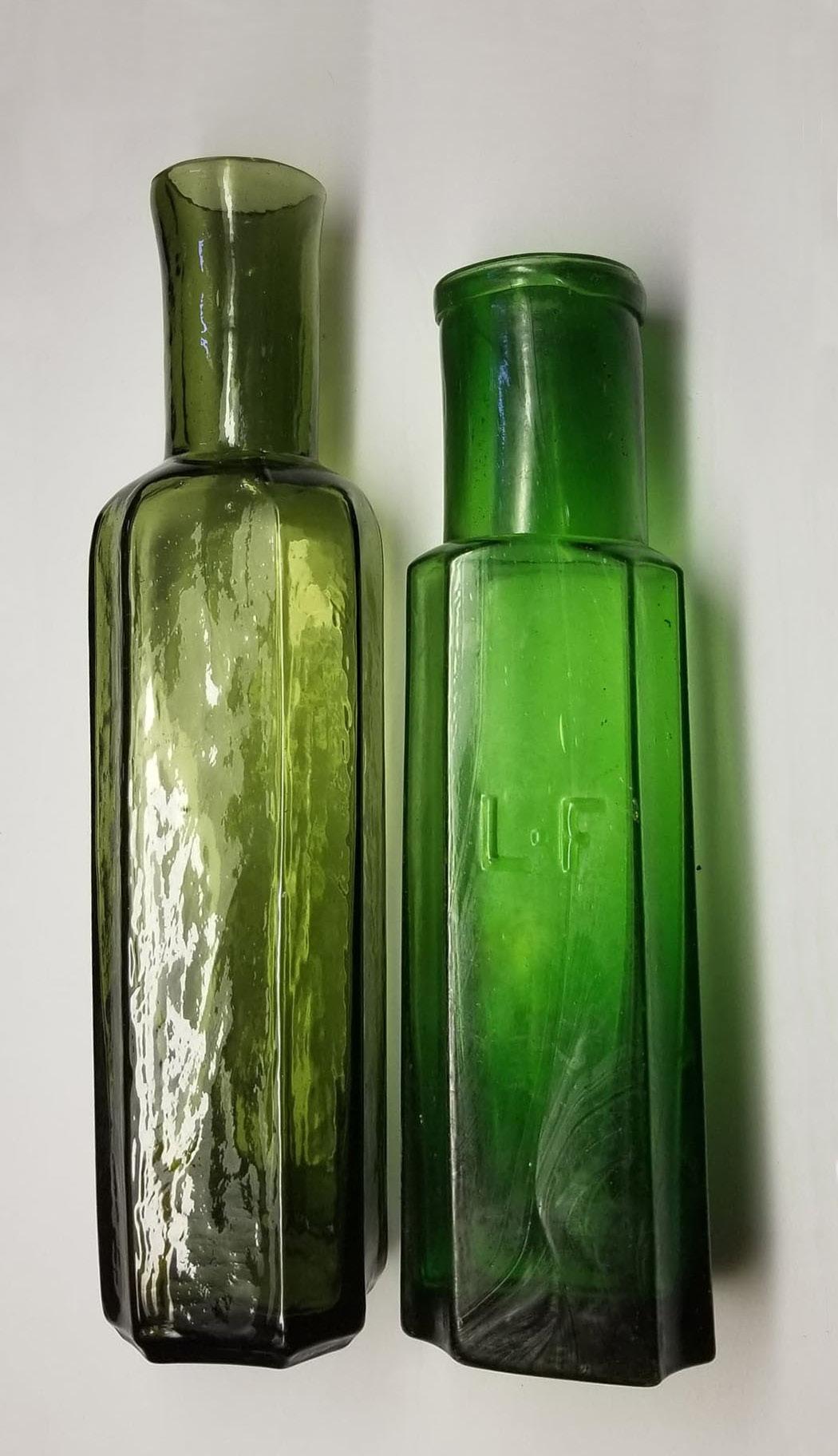
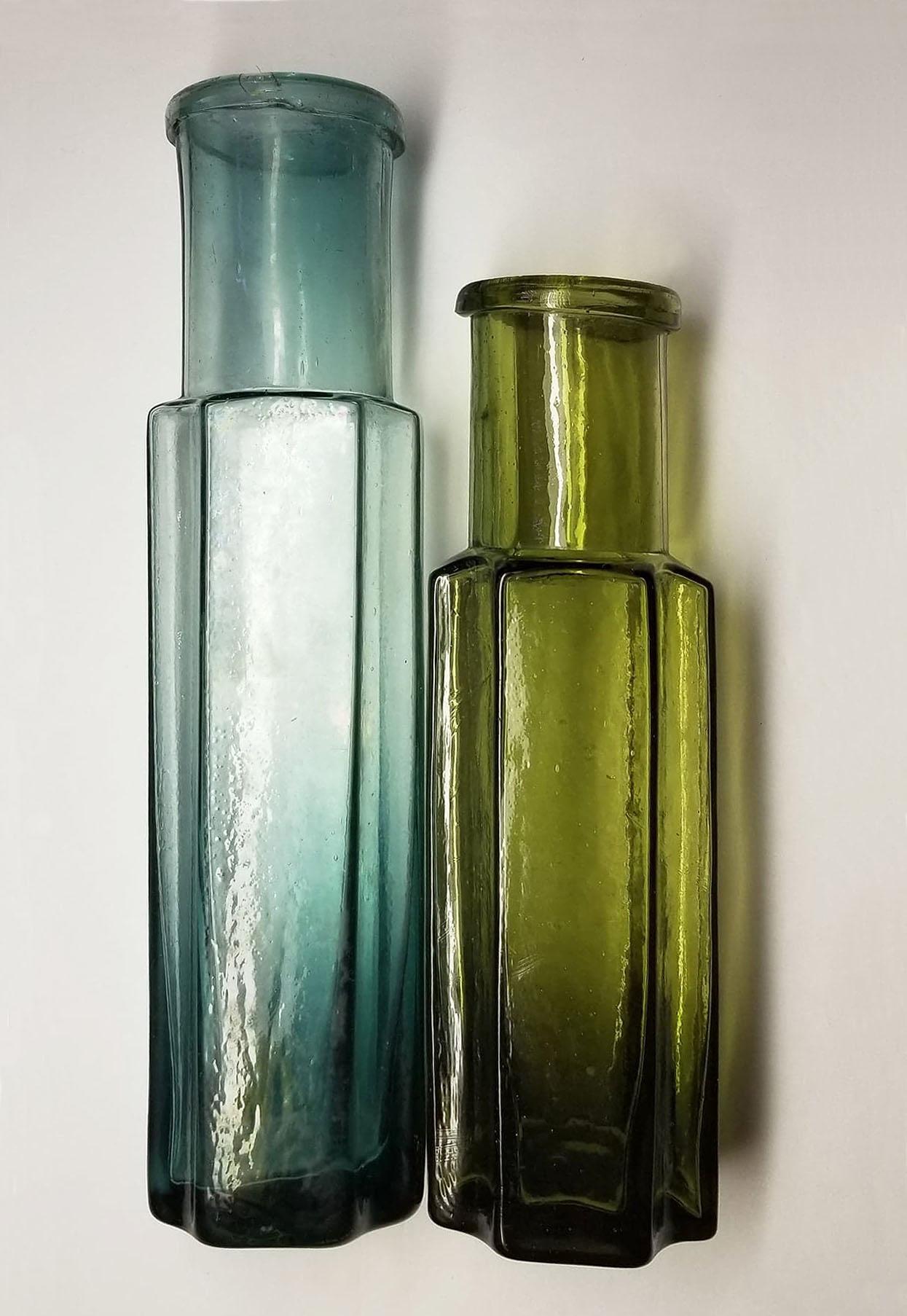
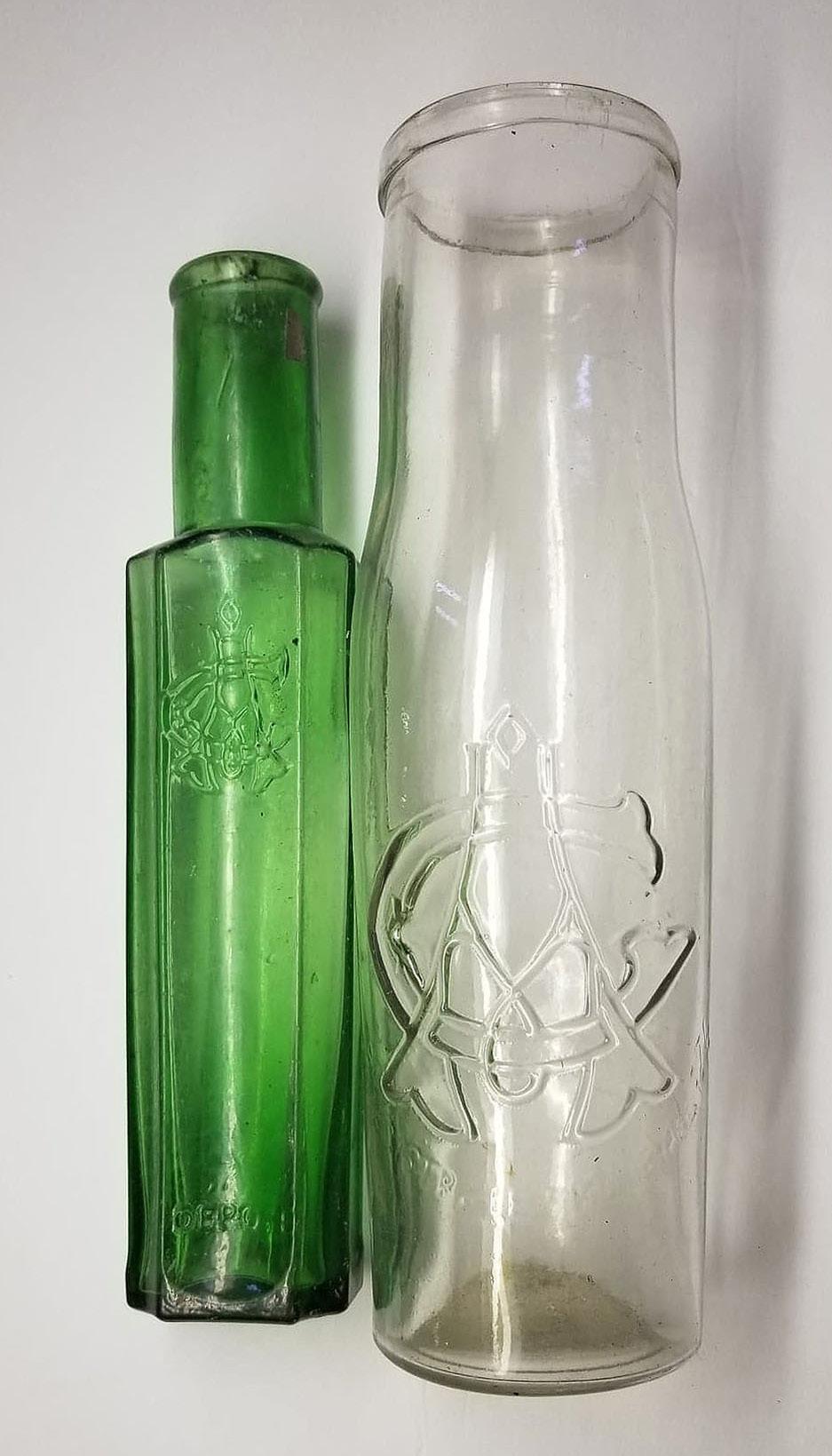
Additional Jars France c. 1850–1860. The jar on the left is pontiled and was dug in Old Sacramento, California in the same 15 foot privy pit as the jar on the left in Photo JP4. France c. 1870–1890. The jar on the right was dug in Manchester, England.
Additional Jars

France c. 1890–1920. The jar on the left was dug in the United Kingdom. France c. 1870–1890. The jar on the right was dug in the United Kingdom.
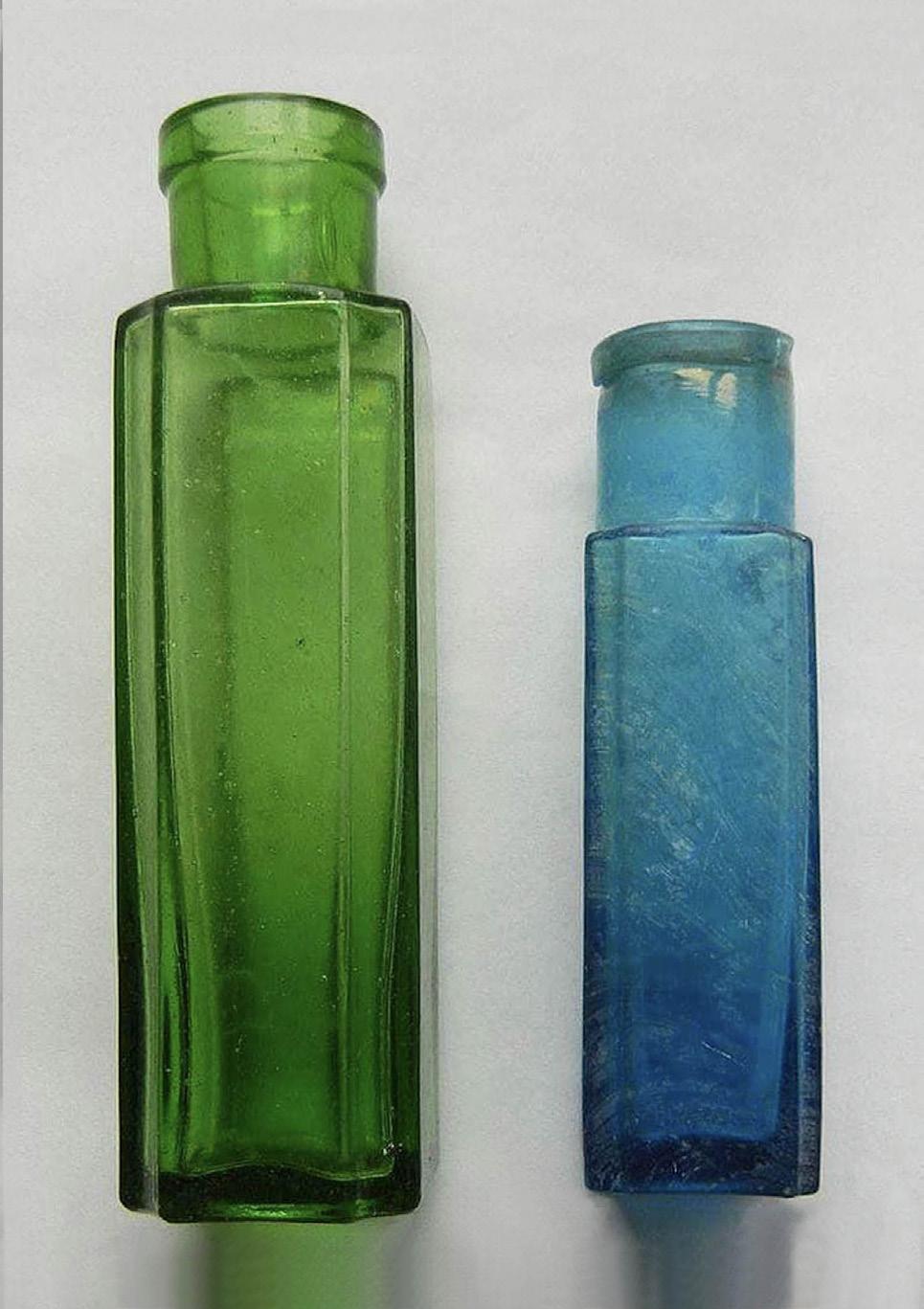 Photo JP6: [Left]
Photo JP7: [Left]
Photo JP8: [Right]
Photo JP9: [Right]
Photo JP6: [Left]
Photo JP7: [Left]
Photo JP8: [Right]
Photo JP9: [Right]
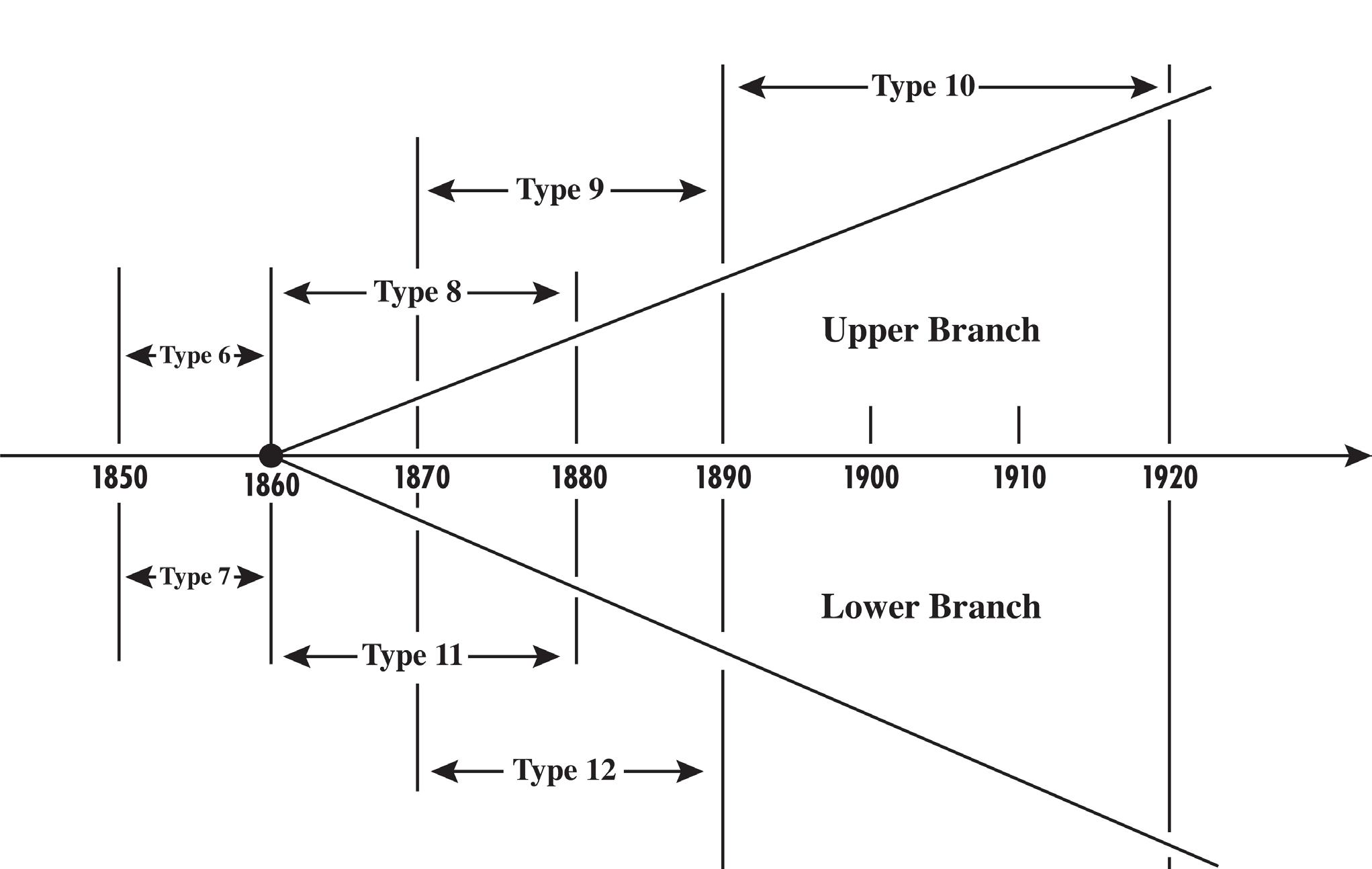
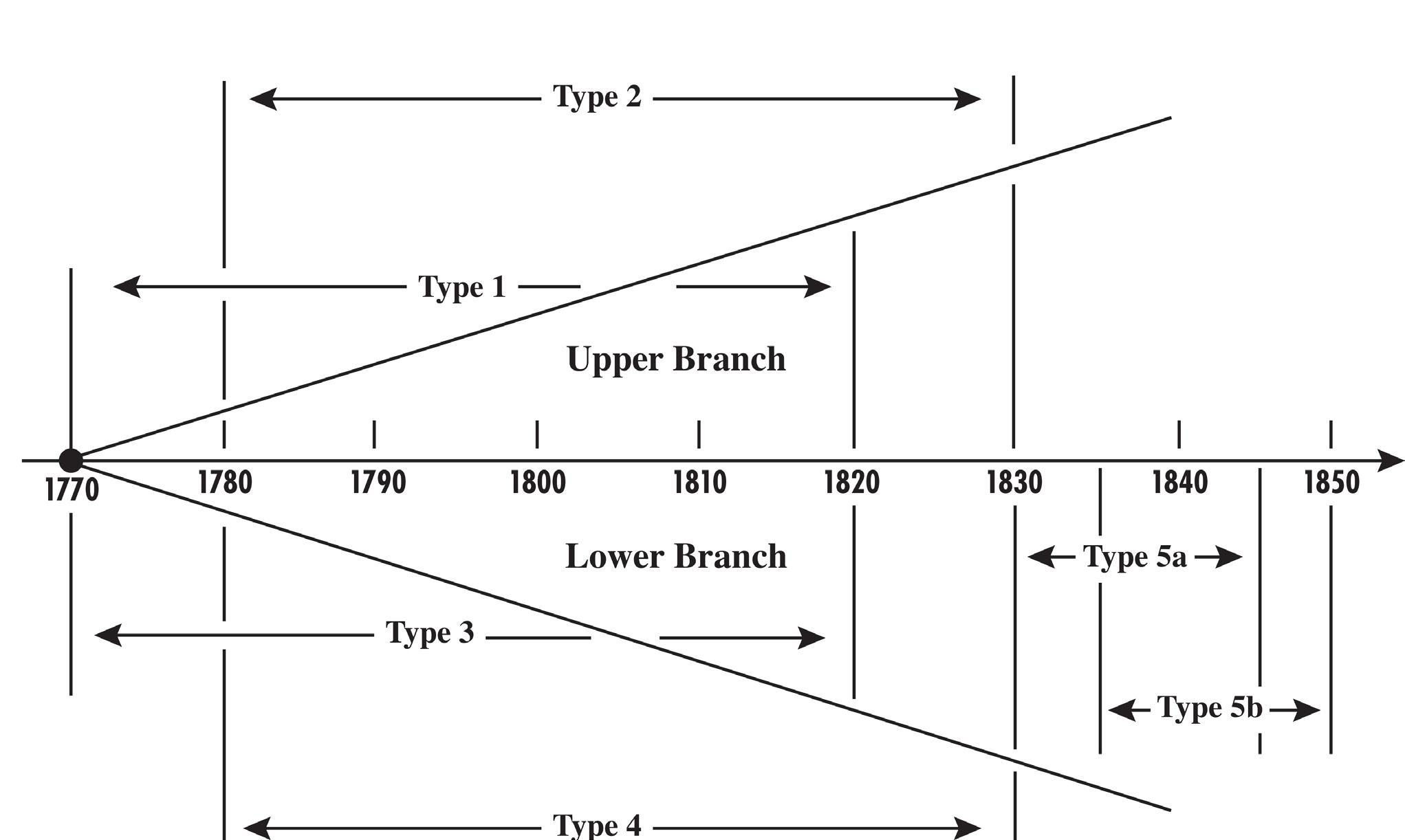
The end of the capers trail in this article is reached. The classification of capers jars by type may be useful in determining the date of a particular jar. Diagrams 1 and 2 show the placement of the Types 1–13 jars on the evolutionary trail. The diagonal lines highlight the Upper and Lower Branches.
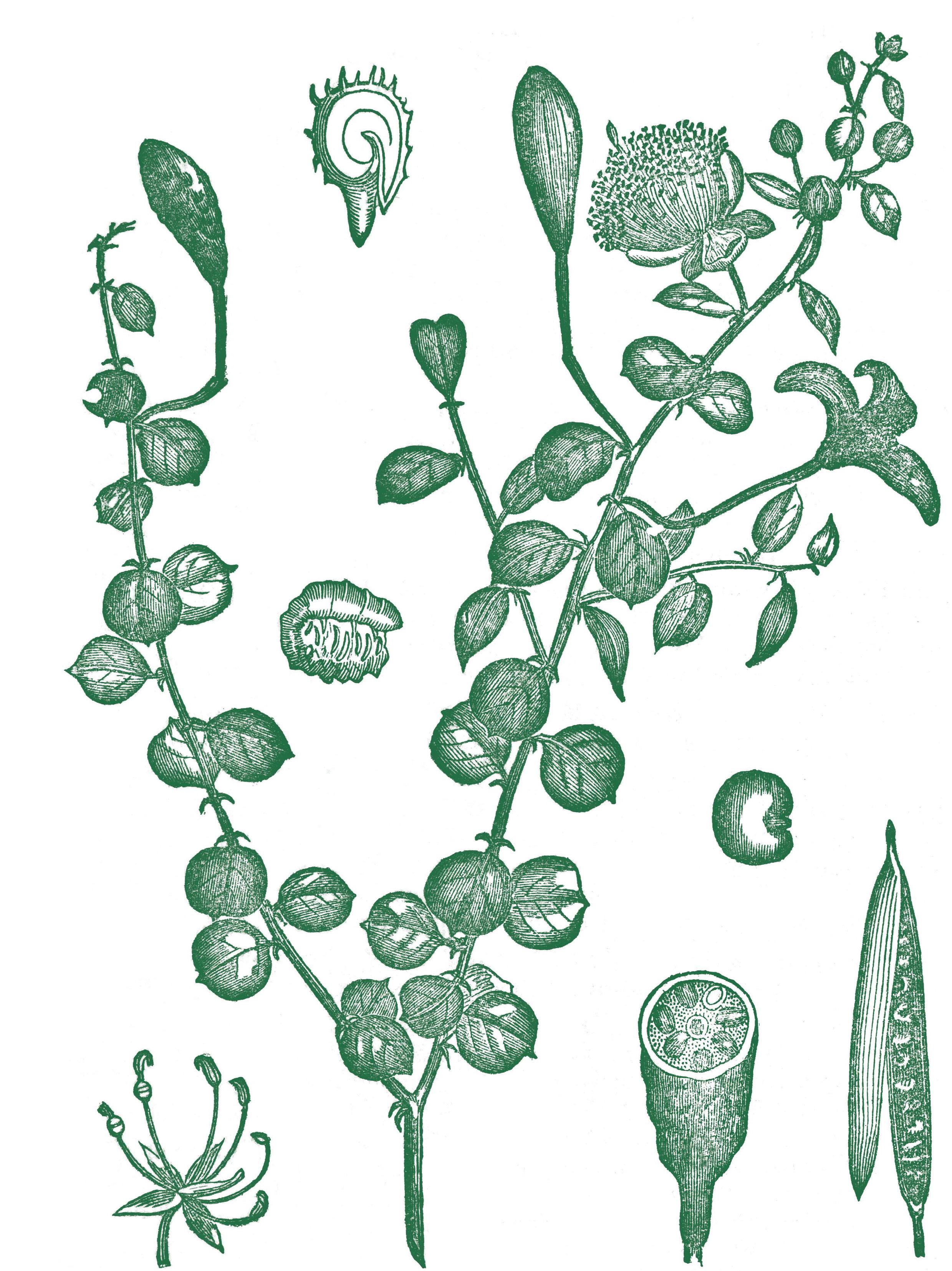
Diagram 1 has two branches beginning in 1770. Commencing in 1780, the conical and cylindrical body styles undergo a change in lip finish during the same time period.
Diagram 2 has two branches starting in 1860. Commencing in 1870, the tapered and straight body styles undergo changes in lip finish during the same time periods.

Unlike the coveted historical flasks, many of which were lovingly passed down by our ancestors, the mundane capers jars were mostly discarded thus making the early types and even some later types a challenge to find. For about 20 years, the author had a bottle shop and tumbling service located on US Route 1 in Searsport, Maine. Many of my customers were not bottle collectors but just wanted some inexpensive, nicely shaped and colored bottles to display in a sunny window. Except for the ones I kept, mostly in Photo G, I sold every capers-type jar I could find. I learned that all kinds of folks like old bottles. I even sold some inexpensive bottles to be used as props by movie makers filming in the area. However, customers who were bottle collectors never paid much attention to my capers-type jars. It is hoped that this article will generate more collector interest and appreciation of these colorful and shapely jars and also the less publicized and less costly food-type bottles in general.
DIAGRAM 1: [Left Page] Evolutionary Trail, Types 1–5a and 5b. The Upper Branch shows the placement of Types 1 and 2 jars on the timeline. Note that the time intervals of Types 1 and 2 jars partially overlap since Type 2 jars probably did not replace Type 1 jars entirely. The Lower Branch shows the placement of Types 3 and 4 jars on the timeline. Similarly, the time intervals of Types 3 and 4 jars partially overlap since Type 4 jars may not have replaced Type 3 jars entirely. As explained in the text, Types 1 and 3 jars were likely manufactured concurrently and similarly for Types 2 and 4 jars so the time intervals of each pair coincide. The time intervals of Types 5a and 5b jars partially overlap since Type 5b jars probably did not replace Type 5a jars entirely.
Types 6 and 7 jars occupy the same period on the timeline. It so happens that Type 6 jars are French whereas the Type 7 jar is American. Beginning in 1860 the Upper Branch shows the placement of Types 8–10 jars on the timeline. Note that the time intervals for Types 8 and 9 jars partially overlap since Type 9 jars probably did not replace Type 8 jars entirely. The Lower Branch shows the placement of Types 11–13 jars on the timeline. Similarly, the time intervals for Types 11 and 12 jars partially overlap since Type 12 jars may not have replaced Types 11 jars entirely. Observe that the time intervals for Types 8 and 11 jars coincide since they differ only in body style and were mold blown with sheared lips so these two types of jars were likely manufactured concurrently. Similarly, the time intervals for Types 9 and 12 jars coincide since they differ only in body style and were mold blown with applied or rolled lips so these two types of jars were also likely manufactured concurrently. Starting in 1890, the timeline shows Types 10 and 13 jars likely being manufactured concurrently since they were mold blown with “standard” lip finishes2 and differ only in body style.
References: 1. Bellanger, Jacqueline, Verre d’Usage et de Prestige, Les Editions de l’Amateur, Paris, 1988. 2. Bottle Finishes, Bottle Bases, Food Bottles – Society for Historical Archaeology, online 3. History of Louit Freres, online 4. Musée du Verre, online
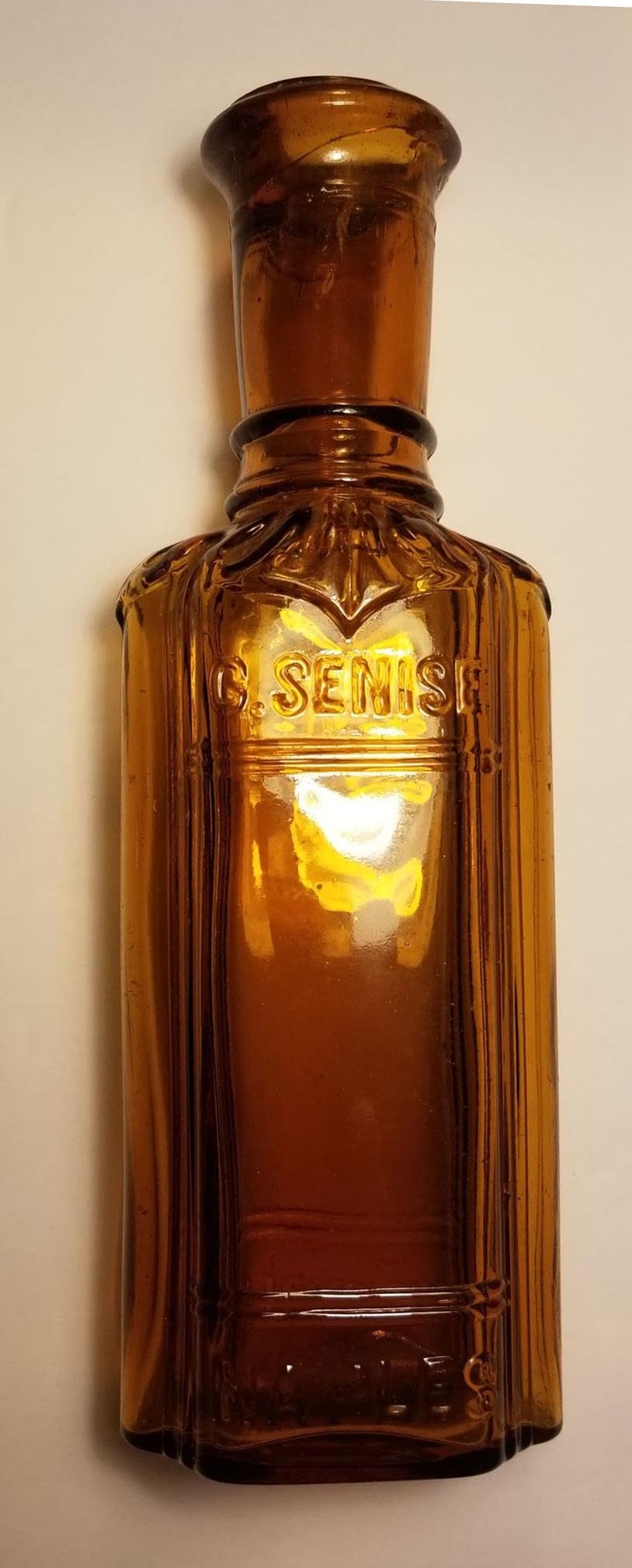
5. Van den Bossche, Willy, Antique Glass Bottles, Antique Collectors Club, UK & NY, 2001
6. Wikipedia, online 7. Zumwalt, Betty, Ketchup Pickles Sauces, Mark West Publishers, Fulton, California, 1980
Photo JP9: Additional Jars, Italy c. 1870. The jar was dug in Oakland, California and is embossed ‘B. SENISE / NAPLES’ and ‘B. SENISE / NAPOLI’ on opposing faces.WANTED: Anything to do with Dr. E. R. Clarke from Sharon, Mass.
All bottle sizes and variants, labeled or unlabeled, pontiled or unpontiled plus any related ephemera such as advertising, billheads and historical information.
Charlie Martin Jr. 781.248.8620
cemartinjr@comcast.net
Serious collector looking to buy a clear crown top embossed as illustrated. Will pay $500 for this bottle. Call or text Tom at 608.697-3452

Capital Region Antique Bottle Club

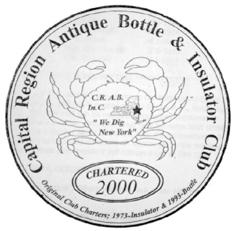
Annual Show & Sale Bottles, Stoneware & Early Antiques
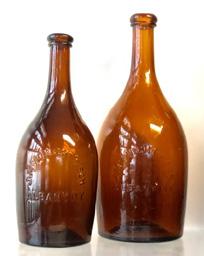

Free Admission!!!
Sunday, JULY 23rd, 2023 9:00am - 3:00pm At the Mabee Farm Historic Site 1100 Main St. Rotterdam Junction N.Y.

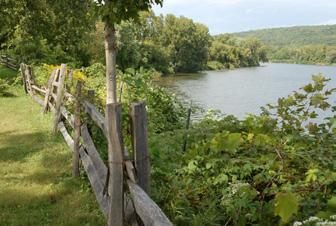
***This Will Be An Outdoor Vendor Show***
Dealers will get a 20’ x 20’ Space for $25 - Set-up at 7:30am (Bring your own Tables and Pop-Ups)
Plenty of Parking, Easy access, (limited inside tables for club members)
Dealer Contact Information:
Adam Stoddard - 518-256-7663 (acstoddard63@gmail.com)
Roy Topka - 518-779-1243 (rmt556@yahoo.com)
Antique Bottle & Glass Collector
Antique Bottle & Glass Collector
Dealers attending the show came from New York, New Jersey, Pennsylvania, Connecticut, Massachusetts, Delaware, and as far away as Indiana and Michigan. Also in attendance were representatives from several auction galleries. All in all, Kevin felt that it was a very successful bottle show.
Roy Topka, from the National Bottle Museum, in Ballston Spa, New York, reported that NBM’s “Bottles of the U.S.A.” exhibit received a boost recently. Representative examples from New Mexico and Alaska had been missing. Museum Trustee Phil Bernhard set about to rectify this situation. The Museum acquired a New Mexico Hutch, an Albuquerque Bottling Works, from a collector and received a donation from Zang Wood of his New Mexico Hutchinson Soda Bottles book. “This brings us one bottle away from completion, and we are still looking for a representative Alaska bottle.” The Museum welcomes a new Director, Kayla Whitehouse. “We look forward to her bringing her experience into the Museum as we move into 2023. We want everyone to know that the Museum now charges a $5 admission. Seniors are $4, children 12 and under, and current N.B.M. members are free. Meg Stevens, who has been a part of the Museum for 30 years, is stepping away. To honor her, she was awarded a lifetime achievement award at the Museum’s annual meeting. Meg was integral to running the Museum, helping with the Bottle Show, and doing just about everything that needed to be done. We wish her all the best.”

The Baltimore Antique Bottle Club held its Annual Show and Sale on March 12, and the Show Chairman has yet to submit a report of the day’s events. Hopefully, my next report will have an update on one of the Northeast’s best shows.

With Spring weather in the offing, the 52nd Rochester Bottle and Antique Show was held on April 16. Hopefully, Alan and Pamela Weber, Show Co-Chairs, will submit their report for the next issue of AB&GC.
The 6th Annual Dunkard Valley Antique Bottle Stoneware Show and Sale (DVABSS) is scheduled for April 30 in Morgantown, West Virginia. Don Kelley, Show Chairperson, should submit a report that will appear in the next issue of AB&GC.

Steve Guion, Chair for the Shupp’s Grove Bottle Festival, 607 Willow Street, Reynolds, Pennsylvania, asked me to remind shoppers and dealers of the upcoming Bottle Festival on Friday, May 19, 2023. Early buyers only from 11 am to 5 pm at a ticket price of $20 per person and running through Sunday, May 21, 2023. Saturday and Sunday hours are from 6 am to dusk; admission is free to all on these two days. You can contact Steve at william03301956@gmail.com or call him at 717.371.1259. He has information and dealer contracts for those wishing to set up at the Festival. He also wanted to remind everyone of the Summer Bottle Festival scheduled for July 14-16, 2023, at the same location.
On May 21, 2023, the Washington Antique Bottle Club (WABC) will hold its 49th Annual Show and Sale. Enjoy the great Spring weather in the area by getting out to support your local bottle club’s show. Until the next issue, happy bottle hunting!
You know Spring is here when Randy Taylor puts on his Chico Antique Bottle Show. The west coast has been hammered with the weather which greatly affected the attendance, so those hardy souls that made it had minimal competition. That was not good for the sellers, however. I am sure that I don’t need to remind most westerners that the next big show for us will be in Antioch, on April 21 and 22.
For those collectors who are interested in different or unusual bottles made for the western market, you may find an interesting medicine bottle at Western Bottle News (westernbitters.com) blog site. Some of the bottles are new to me and the stories behind them are fascinating. It couldn’t be more true that “behind every bottle is a story.” Some can be quite interesting like this “California Walnut Sauce, M.E. Young & Co., Los Angeles” pictured left.
The bridge between local historical societies and bottle collectors is proceeding very nicely in my little area of the world. Our local club member, John Burton, is maintaining an active speaking schedule with local historical groups. The results have been quite positive with the hope that this collaboration can spread. John’s latest talk is represented by the attached announcement. (see above right)

Ralph Finch admits that—he is cane and just able to bring a monster cane home... and it is now called—”Canezilla.”
John explained his interest: "We have perhaps a dozen or so different canes. It's not so much that we collect canes; it's that we actually collect across almost all bottle categories, including whimsies and 'misc.' They tend to be colorful, and when you study them, they can vary greatly in terms of twists, colors, handle treatment, etc. It would be hard not to include at least a few in any well-rounded general collection of antique bottles and related glass as they represent the skill, and the art, of the glass blower. Our longest is probably around six feet. Yes, we have seen longer examples."
Thanks, John. See, some people don't like to buy large glass at auctions and have them wrapped and shipped hundreds of miles…things that often don't survive the trip.
And the Finches? Recently, at an auction house in downtown Detroit, an interesting glass cane came up for sale and we thought that we might have a chance.
The gallery, DuMouchelles, is only a 25-minute drive, and we thought we could also stop at a new barbecue restaurant for lunch. So we bid, and on Feb. 21, we picked up our new glass cane.
Collecting should just be about...collecting, and the fun of it, and sharing with other collecting friends, not sticking it into the faces of others and saying, oooooh, look what I've got. Still, and going to hell with doing it, I must casually say,
(FYI, DuMouchelles claims to have been in existence since 1927, and while it has gone through...valleys the past few years, it seems to have been doing well. In fact, this has been the third item we have gotten there.)
OK, I'm on the brink of being 83 and adhere to the old adage: He who dies with the most toys wins.
I've got a long way to go, but…I must admit that while Janet and I collect glass canes—we have maybe 125, most around the standard three-to-five feet long. One that has been the Glass Holy Grail is about nine feet long (tall?) that a friend has.
Sure, the canes with many colors blown in or the ones with fancy swirls are great, but what about the reallllly long ones? Not only the question of how a glass blower makes a very, very long glass cane but how would an extremely long one survive over a century plus of handling?
I know that a lot of people appreciate glass canes, but know only three who seriously collect them: John Pastor and Elizabeth Maxbauer of Michigan, Jim and Jodi Hall of Illinois, and Femia Alberts of Michigan. I asked them about their interest (and which is their tall cane), and one replied.
And did the glass cane survive? When we pulled up, the auction house had it wrapped in a spongy foam and taped to two large boards. And the only problem?
The auction house said it was nine feet long—which would have been amazing, but…they were wrong: The cane is nine feet, 10 inches long! Can anyone top that?
The only problem is: Where the heck does a 9-foot-10-inch glass cane go? As I write this, we are still looking. It is now on the dining room floor, which, fortunately, is 10 feet wide.
AndChris Davis of Newark, N.Y.: "It's taken me a while to respond, sorry. Anyway, here's what I came up with briefly: "I no longer actively collect glass canes, but I still have about a half dozen. I tend to resell them more now, mainly due to lack of space. I've had several that were close to seven feet. "I remember the late Joyce Blake (Glasshouse Whimsies) used to talk about an 11-foot cane that hung in a tavern in Lancaster, N.Y.
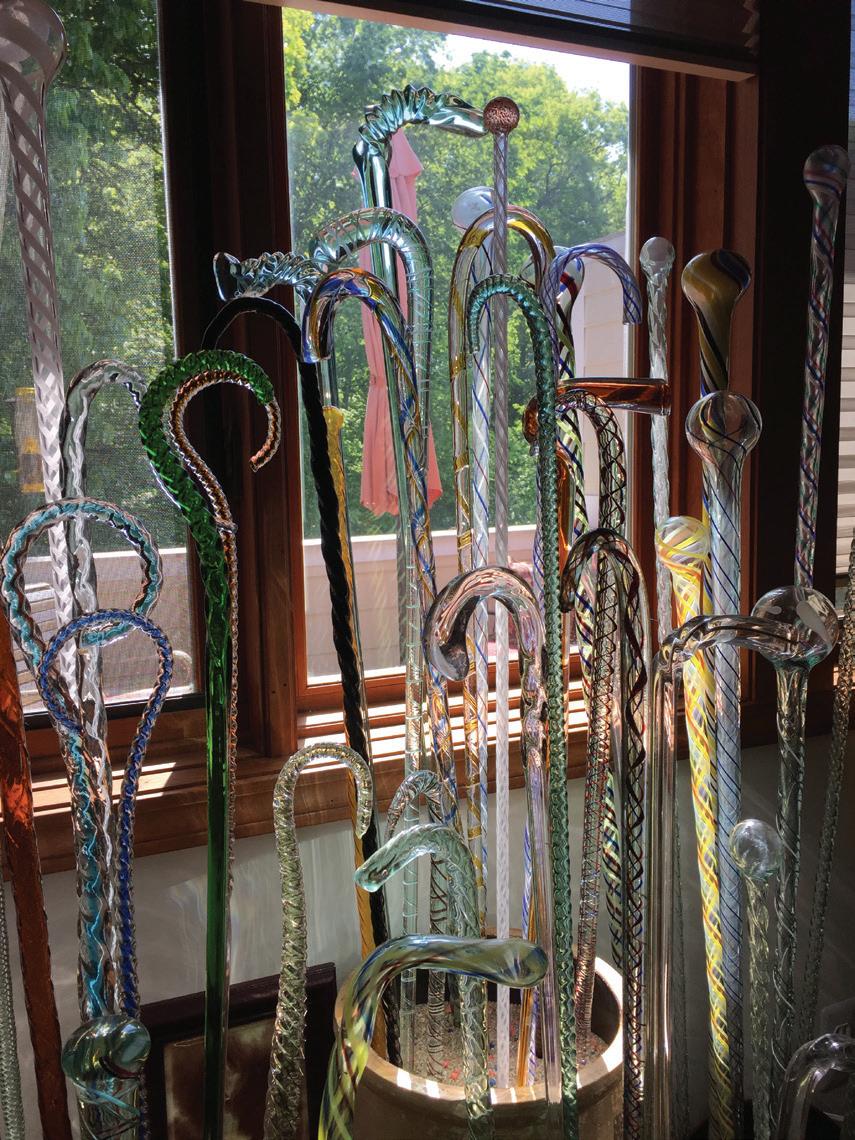
“Ooooooh, look what I’ve got”Photos by Janet Finch
So there it is, Canezilla, stretched out on our dining room floor like a multi-colored black snake? At nine feet and 10 inches long, where will we put it?
"I started collecting them back in the early to mid-1980s. I attended an outdoor antique auction in Geneva, N.Y. The auctioneer sold three nice glass canes as one lot. I bought them and remember standing in the crowd trying to hold onto them all!
"That got me started in a big way. I went right into other types of glass whimsies, became good friends with Joyce Blake (who lived near Buffalo and had a memorable display at the 1976 FOHBC Expo in St. Louis, which I admired greatly).
"I founded the Whimsey Club with Jeff Waterhouse at the 1988 Expo in Las Vegas, where we held our first meeting. Jeff became the newsletter editor and today is an accomplished glass artist in Pennsylvania. There were members from England, Canada, and a number of states. We met and displayed at the Rochester show every year."
Kim Kokles of Texas (where Texans usually brag that things are bigger there) recalled: "We visited Norman Heckler several years back, and he was bragging he had the longest glass cane…"

Norman Heckler of Connecticut replied: "Oh, Ralph! My two canes are 9 feet, 6 inches in length. Hecklers' {auction house} might be a good place to put your cane!"
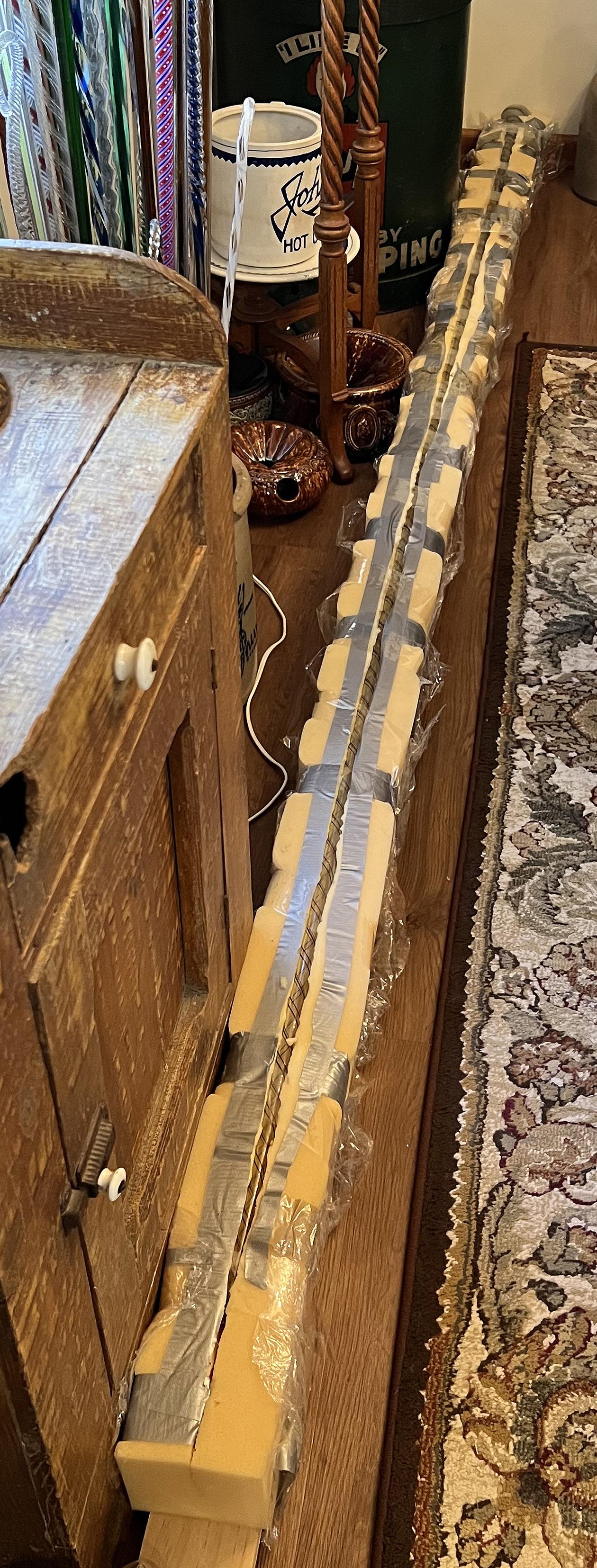
So, we brag to Norman, and that isn't easy since Norman has some of the greatest—and most diverse glass in the entire country. FYI: Norman is also a heavyweight when it comes to collecting…New England stone walls; now that's heavy. (The lightweight Finches have about a dozen antique bricks along our sidewalk, so…we yield).
And as the parade ends, holding our cane high, I conclude with: "Ours is nine feet, 10 inches!” If I die today, I leave this world as the king of glass canes(?) (and bad puns).
John Pastor of American Glass Galley said: "9 feet long is crazy!"
Ferdinand Meyer V of the FOHBC commented: "That's insane! The double-boxed jug (you recently purchased) is delivered broken, and then this package-of-all-packages!"
James Hagenbuch added an earthy comment: "When I was a young boy walking around in the woods at my grandfather's farm, I was spooked by a 10-foot-long black snake. I don't know which is scarier the black snake or the cane!"
Femia Alberts of Michigan said: "A miracle it survived. But it looks awesome. In my small house, it would have to be mounted above a doorway or window. Looks like you will have to tread lightly in the dining room for a while."
Ted Krist, the bitters Baron from Ohio, asked? "OMG! Do you call it Canezilla?" Thanks, Ted. I think I will use that word in the headline.
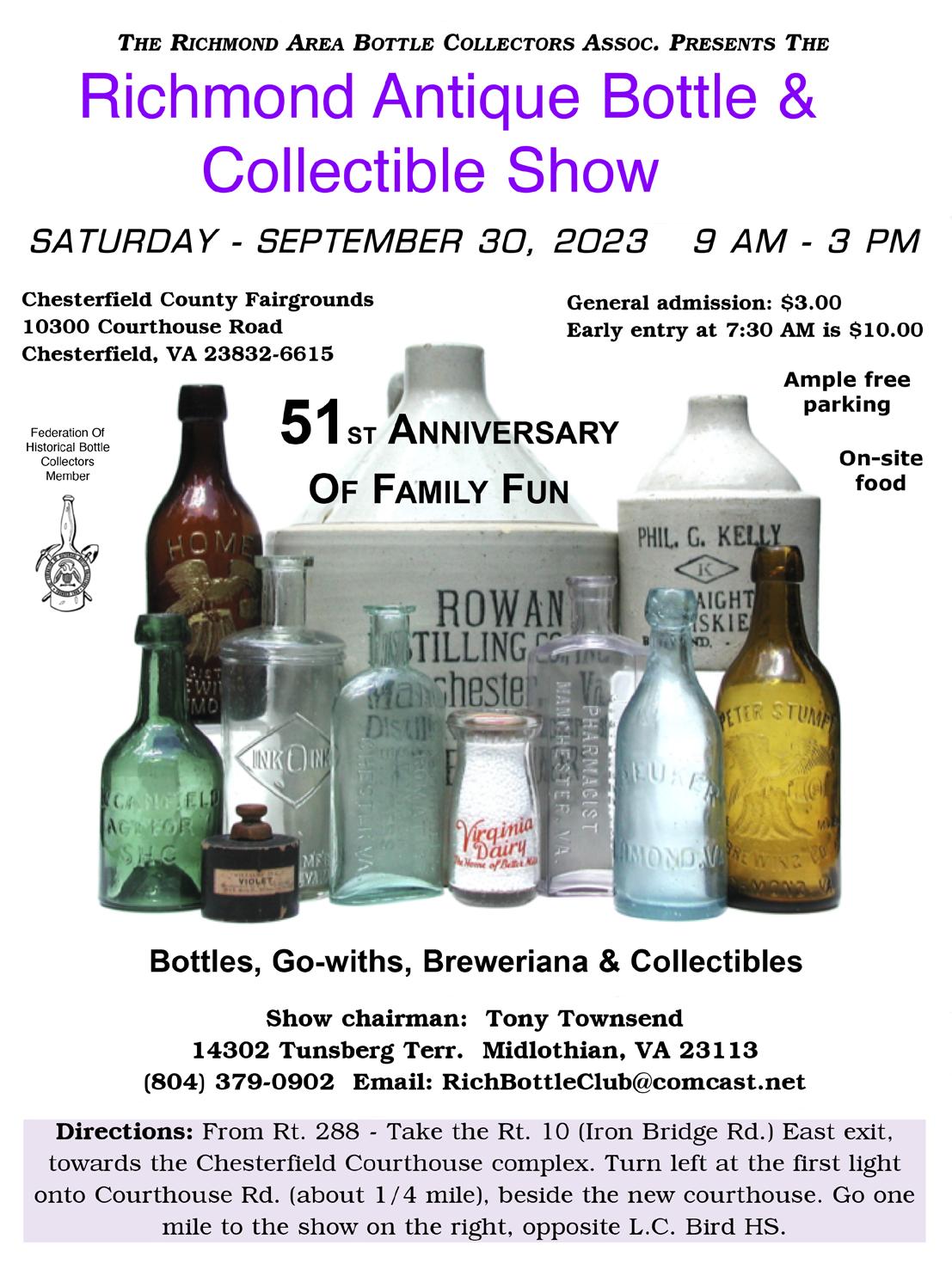
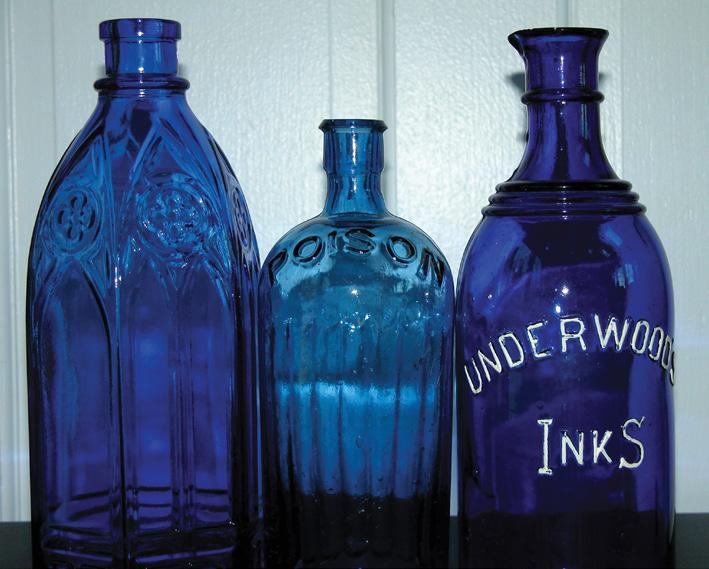


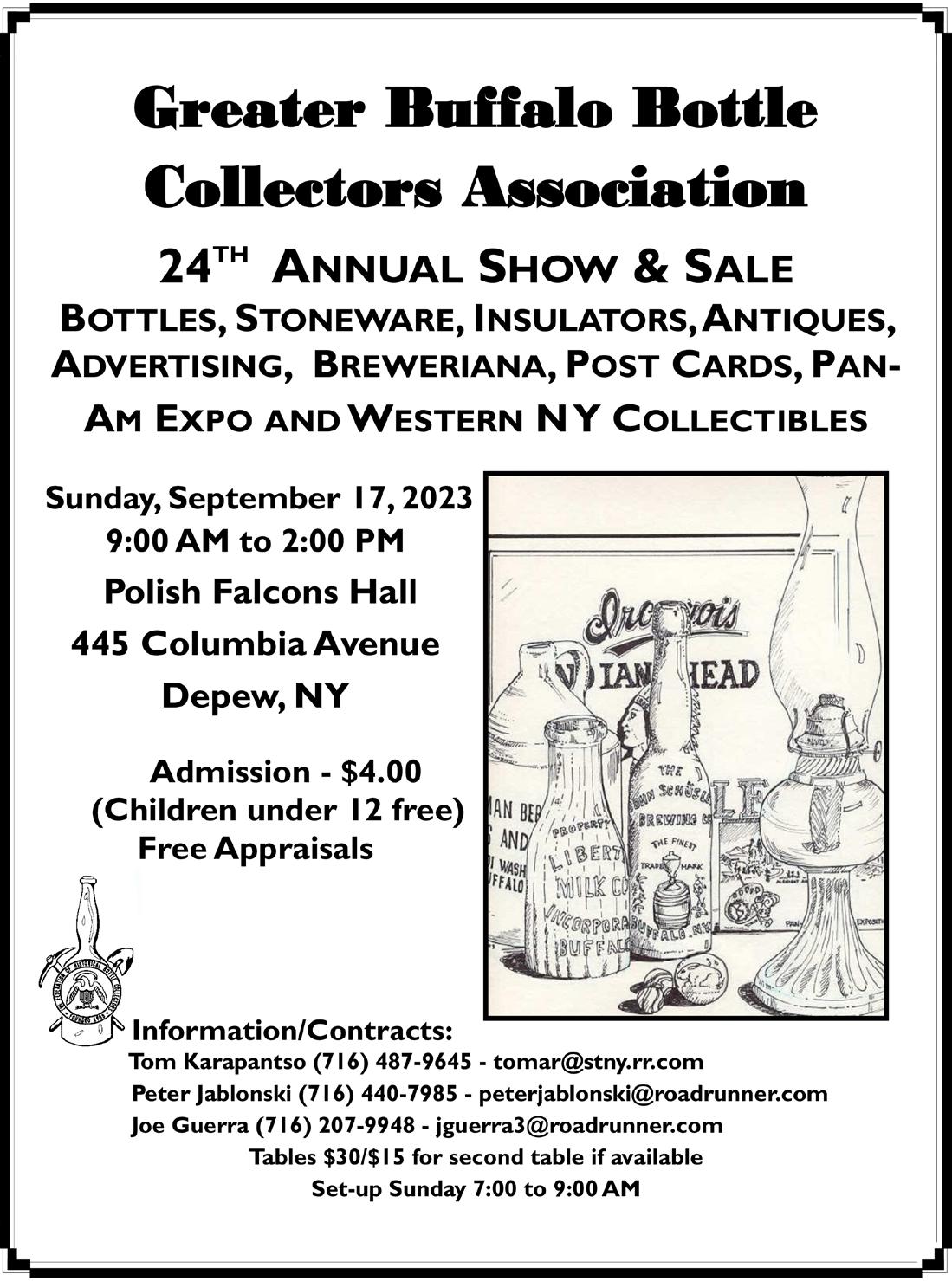
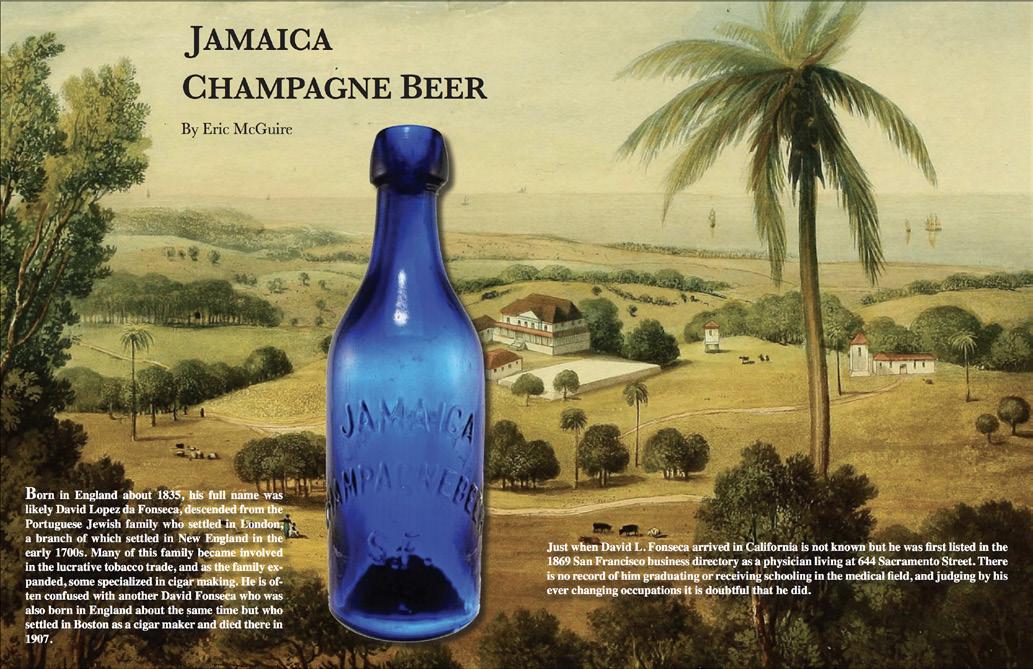
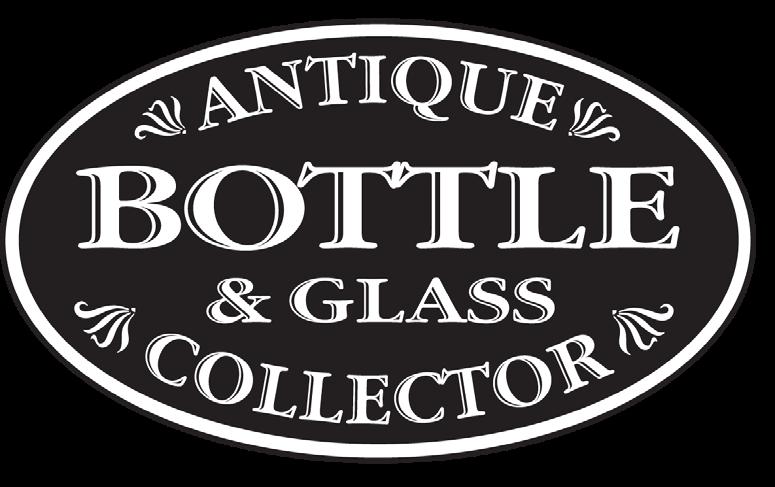
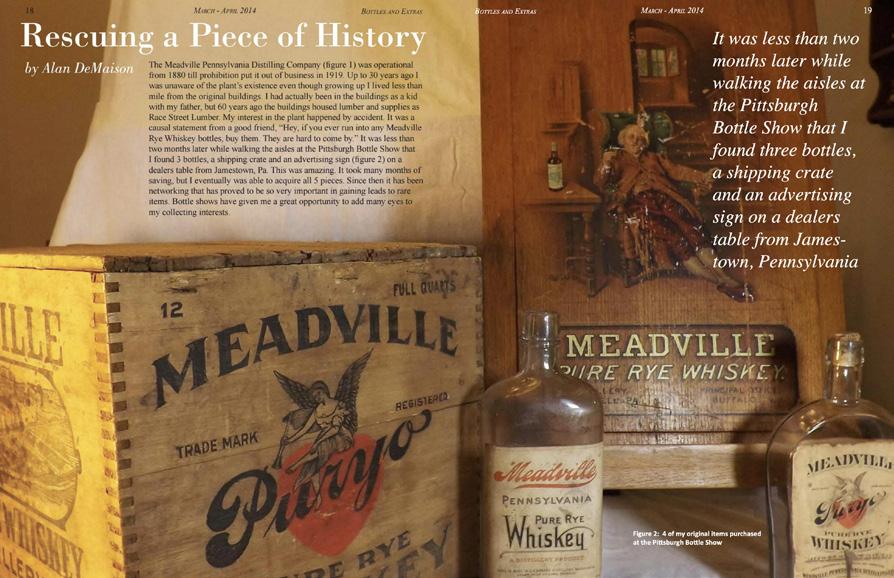
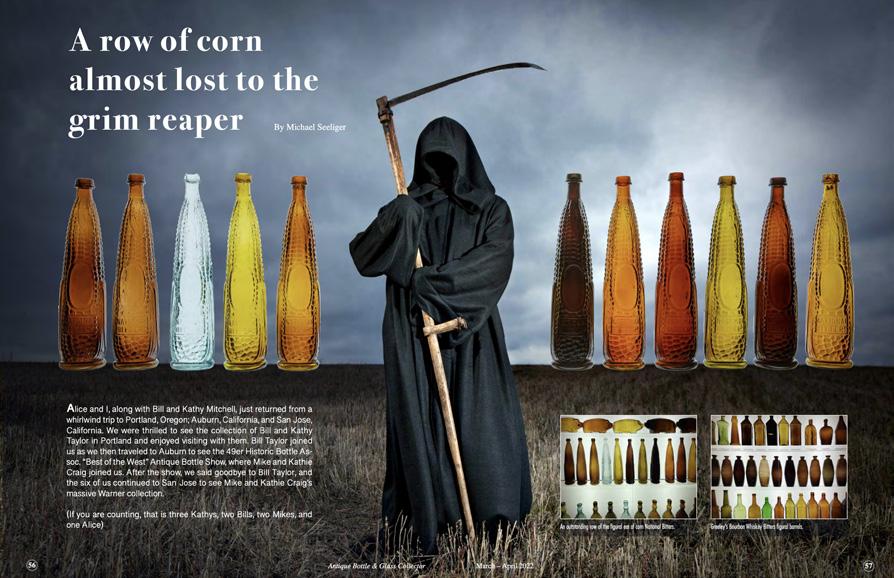
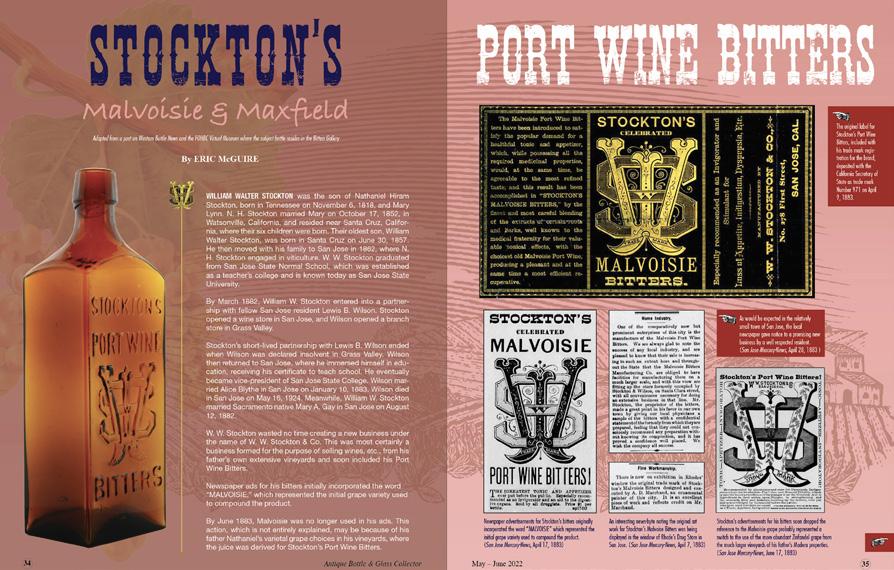
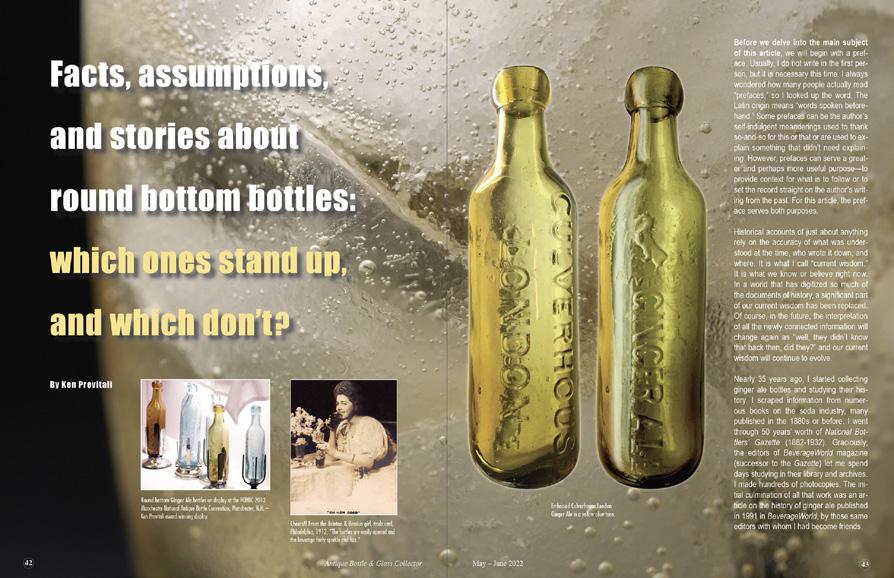
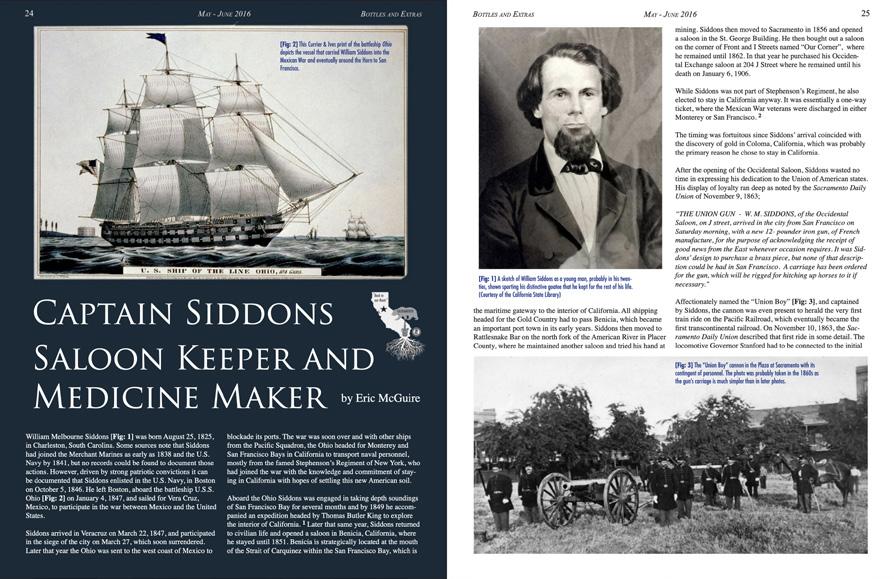
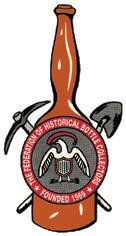
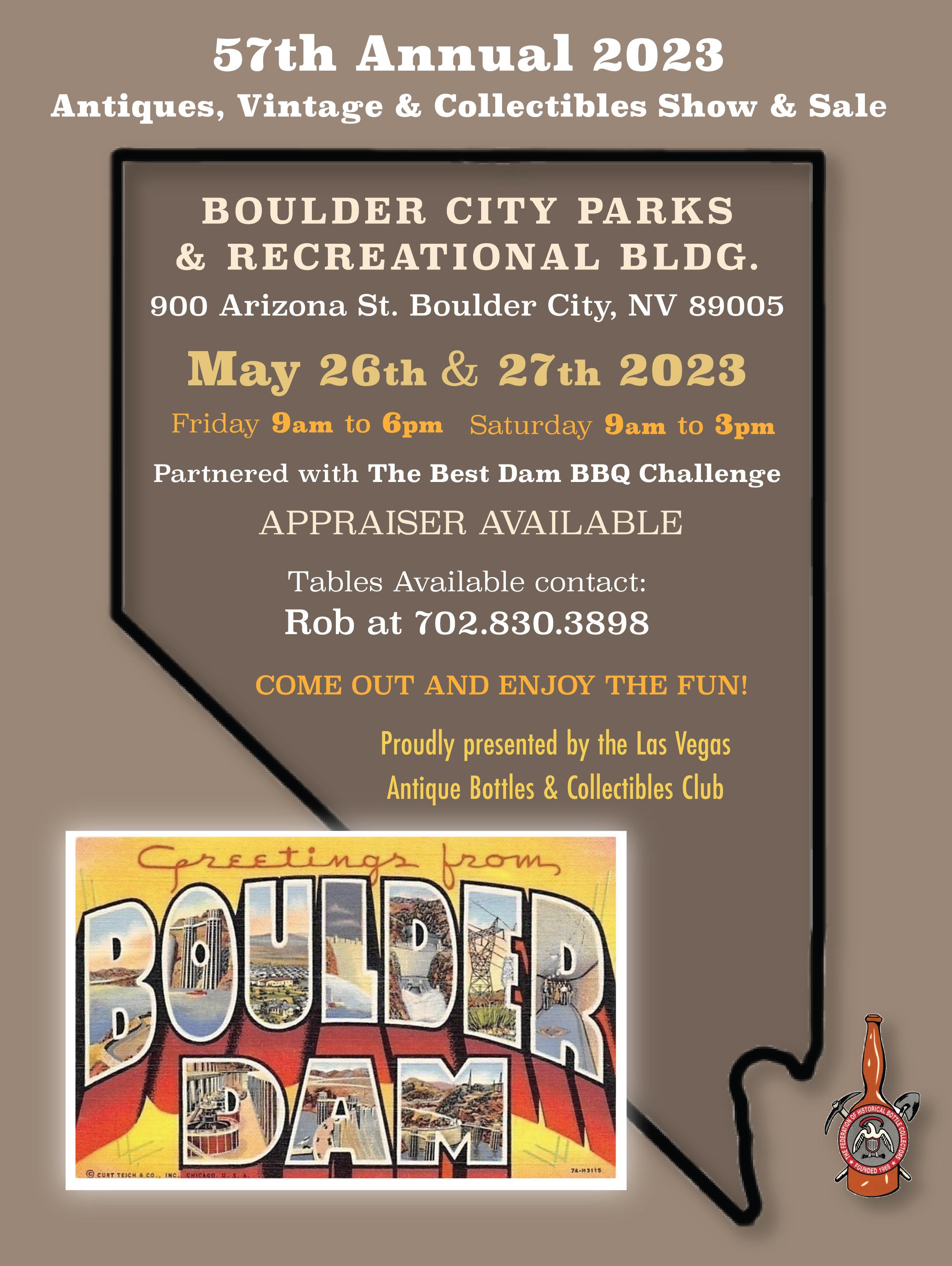


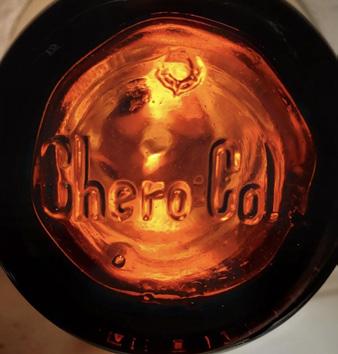
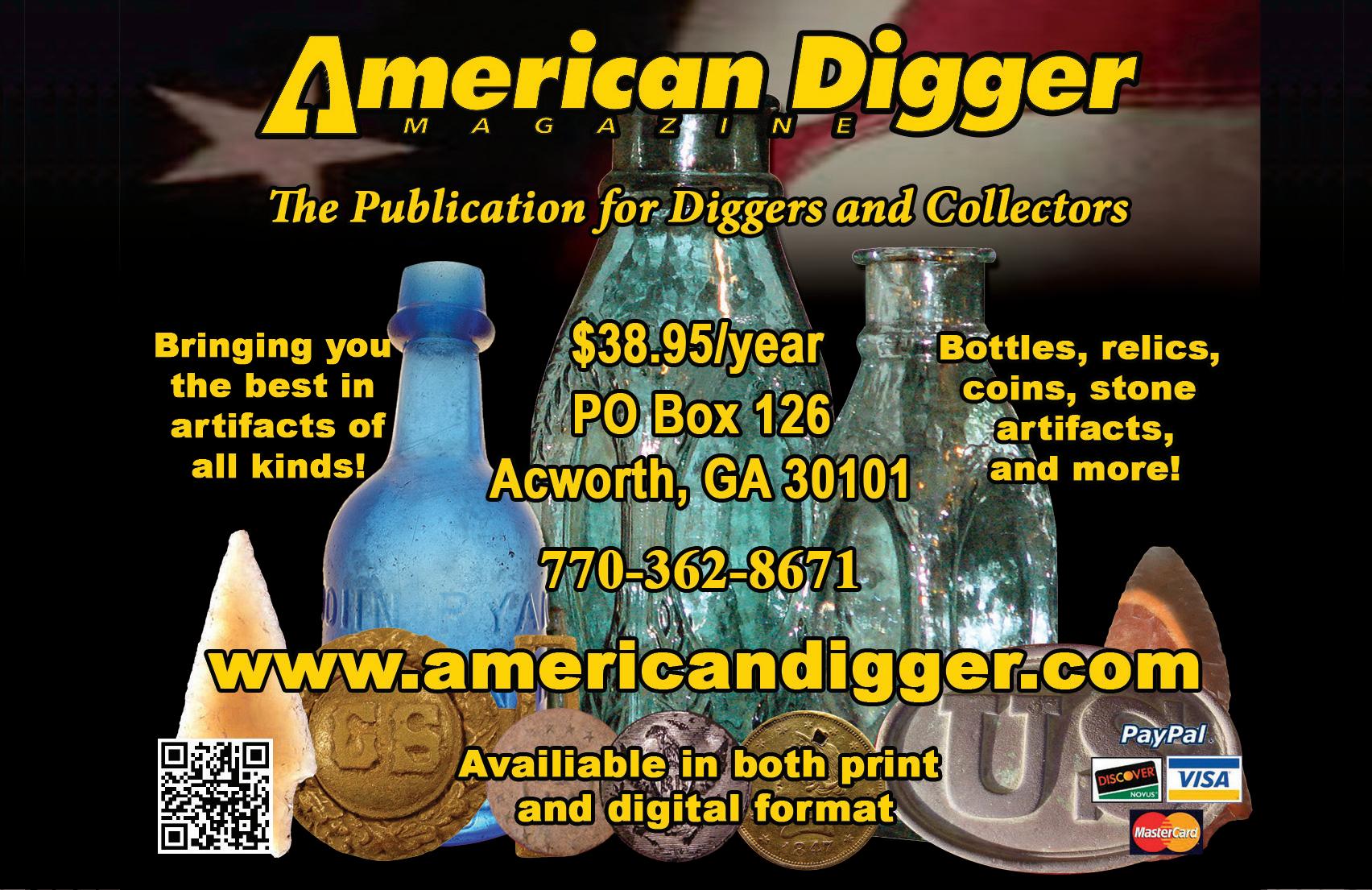
Read and see more in the FOHBC Virtual Museum.


[left and above] Last summer at the 2022 National Road Yard Sale in central Indiana I found this bottle at a garage sale. It was on a table with other modern glass flower vases. It turned out to be a rare iron pontil Noyes figural wine bottle from Hollywood Plantation near Natchez Mississippi, dating from about 1850. I put a picture of it on Facebook and before we even stopped at the next sale, my phone started ringing from collectors interested in the bottle. To be fair to all interested parties I sold the bottle by eBay auction and it brought $3,100. Crazy how a bottle that rare from Mississippi showed up in Indiana, in perfect condition, for a dollar...170 years later. – Jay Kasper
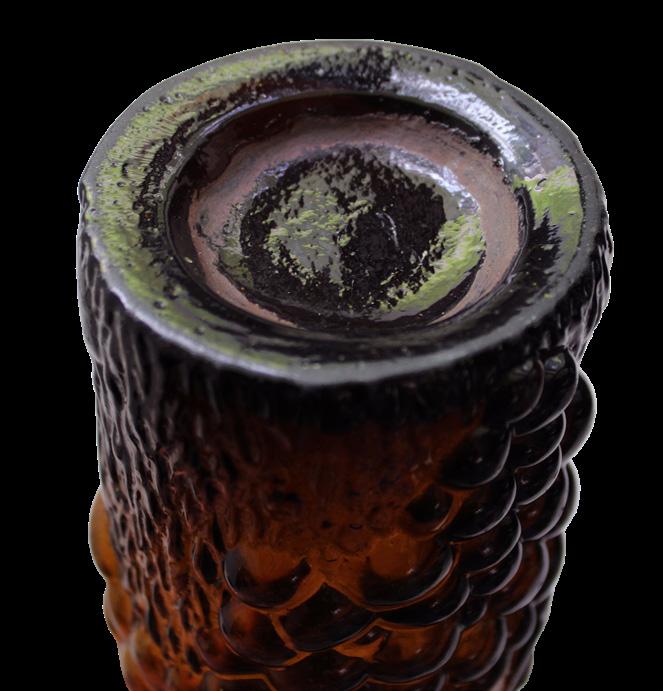

[above] Construction workers in Italy’s capital, Rome, had quite a surprise recently whilst carrying out sewage system repair work in the city. They stumbled across a marble statue of an ancient Roman Emperor! Not only that, the life-size sculpture was found to be posing as the classical hero Hercules. Experts think the statue is that of Emperor Decius, who ruled Rome in the third century, and plan to put the statue on public display once it has been restored.
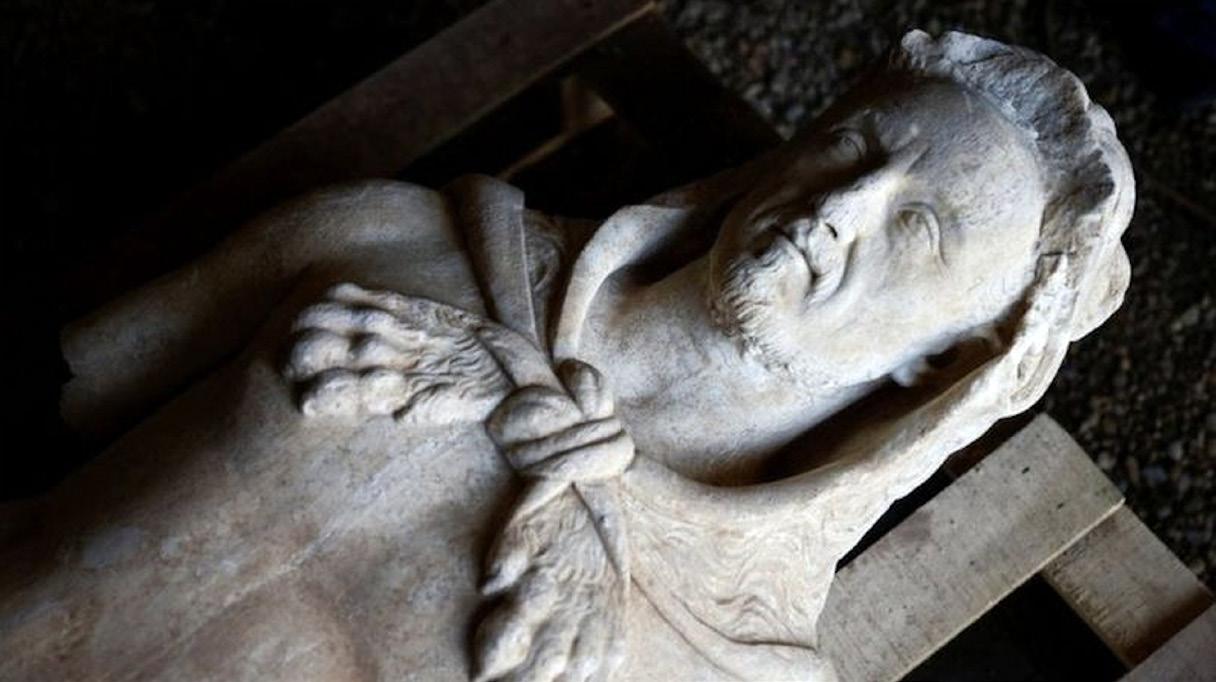
– BBC Reuters
[left and below] This super-rare orange Lamborghini was found at the end of an Oregon dirt road in a barn on an 800-acre rural ranch in 2000. The 1969 Miura S was preserved in original condition and is a model some call ‘the most beautiful car of all time.’ When the owner died in 2005, Jeff Meier was notified by the estate, and was able to acquire the Miura at market price. In a 10-year period, he took the car from being a “barn find” to a first-in-class winner at the Pebble Beach Concours d’Elegance [widely regarded as the most prestigious vintage car show in the world] in California. Lamborghini was founded as a car maker in 1963. –The Wall Street Journal
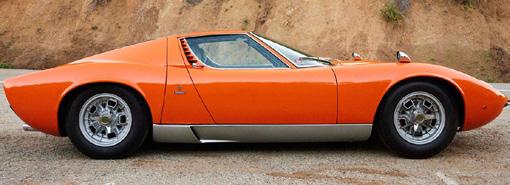
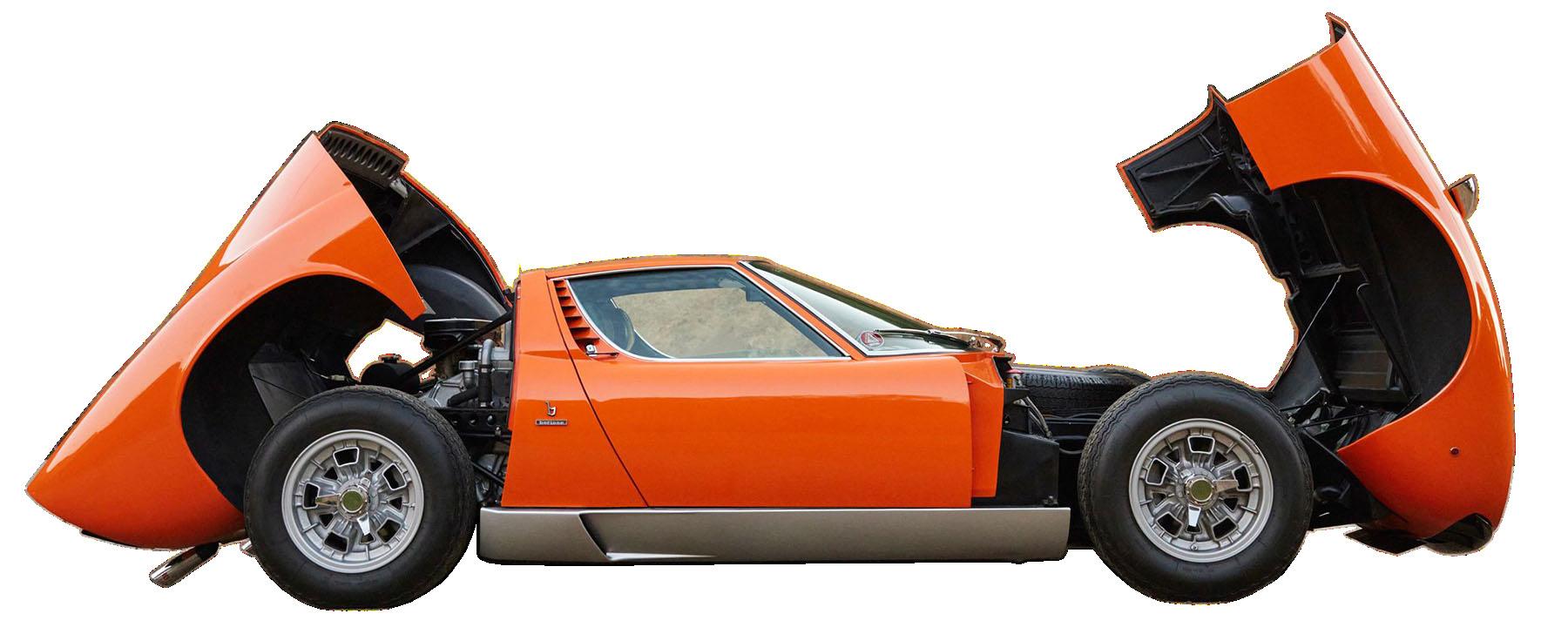
[left] A 100-year-old islander has recently revealed how he was one of the men who smuggled bottles of Scotch from the wreck of SS Politician, the “Whisky Galore” ship. Willie Macleod from Stornoway, Lewis, was part of the salvage team after the ship ran aground close to Eriskay in the Hebrides in 1941. It was carrying 40,000 cases of whisky. The story was told by Compton Mackenzie in Whisky Galore, the 1947 novel that was made into a film twice, in 1949 and 2016. – The Times, UK

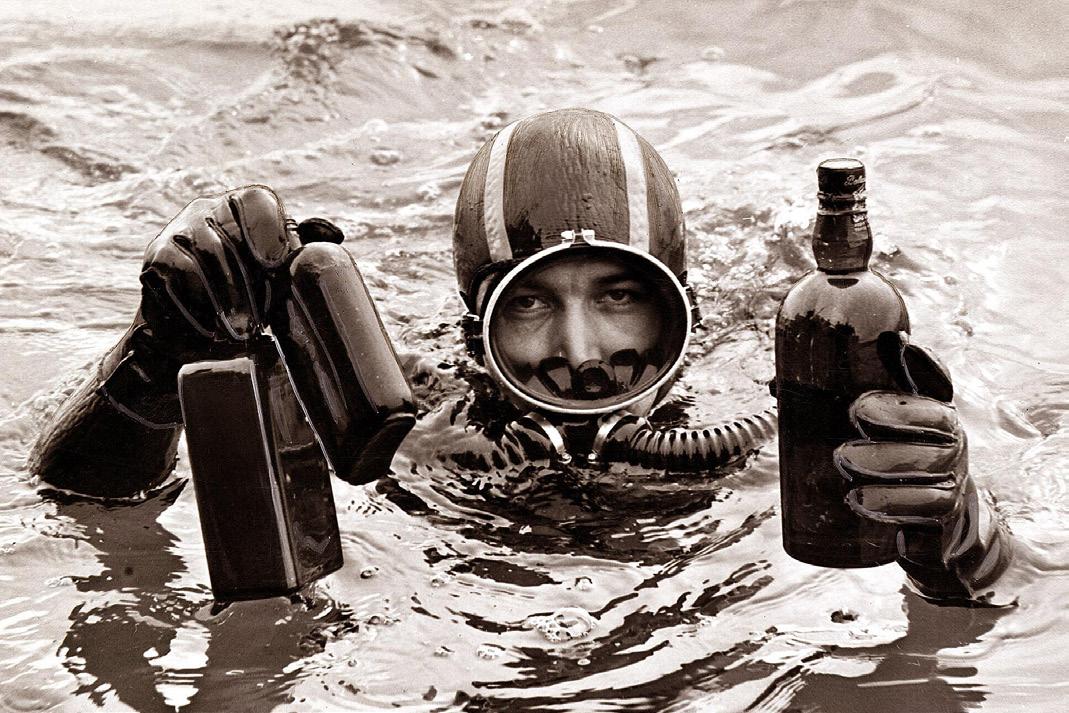
[left] Seven Class of 1846 bottles were offered for sale at an auction in Spencer, Massachusetts today (08 March 2023). They were found cleaning out an old home nearby. The price was around $1,200 each. One or two had some damage.

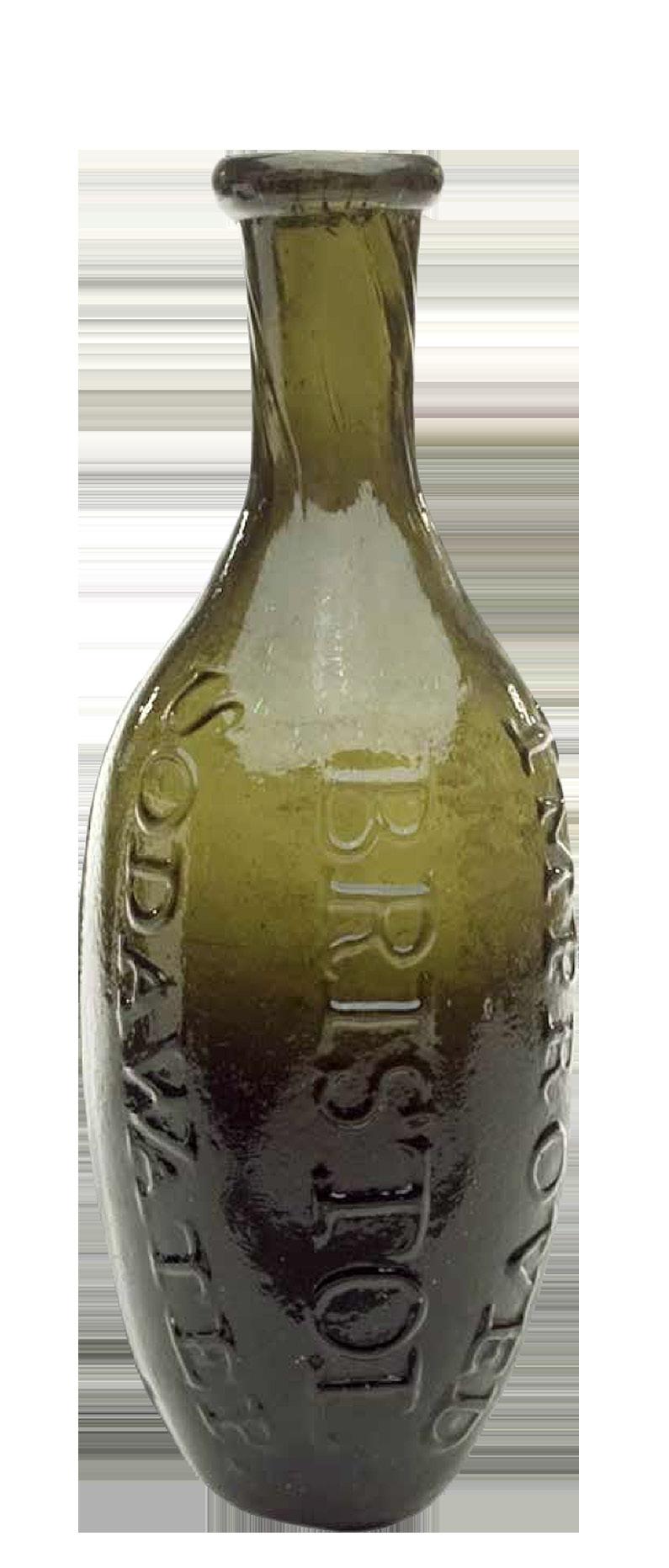

[left] This exceedingly rare and important Bristol Improved soda water bottle was recently found at a second-hand store In Detroit, Michigan. Believed to be one of only two recorded, this example does not appear to have ever been in the ground. Beyond the obvious rarity, it’s a ‘looker’ with very large, impressive lettering and embossing around the entire bottle. – John Pastor, American Glass Gallery
[right] Just picked this Constitution Bitters from a basement in Ohio. –Daniel Baldwin


[left] This massive gold bullion bar was recovered from the SS Central America shipwreck. Inscribed on obverse “No. 708 32.15 Oz 882 Fine $586.17,” reverse “708” right side “Kellogg & Humbert Assayers” (outlined with rectangle). It measures 1-5/8 x 1 x 2 inches. Two assay chips removed from opposite corners. As it turns out, this ingot is accidentally metric. The 32.15 troy ounces stamped on the bar equals one kilogram. – SS Central America Collection
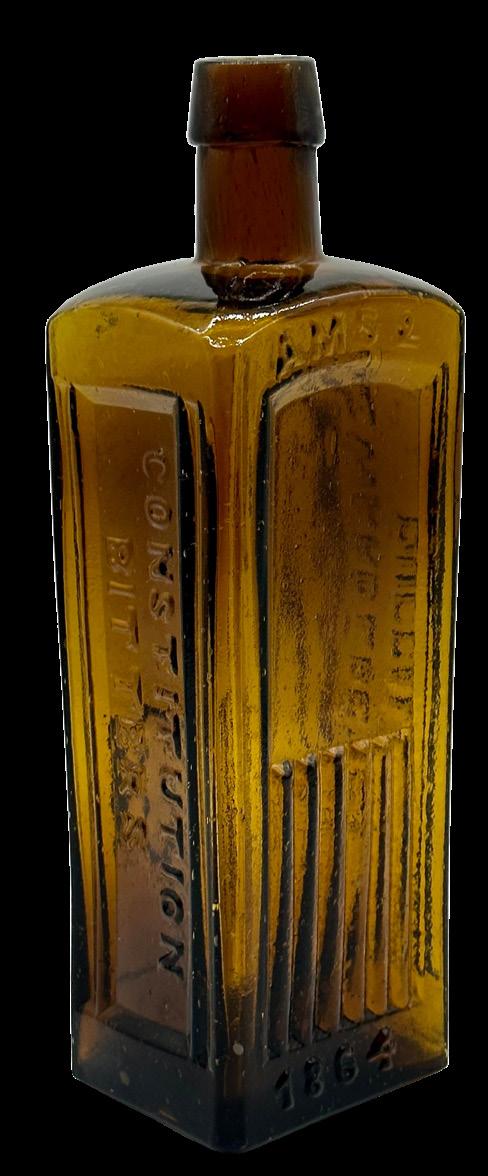
[above] In 1660, a ship carrying a treasure trove of luxury goods sank off the coast of Texel, the largest island in the North Sea. Nearly four centuries later, little remained of the wooden unidentified Dutch merchant ship. But as the silt and sand covering the wreck washed away, broken chests began to appear in 2010. Inside were remarkable objects, the likes of which had never been seen before including chests full of clothing, textiles, silverware, leather book bindings and other goods that likely belonged to people from the highest social classes centuries ago. Some of the most stunning items include two virtually intact lavish gowns—a silk dress and another one interwoven with pieces of silver that was likely a wedding dress that is pictured above. – Museum Kaap Skil, Netherlands


[above] Archaeologists have unearthed the remains of an ancient tavern that’s nearly 5,000 years old in southern Iraq, the University of Pennsylvania recently announced. The find offers insight into the lives of everyday people who lived in a non-elite urban neighborhood in southwest Asia around 2700 B.C.E. Inside the public eating space—which included an open-air area and a kitchen—researchers with the University of Pennsylvania and the University of Pisa found an oven, a type of clay refrigerator called a zeer, benches and storage containers that still held food. They also found dozens of conical-shaped bowls that contained the remains of fish. – Smithsonian Magazine

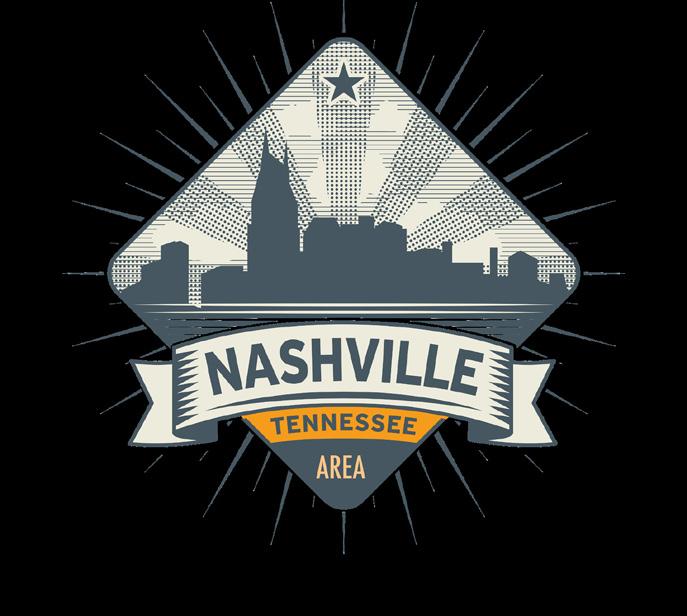
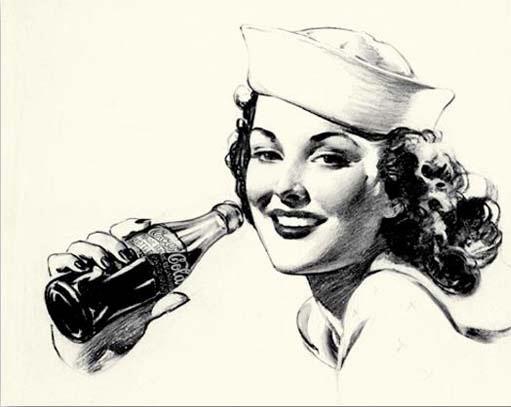
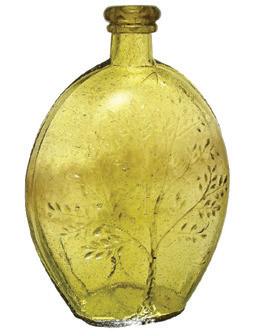
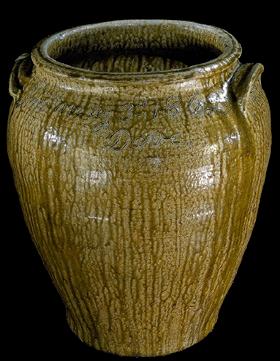
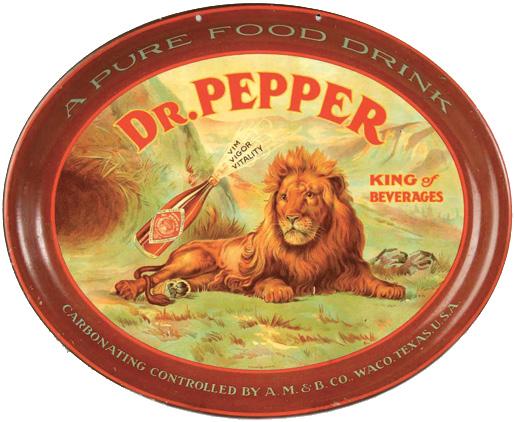





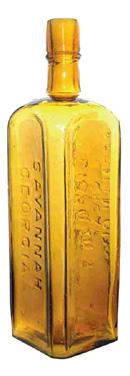
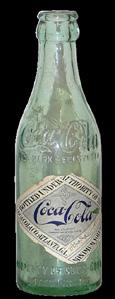


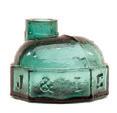


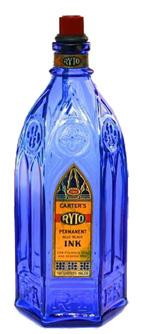

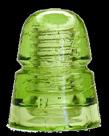

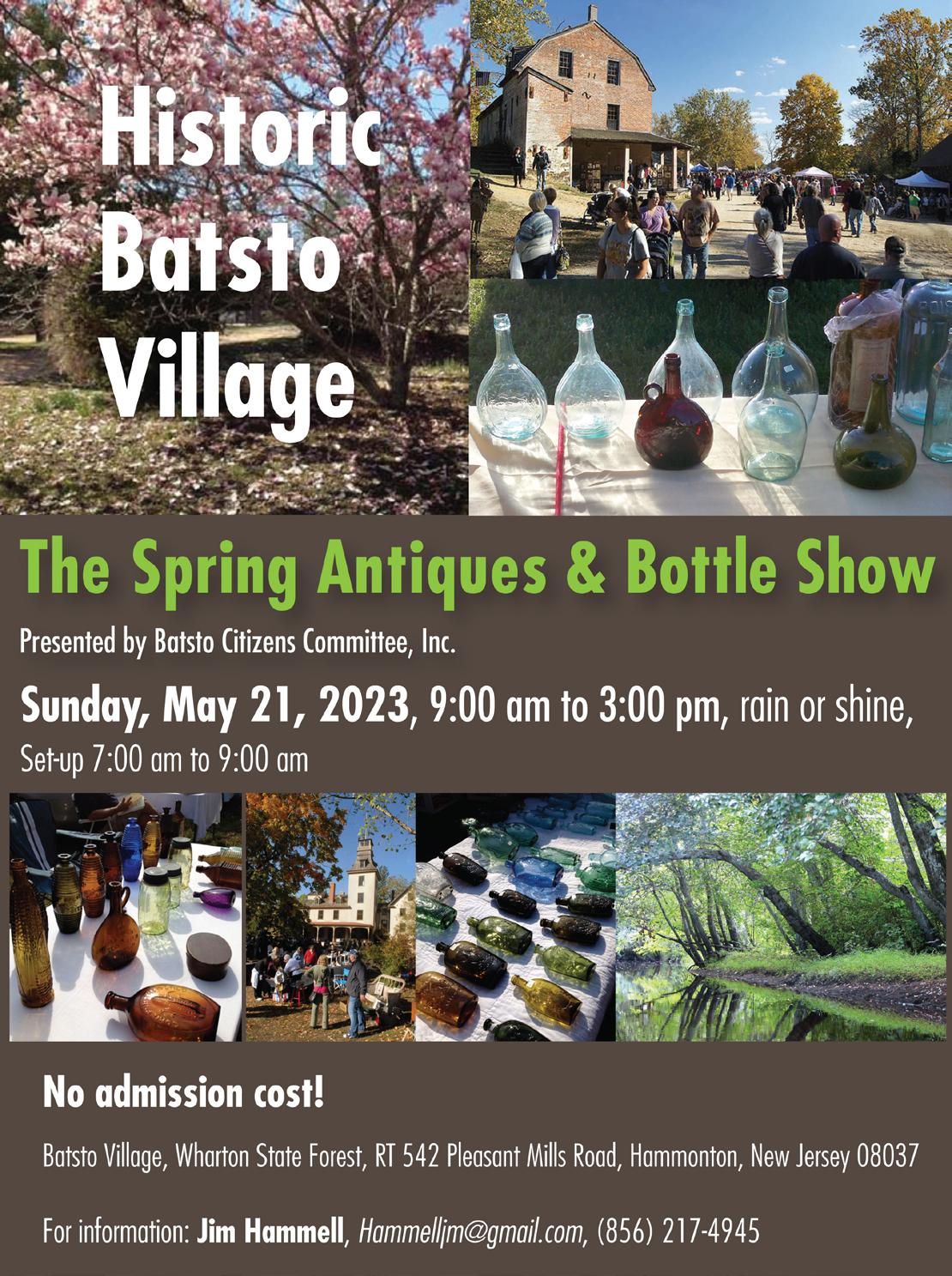
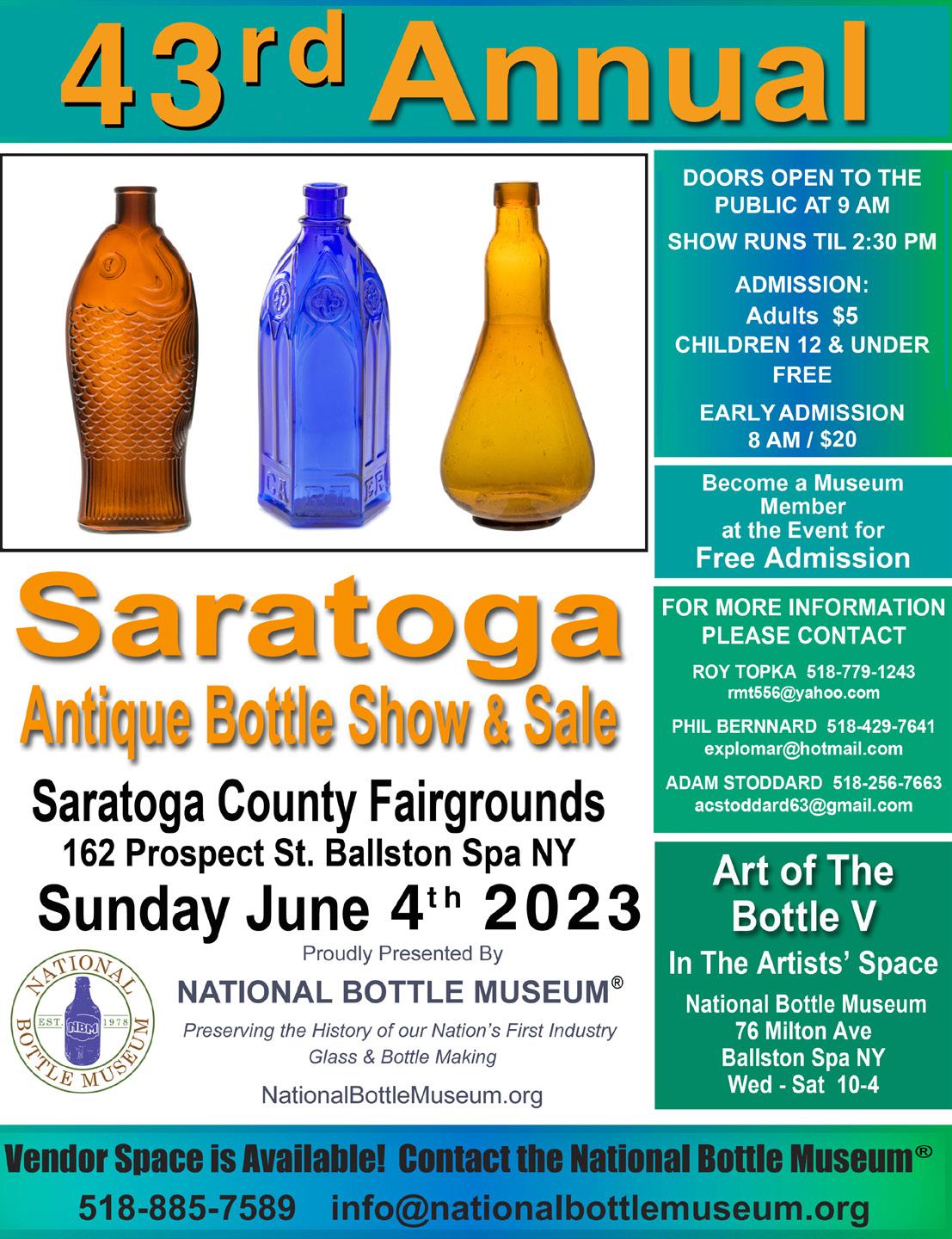
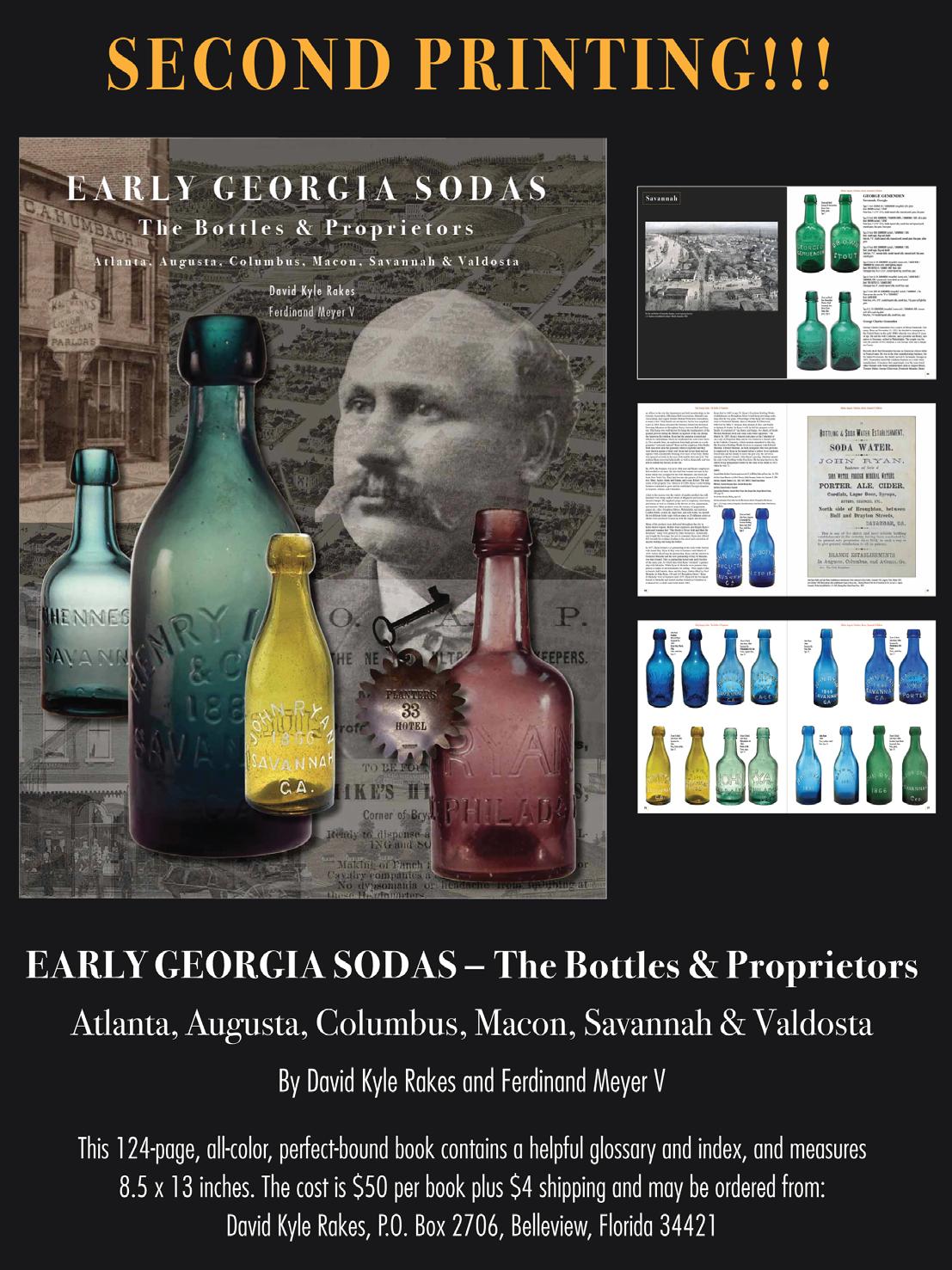
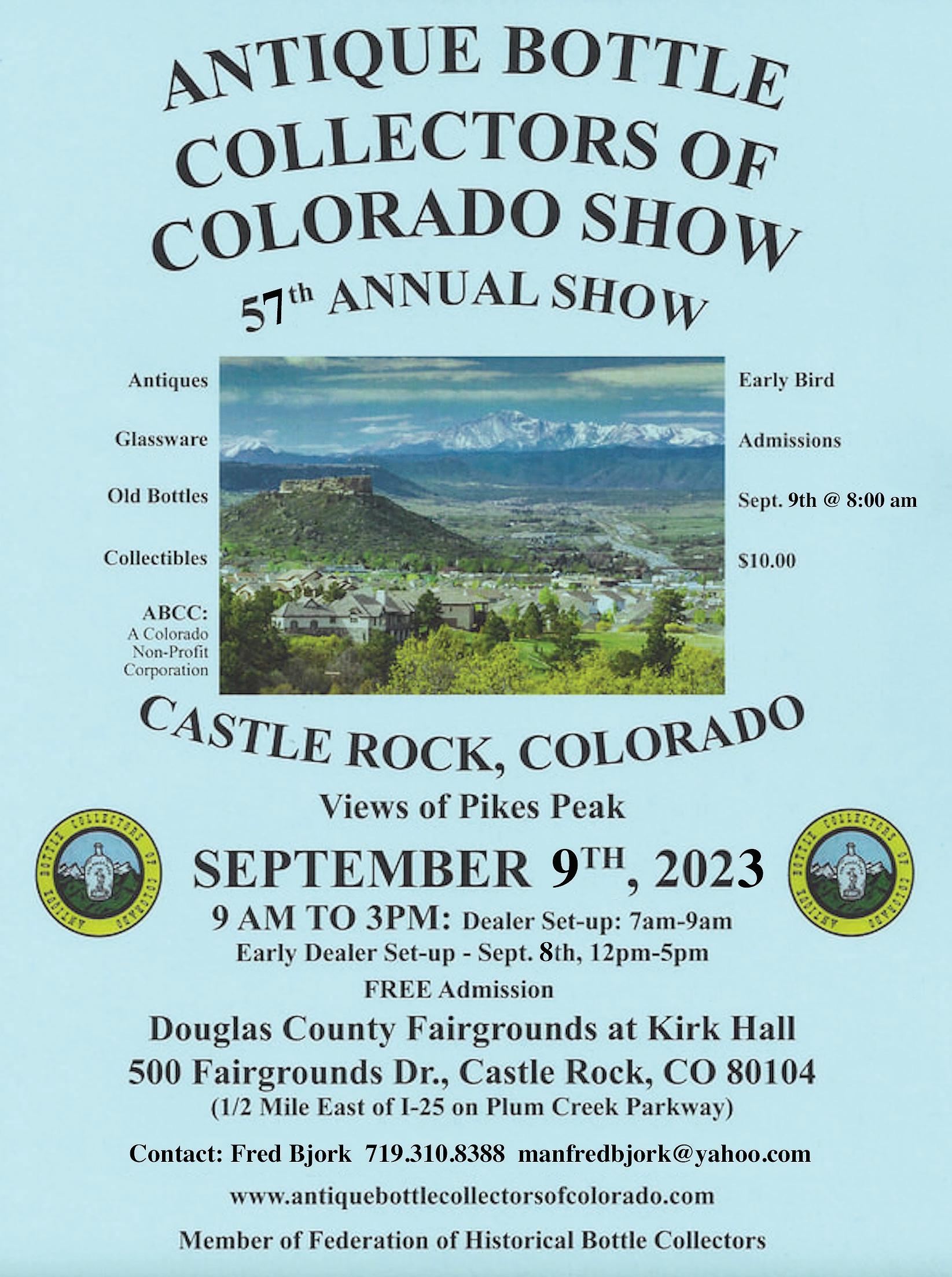
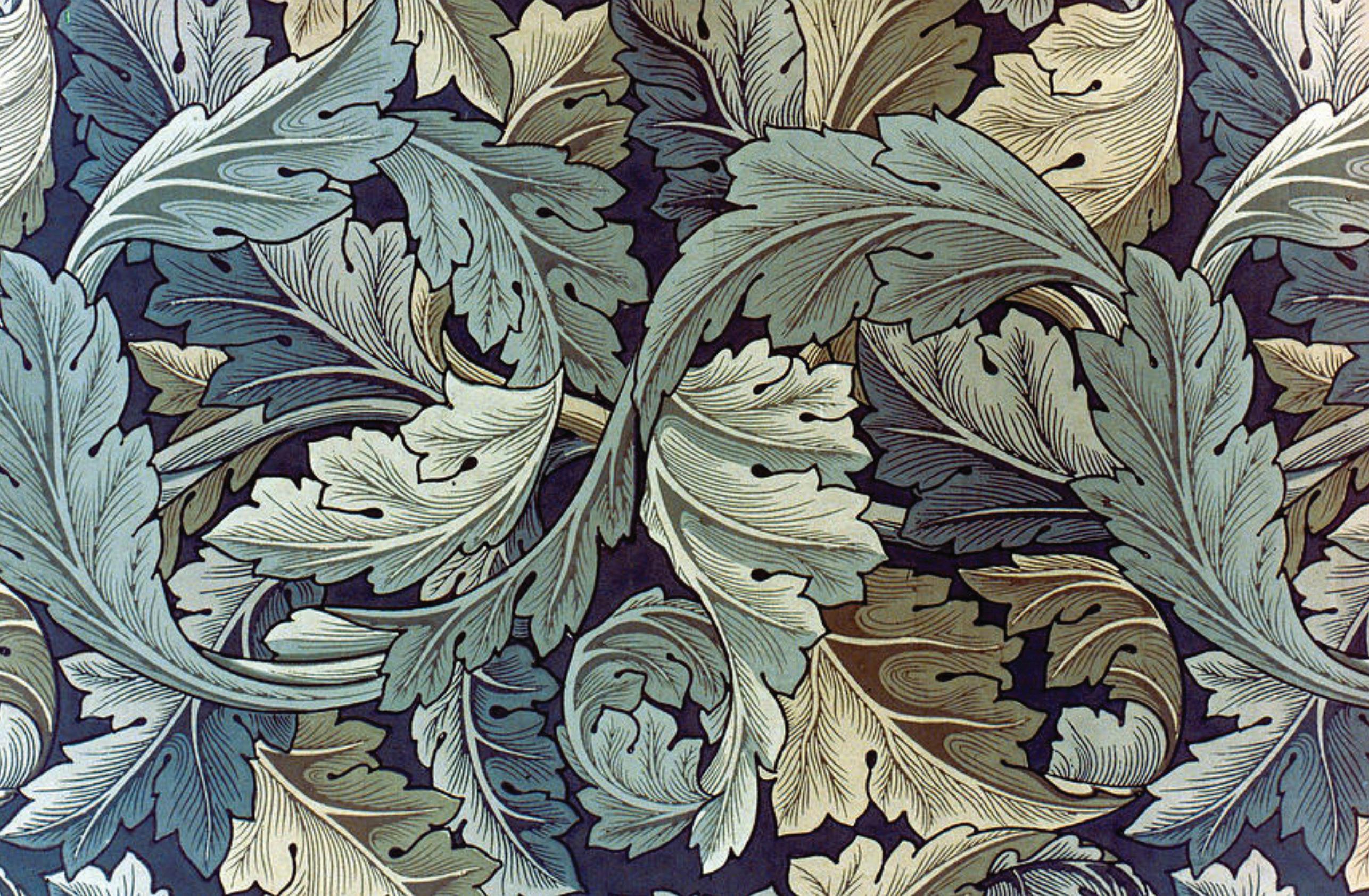

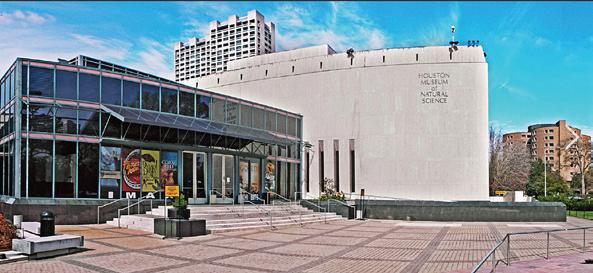

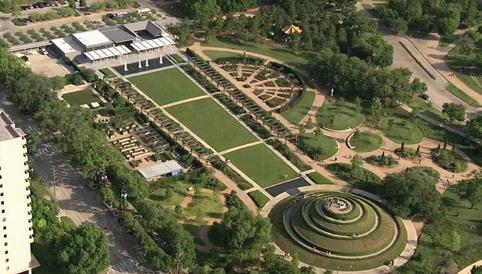
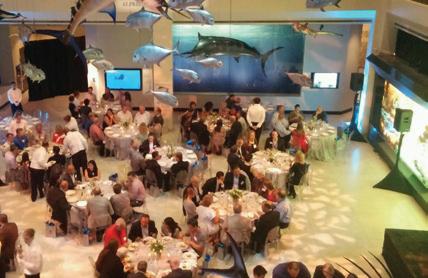
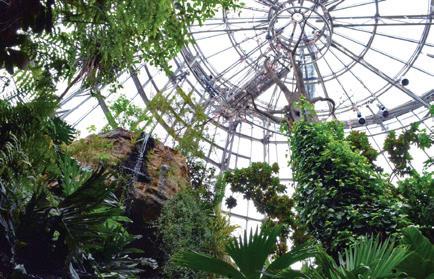
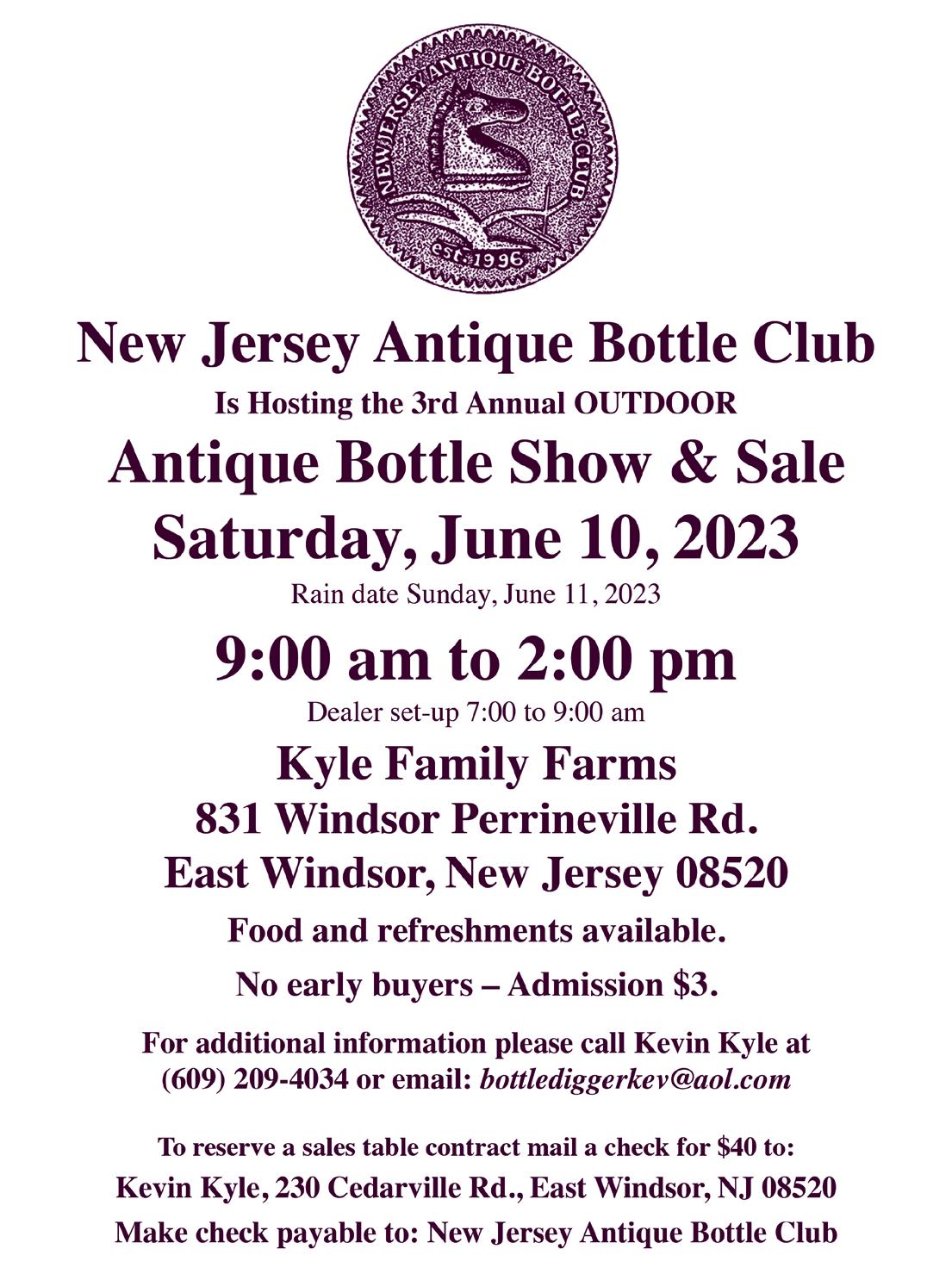

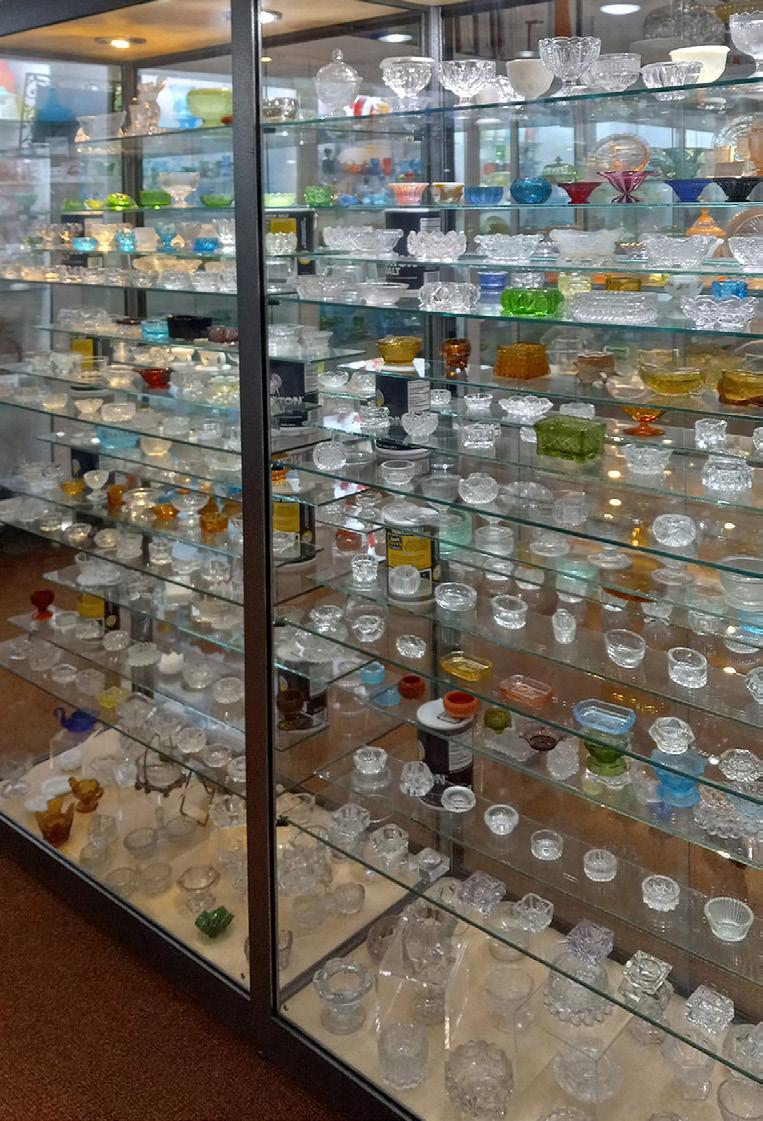

A collection of spectacular and inspiring photographs from around the world and around the web. Please feel free to submit your images for consideration.

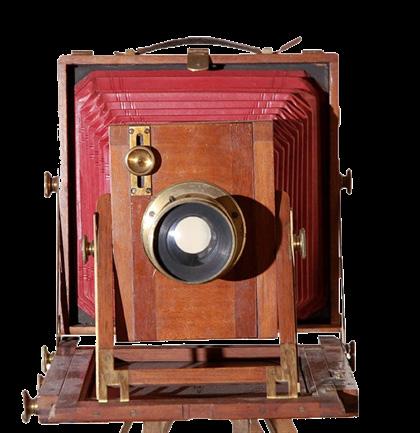
Thought I’d share this one again for wacked out whittled Wednesday!
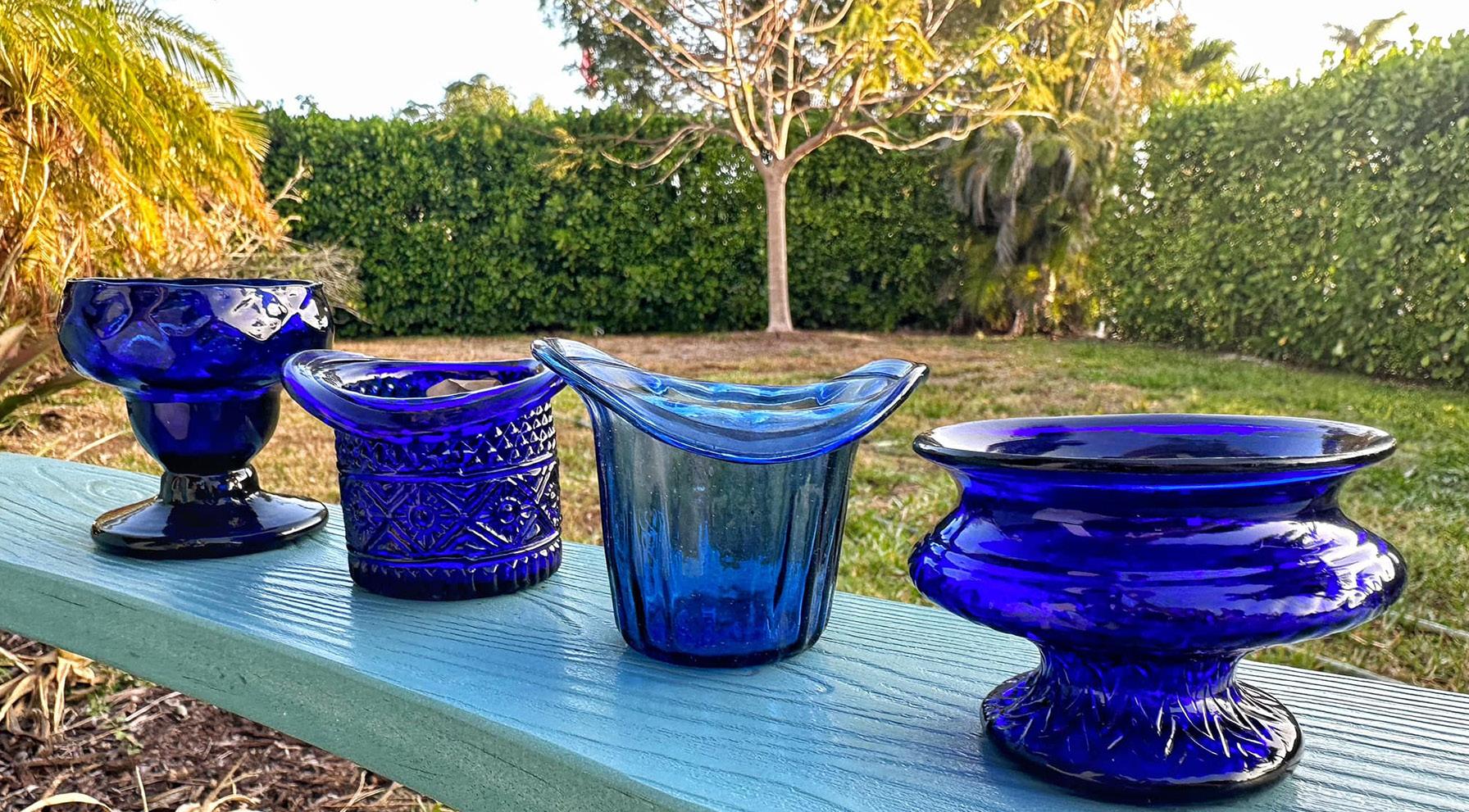
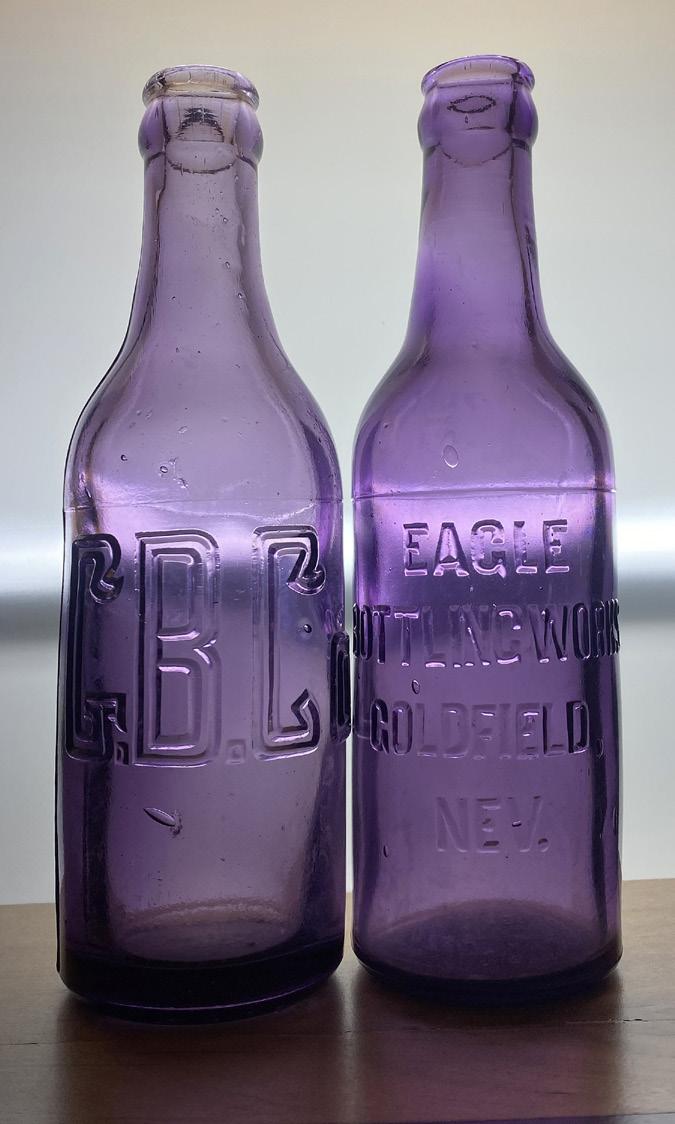

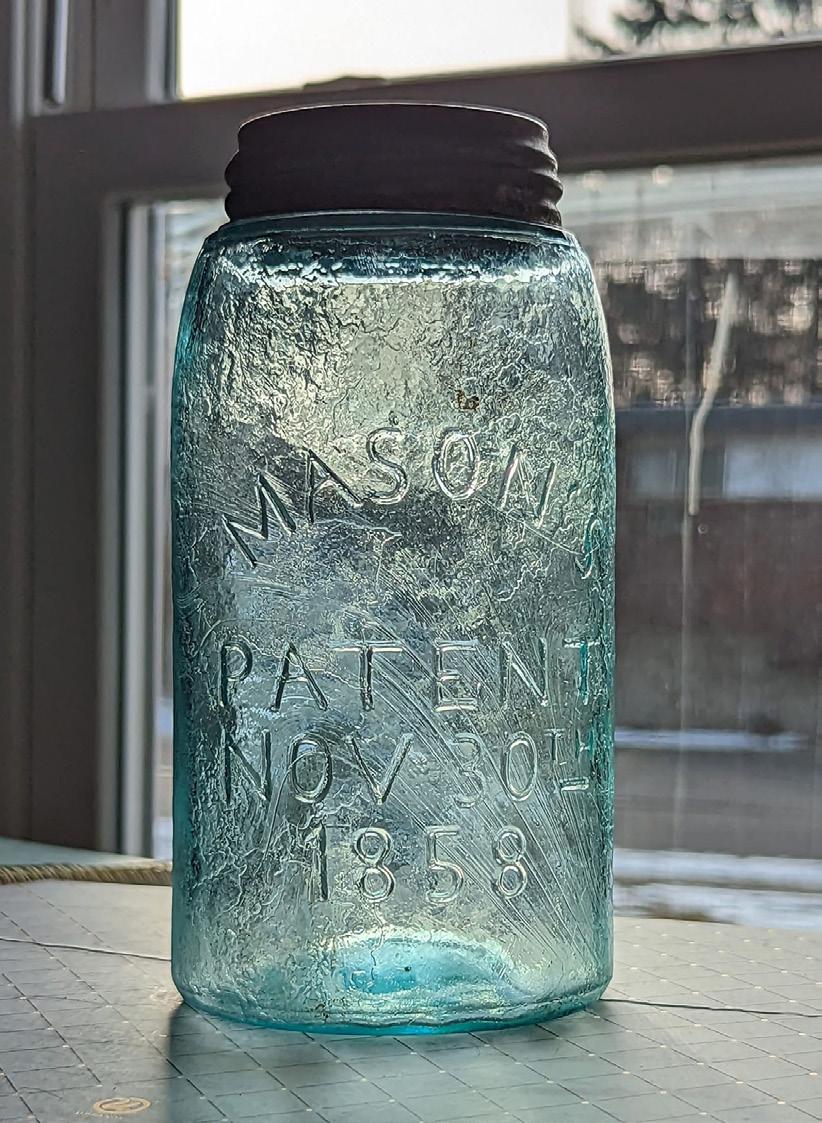




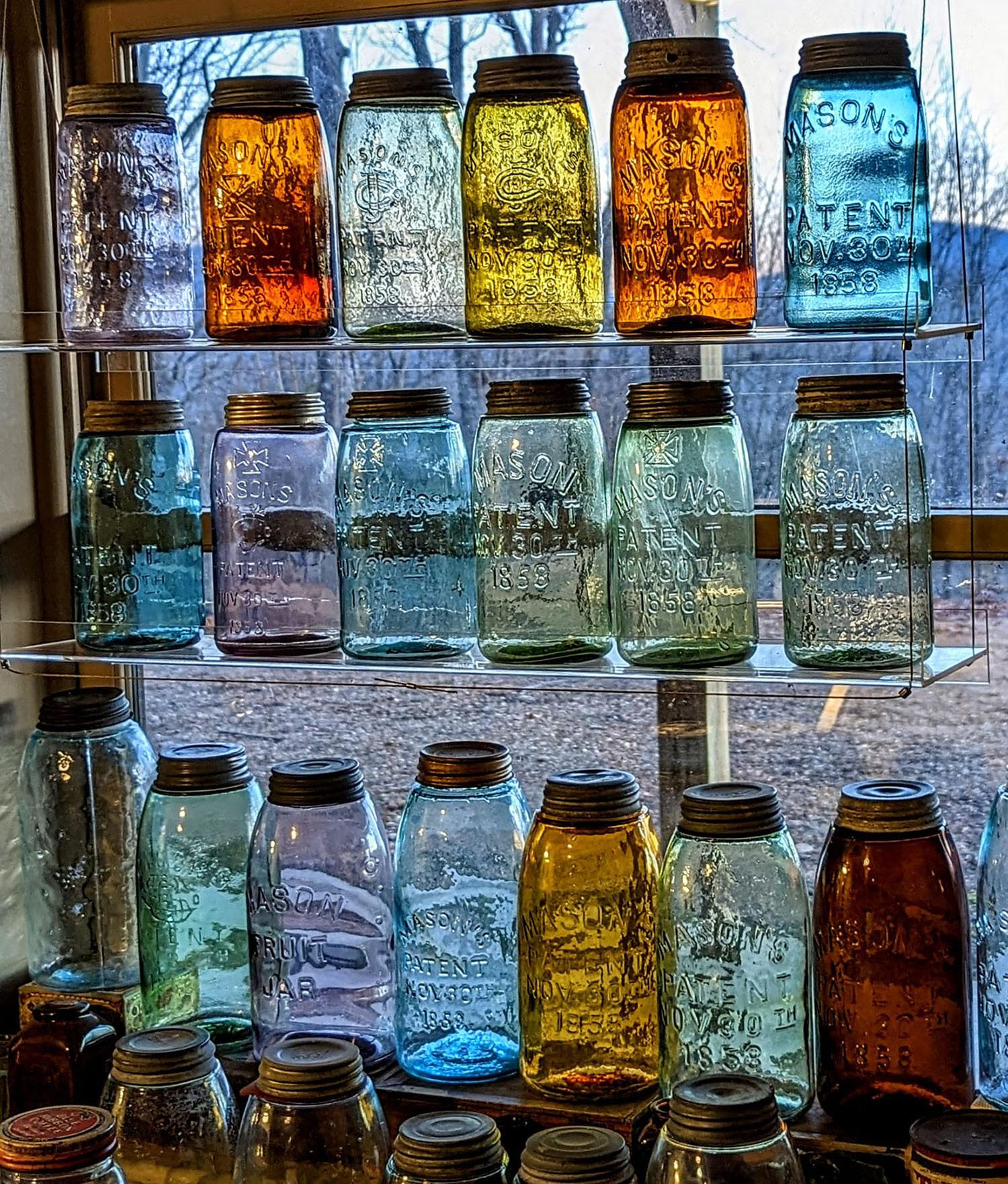
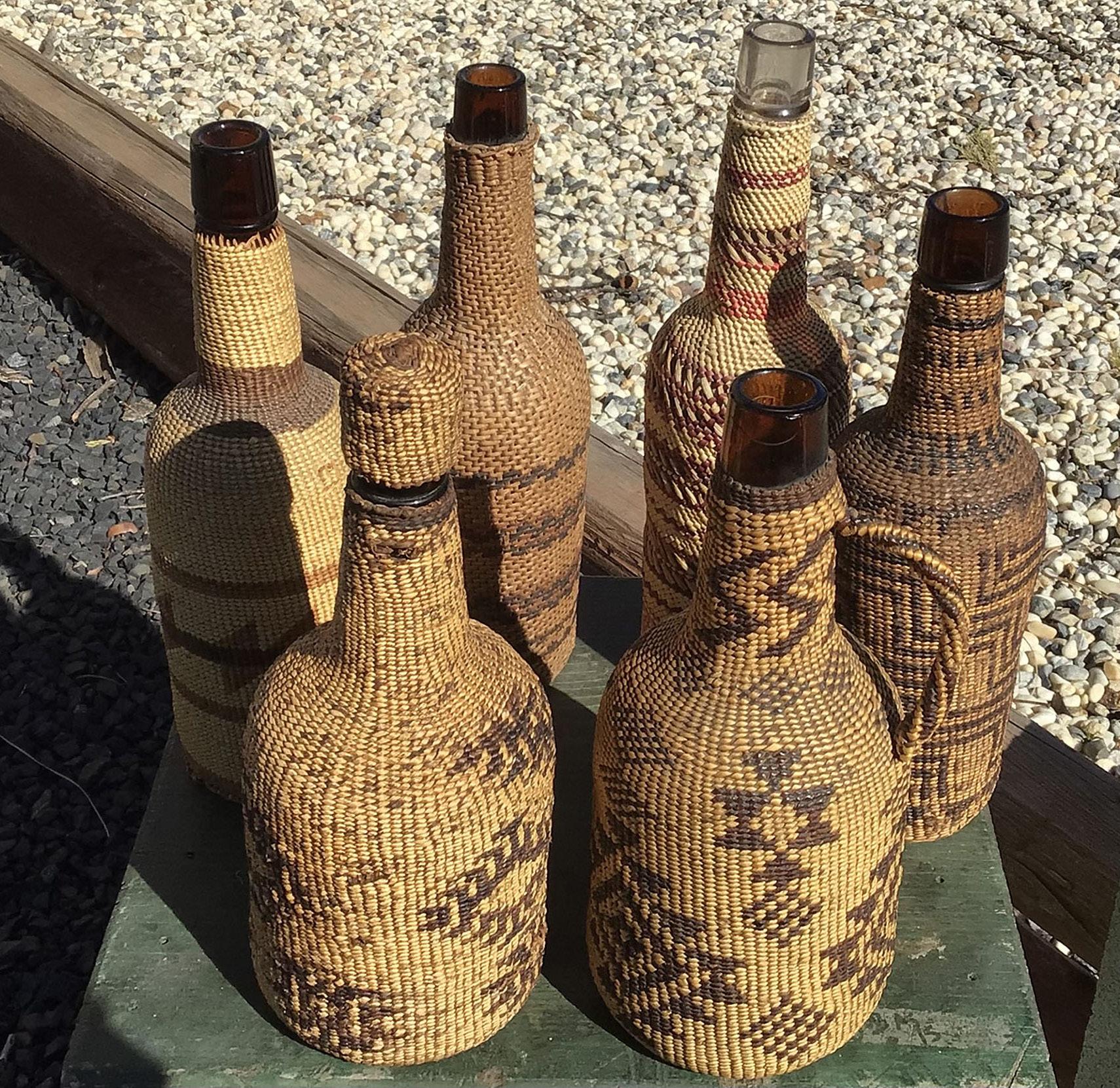
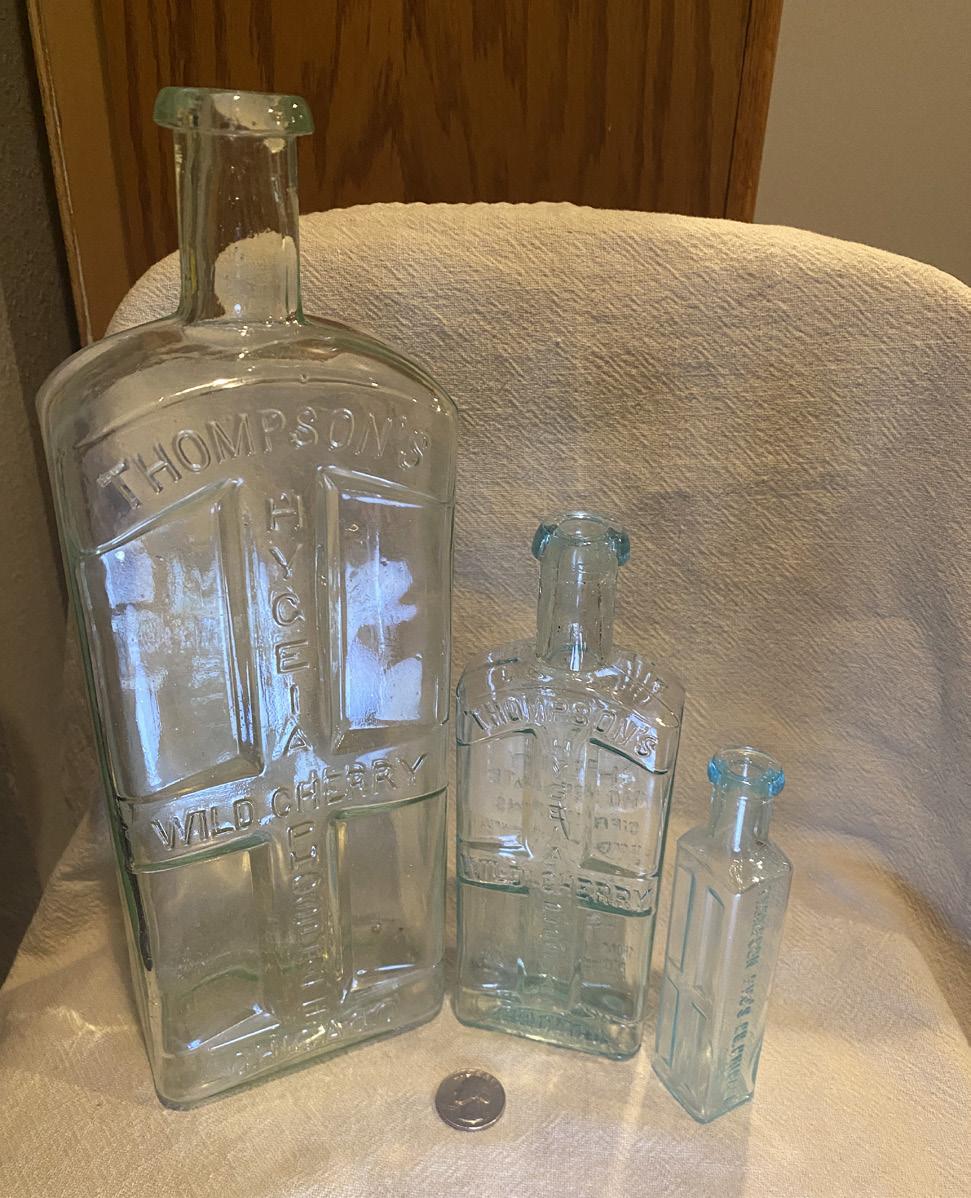

Free “FOR SALE” advertising in each issue of Antique Bottle & Glass Collector (AB&GC). One free “WANTED” or “FOR SALE” ad in AB&GC per year each renewal. See page 72 for more info. DEALERS: Sell your bottles in the Antique Bottle & Glass Collector. Change the bottles each issue. Include your website in your ad to increase traffic to your site. Send all advertisement info to FOHBC Business Manager, Elizabeth Meyer, P.O. Box 1825, Brookshire, Texas 77423 or best, email to: fohbcmembers@gmail.com
FOR SALE: WV bottles: large, older collection, mostly dug. Digger’s widow has asked me to help liquidate. The collection is very difficult to access, so sale will be in parts. First few dozen are Kanawha Valley and New River Gorge beers and amber Cokes. Detailed listing and pics are available. Please call Jim at 317.512.1856 for details. (5-1-23)
FOR SALE: 50 State Hutchinson – 50 State Drug Stores – 11 State I.T. and Dr. Kilmer’s. Nita W. 918.798.7616. (5-1-23)
FOR SALE: All kinds of bottles. Nevada. Western. ACL sodas, etc. See me at a few shows a year and on eBay at Chipsbottles seller. Collector and dealer over 40 years. NEW email: jamescampiglia115@gmail.com cell still the same California number but I am in Deadwood, South Dakota now 805.689.0125 Thanks! James. (5-1-23)
FOR SALE: 22 John Ryan’s plus an additional 48 other Georgia sodas. Text or email for photos and prices. Rod Vining, 251.957.6725, vinewood@mchsi.com (3-1-23)
FOR SALE: Jar Doctor is for sale - includes equipment, inventory, supplies (shipping boxes, containers, etc.), molds, jigs, power tools, customer information, supplier information, and training. Please contact R. Wayne Lowry, JarDoctor@aol.com, 816.318.0161 for information and/or to discuss options. (01-01-23)
FOR SALE: Book: A History of the Des Moines Potteries, with additional information on Boonesboro, Carlisle, Hartford, and Palmyra. 214 pages, 65 color. Cost $23 plus shipping, media mail add $4.50, priority add $6. Mail to Mark C. Wiseman, 3505 Sheridan Ave., Des Moines, Iowa 50310, 515.344.8333 (01-01-23)
FOR SALE: Mint: 1) Warner’s Safe Nerv-
ine half pt. slugplate. Light amber, $300 2) Warners’s Safe Cure London, half pint, green, $300 3) Warner’s Safe Kidney & Liver Cure. Pint, slugplate, A & D.H.C. on bottom, $250 4) Warner’s Diabetes Cure, pint. Melbourne, $150 5) Dr. Von Hopfs Curacoa Bitters, Chamberlain & Co., Des Moines, Iowa, yellow, $175. I have a lot more Warner’s for sale. Will trade for mini whiskey jugs. Stencil or scratch with maker and town and city on them. Jack Brower, 479.434.6306 (01-01-23)
WANTED: BLACK HAWK, COLORADO Th. Crook Sky Light whiskey flask. I will pay $10,000 for a half-pint coffin or a pint coffin or a pint shoofly. Flask must be in mint condition and delivered to Colorado. Other Black Hawk bottles might be of interest if not already owned. Contact: David D. Spellman at spellmand@centurylink.net (01-01-23)
WANTED: Wanted to buy all Peoria and Galesburg, Illinois bottles. Top prices paid. Phone 309.645.6450. Frank D. Leave message if I don’t answer please. (5-1-23)
WANTED: Williamsport Pa. blue decorated crocks from Sipe, Moore, Nichols, Hobart, etc. Pay top dollar for the best examples. Squats and Hutches from Williamsport and surrounding area Lock Haven, Jersey Shore, Lewisburg, Bloomsburg, Berwick, Danville, etc. Pay top dollar for rare or colored examples. All bottles from Dr. Porter Drug Store in Towanda, Pa. Call Bob Kane at 570.220.5982. (5-1-23)
WANTED: Findlay and McComb, Ohio bottles, jars, advertising, anything else. F.B. Co. (base) ½ gallon amber jar. Any bottle with F.B. Co. on the base. Miniature Dandy Jar and milk-bottle-shaped “Dandy” bottle. Joe Frey, 1144 Twp Rd 136, McComb, Ohio 45858, phone 419.348.7736 or email odants@bright. net. (5-1-23)
WANTED: Any bottles or jugs with name MORTON on them. Contact: dfurda@roadrunner.com or call 818.889.5451. (5-1-23)
WANTED: Bottles from Norway and Sweden. Also ROTH embossed bottles, all types. James L. Roth, 219 12th Ave. W., West Fargo, North Dakota 58078, digger@far.midco.net, 701.541.7097. (5-1-23)

WANTED: I Collect Route 66 Illinois. Looking for bottles clearly showing location for the following Illinois towns: Berwyn, McCook, Countryside, Willowbrook, Plainfield, Romeoville, Elwood, Godley, Odell, Cayuga, Chenoa, Ocoya, Lexington, Towanda, Normal, Shirley, Funks Grove, McClean, Lawndale, Broadwell, Elkhart, Williamsville, Sherman, Glenarm, Divernon, Farmersville, Waggoner, Mt Olive, Livingston, Hamel, Mitchell, Granite City, Fairmont City, Chatham, Auburn, Thayer, Girard, Nilwood, Carlinville, Benld. Any type bottle acceptable. Also looking for a copy of Bottled In Illinois by Walthall and Farnsworth. Please send photo(s) and price desired to smkpromo@yahoo.com, Susanna Karbowski. (5-1-23)
WANTED: Looking for a Chew’s Laxative Bitters from Barnegat, New Jersey, contact Glenn Vogel, 732.539.8116, Olgve@hotmail. com (5-1-23)
WANTED: Nevada Bottles. One or a collection. Sodas, whiskeys, drugstores, etc. Can travel to purchase. Also Colored Blob Top Western Sodas. Buy-Sell-Trade. Collector over 40 years. James Campiglia, jamescampiglia115@gmail.com, cell 805.689.0125. (5-1-23)
WANTED: Dandelion and Wild Cherry Bitters with letters in “and” slanted to the right. David Mosher, dachamo@comcast.net (5-1-23)
WANTED: “UTAH” Pharmacy, Druggist, Hutchinson, Soda, Food, Milk and Seafast sold by “UTAH” fruit jars, buy-sell-trade. Have other types of bottles for trade. Sherard Hardman, 289 N. 3005, Spanish Fork, Utah 84660, 801.735.3045, srhardman1@gmail.com (5-1-23)
WANTED: Adirondack Springs, Westport, N.Y., Top prices paid for bottles in excellent condition, photos, postcards or other advertising. These springs are presently owned by my family. Jim Tromblee at jtromblee@together. net or 813.663 8285 (3-1-23)
WANTED: Harley bottles of West Chester, Pa. and Philadelphia, Pa. The West Chester bottles (3) display either J. Harley, James Harley or E.M. Harley. The Phila. Bottles (4) display Edwd. Harley, Schul (Schuylkill) 4th & Market St., Philada or E. Harley, 802 Market St. or E. Harley, West Market St. or Edw. Harley, 1838 Market St., Phila. Bob Harley, email:
rwh220@yahoo.com, Phone: 215.721.1107 (12-1-23)
WANTED: 1976 Expo commemorative flasks in colors I do not already have. Pat Jett, 314.570.6917; patsy_jett@yahoo.com (3-1-23)

WANTED: Refrigerator water bottles – Bilby style: Katz Drug, Minnehaha, Spirit of 76, Aerox, any others of which I am not aware, and any in amber. Dave Parmalee, jdparmalee@ comcast.net, 865.719. 4162 (3-1-23)
WANTED: Ford City, Pa embossed bottles, also Meckling and Kramer, Kittanning, Pa. Remember the Maine Hutches. Keystone Bottling Works, Sagamore, Pa., Bill Oleksak, 724.859.0113, billoleksak1947@gmail.com, (3-1-23)
WANTED: Moore Ink bottles and any related items to the Moore Ink Co. Thank you. Ron Rainka, 1198 Main St., Warren, Ma. 010830685, tele: 413.436.5998 (3-1-23)
WANTED: Checkers Chemical Co., Winston-Salem NC (Reverse) “It makes you feel good all over” Amber, about 10”, square bitters form, Blown, No damage and clean. Will pay $500. Thank you, Curt Ewing, curtielind@ yahoo.com (3-1-23)
WANTED: All types of MOBILE ALABAMA
Bitters, Whiskeys, Medicine, Drug Stores, Sodas (no crown tops), Decorated Stoneware, Transferware, Paper and all other related items. One item or an entire collection. Rod Vining, 10691 Old Pascagoula Road, Grand Bay, Alabama 36541, 251.957.6725, vinewood@mchsi. com (3-1-23)

WANTED: Amber Claussen Bottling Works Hutchinson soda bottle from Charleston, S.C., Joe, 803.926.0906 (3-1-23)
WANTED: Exposition Brewing Co. Delray (Detroit) Mich Beer, blob tops 12 oz amber or aqua or quart size amber – American Brewing Co. Delray Mich, blob tops 12 oz. amber, aqua or clear or quart size amber. Also Geo. H. Schmitt Delray Hutchinsons, quarts, blob tops or crown tops – Geo. H. Schmitt Delray Seltzer Water clear. Rick Myers, 313.742.8668. (3-1-23)
WANTED: North Florida bottles, Southern Stoneware or unusual black glass forms. Contact Alan McCarthy 850.832.1882 (1-1-23)
WANTED: To buy Dr. Mitchell Sarsaparilla from Perry, NY in Wyoming County. Will pay $4k. Bours Cordial Tonic from Geneva, NY. Will pay $4k. Looking to buy large Milk Bottle Collections from all over the United States. Contact Jim 315.527.3269 (01-1-23)
WANTED: 1-Spencer Bros (Brothers) Oaklandvale Farm Saugus Massachusetts Milk Bottle. 2-PJ Spencer, Malden, MA Milk Bottle (Cardboard top says “The Old Spencer Farm”) 3-Frank P Bennett, Oaklandvale Farm Milk, Saugus MA Milk Bottle. Interested in tops or any other items or information related to these three farms. Any size bottle is fine. Please email lyork1@cfl.rr.com or leave a message at 407.416.2677. Call will be returned ASAP. Thank you. (1-1-23)
WANTED: Rare pontiled meds particularly Southern meds, Michael D. Morgan, mmorgandive@gmail.com (1-2-23)
WANTED: Dr. A. C. Daniels advertising signs–St. Johnsbury, Vermont Old Items, Dennis Daniels, 448 Pleasant St., St. Johnsbury, VT, 05819, 802.748.2274. (1-1-23)
WANTED: Colored Figural Bitters. Also other bitters that are unusually shaped or unusually colored, for their grouping! Mint specimens only please! Randolph Haumann, 10410 Gold Arrow Drive, Reno, Nevada 89521-5190 or cell 415.518.4124 (leave message) or email: hawkeye751@outlook.com, Call Now! So you are not sorry...Later! (11-1-24)
WANTED: Hobble skirt embossed Coca-Cola bottles: 1915s, 1923s, D-Patent’s 6 oz and 6 1/2 oz. Collector will buy or trade. Jim Georges, georges77@twcny.rr.com or 315.662.7729. (07-1-24)
WANTED: Colored Illinois and Missouri Sodas. Also Colored Fruit Jars. Top $$$ Paid. Call, text or email. Steve Kehrer, email: kehrer00@gmail.com, 618.410.4142. (03-1-23)
PERMANENT WANT: OWL DRUG bottles, tins, boxes, paper, anything from the Owl Drug Company. Marc Lutsko, letsgo@montanasky. net, 406.293.6771, Box 97, Libby, MT 59923
TOP DOLLAR paid (01-1-23)
WANTED: Volunteers to help the FOHBC. Help our organization stay strong by writing an article, be a magazine proofreader or a Virtual
Museum researcher. Post on our social media sites and share our posts. There are many ways you can help. Donations to our non-profit organization are always accepted. Thank you. (01-1-23)
WANTED: Embossed Ford City, PA bottles. Also, Mechling & Kramer, Kittanning Hutch and Remember the Maine Hutch. Keystone Bottling Works, Sagamore, PA Hutch. Bill Oleksak, billoleksak1947@gmail.com 724.859.0113 (01-1-23)
WANTED: Hello Levi Strauss and Western collectors! Years ago, a well-known California dealer discovered a major California gold rush archive from the Hardy-Kennedy store in Forest Hill, California. In it were a number of Levi Strauss billheads from the 1850s. We are looking for collectors who may have bought one or more and are soliciting copies of these billheads for an important paper I am working on. The information contained on these may be integral to the substance of my proposed paper and may enhance the value of your billhead! I am looking forward to some discoveries. Thanks in advance. Fred Holabird, fredholabird@gmail.com, 775.851.1859 (01-1-23)
WANTED: Native Southern Californian still needs sample bottle embossed “Souvenir First Water from Los Angeles Aqueduct November 5th, 1913” Marty Vollmer, 803.629.8553, martyvollmer@aol.com (5-1-23)
WANTED: Etched shot glasses and backbar bottles from Illinois. Jim Searle, 1003 Illinois, Pekin, Illinois 61554. 309.202.9337 (5-1-23)
NEEDING: Historical pictures for the online FOHBC Research Library. (03-01-23)
AUCTION PRICE REPORT: Remember, all FOHBC members get access to the Auction Price Report website. Visit the FOHBC.org Members Portal.
REMEMBER: Please keep up with your membership to avoid interrupted service. Membership options available.
FOHBC Sho - Biz is published in the interest of the hobby. Federation-affiliated clubs are indicated in red. Information on upcoming collecting events is welcome, but space is limited. Please send at least three months in advance, including telephone number to: FOHBC Sho-Biz, c/o Business Manager: Elizabeth Meyer, P.O. Box 1825, Brookshire, Texas 77423; phone: 713.504.0628; email: fohbcmembers@gmail.com Show schedules are subject to change. Please call before traveling long distances. All listings published here will also be published on the FOHBC.org website.
21 & 22 April 2023 – Antioch, California
The Golden Gate Historical Bottle Society’s 55th Annual Bottles, Antiques & Collectibles Show, Early Buyers: Friday 12 pm to 5 pm, $10 Admission; General Admission: Saturday 9:00 am to 3:00 pm, Free. Contra Costa Event Park (Fairgrounds), Sunset Hall, 1201 West 10th Street, Antioch, California 94509. Info: Gary and Darla Antone, 925.373.6758, packrat49er@netscape.net, FOHBC Member Club
22 April 2023 – Columbia, South Carolina
The South Carolina Bottle Club’s 50th Annual Show & Sale, 206 Jamil Road, Columbia, South Carolina 29210, 172 Tables last year with room to grow! Saturday 9:00 am to 4:00 pm, Donation at the door suggested, Dealer Only Set-Up 7:00 am to 9:00 am, Jamil Shrine Temple, Contact: Marty Vollmer 803.629.8553, martyvollmer@aol.com or Art Gose 803.840.1539, scbottlehunters@ gmail.com, FOHBC Member Club
22 April 2023 – Wills Point, Texas
Patriotic Guns LLC presents the 4th Annual North Texas Bottle & Collectible Show from 9:00 am to 3:00 pm. 26843 Interstate 20, Wills Point, Texas 75169 (at Maroon building) Dealer setup: April 21st from 4 to 8:00 pm, Admission: $3/person, Early Entry (during setup): $10/person. The show will include antique and vintage bottles from Texas and the surrounding states, as well as memorabilia, signs and much more. We will also have some tables of small collectibles and odds-n-ends to add to your collection. Please call Michael at 972.741.3206 or email texasbottleshow@gmail.com for any questions or to get table rental prices.
23 April 2023 – Pickering, Ontario
27th Annual Toronto Bottle and Antique Show and Sale, Chestnut Hill Developments Recreational Complex, 1867 Valley Farm Road, Pickering, Ontario L1V 6K7 (just east of Toronto), 10:00 am to 2:30 pm, Early admission not available. Set up: 7:00 am to 10 am. Cost of admission: $5, Four Seasons Bottle Club, www.facebook.com/ groups/fourseasonsbottleclub/ Contact: George Miller, Show Manager, 55 Harmer Drive, Newcastle, Ontario L1B1P7, Tele: 905.767.7297, E-mail: jorgalicious.55@gmail.com
30 April 2023 – Morgantown, West Virginia
6th Annual Dunkard Valley Antique Bottle Stoneware
Show & Sale, 9:00 am to 2:00 pm; Early buyers 7:30 am, $25. Both inside and outside vendor spaces are available! Monongalia County Extension Services & 4H Center, 270 Mylan Park Lane, Morgantown, WV 26501, Contact: Don Kelley, 724.998.2734, bonzeyekelley@gmail.com
07 May 2023 – Gray, Tennessee
State of Franklin Antique Bottles & Collectible
Assoc. 25th Annual Show & Sale, Saturday, May 6th, 9:00 am to 3:00 pm, Appalachian Fairground, 100 Lakeview Street, Gray, Tennessee 37615, Exit 13 on I-216, No Early Admission. sfabca.com, FOHBC Member Club
07 May 2023 – Marcy, New York
The Mohawk Valley Antique Bottle Club will host its 27th Annual Utica Bottle Show & Sale at the Utica Maennerchor,
5535 Flanagan Road, Marcy, New York 13403, Info: Peter Bleiberg at 315.735.5430 or email pmbleiberg@aol.com, www.mohawkvalleybottleclub.com, FOHBC Member Club
12 & 13 May 2023 – Mansfield, Ohio
44th Mansfield Antique Bottle Show, Hosted by the Ohio Bottle Club, at the Richland County Fairgrounds, 750 N. Home Road, Mansfield, Ohio 44906; Admission $5 Saturday, 9:00 am to 2:00 pm. Early admission is $40, Friday, May 12, from 2:00 to 6:00 pm. Info: Matt Lacy at 440.228.1873 or email info@antiquebottlesales. com or Louis Fifer at 330.635.1964, fiferlouis@yahoo.com, FOHBC Member Club
12 & 13 May 2023 – Kent, Washington
7th Annual Washington Bottle & Collector’s Antique Bottle & Collectible Show, Kent Commons Community Center, 525 4th Avenue N., Kent, Washington 98032. Admission is Free; Early Admission is $5, Friday, May 12th, Noon to 5:00 pm. Saturday, May 13th, 9:00 am to 3:00 pm. Washington Bottle & Collectors Association (WBCA), Website: wabottleclub.org, Contact: Lisa Conners, PO Box 358, Hobart, Washington, Tele: 206.290 0349, Email: lisa.g.conners@gmail.com, FOHBC Member Club
13 May 2023 – Seekonk, Massachusetts
The Little Rhody Bottle Club Tailgate Swap Meet, starts at 8:00 am and ends at 2:00 pm. Free set-up for all who wish to attend. Bring your own tables! Show Address: Leonard’s Antiques, 600 Taunton Ave. (Rte #44) Seekonk, Mass., Contact Info: William Rose 508.880.4929, sierramadre@comcast.net, FOHBC Member Club
19-21 May 2023 – Reinholds, Pennsylvania Shupp’s Grove Bottle Festival, Sat & Sun, 6:00 am to dusk, early buyers Friday, 3:00 pm, The famous ‘Shupp’s Grove,’ 607 Willow Street, Reinholds, Pennsylvania 17569, Contact Info: Steve Guion, 717.371.1259, william03301956@gmail.com
20 May 2023 – Mandeville, Louisiana
The Greater New Orleans First Annual Antique Bottle & Collectibles Show & Sale at the Mandeville Lions Club, 720 Lafitte Street, Mandeville, Louisiana 70448, Dealer Set Up, Friday, May 19, 12 noon to 5:00 pm and on Saturday, May 20, 8:00 to 10:00 am. Early Bird $25 during dealer setup. Free admission is Saturday, May 20, from 10:00 am until 4:00 pm; contact Peter Taggard, 645 Village Lane South, Mandeville, Louisiana 70471. Call or text: 985.373.6487, Email: petertaggard@yahoo.com
20 May 2023 – Gardendale, Alabama
3rd Annual Alabama Bottle & Antique Show, Saturday, May 20, 9:00 am to 3:00 pm; free admission and appraisals. Gardendale Civic Center, 857 Main Street, Gardendale, Alabama 35071 (10 minutes north of Birmingham). Info: Keith Quinn: 205.365.1983, klq1812@gmail.com or Steve Holland, 205.492.6864. Visit our Facebook page Alabama Bottle Collectors’ Society.
FOHBC Member Club
21 May 2023 – Washington, Pennsylvania
Washington County Antique Bottle Club 49th Annual Show and Sale, Alpine Star Lodge, 735 Jefferson Avenue, Washington, Pennsylvania 15301, Admission $3, 9:00 am to 2:00 pm, Info: Ed
Kuskie, 412.405.9061, 352 Pineview Drive, Elizabeth, Pennsylvania 15037, bottlewizard@comcast.net, FOHBC Member Club
21 May 2023 – Hammonton, New Jersey
2023 Spring Bottle Show at Batsto Village by the Batsto Citizens Committee, Inc., 9:00 am to 3:00 pm, rain or shine! Free admission! Historic Batsto Village, Wharton State Forest, Rt. 542 Pleasant Mills Road, Hammonton, New Jersey. Contact Info: Jim Hammell, 856.217.4945, hammelljm@gmail.com
27 & 28 May 2023 – Boulder City, Nevada
57th Annual 2023 Antiques, Vintage & Collectibles
Show/Sale. Proudly presented by the Las Vegas Antique Bottles & Collectibles Club. 9:00 am to 6:00 pm on Saturday. 9:00 am to 3:00 pm Sunday. Boulder City Parks & Recreational Bldg., 900 Arizona St. Boulder City, Nevada 89005. Partnered with The 19th Annual Best Dam BBQ Days. An appraiser is available. For tables contact Rob at 702.830.3898, FOHBC Member Club
03 June 2023 – Pickens, South Carolina
The Pickens Bottle Show at The Market at the Mall, 225 Pumpkinville Hwy, Pickens, S.C. 29671, 8:00 am to 2:00 pm, Set-up 7:00 to 8:00 am. Show and dealer information Samuel Rhodes, 864.508-6518, samuelrhodes99@gmail.com
04 June 2023 – Ballston Spa, New York
The National Bottle Museum presents the 43rd Annual Saratoga Antique Bottle Show & Sale, 9:00 am to 2:30 pm; early admission 8:00 am, $20, Admission $5, Children 12 and under free. Saratoga County Fairgrounds, 4H Building, 162 Prospect St, Ballston Spa, New York, National Bottle Museum, 76 Milton Avenue, Ballston Spa, New York 12020, 518.885.7589, Contact: Roy Topka, Co-chairman, info@nationalbottlemuseum.org, FOHBC Member Club
10 June 2023 – Cambridge City, Indiana
9th Annual Cambridge City Jar & Antique Show formerly the Huddleston Farmhouse Jar Show, Creitz Park, 150 North Foote Street, Cambridge City, Indiana, Saturday, 9:00 am to 3:00 pm. Set up at 7:00 am. Contact Marty Troxell, Chairman, 137 W. Main Street, Cambridge City, Indiana, 765.478.3800, doublehead@myfrontiermail. com. Also, contact Marty on Facebook Ball Jar Collectors if you prefer. FOHBC Member Club
10 June 2023 – Sandy, Utah
Utah Antique Bottle and Collectibles Show, Salt Lake Community College, Miller Training Center, 9750 S 300 W., Sandy, Utah, Saturday 9:00 am to 5:00 pm, Early admission 8:00 am. Set up 7:00 am, Cost of admission for show: $1, Cost of early admission: $10, Utah Bottle Club, Contact: Bob Campbell, 801.467.8636, E-mail info@allaboutcoins.com
10 June 2023 – Seekonk, Massachusetts
The Little Rhody Bottle Club Tailgate Swap Meet, starts at 8:00 am and ends at 2:00 pm. Free set-up for all who wish to attend. Bring your own tables! Show Address: Leonard’s Antiques, 600 Taunton Ave. (Rte #44) Seekonk, Mass., Contact Info: William Rose 508.880.4929, sierramadre@comcast.net, FOHBC Member Club
17 June 2023 – Johnston, Iowa
The Iowa Antique Bottleers 52nd Annual Antique Bottle & Collectibles Show and Sale at the Johnston Lions Club, 64th Place and Merle Hay Road, Johnston, Iowa; Admission $2, Children Free, For info contact Mark Wiseman, 3505 Sheridan Avenue, Des Moines, Iowa 50301, 515.344.8333 or Joyce Jessen, 515.979.5216,
FOHBC Member Club
01 & 02 July 2023 – United Kingdom
The 31st UK SummerNational, the largest event of its type. BBR, Elsecar Heritage Centre, Nr Barnsley, S. Yorks., S74 8HJ t: 01226 745156 email sales@onlinebbr.com, www.onlinebbr.com
14-16 July 2023 – Reinholds, Pennsylvania
Shupp’s Grove Summer Bottle Festival, 607 Willow Street, Reinholds, Pennsylvania. Friday, early buyers only from 11 am to 5 pm at a ticket price of $20 per person and running through Sunday, July 16 2023. Saturday and Sunday hours are from 6 am to dusk; admission is free to all on these two days. Contact Steve Guion at william03301956@gmail.com or call him at 717.371.1259. He has information and dealer contracts for those wishing to set up at the festival.
23 July 2023 – Rotterdam Junction, New York
Capital Region Antique Bottle Club Annual Show & Sale, This will be an outdoor vendor show. 9:00 am to 3:00 pm, at the Mabee Farm Historic Site, 1100 Main St., Rotterdam Junction N.Y., Contact: Adam Stoddard, 518.256.7663, acstoddard63@gmail.com or Roy Topka, 518.779.1243, rm556@yahoo.com,
FOHBC Member Club
04-06 August 2023 – Tonopah, Nevada
First Tonopah Nevada Rock & Bottle Show. This event is Hosted by the Town of Tonopah. We are in search of vendors. If interested, please contact Chrissy Pope. Tourism & Events Coordinator, Town of Tonopah at 775.277.0804, Chrissy.townoftonopah@gmail.com
12 August 2023 – Lincoln, Alabama
8th Annual Lincoln Bottle & Antique Show. Lincoln Civic Center, 123 Jones Street, Lincoln, Alabama 35096, 9:00 am to 2:00 pm. Contact chairman Jake Smith, 256.267.0446, syl_bottleguy@ yahoo.com. Free public admission, $20 early admission Saturday 8:00 am till 9:00 am, Free appraisals. Info on Facebook.
02 September 2023 – Seekonk, Massachusetts
The Little Rhody Bottle Club Tailgate Swap Meet, starts at 8:00 am and ends at 2:00 pm. Free set-up for all who wish to attend. Bring your own tables! Show Address: Leonard’s Antiques, 600 Taunton Ave. (Rte #44) Seekonk, Mass., Contact Info: William Rose 508.880.4929, sierramadre@comcast.net, FOHBC Member Club
09 September 2023 – Castle Rock, Colorado
The 57th Annual Antique Bottle Collectors of Colorado Show. Douglas County Fairgrounds at Kirk Hall, 500 Fairgrounds Dr., Castle Rock, Colorado 80104. Early admission Sept. 9th at 8:00 am $10. General Admission: Saturday, 9:00 am to 3:00 pm, Free. More information: Fred Bjork, 719.310.8388, manfredbjork@yahoo.com, antiquebottlecollectorsofcolorado.com, FOHBC Member Club
16 September 2023 – Santa Rosa, California
The Northwestern Bottle Collectors’ Association’s 56th Annual Antique Bottle Collectors Show at the Santa Rosa Veterans Memorial Building, 1351 Maple Avenue, Santa Rosa, California 95404. General Admission: Saturday 10:00 am to 4:00 pm, $3, Saturday early admission 8:30 to 10:00 am, $10. For dealer and show information contact John Burton johncburton@msn.com, 707.523.1611, FOHBC Member Club

17 September 2023 – Depew, New York
The Greater Buffalo Bottle Collectors Association’s 24th Annual Show & Sale, Polish Falcons Hall, 445 Columbia Avenue, Depew, New York 14043, General Admission $4: Sunday 9 am to 2 pm. Contact chairman Tom Karapantso, 716.4879645 or tomar@stny.rr.com or gbbca.org, FOHBC Member Club
23 September 2023 – Cleveland, Mississippi
2nd Annual Mississippi Delta Antique Bottle, Advertising and Collectable Show & Sale, Bolivar County Expo Building, 601 1st Street, Cleveland, Mississippi 38732, Saturday, 9:00 am to 4:00 pm, Free Admission. Early admission, Saturday, 7:00 am to 9:00 am, $20, Mississippi Antique Bottle, Advertising and Collectable Club, For details contact, Cheryl Comans, 1211 S. 5th Ave., Cleveland, Mississippi 38732, 601.218.3505, cherylcomans@gmail.com, John Yarbrough, 4139 Hwy 8, Cleveland, Mississippi, 662.721.7446, john@johnsigns.com, FOHBC Member Club
23 September 2023 – Santa Ana, California
The Los Angeles Historical Bottle Club’s Annual Antique Bottles, Fruit Jars, Insulators, Antiques & Collectibles Show & Sale, 10:00 am to 3:00 pm Free, Early Bird $15 at 8:00 am, Club Members All Day Entry, at the Santa Ana California Elks, Lodge, 1751 South Lyon St., Santa Ana, California 92705. Free Admission, Info: Don Wippert, Tele: 818.610.9332; Email: donwippert1@ gmail.com or Chuck Gildea, tele: 949.351.7620. FOHBC Member Club
30 September 2023 – Chesterfield, Virginia
The Richmond Area Bottle Collectors Assoc. presents the 51st Richmond Antique Bottle and Collectibles Show and Sale; General Admission is $3, 9:00 am to 3:00 pm; Early Admission is $10 from 7:30 am, at the Chesterfield County Fairgrounds, 10300 Courthouse Road, Chesterfield, Virginia 23832. Info: Tony Townsend, 804.379-0902; RichBottleClub@comcast.net, FOHBC Member Club
15 October 2023 – Findlay, Ohio
Findlay Antique Bottle Club Antique Bottle & Collectibles Show & Sale, Hancock County Fairgrounds, 1017 E. Sandusky St., Findlay, Ohio, 9 am to 2 pm $5, Early Bird Sunday 7 am to 9 am $20 (Dealer-only set up Saturday) Contact: Fred Curtis 419.424.0486, finbotclub@gmail.com Details and Contract Online, FOHBC Member Club
21 October 2023 – Macungie, Pennsylvania
Forks of the Delaware Bottle Collectors Association 49th Annual Bottle and Antique Show & Sale, Saturday, Oct. 21, 2023, 9:00 am to 2:00 pm, $3 Admission, Macungie Memorial Park Hall, 50 Poplar St., Macungie, PA 18062. Early Shopper Admission
at 7:30 am ($20 admission fee for early shoppers) For info: Bill Hegedus 610.264.3130, forksofthedelawarebottles@hotmail.com
For updates see our Facebook Page – Forks of the Delaware Bottle Collectors, FOHBC Member Club

27 & 28 October 2023 – Nashville, Tennessee Area
Tennessee Bottle Collectors Presents their Nashville Area Antique Bottle & Advertising Show, Wilson County Fairgrounds, 945 E. Baddour Pkwy, Lebanon, Tennessee 37087, Behind Expo Center, I-40 Exit 239B, Friday 2:00 to 7:00 pm Early Buyer $15

Admission, Saturday 8:00 am to 2:00 pm Free Admission. Dealer Set-up: Friday: 1:00 pm, Saturday: 7:00 am. For Show Info or Vendor Contract, Contact Show Chairmen Greg Eaton: at 865.548.3176 or Stanley Word at 615.708.6634, FOHBC Member Club
19 November 2023 – Greensboro, North Carolina
Greensboro Antique Bottle & Collectibles Show at the Farmer’s Curb Market, 501 Yanceyville Street, Greensboro, North Carolina 27405, Sunday 8:00 am to 2:00 pm, No Early admission, Set up: Sunday 6:00 am to 9:00 am. Cost of admission $1, Contact: David Erickson, 257 Palomino Trail, Lexington, North Carolina 27295, 336.247.1928, dave.erickson111@gmail.com
01 August to 04 August 2024 – Houston, Texas
FOHBC 2024 Houston National Antique Bottle & Glass Convention & Expo hosted by the Houston Museum of Natural Science and the Federation of Historical Bottle Collectors. Brought to you by Peachridge Collections, LLC. Host Hotel: Hotel Zaza Museum District. Featuring a major museum exhibition that will include the Sandor P. Fuss Collection and selected highlights from the David P. Wilber and Anthony Gugliotti Collections. Simultaneous FOHBC Virtual Museum Exhibition of same. Contact Ferdinand Meyer V, fmeyer@fmgdesign.com for information.
FOHBC National Event
AUSTRALIAN BOTTLE & COLLECTABLES REVIEW
For all the latest Australian news!
Quarterly publication of 36 pages. Many of the consumable goods in 19th century Australia were supplied by both England and the United States, resulting in some nice bottles of U. S. origin having been found in Australia. $65 per year.

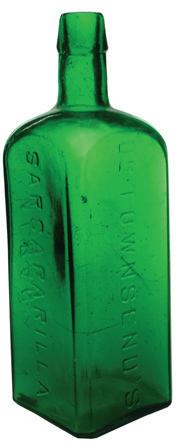
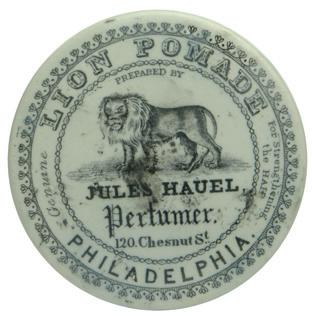
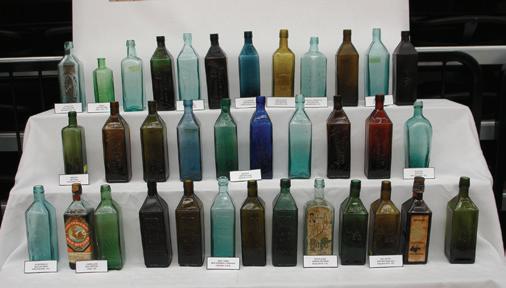

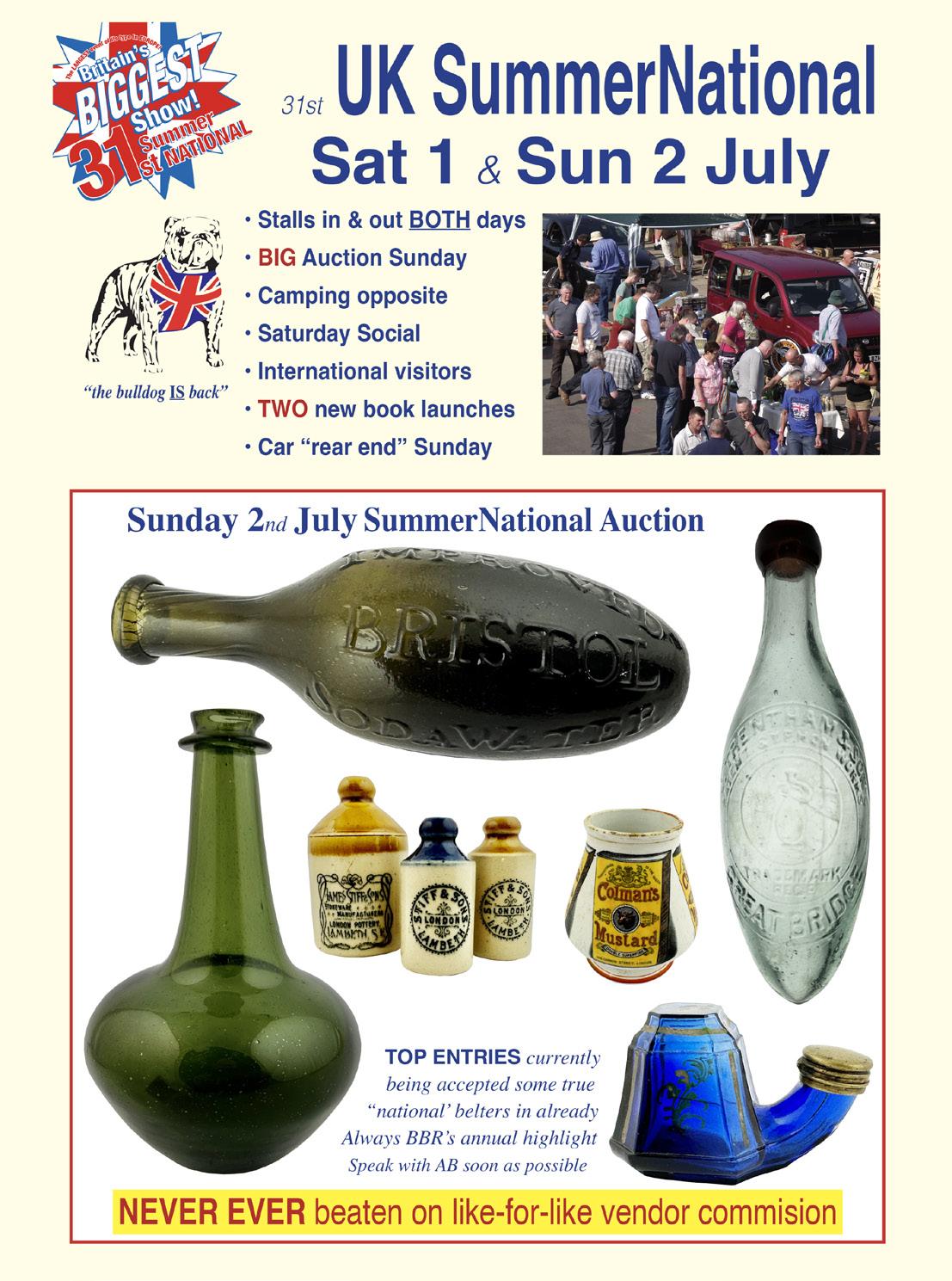

PayPal: abcr@bigpond.com Email: travisdunn@bigpond.com

THE AUSTRALIAN BOTTLE & COLLECTABLES REVIEW


January-March, 2023
ABCR Auctions often offers items of U. S. interest, such as these upcoming items to the left. Also operated by Travis Dunn, this auction can be found at: www.abcrauctions.com
Auctions run every three months. Email: info@abcrauctions.com Free to register. Low commissions. Reliable condition assessments.
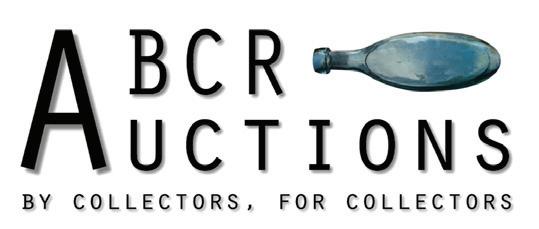

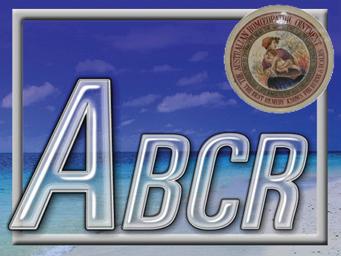
The Federation of Historical Bottle Collectors (FOHBC) is a non-profit organization supporting antique bottles and glass collecting. The goal of the FOHBC is to promote the collection, study, preservation and display of historical bottles and related artifacts and to share this information with other collectors and individuals.

Federation membership is open to any individual or club interested in the enjoyment and study of antique bottles. The FOHBC publication, Antique Bottle & Glass Collector, is well-known throughout the hobby world as the leading publication for those interested in antique bottle and glass collecting and all associated ephemera. The FOHBC Virtual Museum is the most comprehensive antique bottle and glass experience on the Internet. Your FOHBC Individual Membership benefits include:
A full year subscription to the all-color, bi-monthly (6 issues a year) 72-page plus covers publication, Antique Bottle & Glass Collector. Various membership options are available including Digital Membership.
Free advertising of “For Sale” items in Antique Bottle & Glass Collector (restrictions apply—ads may be up to 100 words, items must be of $25 or greater value, and free advertisements are limited to the first received. One free ad of 60 words each year for use for items such as For Sale and Wanted, trade offers, etc.
Access to FOHBC.org, a comprehensive website dedicated to the organization and hobby. Access through the Members Portal to the Membership Directory, archived FOHBC past issues, indexed articles and a vast assortment of research material.
Access to the FOHBC Virtual Museum of Historical Bottles & Glass. FOHBC members are museum members.
Access to the online FOHBC Auction Price Report. Look for the cost and description of anything auctioned by the top antique bottle and glass auction houses in the past decade. Easy to use and navigate. Updated annually.
The opportunity to obtain discounts to be used on “Early Admission” or table rental at the annual FOHBC National Shows and Conventions

FOHBC digital newsletter and so much more.
We encourage Affiliated Bottle Club memberships by offering these additional benefits to your group:
Club Display advertising in Antique Bottle & Glass Collector at discount of 50%.
Insertion of your bottle club show ad on the Federation website to increase your show’s exposure. Links to your club website free of charge. Social Media (Facebook) exposure.

Free Federation ribbon for Most Educational display at your show.
Participation in the Federation-sponsored insurance program for your club show and any other club-sponsored activities.
We need your support! Our continued existence is dependent upon your participation as well as expanding our membership. If you haven’t yet joined our organization, please do so and begin reaping the benefits. If you are already a member, please encourage your friends and fellow collectors to JOIN US!!
For more information, questions, or to join the FOHBC, please contact: Elizabeth Meyer, FOHBC Business Manager, FMG Design, Inc., P.O. Box 1825, Brookshire, Texas 77423, phone: 713.504.0628 or email: fohbcmembers@gmail.com or visit our home page at FOHBC.org
Where there’s a will there’s a way to leave Donations to the FOHBC
Did you know the FOHBC is a 501(c)(3) charitable organization?
How does that affect you? It allows tax deductions for any and all donations to the FOHBC. You might also consider a bequest in your will to the FOHBC. This could be a certain amount of money or part or all of your bottle collection. The appraised value of your collection would be able to be deducted from your taxes. (This is not legal advice, please consult an attorney.) The same-type wording could be used for bequeathing your collection or part of it; however, before donating your collection (or part of it), you would need the collection appraised by a professional appraiser with knowledge of bottles and their market values. This is the amount that would be tax deductible. Thank you for considering the FOHBC in your donation plans.
For Membership, complete the following application or sign up at FOHBC.org
(Please Print)
Name
Address City __________ State___________________
Zip ___________ Country _________________
Telephone
Email Address
Collecting Interests ________________________
Additional Comments _______________________
Do you wish to be listed in the online membership directory?(name, address, phone number, email address and what you collect) { } Yes { } No
Would you be interested in serving as an officer? { } Yes { } No
Would you be interested in contributing your bottle knowledge by writing articles for our magazine? { } Yes { } No
Would you be interested in volunteering to help on any FOHBC projects? { } Yes { } No
Membership/Subscription rates for one year (6 issues) (Circle One) (All First Class sent in a protected mailer) United States -
Antique Bottle & Glass Collector Free Ads

Category: “WANTED”
Maximum - 60 words
Limit - One free ad per current membership year. OR
Category: “FOR SALE”
Maximum - 100 words
Limit - 1 ad per issue. (Use extra paper if necessary.)
Digital Membership (electronic files only) $25
Canada – First Class $60 Other countries – First Class $80
- Life Membership: Level 1: $1,000, includes all benefits of a Standard 1st Class membership. No promise of a printed magazine for life.
- Level 2: $500, includes all benefits of a regular membership but you will not receive a printed magazine, but rather a digital subscription.
Add an Associate Membership* to any of the above at $5 for each Associate for each year.
Associate Member Name(s)
*Associate Membership is available to members of the immediate family of any adult holding an Individual Membership. Children age 21 or older must have their own individual membership. Associate Members enjoy all of the rights and privileges of an Individual Membership.
Signature Date
Please make checks or money orders payable to FOHBC and mail to:
FOHBC Membership, Elizabeth Meyer, P.O. Box 1825, Brookshire, Texas 77423, Phone: 713.504.0628 Email: fohbcmembers@gmail.com
Affiliated Club Membership for only $75 with liability insurance for all club-sponsored events, 50% discount on advertising in Antique Bottle & Glass Collector, plus so much more, Contact: FOHBC Business Manager: Elizabeth Meyer, PO Box 1825, Brookshire, Texas 77423, 713.504.0628, fohbcmembers@ gmail.com
Clearly Print or Type Your Ad
Send to: FOHBC Business Manager: Elizabeth Meyer, P.O. Box 1825, Brookshire, Texas 77423; phone: 713.504.0628; or better yet, email Elizabeth at: fohbcmembers@gmail.com
Magazine Submission Requirements:
We welcome the submission of articles and related pictures pertaining to antique bottle and early glass collecting, our hobby, digging, diving, and finding, as well as other interesting stories.
SUBMISSION POLICY—Articles:
All Antique Bottle & Glass Collector articles or material needs to be submitted via an FTP site, email or hard copy. Electronic text files should be in Microsoft Word. Electronic photo files should be in JPEG, TIFF or EPS format.
Resolution of 300 dpi at actual publication size is preferred but as low as 150 dpi (at double publication size) is acceptable.
SUBMISSION POLICY—Classified ads:
All ad copy should be typewritten, clearly & legibly printed, or sent via e-mail.
The FOHBC will not be responsible for errors in an ad due to poor quality, illegible copy.
The FOHBC reserves the right to refuse any advertising.
Please send articles/images to fmeyer@fmgdesign.com or mail to business manager noted on bottom of previous column.
$1000 June 2021 Glass Works Auctions
Lot 141: June 2021 · Glass Works Auctions “ST / DRAKE’S / 1860 / PLANTATION / X / BITTERS - PATENTED / 1862”, (Ring/Ham, D-108), New York, ca. 1862 - 1875, black olive amber color 6-log cabin, 10”h, smooth base, applied tapered collar mouth. Perfect condition, extremely bold impression, no wear or scratches. A very rare color and as dark as any we’ve sold! Also four heavy ‘beads’ are embossed on the base, something we have not seen in any other Drake’s! Dan Catherino Collection.
$2,400 November 2020 American Glass Gallery #121
$180 May 2012 American Glass Gallery #8
“ST / DRAKE’S / 1860 / PLANTATION / X / BITTERS - PATENTED / 1862”, (Ring/Ham, D-105), New York, ca. 1862 - 1875, medium salmon pinkish puce 6-log cabin, 10”h, smooth base, applied tapered collar mouth. A 1/2” in diameter in-making chip extends from beneath the applied collar down into the neck. Pure puce color that looks great in any lightning.
$14,000 September 2020 Glass Works Auctions

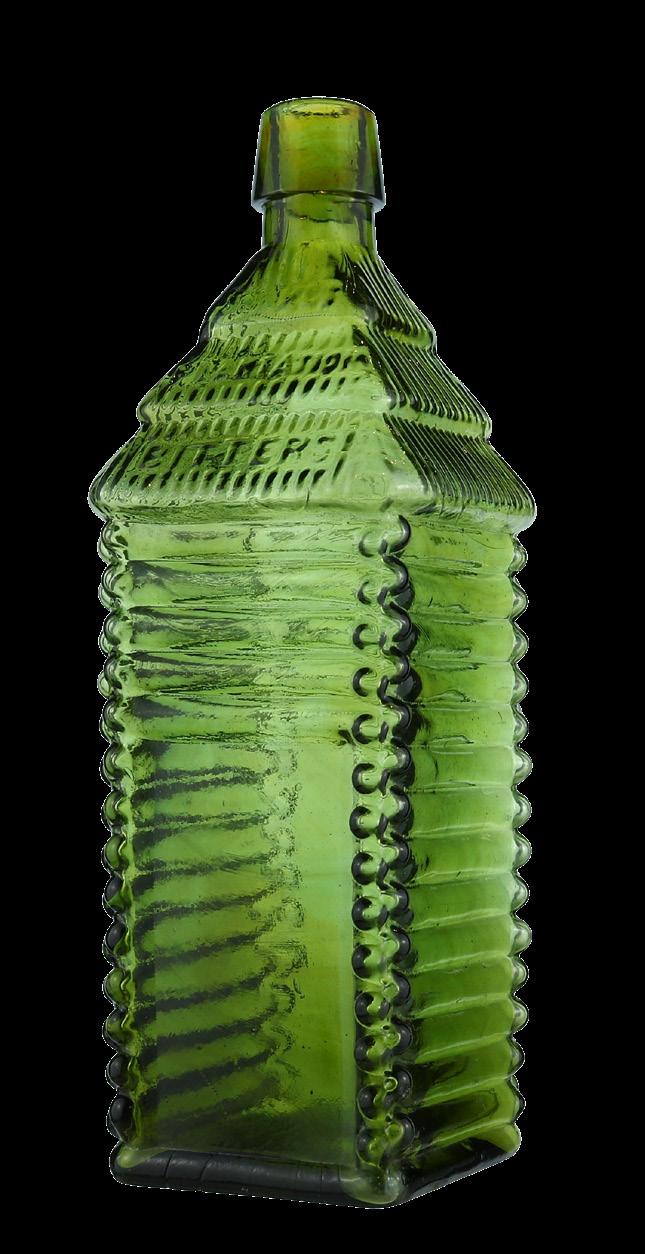
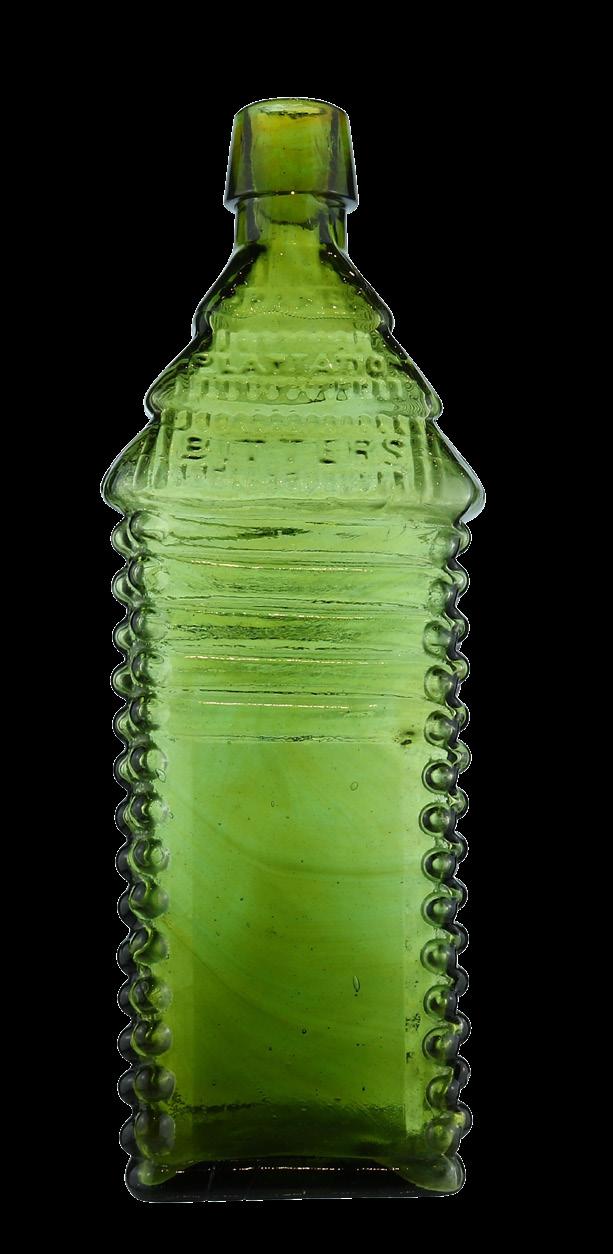
$15,690 September 2020 Glass Works Auctions #121 251: “General Washington” And Bust – “E Pluribus Unum / T.W.D.” And Eagle Portrait Flask, Kensington Glass Works, Philadelphia Pennsylvania, 1820-1830. “Firecracker” Medium amber with a strong olive tone, sheared mouth – pontil scar, pint; (light exterior high point wear). GI-14 Tremont Labeth collection.
Lot 185: ““S T / DRAKE’S / 1860 / PLANTATION / X / BITTERS - PATENTED / 1862”, 1862 - 1880. Medium-to-deep pinkish raspberry, cabin form with 6 logs above the label panel, applied sloping collar - smooth base, ht. 9 7/8”, near mint; (just the slightest trace of minor wear, and the embossing is a little weak in the upper shoulders as is not uncommon with this mold, otherwise perfect). R/H #D106. A gorgeous, rare, eye-appealing color that passes plenty of light, and having plenty of pink!
Lot 172: “ST / DRAKE’S / 1860 / PLANTATION / X / BITTERS - PATENTED / 1862”, (Ring/Ham, D-105), New York, ca. 1862 - 1875, medium moss green cabin, 9 7/8”h, smooth base, applied tapered collar mouth. Recently ‘picked’ at the ‘Elephant Trunk’ flea market in Connecticut (a favored venue of the ‘Flea Market Flip’ reality television show), and possibly only the second known example in this very unusual moss green color. In 1993 we auctioned the collection of Elmer Smith of Shelton, Washington. Lot 20 in that collection was at that time the only moss green Drake’s Plantation Bitters known to exist, it sold for $10,000!

Online Auction Price Report. Search on your smartphone, tablet or desktop computer. Includes 10 years of results from American Bottle Auctions, American Glass Gallery, Glass Works Auctions and Heckler in Phase 1. The Auction Price Report will only be available to FOHBC members. Joining the FOHBC will give the new member 24/7/365 access. What a great tool this will be for the collectors, diggers, pickers, researchers and the generally curious! Phase 2 will include images!

Visit the FOHBC.org Members Portal for instructions.

FOHBC Member. Please check your mailing address information and notify us of any corrections. FOHBC.org


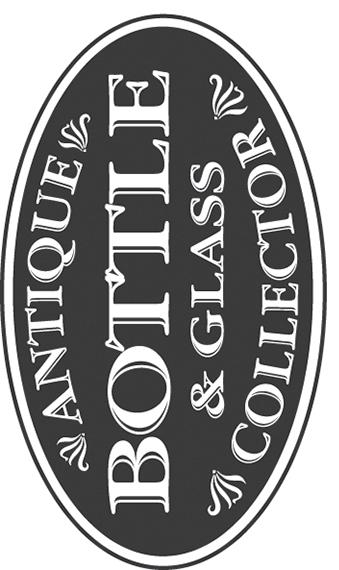
Don’t miss one issue of the new AB&GC. Keep your FOHBC membership up to date!
 FOHBC c/o Elizabeth Meyer, FOHBC Business Manager P.O. Box 1825 Brookshire, Texas 77423
FOHBC c/o Elizabeth Meyer, FOHBC Business Manager P.O. Box 1825 Brookshire, Texas 77423